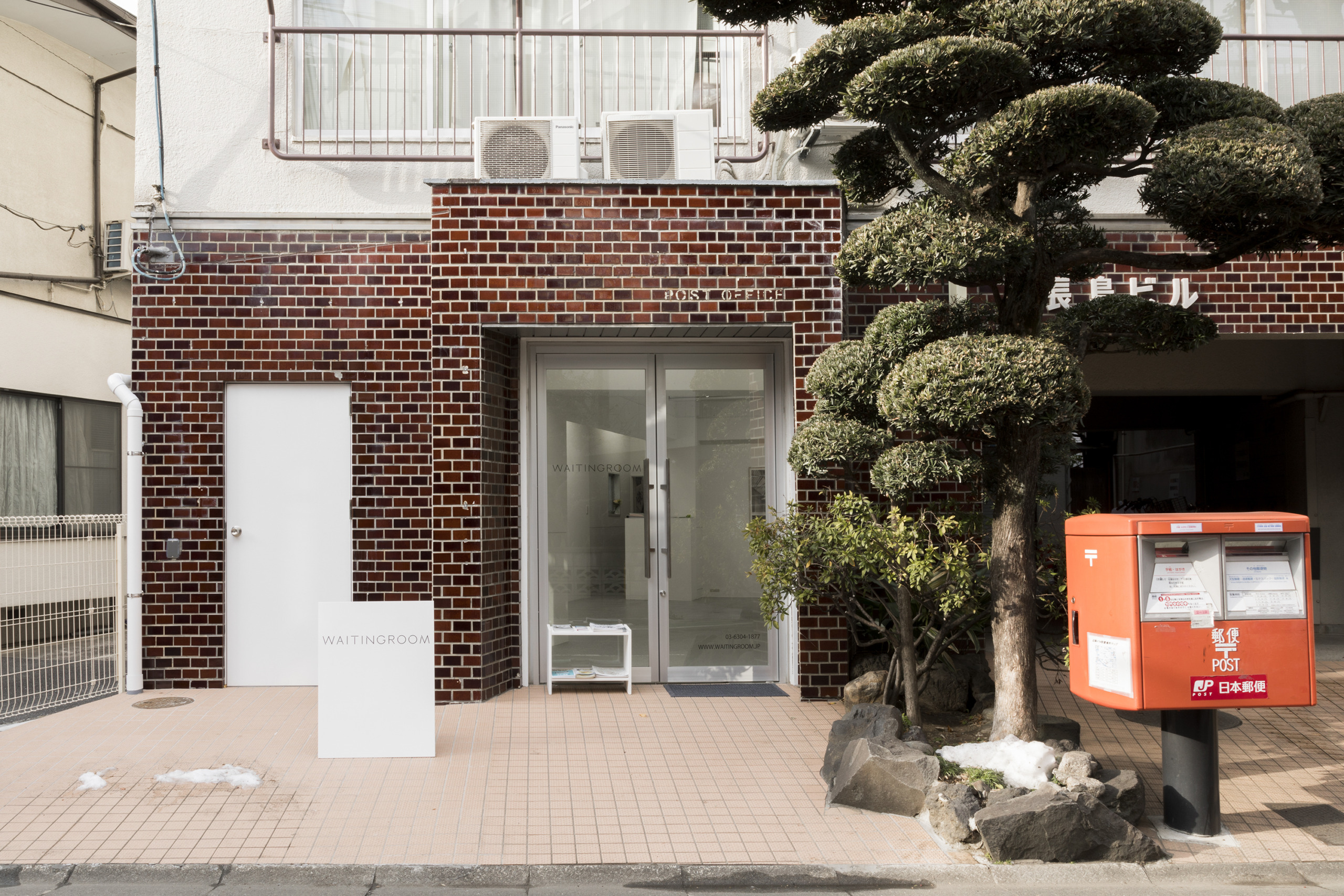
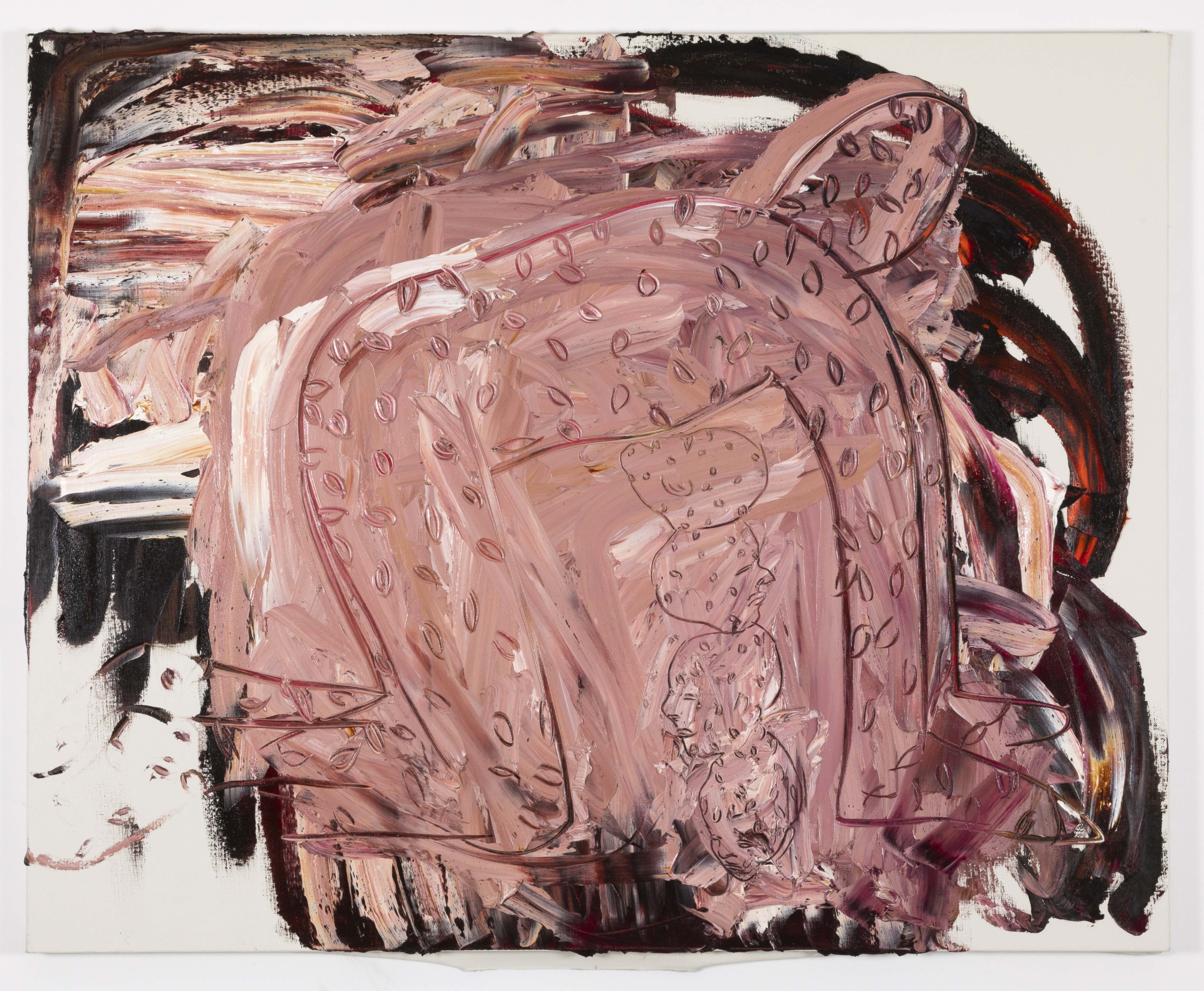
WAITINGROOM
- A-3
NOVEMBER 5–9, 2025

Maison Ruinart has believed in the power of art to transform, connect, and enlighten cultural experiences since its inception in 1729. For its Conversations with Nature program, Ruinart has invited Julian Charrière to share his artistic vision in a universal creative dialogue. This Art Week Tokyo, in addition to a bar and exhibition at the Okura Museum of Art, Maison Ruinart opens the doors of a Champagne & Art Space in Minami-Aoyama to showcase the Maison's know-how. Visitors will have the chance to enjoy emblematic cuvées and discover one of Ruinart's latest artistic collaborations through an immersive expereince and exhibition of Charrière’s works.
The exhibition is on view at Annex Aoyama November 5–9, 11am–8pm. (It closes at 6pm on November 9.)

Ruinart is the world’s oldest champagne house, renowned as the “jewel of champagne” since its founding in 1729. With its expertise in the craft of champagne making, Ruinart has established its position as the “Chardonnay House” through its advanced techniques. Ruinart has a longstanding relationship with the world of art. The maison regularly commissions the artists of its time to share their visions of its legacy.
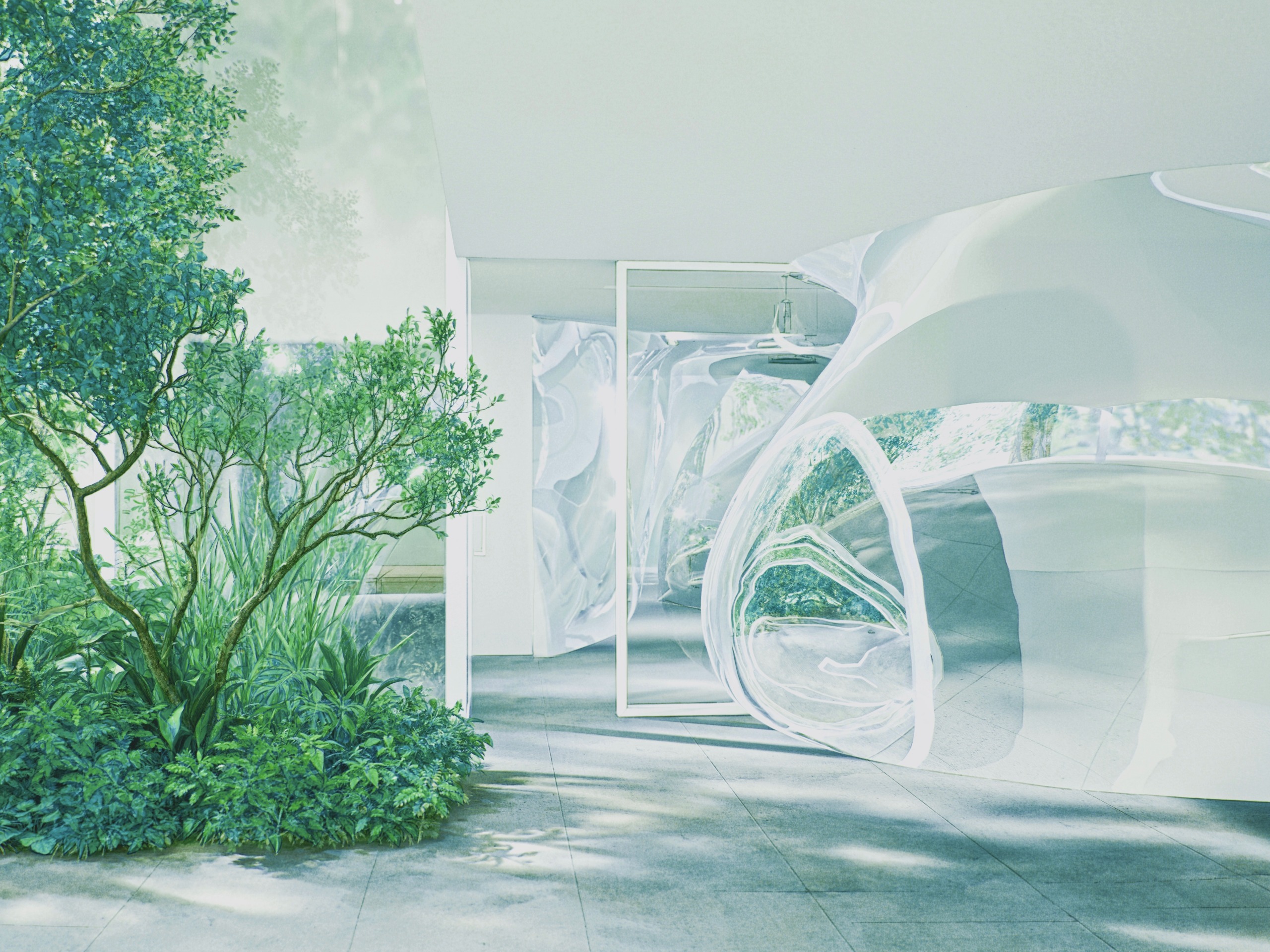
The pop-up AWT Bar provides the city’s art community with a convivial gathering place and multisensory art experience during the four days of Art Week Tokyo. The platform entails three commissions: an emerging architect designs the bar space, a rising chef produces new edible creations, and selected artists conceive cocktails that reflect their artistic practices. It also hosts sound and performance events, deepening Art Week Tokyo’s ties with other creative scenes.
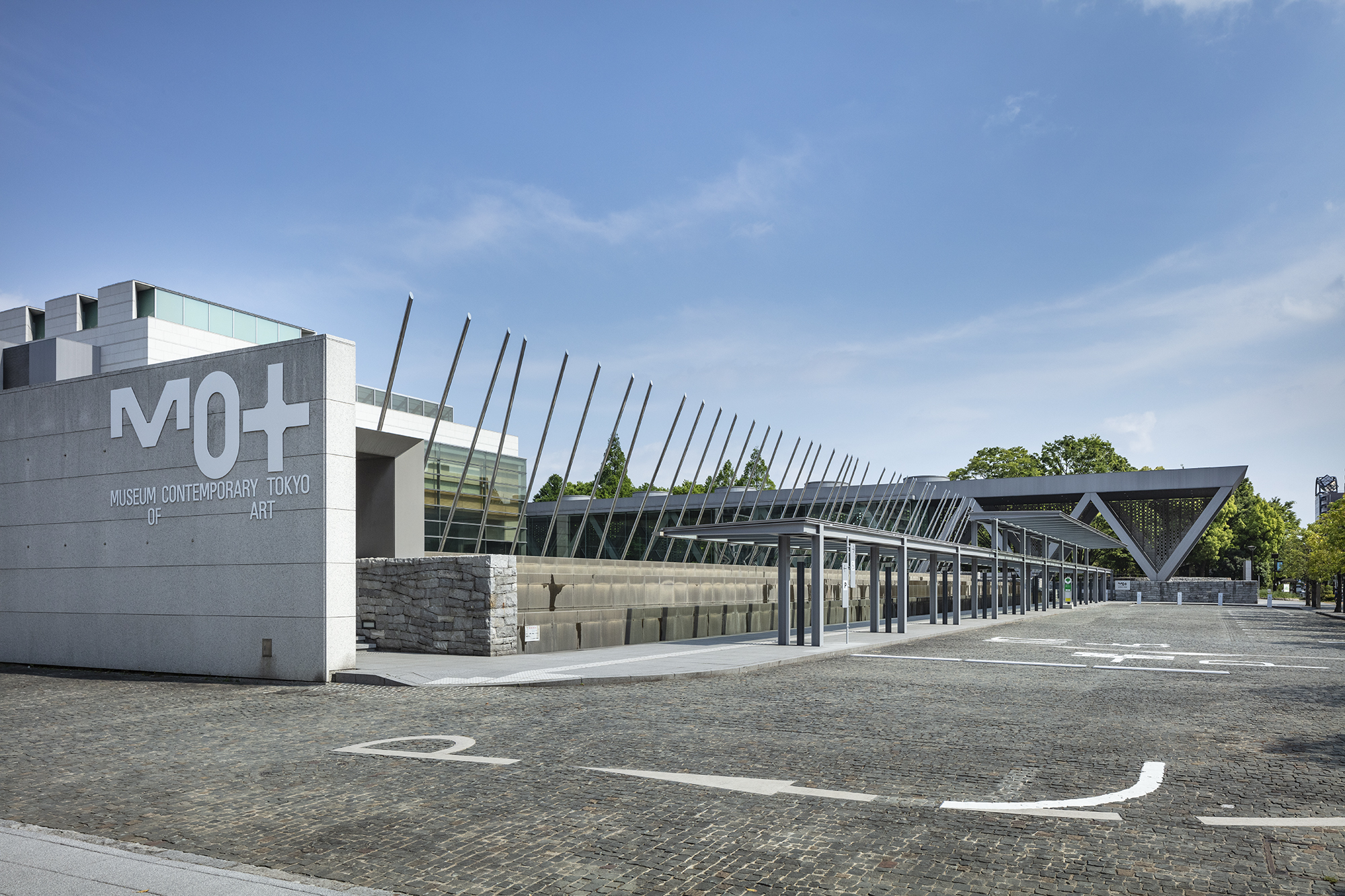
New to Art Week Tokyo this year, the Directors Conversation gathers global museum leaders for an public chat about everything from administration to programming and outreach. Doryun Chong, the artistic director and chief curator of M+ in Hong Kong, leads the discussion, which is hosted by the Museum of Contemporary Art Tokyo.
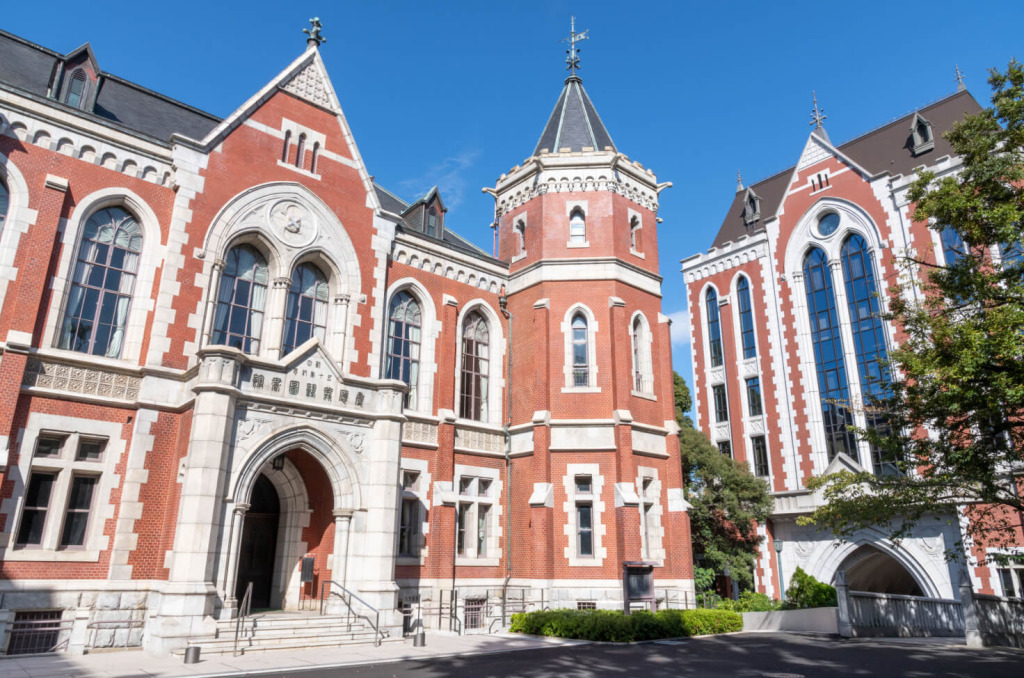
The AWT Talks Symposium invites leading thinkers from diverse backgrounds to discuss critical approaches to art and its place in contemporary society before a broad audience. What can art do? Why does it matter? And how does it translate across cultures and contexts?
Held at the West School Building Hall at Keio University’s Mita Campus, this year’s symposium explores the theme “What’s Going On (Ai no Yukue): How Art Makes Sense,” with a keynote address by Naomi Beckwith, the deputy director and chief curator of the Guggenheim Museum in New York and artistic director of the upcoming documenta 16 in Kassel.
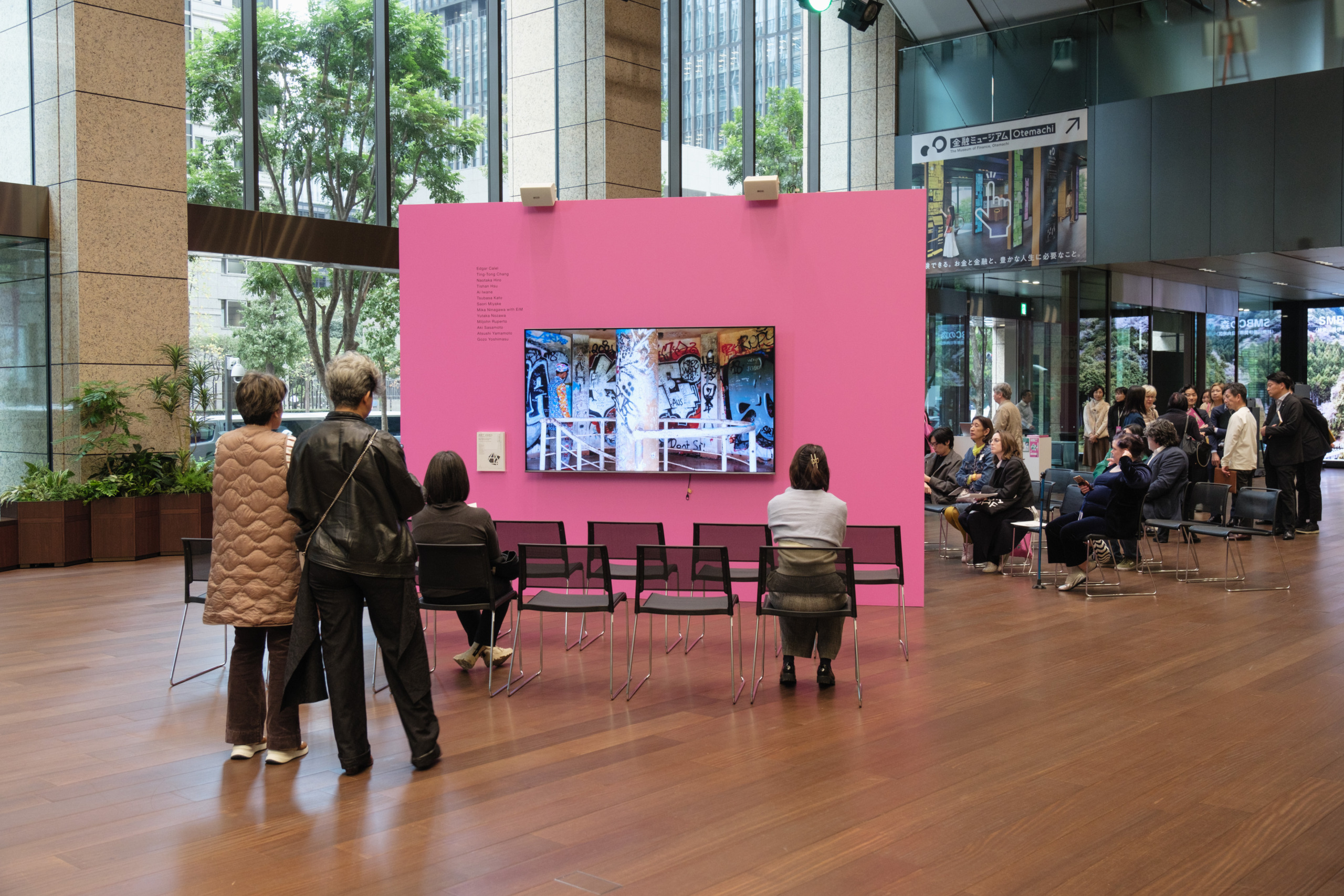
RITUALS, OR THE ABSURD BEAUTY OF PRAYERS
Curated by Keiko Okamura
Screened at a special pavilion in the lobby of SMBC East Tower in the Marunouchi district, AWT VIDEO presents a selection of single-channel moving image works by Japanese and international artists drawn from Art Week Tokyo’s participating galleries. Overseen by Keiko Okamura, a curator at the Museum of Contemporary Art Tokyo, this year’s program, “Rituals, or the Absurd Beauty of Prayers,” features 10 works by 10 artists and groups.
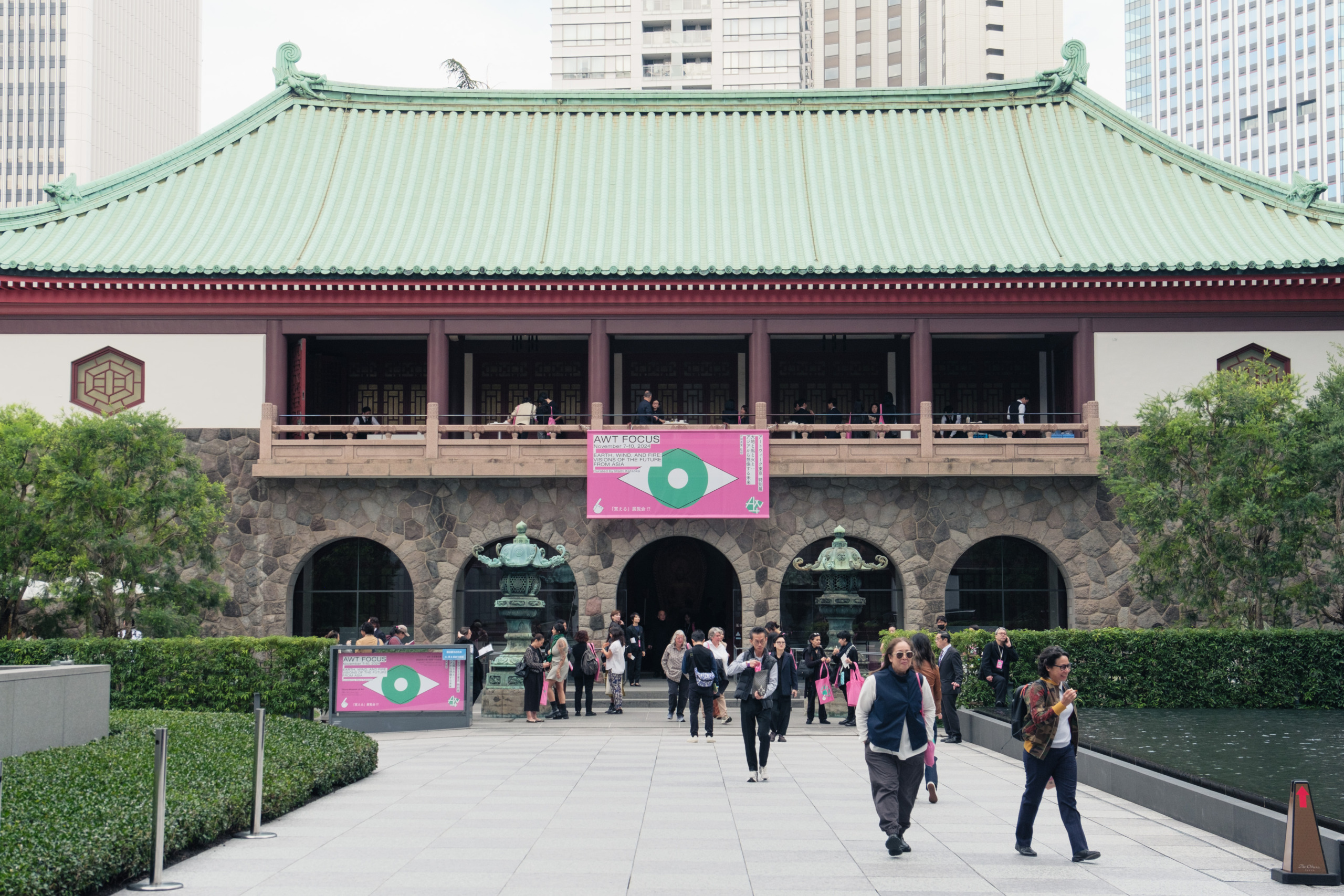
WHAT IS REAL?
Curated by Adam Szymczyk
AWT Focus is Art Week Tokyo’s centerpiece special platform. The exhibition invites a guest curator to experiment with new narratives of modern and contemporary art through works drawn from Art Week Tokyo’s participating galleries.
This year’s edition of AWT Focus is curated by Adam Szymczyk, a curator, author, and editor based in Zurich who was previously the artistic director of documenta 14 in Athens and Kassel from 2014 to 2017 and the director and chief curator of Kunsthalle Basel from 2003 to 2014. “What Is Real?” brings together some 100 works by more than 50 artists representing diverse generations and geographies. Featuring paintings, sculptures, photographs, videos, and more, the exhibition revisits the predigital imaging of the 20th and early 21st centuries to see how artists’ responses to the reality of human experience have shifted over time and to understand how we might collectively approach a coming epoch in which powerful new technologies have the capacity to reshape our perceptions of what is real and what is not.
AWT Focus is hosted by the Okura Museum of Art, which was founded in 1917 as Japan’s first private art museum. Szymczyk will incorporate the historic building into the display through an exhibition design conceived in collaboration with architect Hiroyuki Kimura.

“XYZ collective x 4649” is organized as a collaboration between two alternative spaces. XYZ collective is an artist-run gallery founded by Cobra and Futoshi Miyagi. It organizes exhibitions and other events for emerging artists spanning the fields of art, music, fashion, and more. Establish by Shogo Shimizu, Yuhei Kobayashi, and Yuu Takamizawa, 4649 is a curatorial project that aims to foster exchange between the contemporary art scenes in Tokyo and other cities. This collaborative exhibition will feature works by Chan Cho Kiu Bunch, Yuhei Kobayashi, Emi Mizukami, Fumiaki Nagao, and Toru Otani.

XYZ collective / The Steak House Dos Koi is an artist-run gallery that was established in 2011 and moved to its current location in Tokyo’s Sugamo district in 2016. The gallery organizes exhibitions both in Japan and abroad. It has participated in NADA Miami since 2013 and has also participated in fairs such as Paris Internationale and June in Basel. Recent shows include solo exhibitions by Yuka Hasegawa (2021) and Maki Katayama (2021) and the group exhibition “Veit Laurent Kurz Curation” (2021).

Rikako Kawauchi has developed a unique artistic language that delves into both body and mind through a material expression of lines. In this exhibition, she will use the gallery’s architecture to give viewers a physical experience of her worldview as they move deeper into the space. In the main exhibition area, paintings and neon works will visualize Kawauchi’s thoughts and sensory energy. In the middle space, a composition that bridges painting and drawing will explore the fluid nature of her creative process. And at the far end of the gallery, drawings that represent the source of Kawauchi’s artistic language will reveal the primal power that can be found in the line. The motif of the tiger, an animal often associated with fire in various mythologies, serves as an entry point for unsettling the boundaries between instinct and rationality, self and other.

Waitingroom was founded in Tokyo in 2010 with a mission to promote and support cutting-edge contemporary art in various mediums. The gallery works with young and emerging artists who have distinct perspectives on the world and explore new and diverse modes of expression. The program focuses on the role of human beings in postindustrial society, encompassing topics ranging from social engagement to our relationship with nature, from cultural heritage to the dreams and fantasies that help us keep faith in the world. Reflecting the appeal of these themes, Waitingroom’s artists frequently exhibit across Japan as well as in international galleries, museums, biennials, triennials, and other venues. Beyond exhibitions, Waitingroom supports artistic creation by organizing lectures and workshops that stimulate discourse. The gallery aims to inspire the world by building positive relationships between artists and audiences.
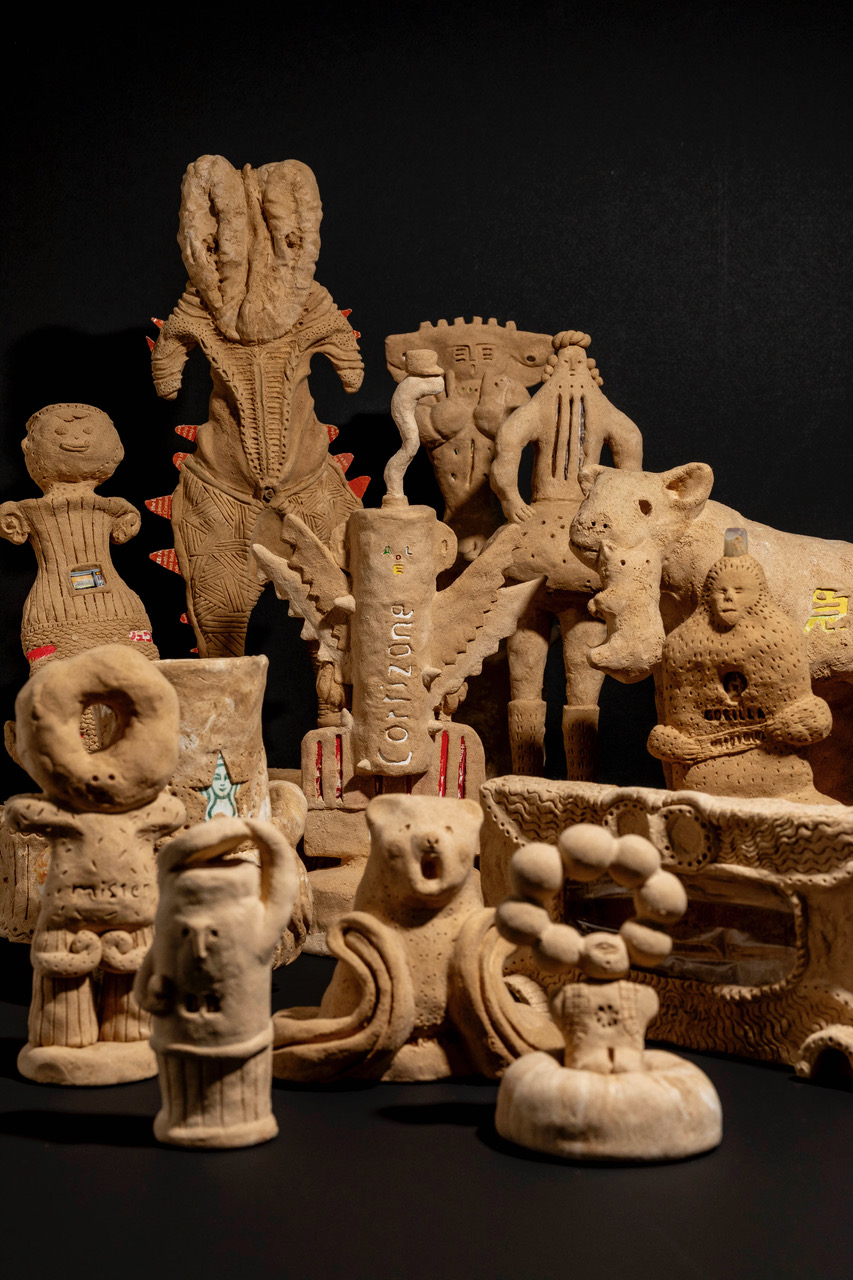
Born in 1983 in Okayama, Saya Irie studied art at Hiroshima City University in 2009 and is currently based in Hiroshima. Irie is known for her unique practice of converting two-dimensional images into three-dimensional forms. She starts by using an eraser to erase a pre-existing picture and then collects the residue and makes a sculptural figure out of it. For instance, in one work she erased an image of the goddess Guanyin from a scroll only to reconstitute the figure in three dimensions, hovering in space. In another, she turned a portrait on a banknote into a bust that she placed on top of the banknote. By taking icons that have attained “currency” through their ubiquity, erasing them, and then recreating them as three-dimensional figures that occupy the same space as the viewer, Irie’s works pose wry questions about how we interact with representations in contemporary life.
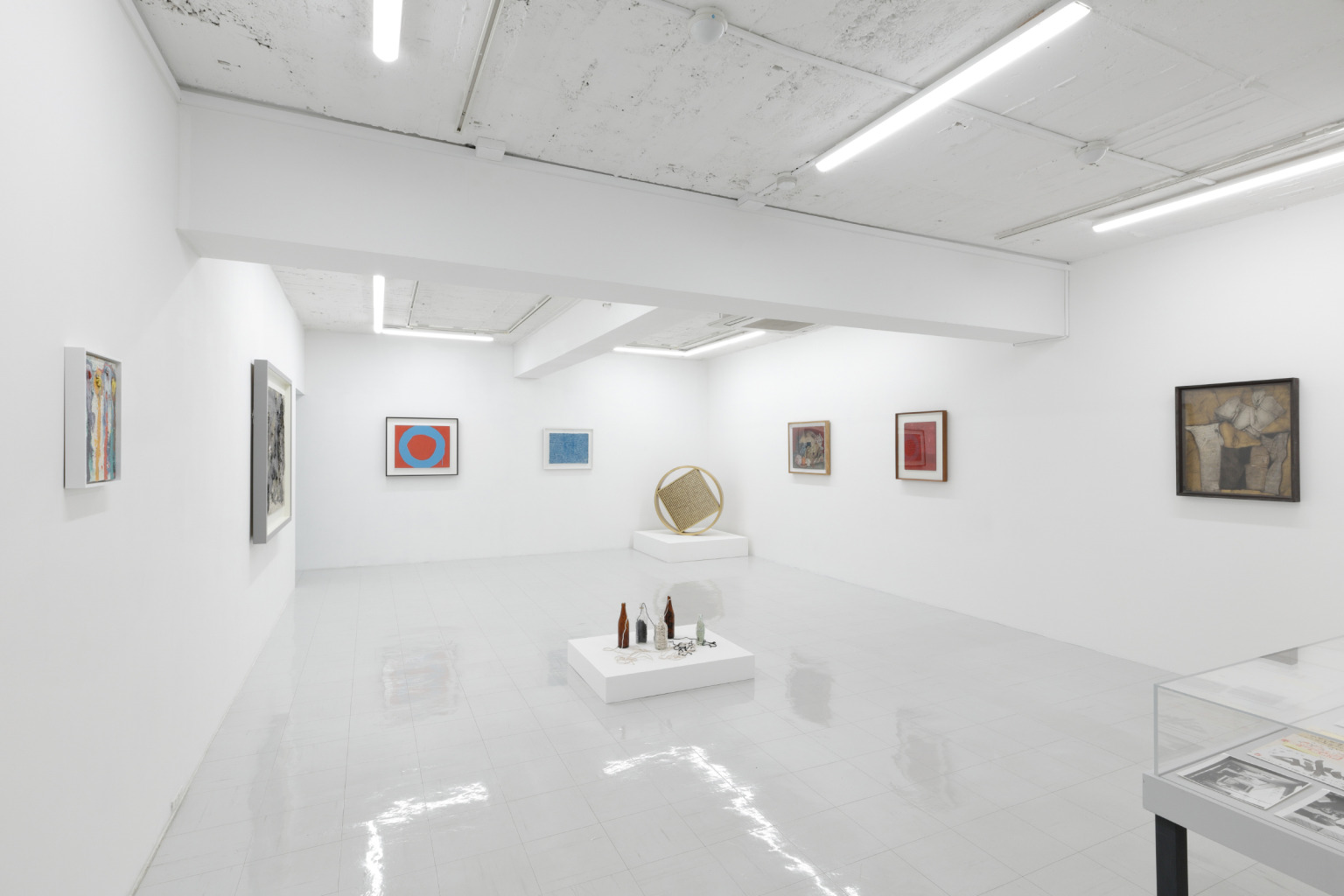
Tokyo Gallery was founded in 1950 as the first contemporary art gallery in Tokyo. In 2002 the gallery opened a new space, Beijing Tokyo Art Projects, in Beijing’s 798 Art District, and it now operates as Tokyo Gallery + BTAP. Over the course of its history the gallery has introduced Western avant-garde artists such as Lucio Fontana, Friedensreich Hundertwasser, Yves Klein, and Jackson Pollock to Japan. It has also supported experimental projects by some of Japan’s most important artists, including Taro Okamoto, Kazuo Shiraga, and Jiro Takamatsu as well as key figures associated with Mono-ha like Lee Ufan and Kishio Suga. In the 1970s the gallery began working with Korean artists, such as Kim Whanki and Park Seo-Bo, and in the late 1980s it started exhibiting then-unknown Chinese artists, including Cai Guo-Qiang and Xu Bing. Carrying this spirit forward, Tokyo Gallery + BTAP continues the mission of discovering and promoting both established and rising artists while regularly participating in international art fairs and working closely with museums and biennale exhibitions.
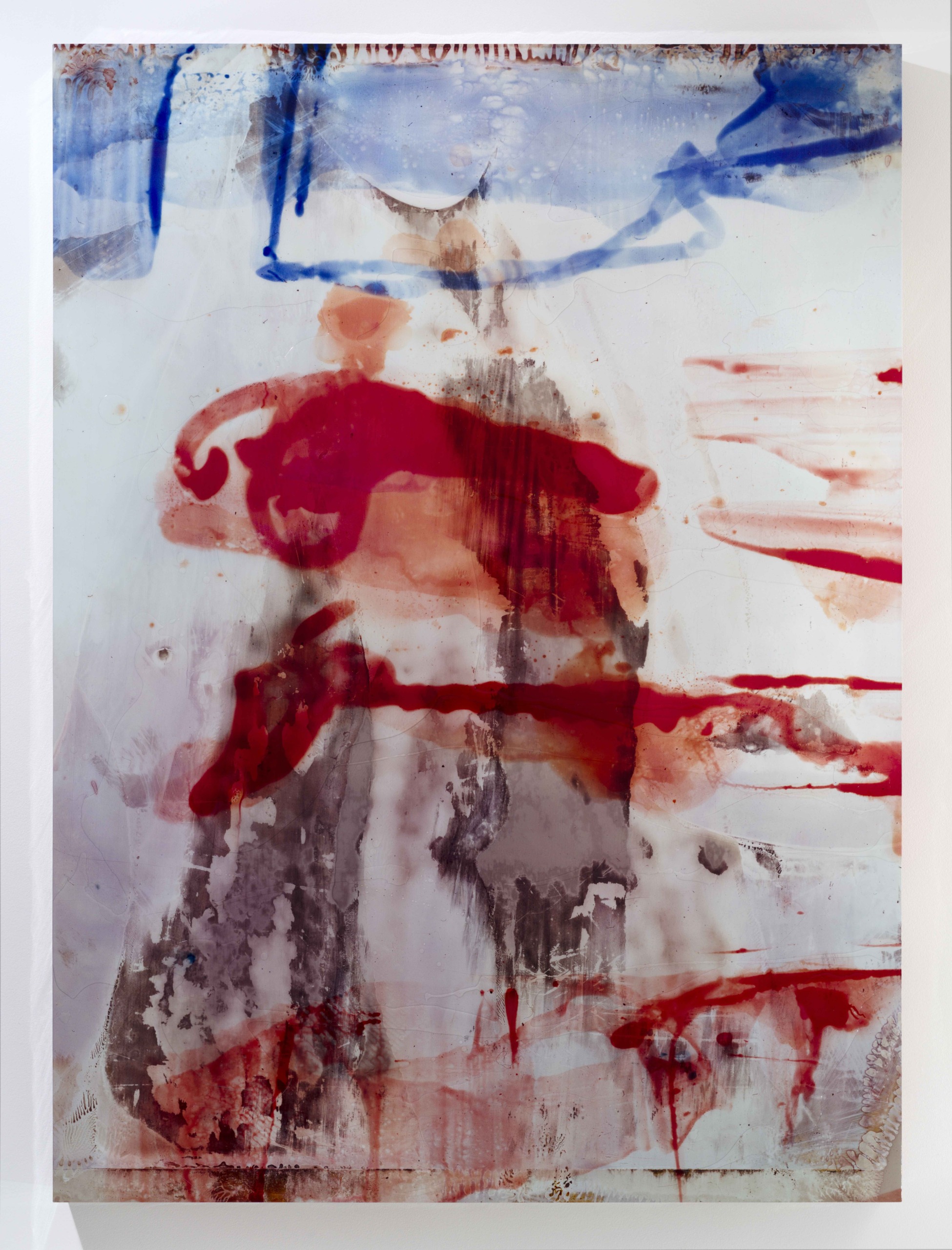
Driven by a deep engagement with the economies of images, information, and consumption that inform contemporary life, Shinro Ohtake’s protean artistic output ranges from collages and paintings to kinetic sculptures, multimedia environments, and light and sound installations. This exhibition focuses on his ongoing Retina (1988–) works made in collaboration with chance processes, including photographic chemical reactions and the effects of time. Encased in a resin coating that transforms the reflectiveness and materiality of the underlying photo-based compositions, these large-scale abstractions are enigmatic studies of the mechanisms of perception. They will be complemented by historic collages and Polaroid prints related to the series, as well as one of Ohtake’s signature Scrapbooks (1977–).
Ohtake’s work is also on view in a solo exhibition at the Marugame Genichiro-Inokuma Museum of Contemporary Art through November 24.
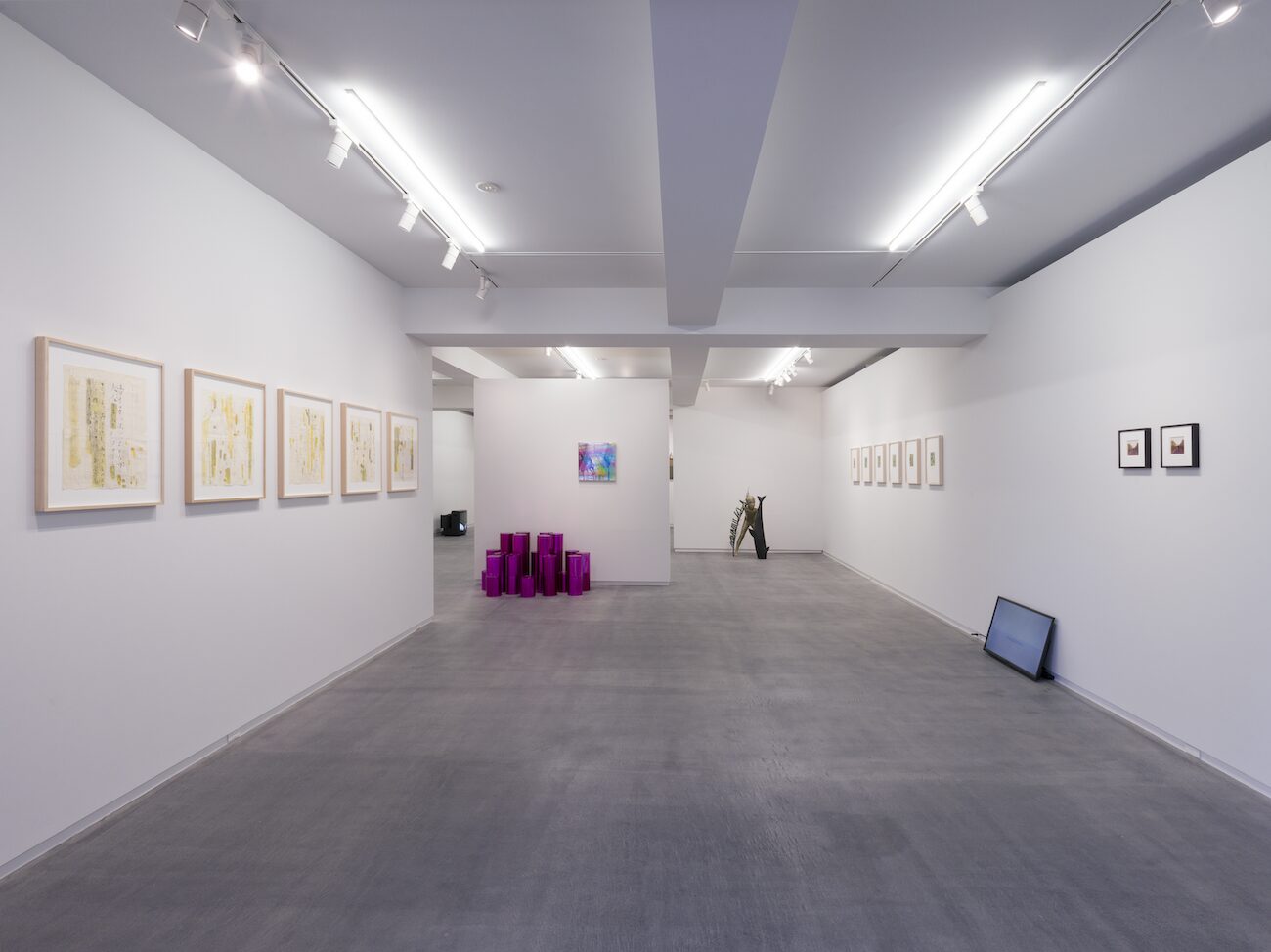
Established in 2008, Take Ninagawa is dedicated to promoting emerging and historically established Japanese artists in a cross-generational, international framework. Represented artists build upon precedents in Japanese postwar experimental art in developing their own approaches to address contemporary concerns. International artists in the gallery’s program are invited to respond to the specific context for contemporary art and culture in Japan while giving expression to the broader perspectives they bring with them. Each exhibition at the gallery is conceived on a project basis, with artists encouraged to develop ideas across a series of exhibitions. Driven by a mission to produce new values that can challenge entrenched power structures in art and society, Take Ninagawa frequently collaborates on initiatives with other galleries in Japan, the Asia Pacific, and beyond. Represented artists include Ryoko Aoki, Thea Djordjadze, Kazuko Miyamoto, Shinro Ohtake, Aki Sasamoto, Danh Vo, Andro Wekua, Tsuruko Yamazaki, and Gozo Yoshimasu.
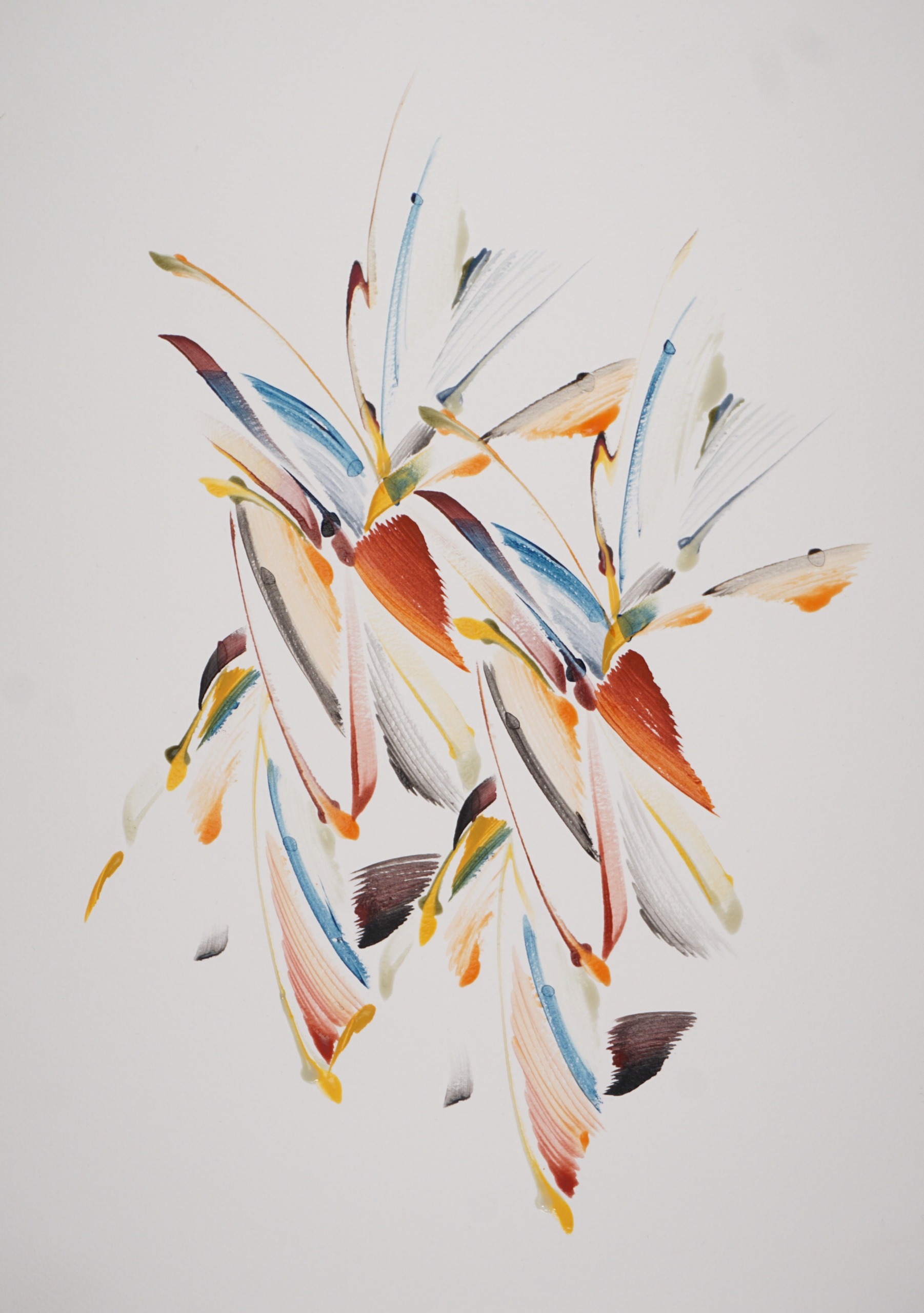
Takuro Someya Contemporary Art is pleased to present an exhibition curated by artist Goro Murayama. Organized in conjunction with Murayama’s publication of his lecture series “Theory: Art and Poiesis,” which he presented at the University of Tokyo in 2024–25, the exhibition is grounded in over 15 years of artistic practice and research. Murayama will explore the concept of poiesis through a constellation of related materials, works by other artists, such as Paul Klee and Atsuko Tanaka, and his own works. In particular, he will examine the “production-based knowledge” at the intersection of science, philosophy, and art, with a focus on drawing. Touching on themes ranging from ancient thought to contemporary technology, and from AI to human creativity, the exhibition will highlight the theoretical and practical possibilities of generative and productive acts. In reconsidering creation as a mode of self-formation and collaboration, Murayama’s research also poses fundamental questions about the nature of the self.
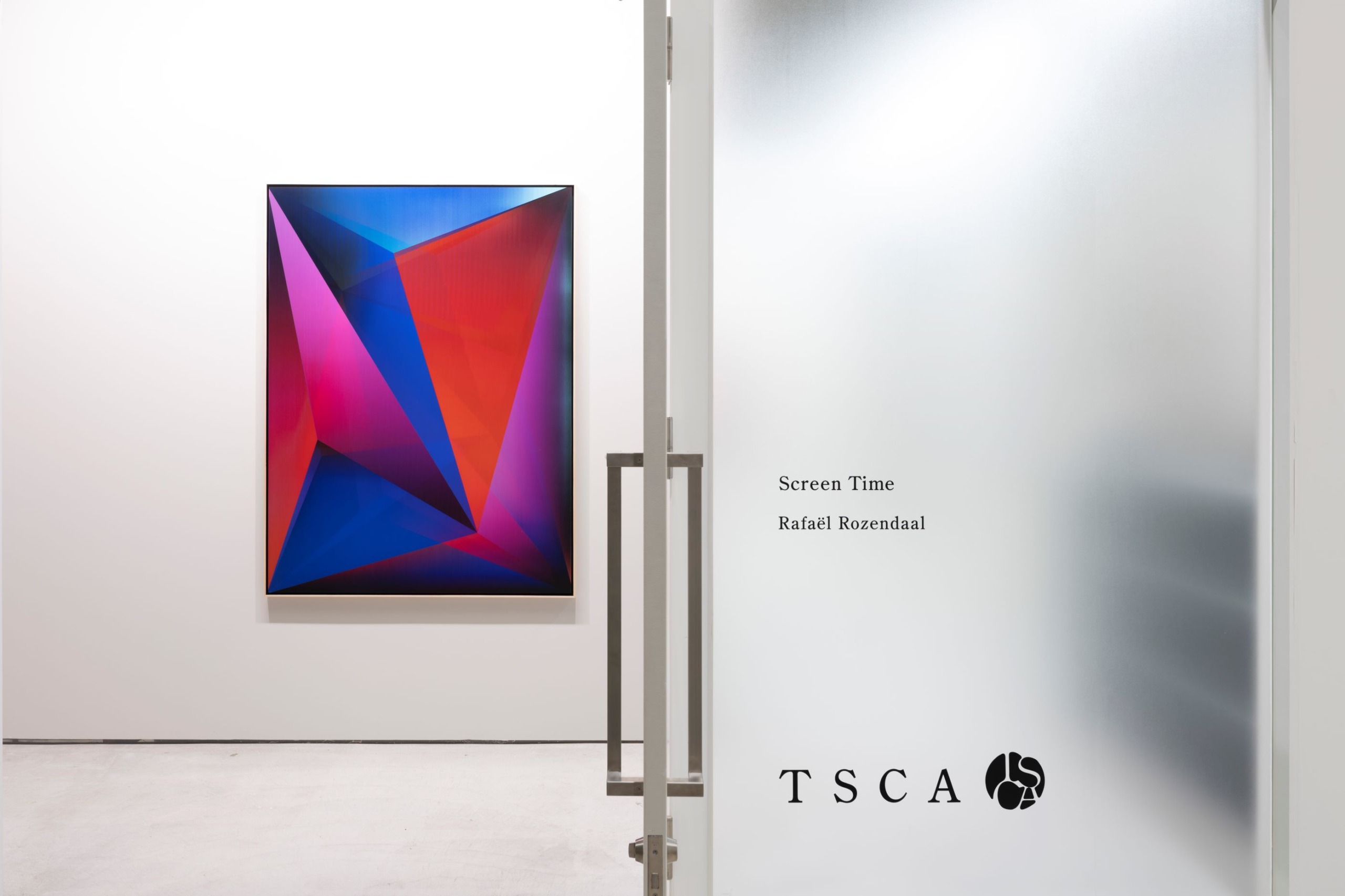
Takuro Someya Contemporary Art is an art gallery in Tokyo that exhibits research and work by Japanese and international contemporary artists across a variety of genres and mediums. TSCA participates in international art fairs including Art Basel Miami Beach, Art Stage Singapore, and more. TSCA has partnerships with 12 artists and groups, including Kenjiro Okazaki, Enrico Isamu Oyama, Rafaël Rozendaal, Ryoichi Kurokawa, Mai Yamashita + Naoto Kobayashi, and Mayumi Hosokura.
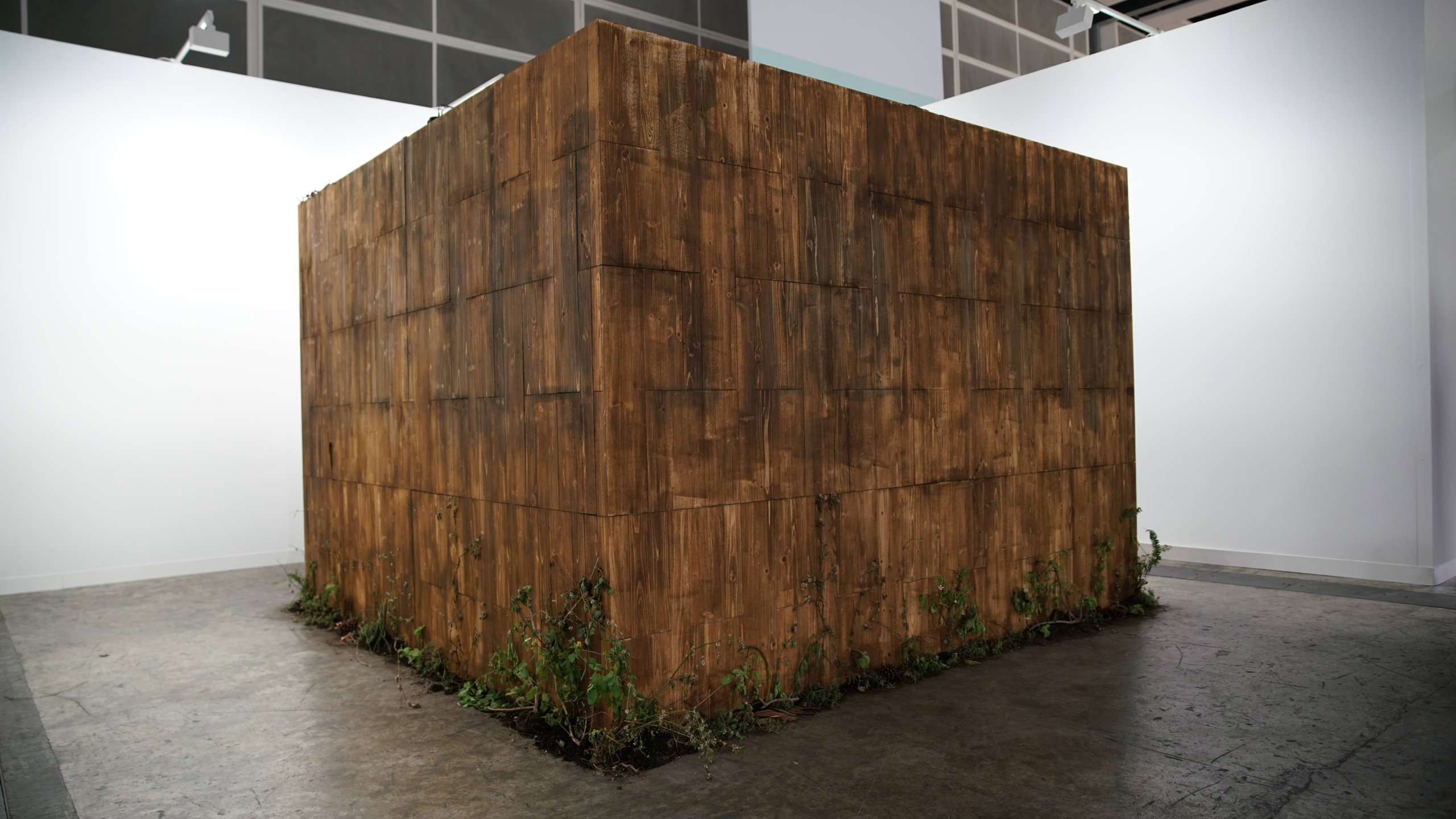
Standing Pine is pleased to present “Himmelstrasse,” a solo exhibition by Noritoshi Hirakawa. First presented at Art Basel Hong Kong in 2024, the titular large-scale installation will make its Japan debut in the gallery space in Tokyo. The central piece of the exhibition is a dark, wooden lodge containing photographs and a sound installation. The photographs were taken in the guardian forest of a Shinto shrine in Fukushima that was affected by radioactive contamination following the Fukushima nuclear accident of 2011. The soundscape features the soft ringing of dorei, the traditional clay bells used in Shinto rituals, mixed with the faint voices of children living in Fukushima today. Upon entering the lodge through a small doorway, viewers are immersed in a meditative world that invites reflection on the present and future of Fukushima and the lives of the children growing up there.
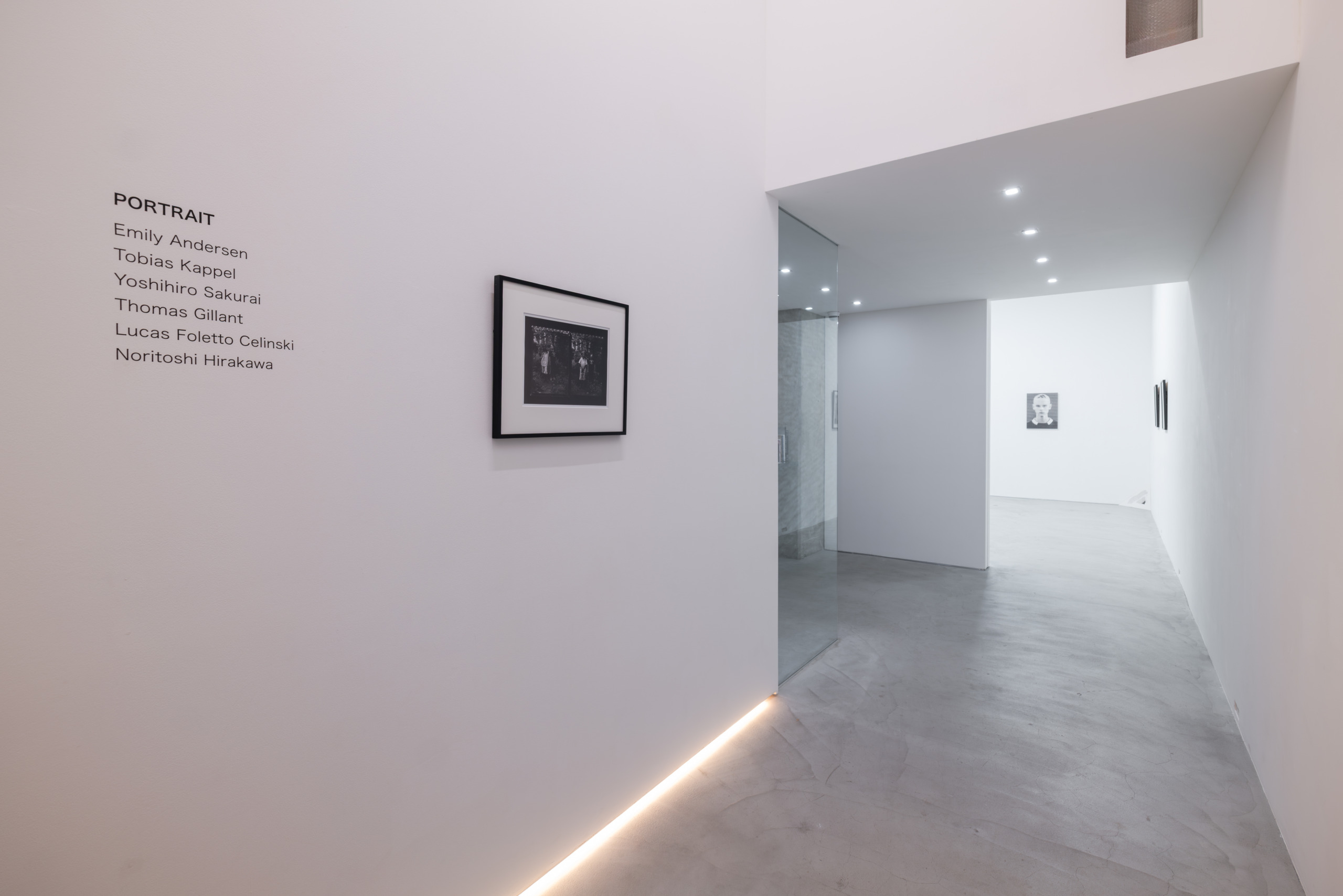
Standing Pine was established in Nagoya in 2009 and opened a second space in Tokyo in 2023. The gallery program is grounded in both contemporary relevance and art historical context. It features Japanese and international artists who work in a wide range of media, including painting, sculpture, video, photography, kinetic art, and textiles. In recent years the gallery has broadened its curatorial scope by engaging with contemporary art from the Global South and developing projects with artists whose practices remain underrepresented in Japan. Standing Pine regularly participates in international art fairs and collaborative initiatives, further demonstrating its commitment to showing diverse art practices in a global context and creating new platforms for dialogue.
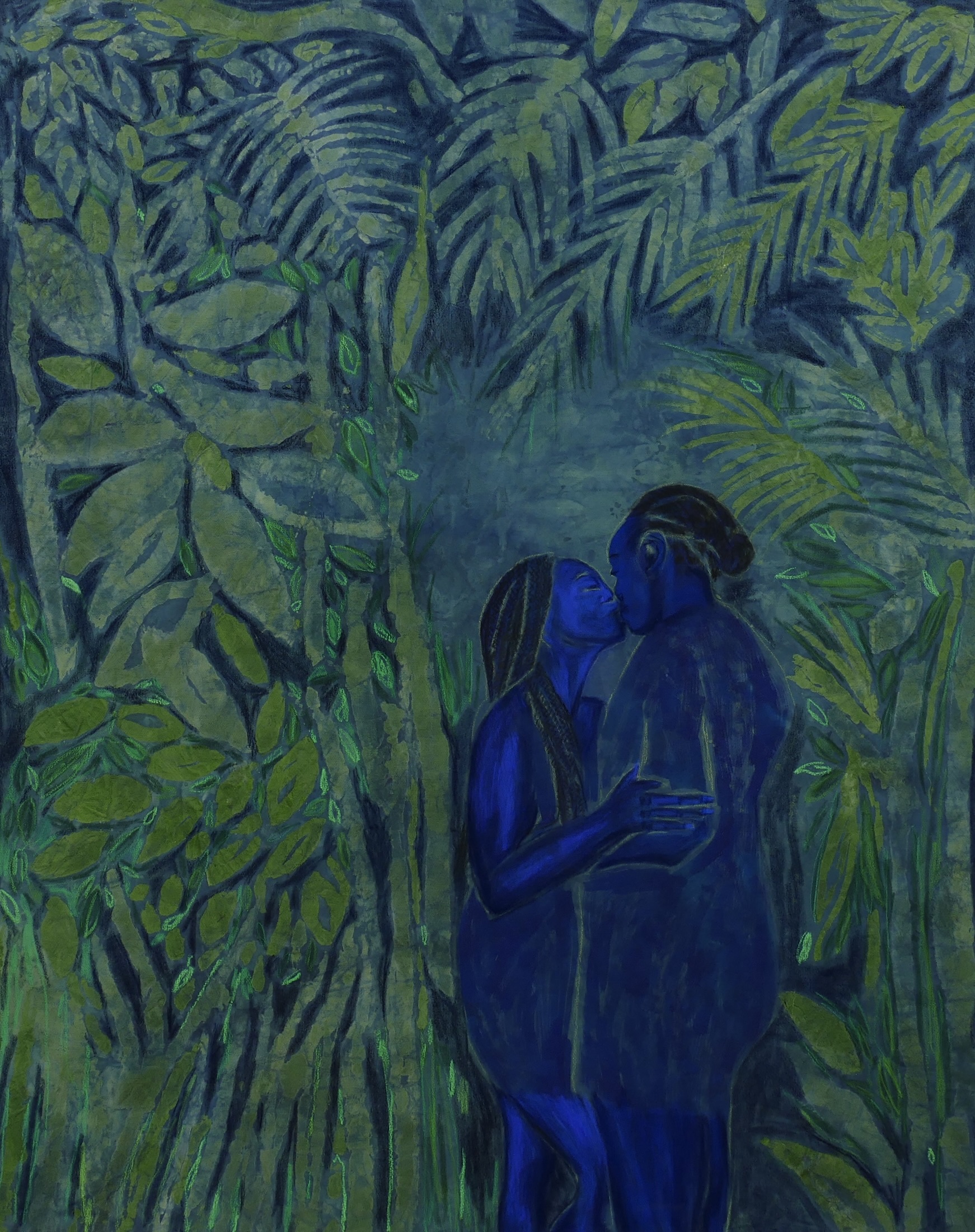
Curated by Ekow Eshun for space Un, “The Clearing” explores themes of kinship, connection, and collective memory in paintings by contemporary artists from the African diaspora. Inspired by a scene in Toni Morrison’s novel Beloved (1987) in which Black townsfolk gather in a forest clearing to love and care for one another beyond the gaze of a hostile world, the exhibition considers communal gathering as an act of resistance, restoration, and creation. Rather than centering spectacle or resistance alone, “The Clearing” invites viewers to witness Black subjectivity as expansive and sovereign, as capable of dreaming, becoming, and remaking the world. In this sanctuary of care and quiet power, the unseen becomes visible, and Black life is honored in its full emotional and spiritual complexity. Amiri Baraka once wrote “Let the world be a Black poem”—and in “The Clearing,” it is.
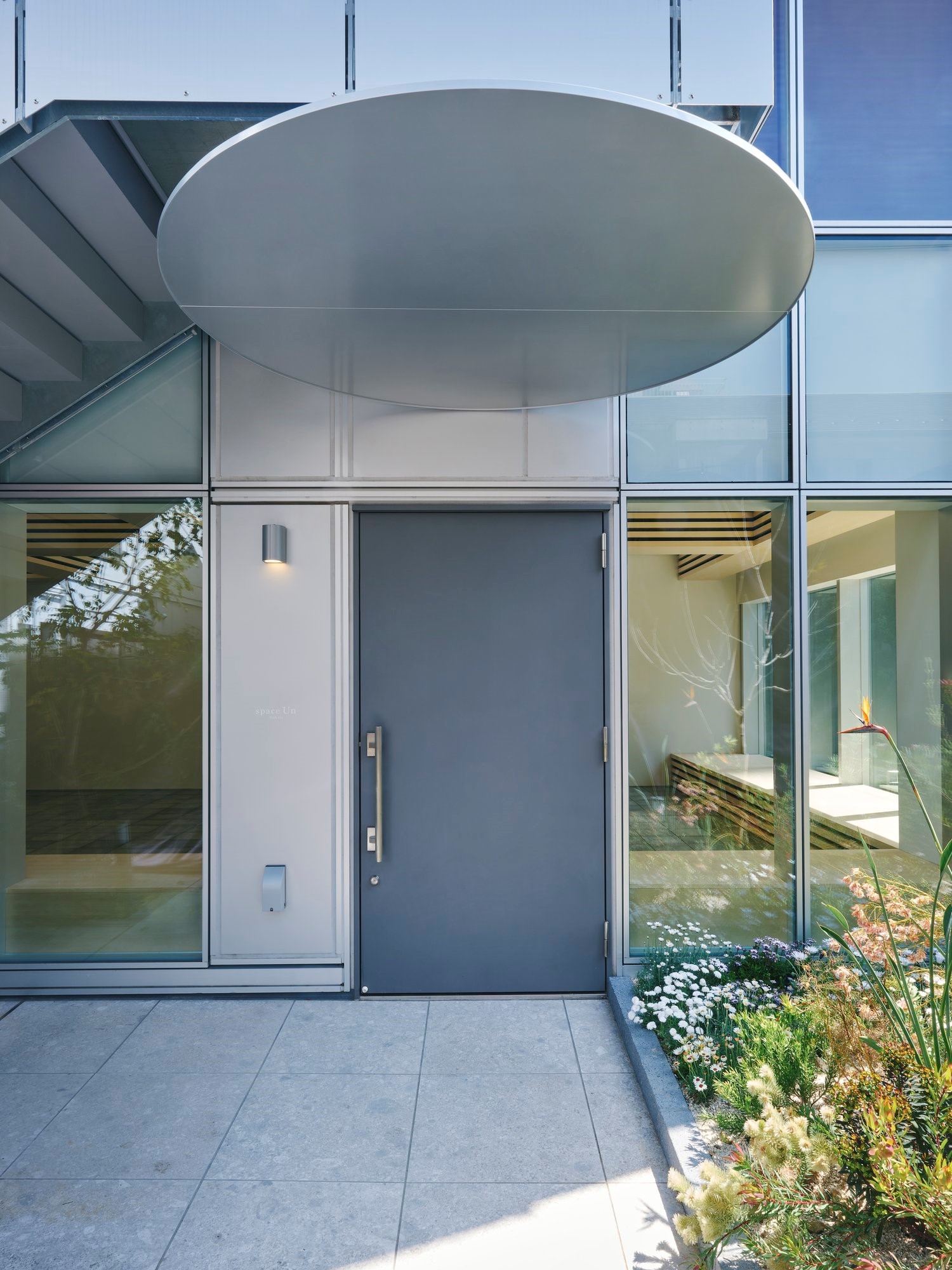
Established in 2024, space Un is a new platform for promoting contemporary African art in Japan and Asia. Reflecting founder Edna Dumas’s commitment to fostering cultural exchange between Japan, the countries of Africa, and the African diaspora, space Un’s exhibitions develop out of a residency program that invites artists to conduct research and produce works in Japan. The space supports further cultural dialogue by hosting interdisciplinary events, such as music performances and readings.
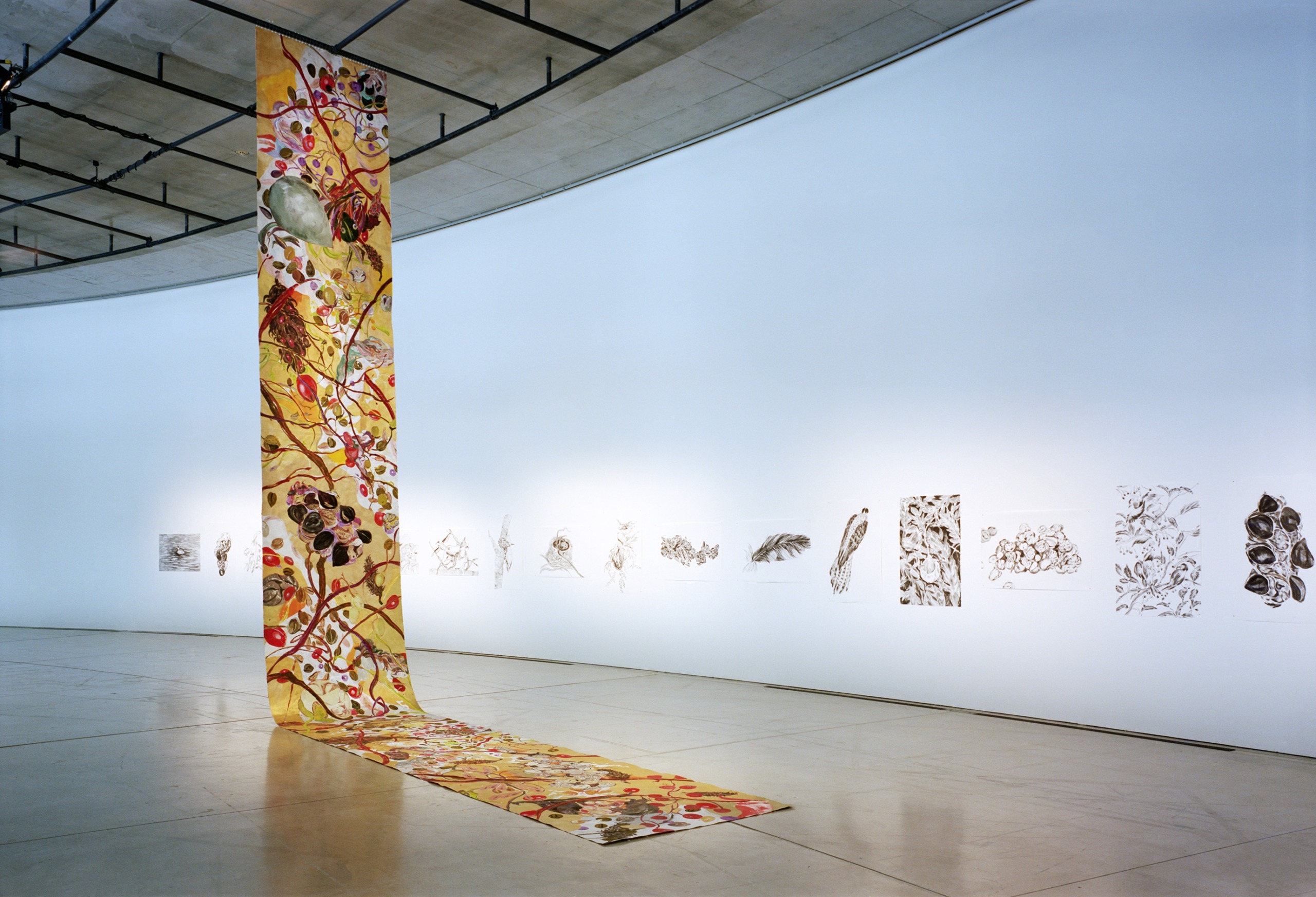
Yuriko Asano is an emerging young artist who travels to various places to learn about the local food culture and usage. She then converts her experiences and interactions with the people she encounters in each place into colorful paintings that function as records of local knowledge and customs. Her works often incorporate botanical motifs while also touching on issues such as life cycles and the symbiosis between humans and nature. Asano’s work is also on view in this year’s edition of the Aichi Triennale.
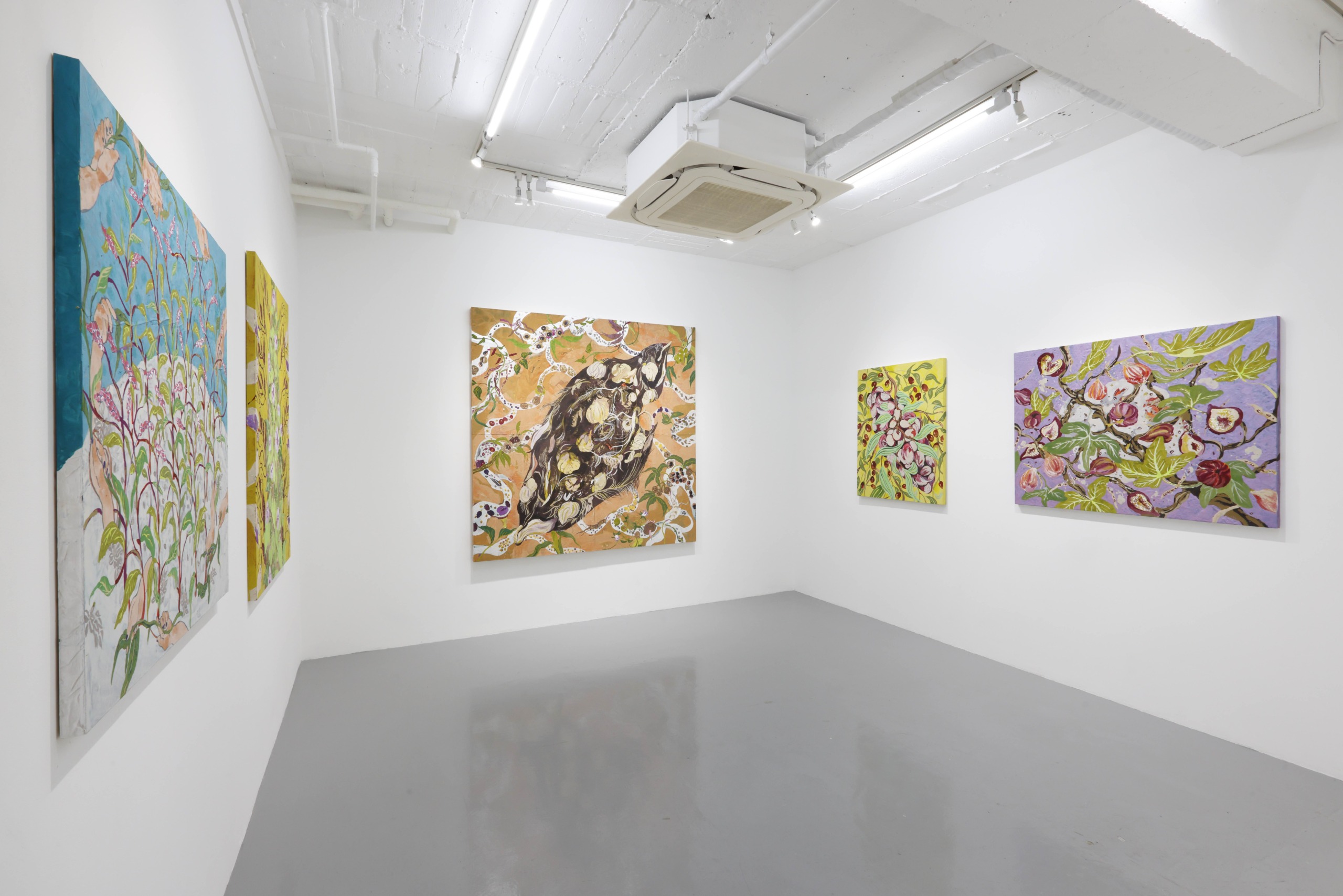
Snow Contemporary was founded in 2010 as an artist management office based between Tokyo and Singapore. It has occupied its current premises in Nishi-Azabu since 2016. The gallery exhibits cutting-edge work in genres ranging from street art to performance and Conceptual art. In order to increase the visibility of its artists, the gallery also organizes projects at a variety of other venues. Represented artists include Yosuke Amemiya, Yuriko Asano, Rintaro Fuse, Hitotzuki, Tatsuo Kawaguchi, Fuyuki Yamakawa, Shu Yonezawa, and David Stenbeck.
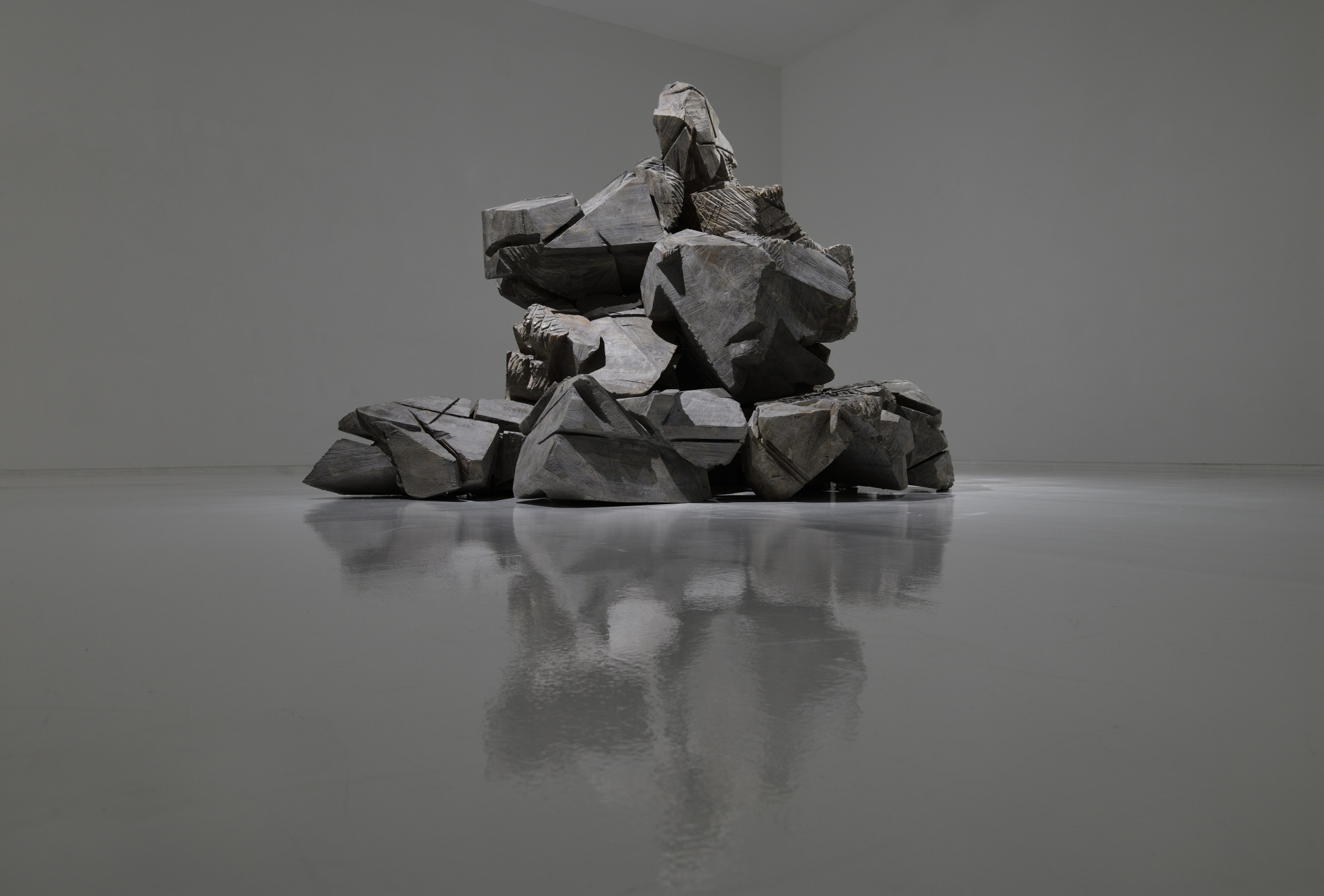
Shigeo Toya is one of Japan’s leading sculptors. Emerging after the deconstruction of the Minimalist and Mono-ha movements in the 1960s and ’70s, he has dedicated his career to reconstituting sculpture as a practice that is grounded in human existence. His work draws equally upon the achievements of both the Western canon, spanning from cave paintings to Greek sculpture and Alberto Giacometti, and the Japanese, spanning from Enku to the early 20th-century sculptor Heihachi Hashimoto. Toya’s examination of these different lineages led him to arrive at the unique sculptural philosophy that “sculpture is an accumulation of gazes.” His work has been shown extensively in major international exhibitions, including in the Japan Pavilion at the 43rd Venice Biennale of 1988, the 1st Asia Pacific Triennial of 1993, and the 3rd Gwangju Biennale of 2000, where he received the Asia Prize. He was recently the subject of a retrospective that toured from the Nagano Prefectural Art Museum to the Museum of Modern Art, Saitama, in 2022–23. This exhibition at ShugoArts is his first with the gallery in more than three years.
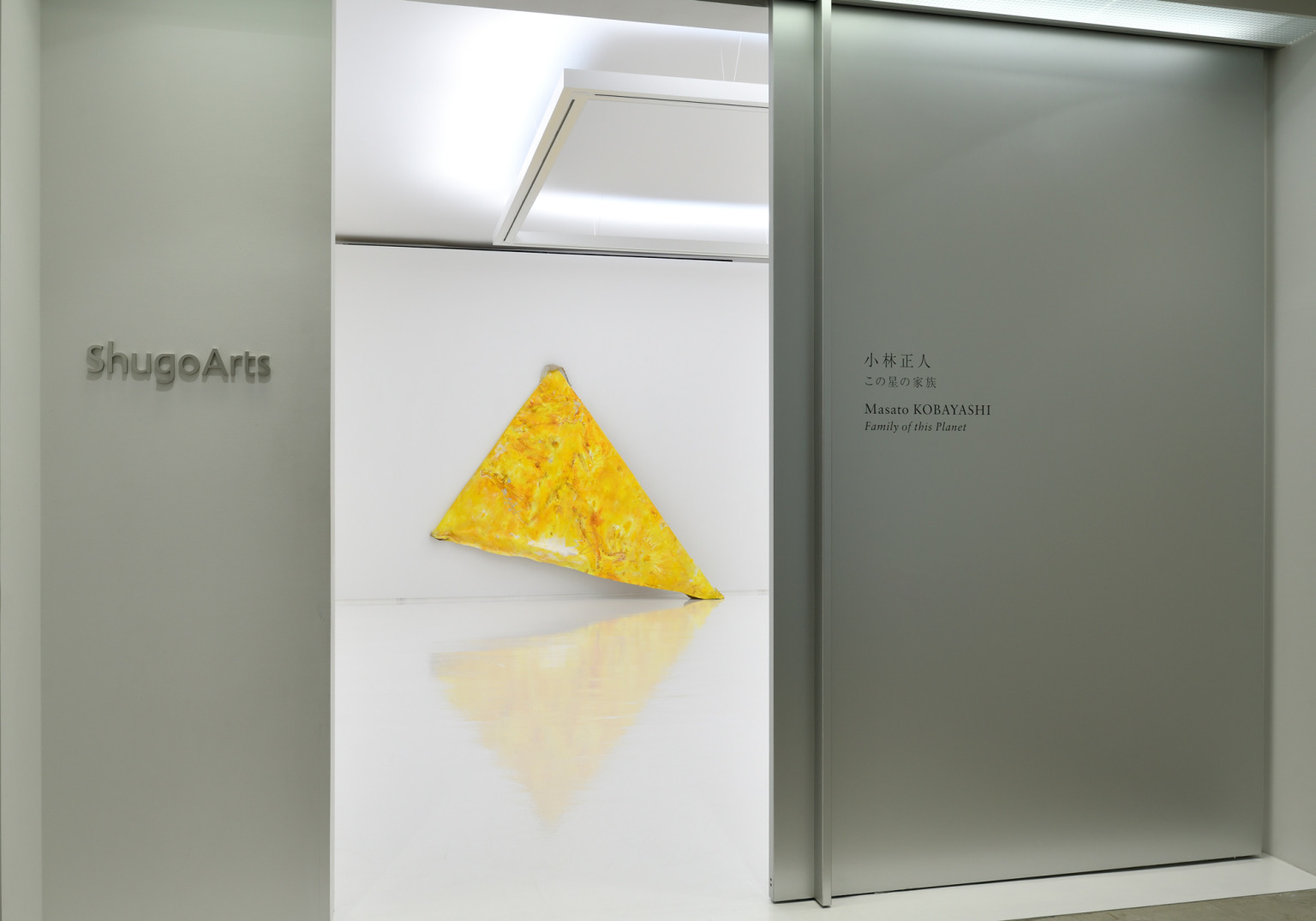
Shugo Satani worked at his father Kazuhiko’s Satani Gallery before starting ShugoArts in 2000. The gallery moved to Roppongi in 2016 and opened a viewing space in Tennozu Isle in 2021. ShugoArts aims to create new art historical values through its exhibition program, prioritizing above all the free expression of artists. The gallery collaborates with such artists as Masaya Chiba, Yukio Fujimoto, Leiko Ikemura, Masato Kobayashi, Aki Kondo, Lee Kit, Naofumi Maruyama, Rina Matsudaira, Anju Michele, Ritsue Mishima, Yasumasa Morimura, Yuji Ono, Clara Spilliaert, Yoriko Takabatake, Shigeo Toya, Atsushi Yamamoto, and Tomoko Yoneda.
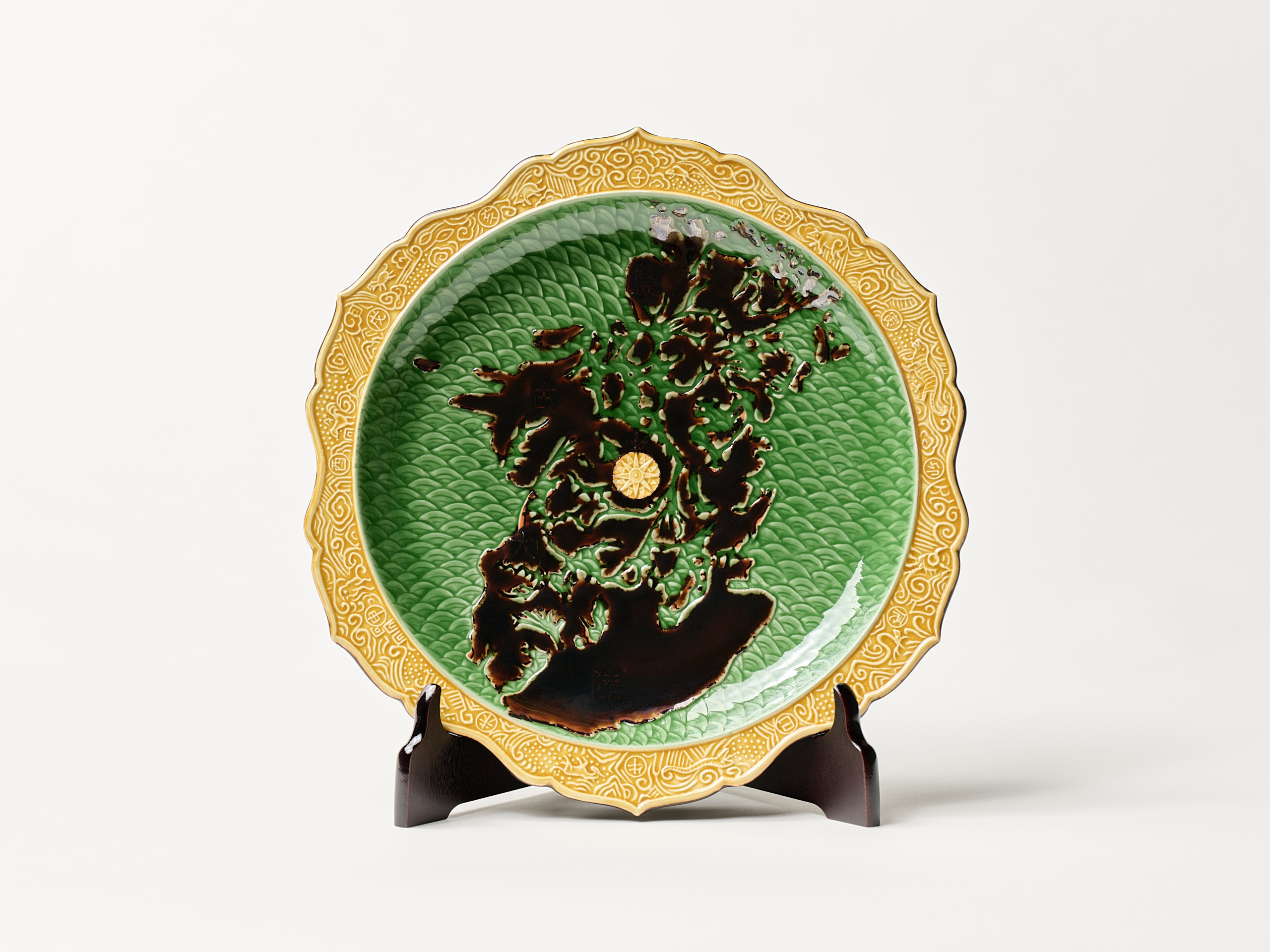
Misa Shin Gallery is pleased to present an exhibition by Tsuyoshi Ozawa. The exhibition seeks to reconsider today’s divided world through the idea of Pangaea, the ancient supercontinent in which all landmasses were once connected. In a project he carried out in Beppu last year, Ozawa invited citizens from diverse backgrounds to draw maps of the world purely from memory. Based on these maps, he created a painting that reconfigures the continents into a single landform. The painting will be on view alongside a work inspired by a plate in the collection of the Kagawa Museum that is decorated with a world map in Gennai-yaki, a type of tricolored ceramic ware produced under the guidance of Hiraga Gennai (1729–1779 or 1780) in the mid-Edo period. In Ozawa’s piece the continents are rearranged like puzzle pieces to form a new vision of Pangaea. Ozawa will also present new works that expand on this conceptual foundation. As the artist states, “It might be a bit forced, but I wondered if it was possible to visualize the idea of the world being one.” His works reflect an imaginative act of reconnecting divided geographies—a gesture that gives form to a quiet kind of tolerance, expressed through the shape of the continents themselves.
The gallery will hold a reception for the artist on Saturday, November 8, from 5pm to 7pm.
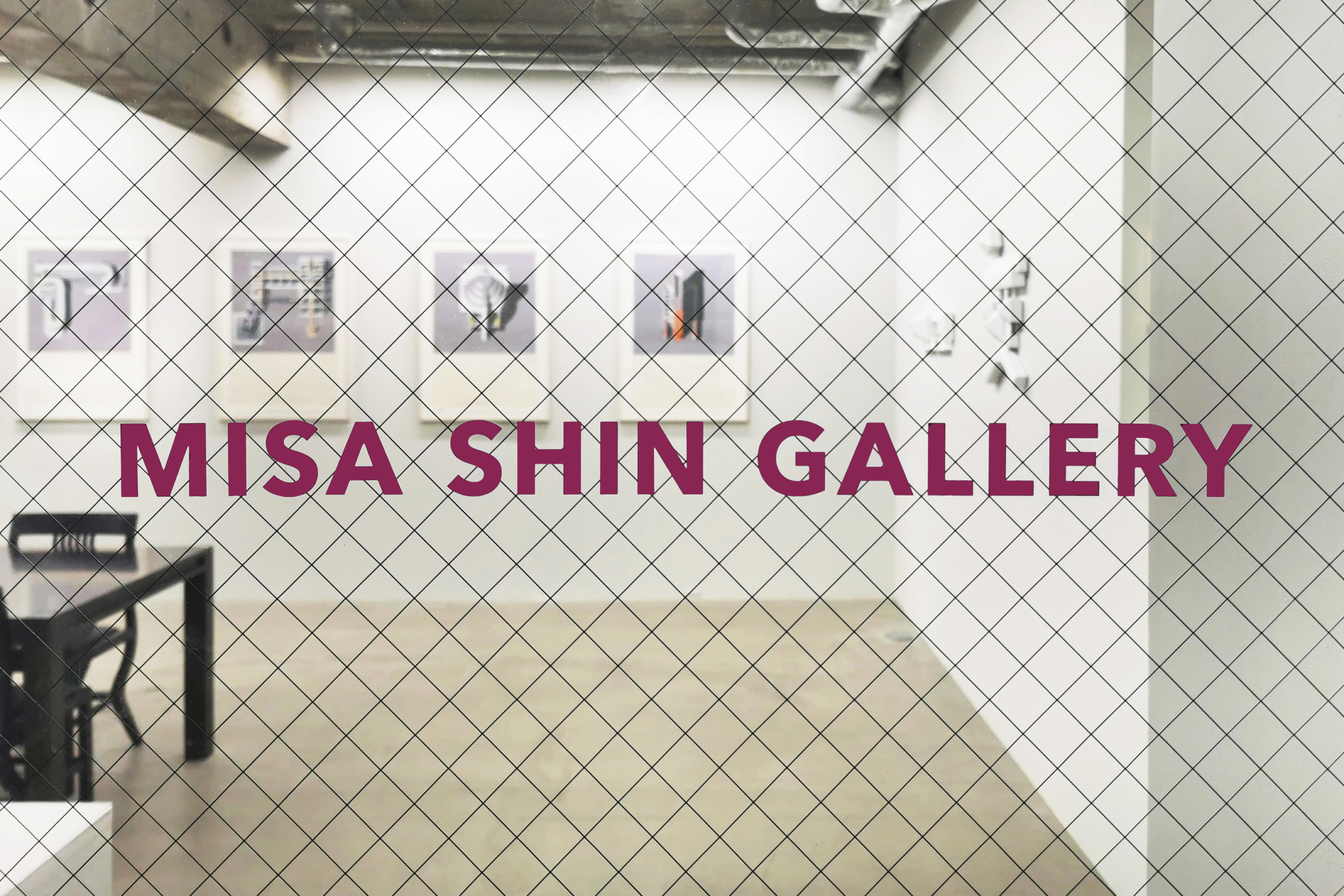
Misa Shin Gallery opened in 2010 in Shirokane, a central and historically industrial area of Tokyo that still contained small factories at the time. In 2018 the gallery relocated to Minami-Azabu, a quiet residential neighborhood that is also home to many embassies. The gallery represents a multigenerational roster of Japanese and international artists, many of whom work with conceptual and interdisciplinary approaches. The gallery seeks to both present exhibitions of cutting-edge work and establish the historical significance of its artists. In particular, the gallery’s representation of Japanese conceptual artists from the 1960s and ’70s has made lasting contributions to the global understanding and appreciation of postwar Japanese art.
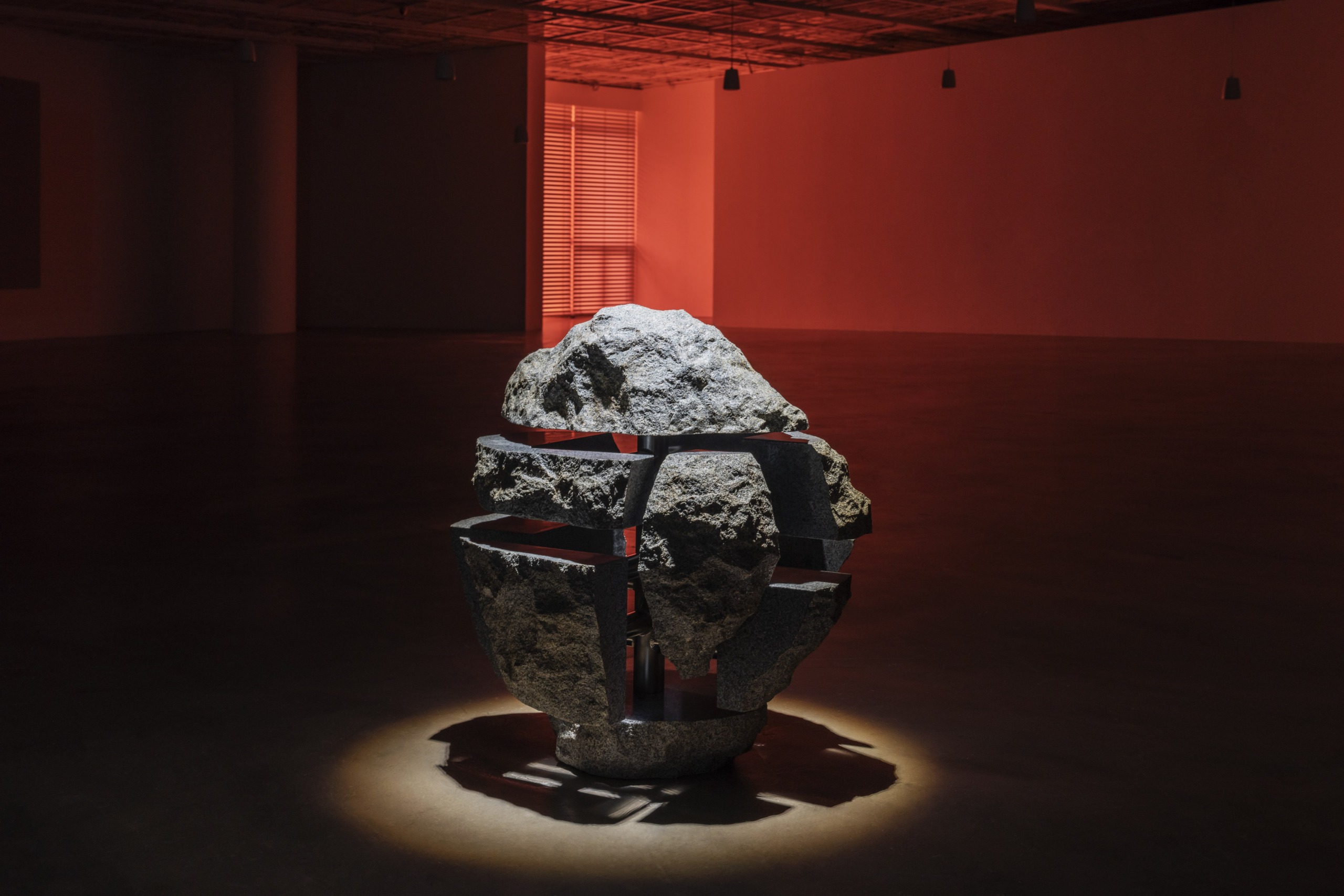
Having worked together since 2009, the artist duo Moon Kyungwon and Jeon Joonho are known for new media installations that imagine future scenarios as a means of addressing pressing issues in contemporary life, such as climate change and ideological division. The new video installation on view in this show builds on recent large-scale exhibitions at venues including the 21st Century Museum of Contemporary Art in Kanazawa, the National Museum of Modern and Contemporary Art in Seoul, and Art Sonje Center, also in Seoul. A concurrent exhibition of their individual works will be on view at SCAI Piramide in Roppongi.
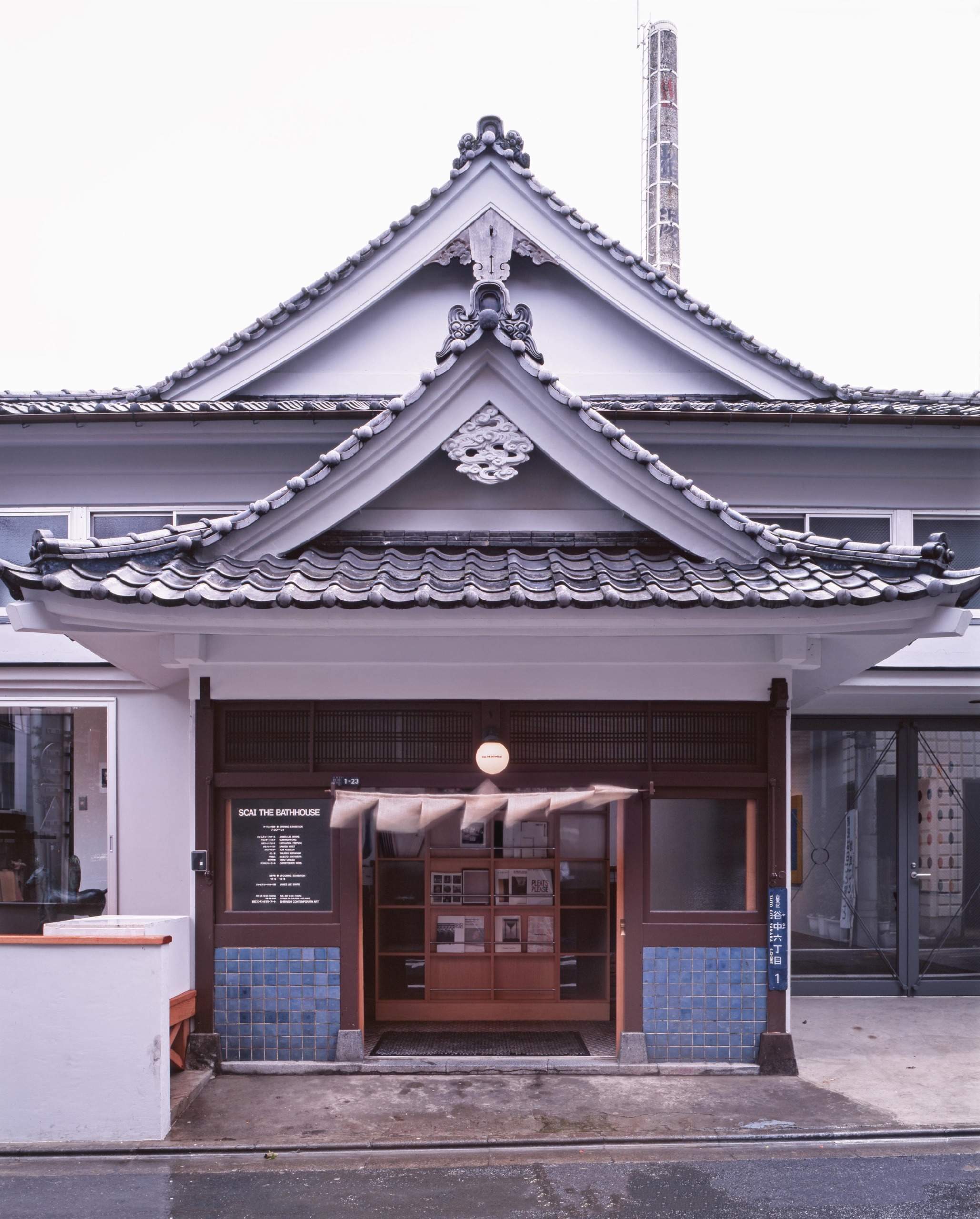
SCAI The Bathhouse was founded in 1993 in a 200-year-old former public bathhouse building in the old Tokyo district of Yanaka, a short walk from Ueno, an area dense with museums and art schools. Representing artists from across a wide range of generations and practices, the gallery seeks to function as a meeting place for various currents of contemporary art from Japan and abroad. To pursue this mission further, the gallery recently opened Komagome Soko, an experimental project space for emerging talents; SCAI Park, which transforms part of a storage facility into an exhibition site; and SCAI Piramide, an outpost in Roppongi for cultivating thoughtful exchanges and further advancing the contemporary art scene in Tokyo.
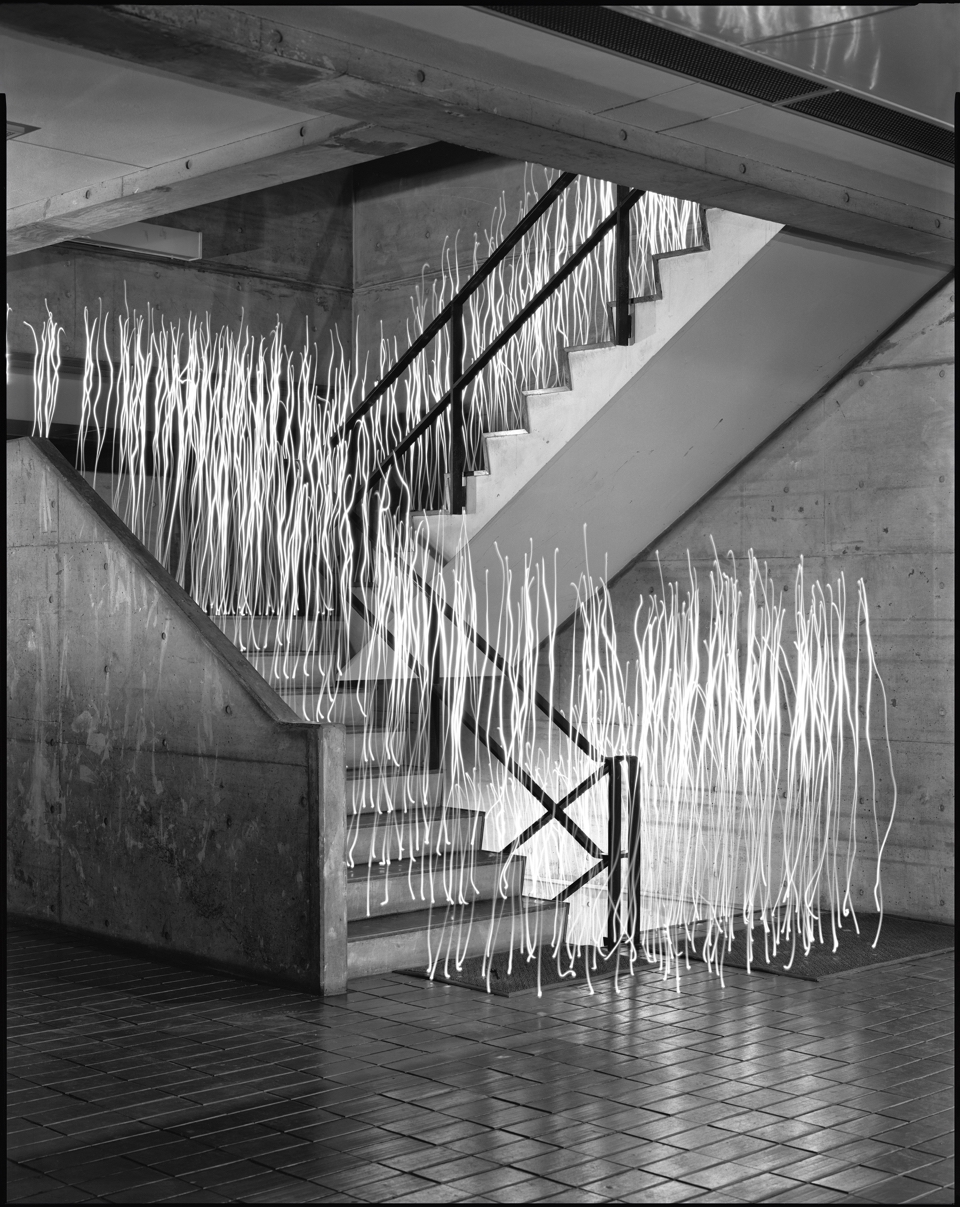
Tokihiro Sato’s photographic practice investigates themes of light, time, space, and the human body through techniques such as the pinhole camera, camera obscura, and long-exposure photography. This exhibition features the “City Scape” works from Sato’s major series Photo-Respiration, which focuses on architectural structures and urban spaces. To make these works Sato moves around with a penlight before a camera set up in the darkness and uses long exposure to capture the light trails of his movements on film. Sato states that “within architectural structures, there are spaces that appear to me as if they are air pockets.” His method of creating light forms through the movement of his own body within these spaces reflects his background studying sculpture. The resulting photographs give visible form to an abstract sense of time, as though it were permeating the space.
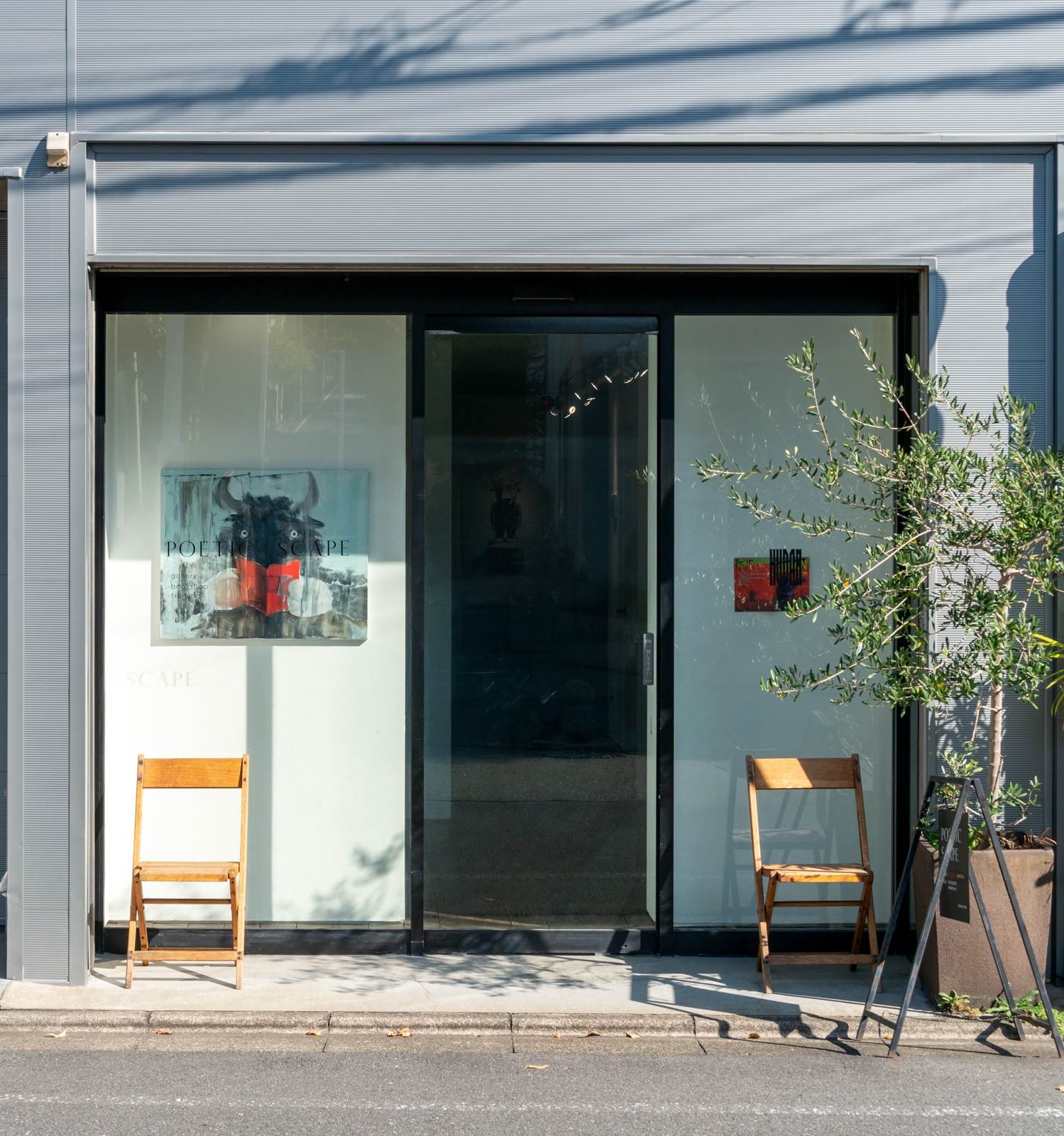
Poetic Scape opened in Nakameguro in 2011 as a gallery specializing in photography. In recent years, its program has expanded to include works in other mediums. Combining the words “poetic” and “landscape,” the gallery name reflects the ambition to show visitors a new landscape that cannot be clearly defined by language but that artists have the ability to see. Affiliated artists include Daido Moriyama, Hiroshi Nomura, Sakiko Nomura, Tracy Templeton, Toshiya Watanabe, and Toshio Shibata. In addition to its exhibition space, Poetic Scape runs a small shop that sells artist books and texts on photographic theory.
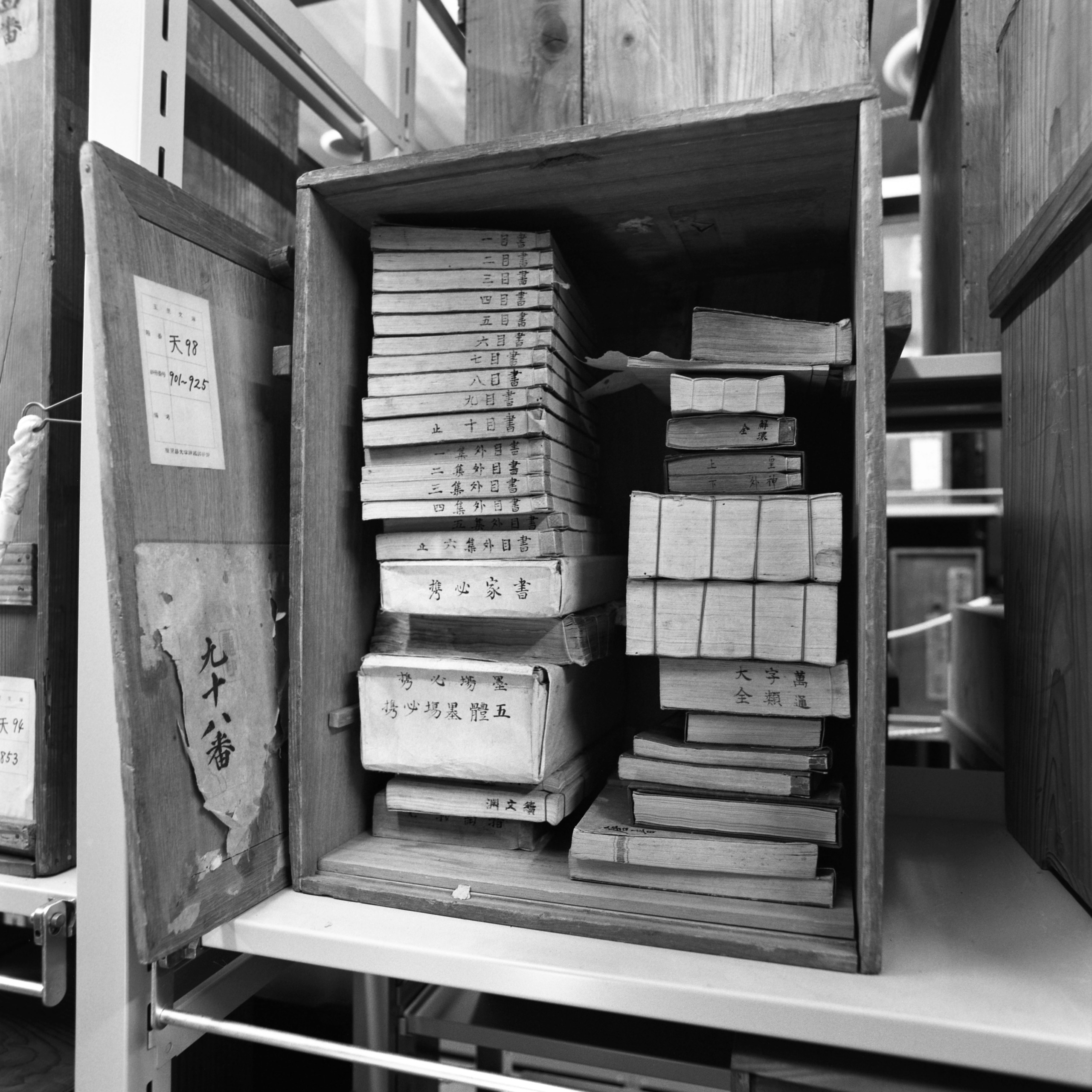
Tokuko Ushioda embarked on her ongoing Bibliotheca / Landscapes of Books series in 1995 when she was captivated by the beauty of a single book and inspired to photograph books as objects. The fifth installment of the series features the Tamazato Collection, housed in the Kagoshima University Library, which Ushioda photographed from 2019 to 2021. The collection comprises some 18,900 volumes of historical East Asian texts that were passed down through the Tamazato branch of the powerful Shimazu clan, which ruled the Satsuma Domain in southern Kyushu for nearly 700 years from the Kamakura period (1185–1333) to the Meiji Restoration of 1868. All the photographs were taken using only the archive’s ambient light. Through a combination of monochromatic and color prints, Ushioda captures not only the quiet presence of the books but also the atmosphere of the storage space and the historical weight embedded in these materials.
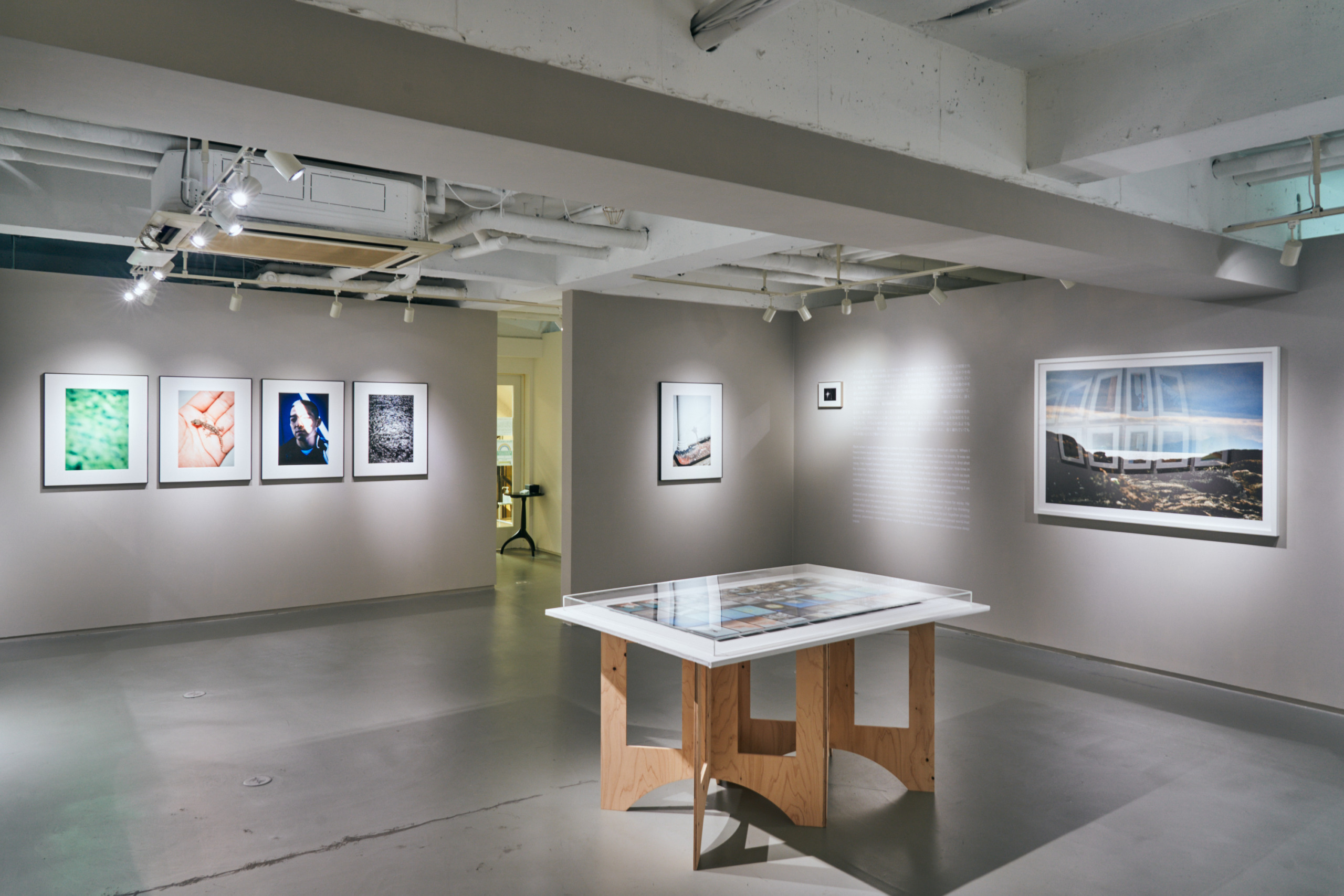
A pioneer among Japanese commercial galleries specializing in photographic art, Photo Gallery International was established in Tokyo’s Toranomon district in 1979. The gallery adopted its current name, PGI, upon its move to Higashi-Azabu in 2015. PGI exhibits seminal photographers from the United States and beyond, including Ansel Adams, Edward Weston, Harry Callahan, and Emmet Gowin. The gallery also works with masters of Japanese postwar photography like Yasuhiro Ishimoto, Kikuji Kawada, Ikko Narahara, and Eikoh Hosoe. PGI takes pride in partnerships with established artists such as Kozo Miyoshi, Michiko Kon, and Yoshihiko Ito that date back to the early days of their careers. Since 2003, the gallery has also discovered new talents, welcoming Shintaro Sato, Takashi Arai, Yuki Shimizu, Narumi Hiramoto, and many others to the program.
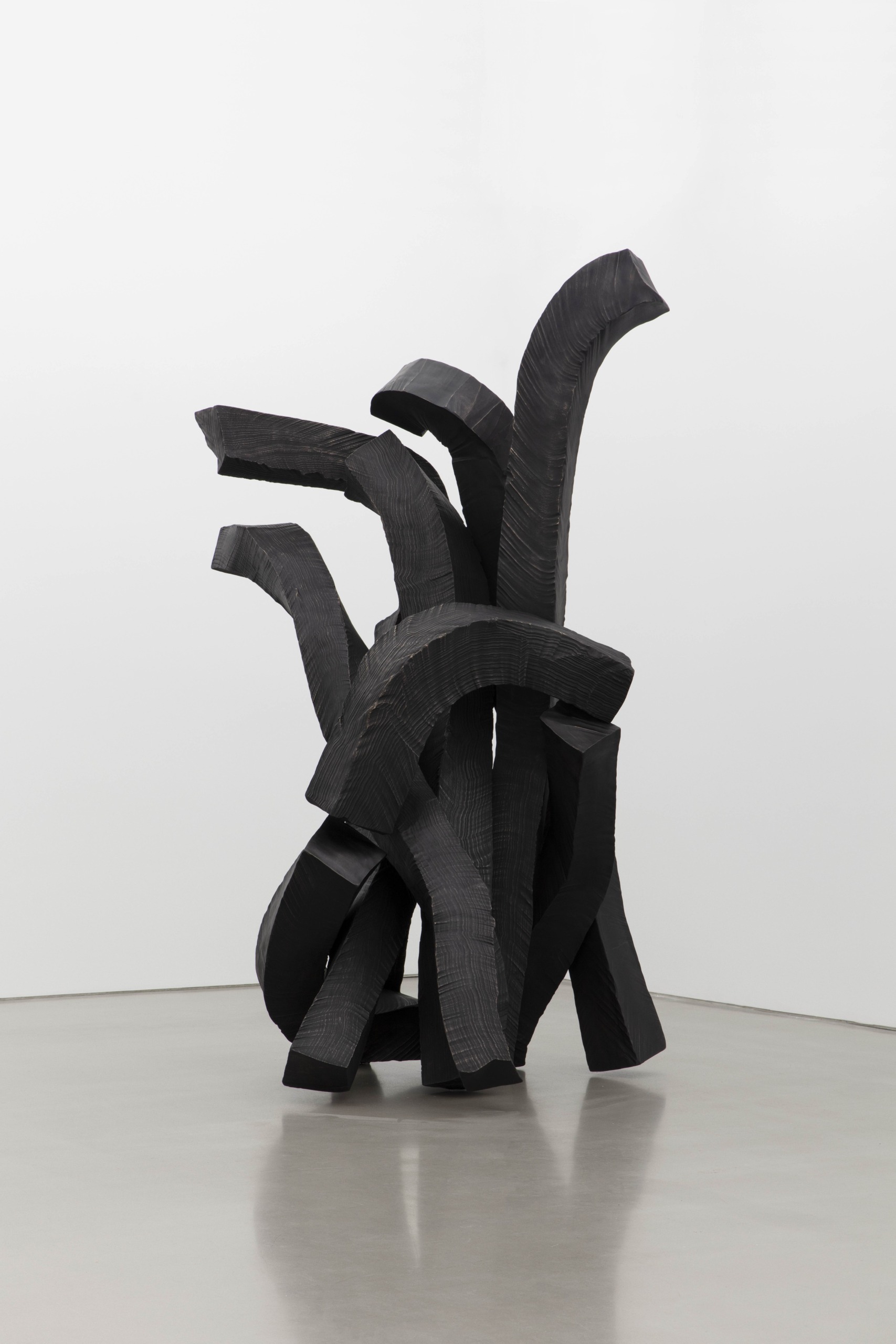
Lee Bae is known for his paintings, sculptures, and installations that deploy the evocative power of charcoal to create striking abstract forms. Lee has been the subject of solo exhibitions at art institutions worldwide, including the Fondation Wilmotte, Venice, Italy; the Fondation Maeght, Saint-Paul de Vence, France; Paradise Art Space, Incheon, South Korea; the Musée des Beaux-Arts, Vannes, France; and the Musée Guimet, Paris. Lee’s works are held in public collections, notably the National Museum of Modern and Contemporary Art, Korea; the Seoul Museum of Art; the Leeum Museum of Art, Seoul; and the Musée Cernuschi, Paris.
The gallery will hold an opening reception on Wednesday, November 5, from 5pm to 8pm.
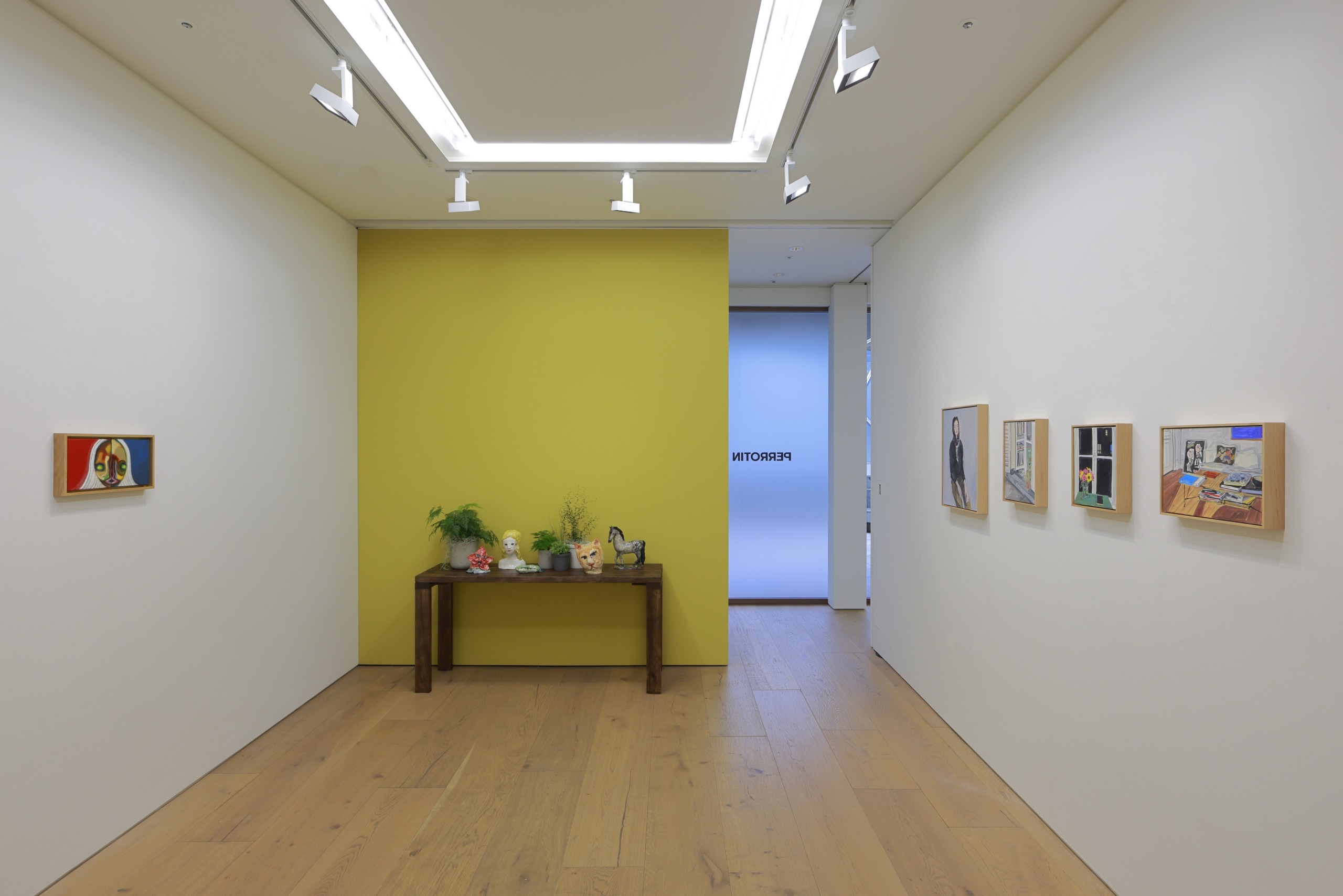
Emmanuel Perrotin founded his first gallery in Paris in 1990 at the age of 21. He has worked closely with his roster of artists—some for more than 30 years—to help realize their ambitious projects. Perrotin opened a Hong Kong space in 2012, followed by spaces in New York in 2013, Seoul in 2016, Tokyo in 2017, Shanghai in 2018, Dubai and a second Seoul location in 2022, and Los Angeles in 2023. With galleries now on three continents, Perrotin continues to gain international recognition and influence. The gallery also participates in more than 20 art fairs each year.
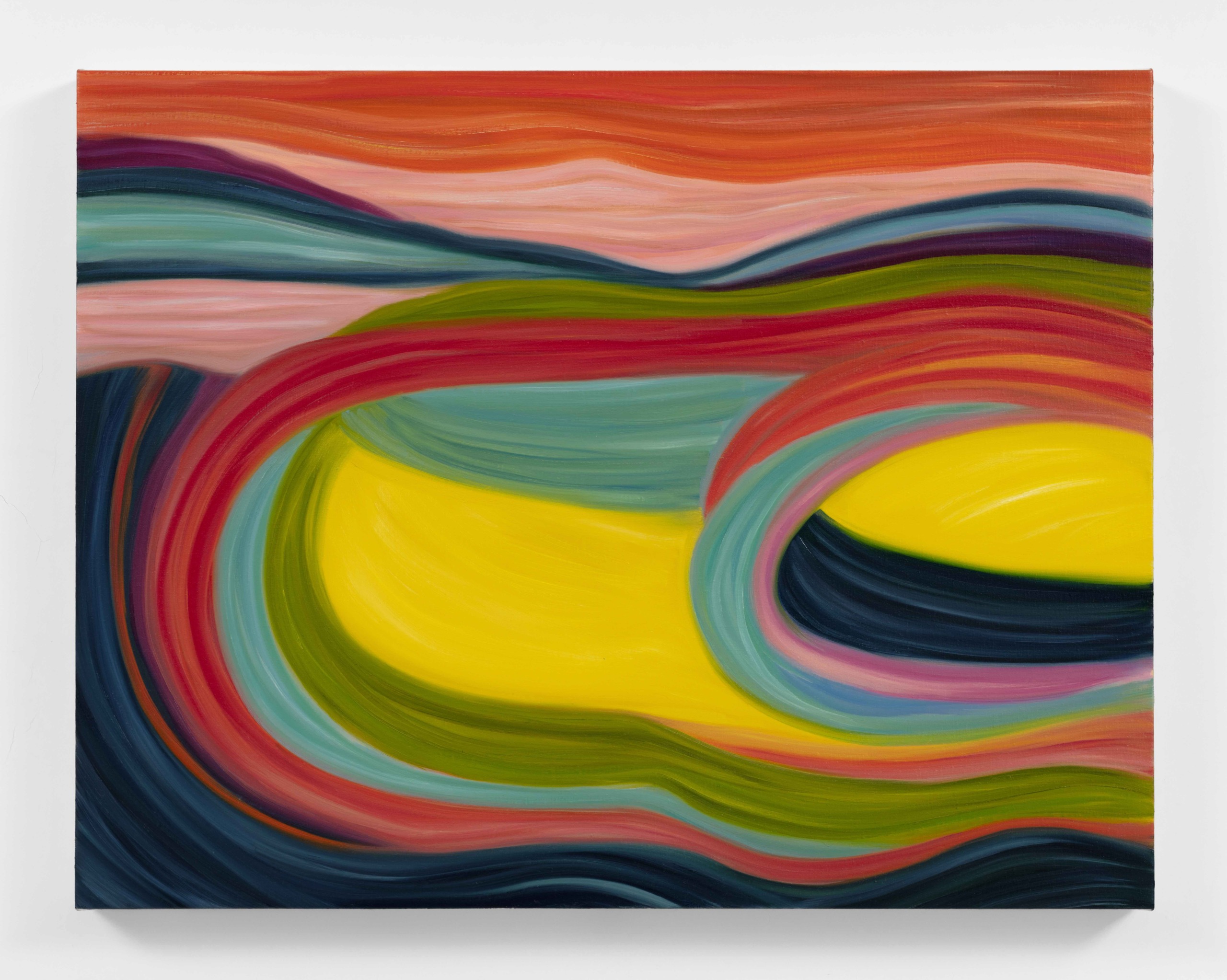
Pace is pleased to present concurrent exhibitions of work by Brazilian artists Tomie Ohtake and Marina Perez Simão at its Tokyo gallery this fall. Simão is renowned for her work in oil painting, watercolor, and printmaking. For this debut solo exhibition in Japan she will unveil a new series of landscape-inspired pieces. Her vibrant, lyrical compositions blur the lines between interior and exterior worlds, guiding viewers through semi-abstract realms filled with organic, flowing forms.
Ohtake, a Japanese-Brazilian artist whose inventive abstractions reshaped modern art in Brazil, has been a key influence on Simão’s practice—with Simão’s solo exhibition earlier this year at the Instituto Tomie Ohtake in São Paulo deepening her dialogue with Ohtake’s legacy. Born in Kyoto in 1913, Ohtake immigrated to Brazil in 1936 and became one of the country’s most celebrated abstractionists. This focused presentation of Ohtake’s work highlights her prolific output across painting, printmaking, and sculpture, while her monumental ribbon-like outdoor sculpture Infinity, installed at the base of the Ark Hills Sengokuyama Mori Tower, is a testament to the late artist’s enduring impact on public art and urban space.
Together, these exhibitions offer an intergenerational conversation between two artists linked by their heritage and their imaginative approaches to abstraction and landscape painting.
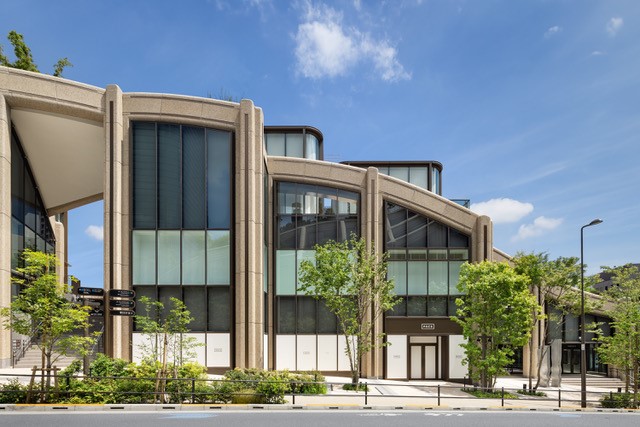
Pace is a leading international art gallery representing some of the most influential artists and estates of the 20th and 21st centuries. Founded by Arne Glimcher in 1960, Pace has galleries around the globe, including its headquarters in New York, Los Angeles, London, Geneva, Hong Kong and Seoul. Pace opened its first gallery in Japan in Tokyo’s Azabudai Hills development in 2024. A new gallery in Berlin is due to open in 2025.
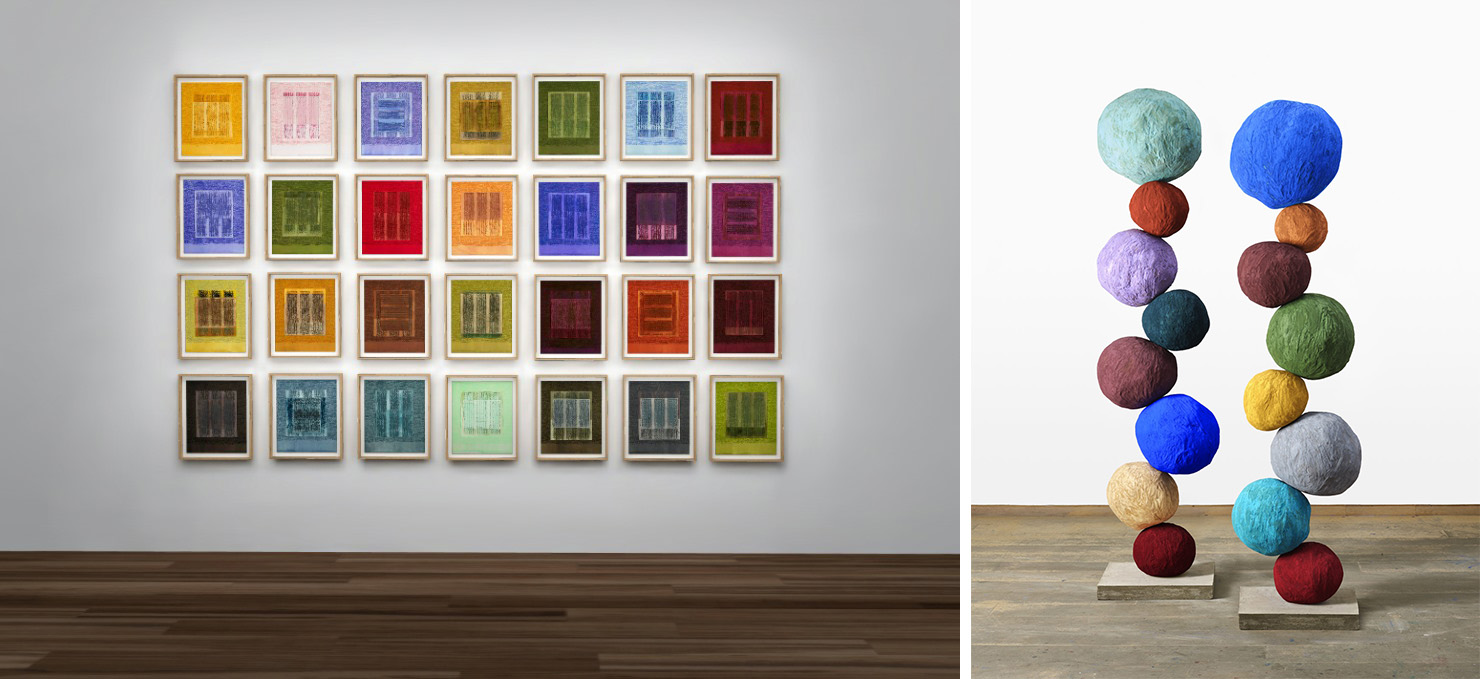
Kotaro Nukaga is pleased to present dual solo exhibitions for two British artists, Annie Morris and Idris Khan, at its Roppongi and Tennoz spaces. Morris works across a wide range of mediums, including sculpture, painting, and tapestry. She is best known for her Stack sculptures comprising stacked, rounded forms of various sizes and colors. This presentation in Tokyo follows on her exhibition at the Fosun Foundation in Shanghai in 2024. Khan is acclaimed for his densely layered photographs, paintings, and sculptures that blur the lines between abstraction and figuration. He draws on diverse cultural sources, including literature, music, and religion, to explore themes of history, memory, and the metaphysical collapse of time into single moments. Khan was awarded the American Architecture Prize in 2017 for his design of the Wahat Al Karama memorial in Abu Dhabi and was recently the subject of a solo exhibition at the Milwaukee Art Museum in 2024.
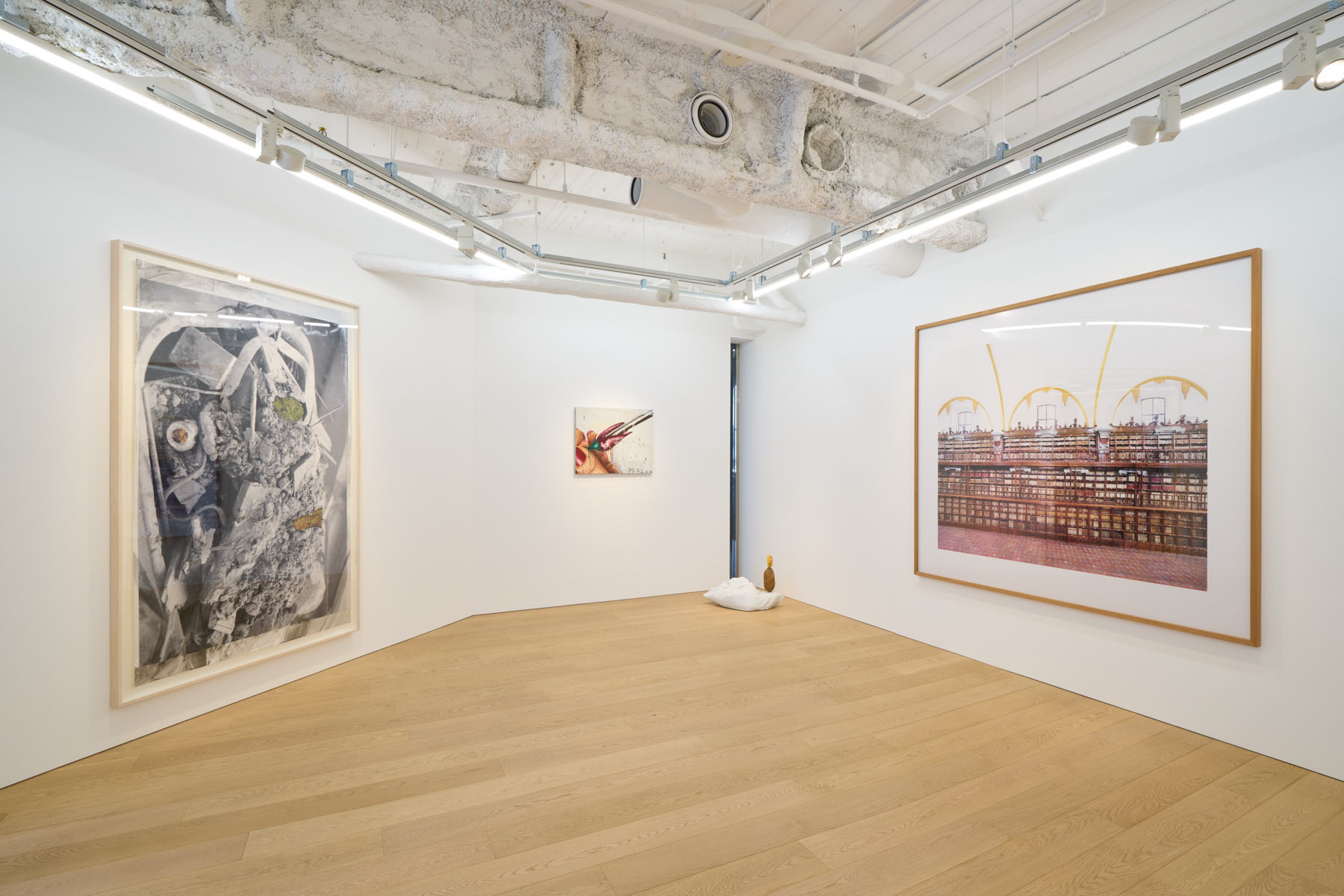
Kotaro Nukaga was founded in 2018 as a platform for thought-provoking ideas and daring sociopolitical confrontations. The gallery program employs an interdisciplinary lens that spans diverse cultural and academic fields, approaching art through its historical, cultural, social, scientific, and aesthetic contexts in order to reinterpret the past, gain new perspectives on the present, and imagine possible futures. The gallery seeks to promote its artists’ practices through an understanding of the dynamics of the current art ecosystem while also supporting projects that push beyond existing frameworks. Kotaro Nukaga has two spaces in Tokyo—one in Roppongi, a cultural hub bustling with new ideas, and the other in Tennozu Isle, a location that is currently gaining traction as a new center of contemporary art in the city.
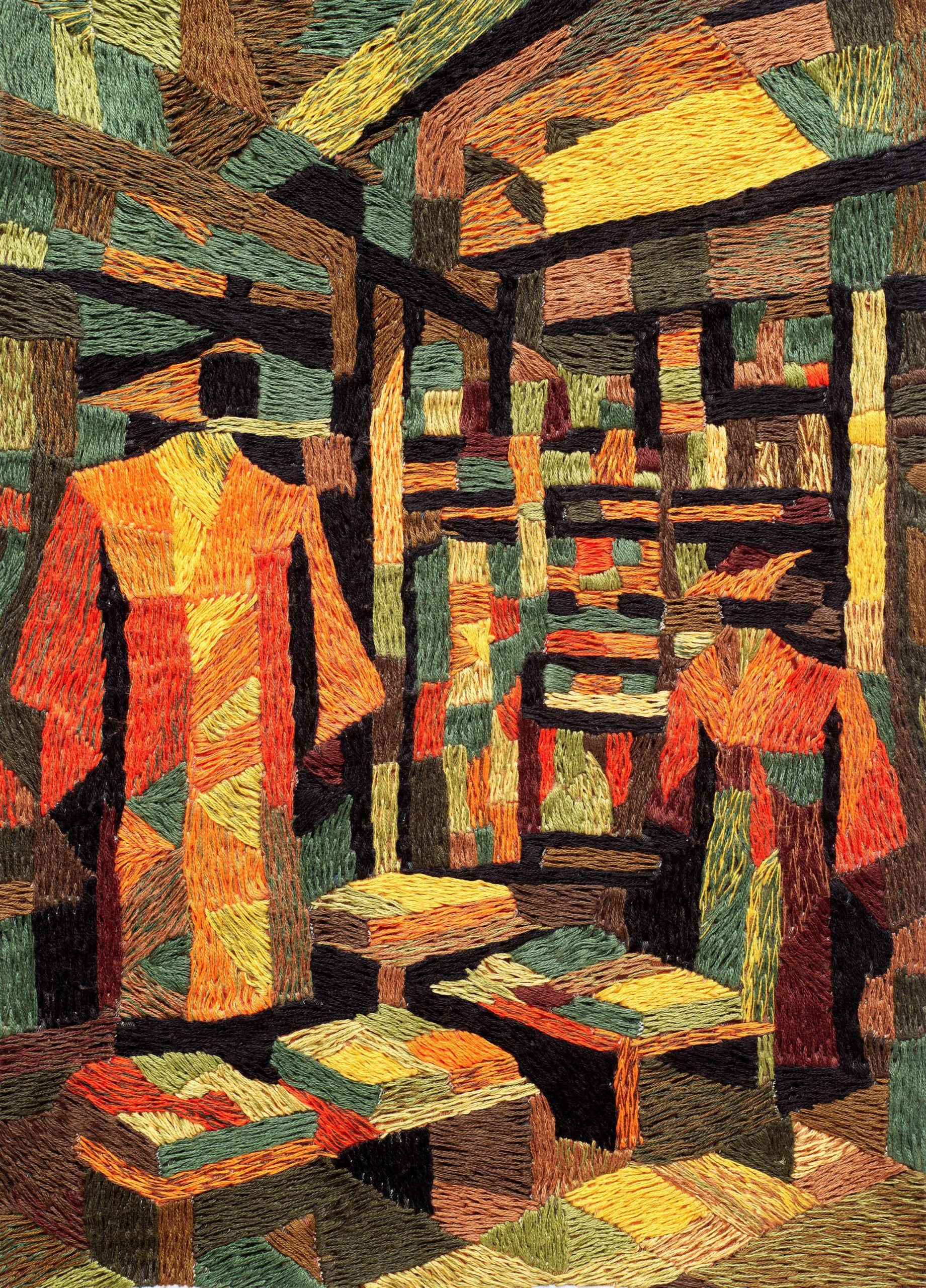
Brazilian artist Vik Muniz is famed for his inventive appropriations and reintrepretations of globally circulating icons through unusual materials, from garbage to chocolate sauce. This exhibition features new works from the series Threads that were made especially for the occasion. Drawing on his 30-year engagement with Japan and its culture, Muniz turns to images including a kimono shop, an ikebana vase, and commuting salarymen for inspiration. He then further develops these source images by crossing them through various AI programs before rendering them as embroideries made in collaboration with Brazilian artisans. In using an ancient craft to confer abstract texture to images produced with the latest technology, Muniz raises questions about how the tools we develop to improve our relationship with reality are indeed altering our perceptions of reality.
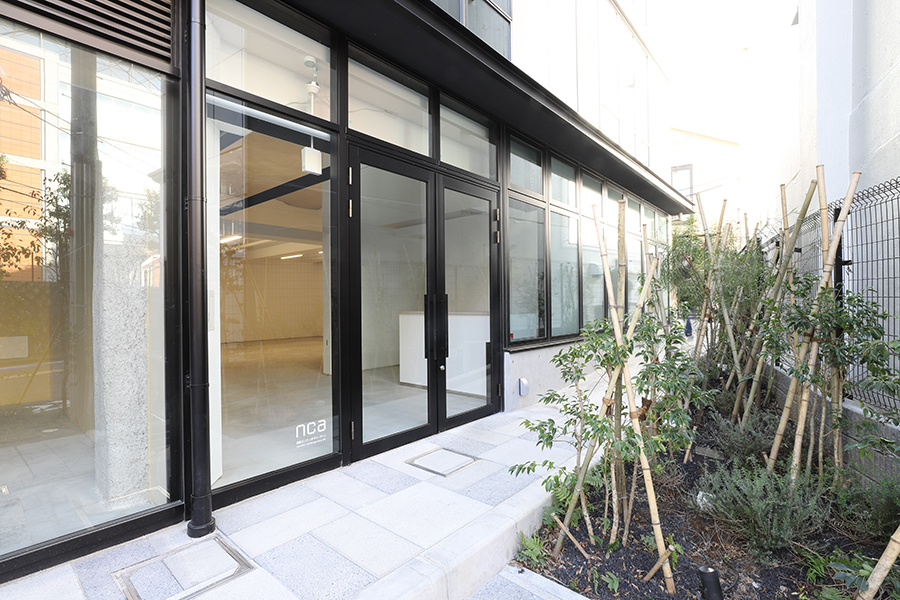
Opened in 2002, nca | nichido contemporary art is the contemporary branch of galerie nichido, the pioneering Ginza-based gallery established in 1928. Continuing its predecessor’s mission of promoting culture through innovative projects and exhibitions, nca features a program of up-and-coming Japanese and international artists. As a result of its presence in Taiwan between 2015 and 2022, the gallery has expanded the scope of its program to actively promote Asia’s contemporary art scene.

In 1988, at the age of 25, Taiji Matsue traveled to Andalucia, Spain, where he walked through the city while capturing the landscape with his camera. The streets were flooded with intense sunlight, revealing a place seemingly devoid of shadows. This experience was a revelation for the artist and strongly influenced the development of his photographic style. The resulting photographs, collectively entitled “Andalucia 1988,” occupy a crucial position in his body of work, bridging his debut series “Transit” and his breakthrough series of the 1990s, “gazetteer.” This exhibition presents for the first time ever the long-unseen and previously unpublished “Andalucia 1988” in its entirety.
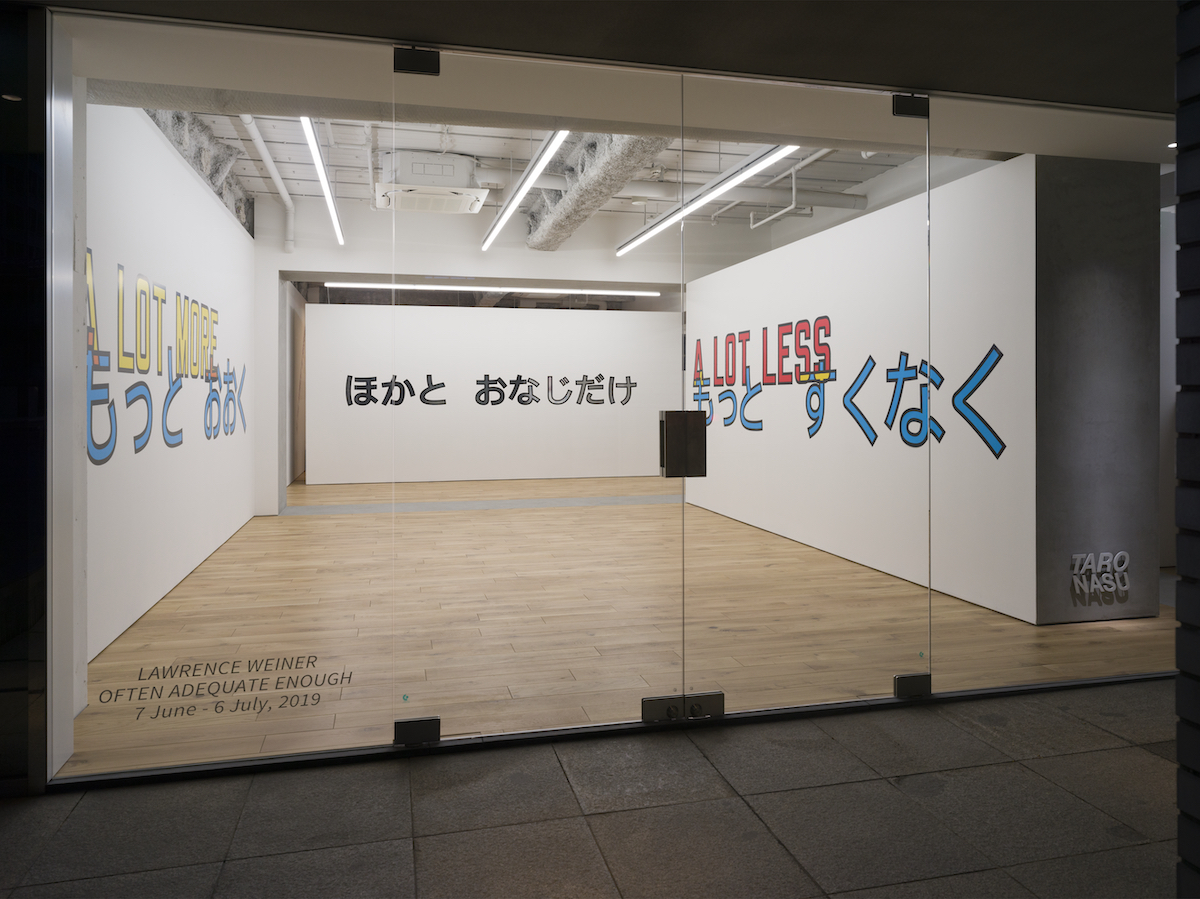
Taro Nasu was founded in 1998. The gallery represents conceptual artists including Futo Akiyoshi, Koichi Enomoto, Simon Fujiwara, Ryan Gander, Liam Gillick, Maiko Haruki, Takashi Homma, Pierre Huyghe, Ryoji Ikeda, Taiji Matsue, Mika Tajima, Michiko Tsuda, and Lawrence Weiner. Beyond its regular program, Taro Nasu also works with international art museums and public agencies to organize a range of other exhibitions and events.
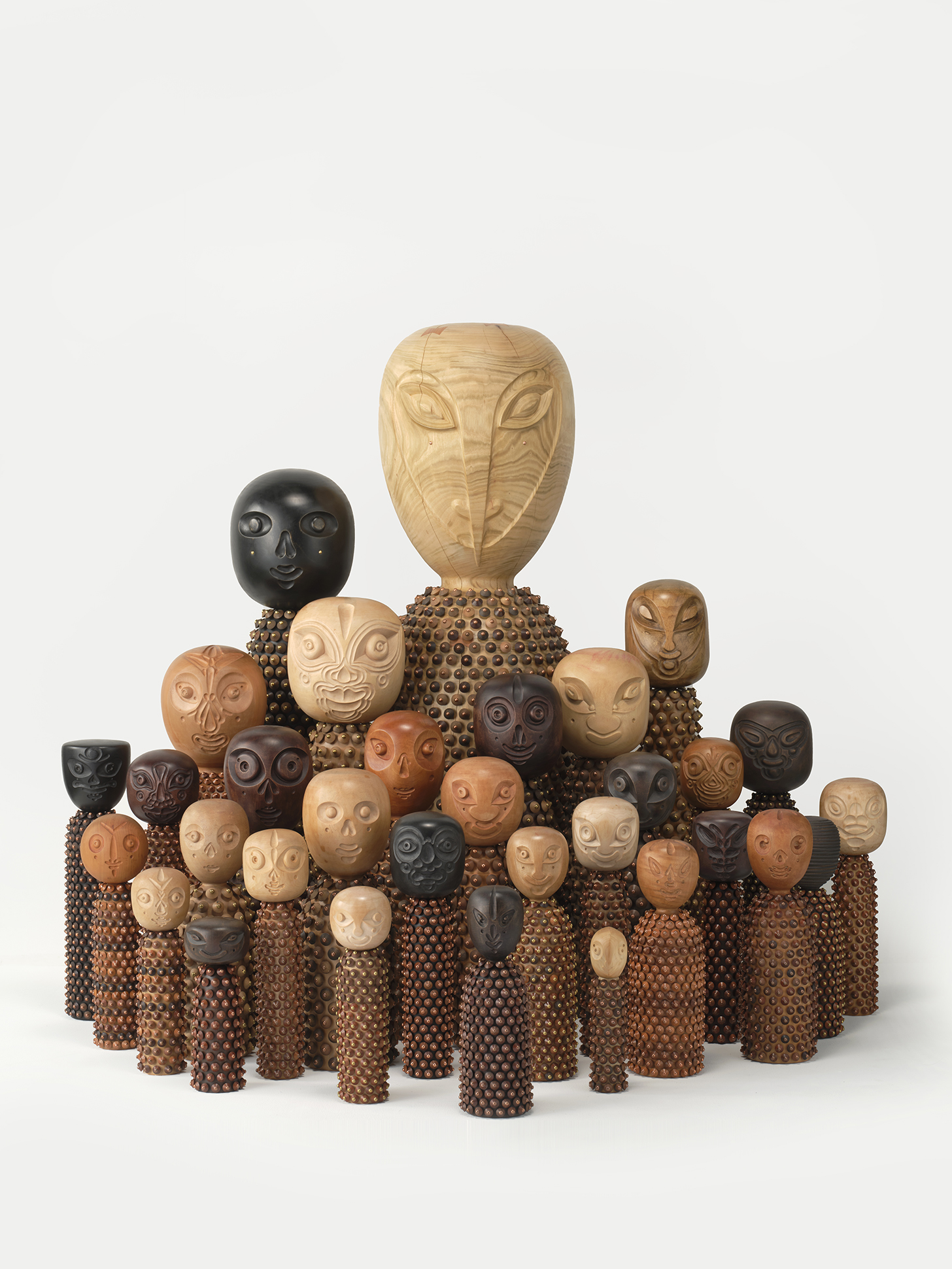
Active since 2003, Haroshi is known for making sculptures and installations out of used skateboard decks. Haroshi begins his work by collecting worn-out decks from his network of friends and skateboard shops in exchange for originally designed T-shirts and stickers. He then stacks the decks in layers to create a block from which he carves out forms, and he also assembles the cut-off fragments into mosaic-style compositions. These works elicit such a powerful response from viewers because they go beyond mere recycling to manifest an act of salvation that is inspired by the artist’s personal affection toward skateboarding. Now Haroshi is taking a different turn with his latest exhibition, which features an immersive installation of new sculptures inspired by kokeshi dolls and abacus beads that have fallen into disuse and are available at low cost.
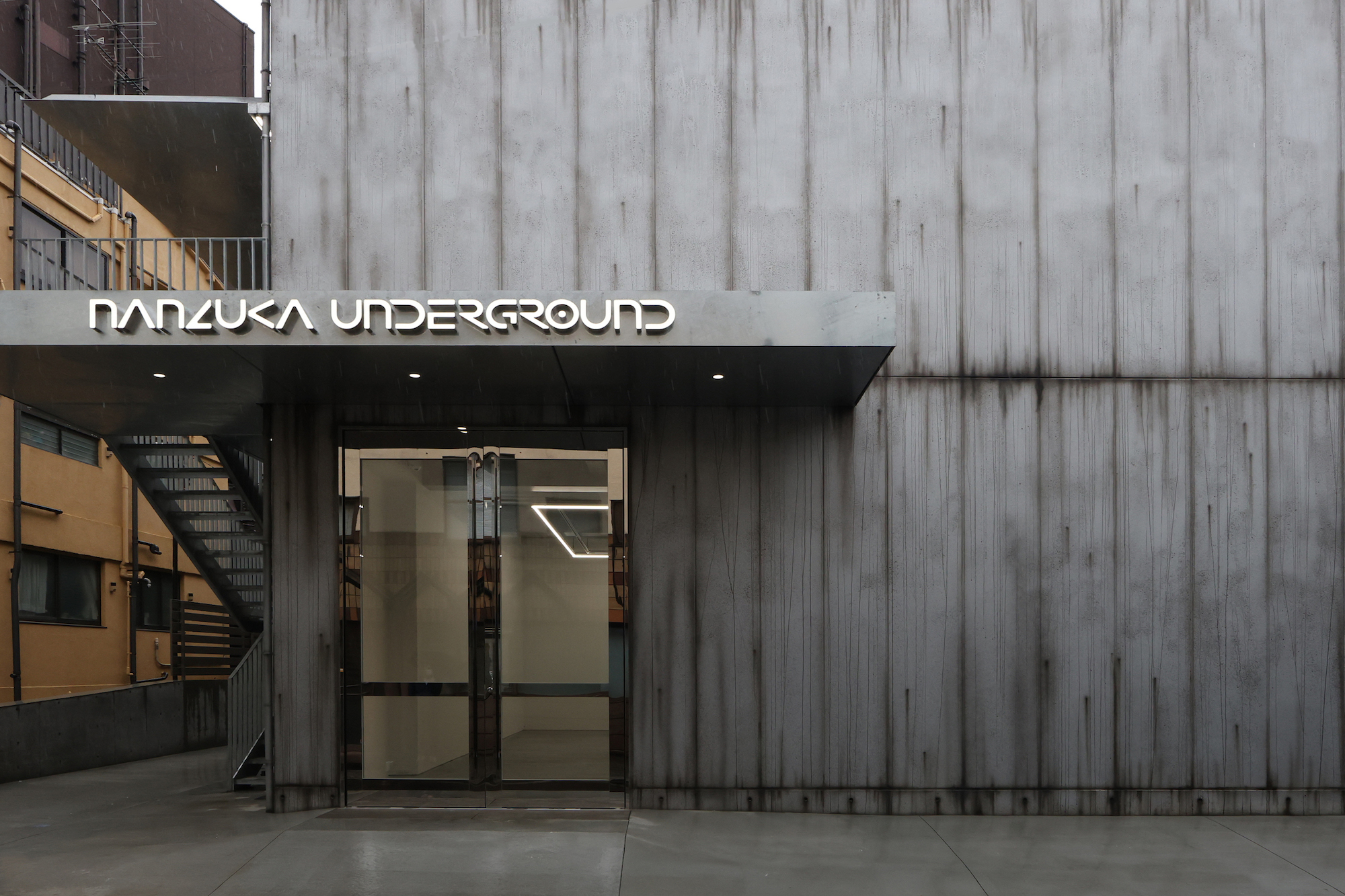
Nanzuka Underground was founded in 2005 in Shibuya as an experimental space dedicated to redefining design, illustration, street culture, fashion, music, and other creative fields as subjects for rigorous study. In particular the gallery aims to rediscover figures who were not considered “fine artists” by the Japanese art world that developed after World War II, such as Toshio Saeki, Hajime Sorayama, Keiichi Tanaami, and Harumi Yamaguchi. Nanzuka Underground collaborates with many international galleries to support the broader reception of emerging Japanese artists like Haroshi, Masato Mori, Ryuichi Ohira, Makoto Taniguchi, and Hiroki Tsukuda. The gallery also works with international artists to introduce global perspectives on contemporary art to Japan.
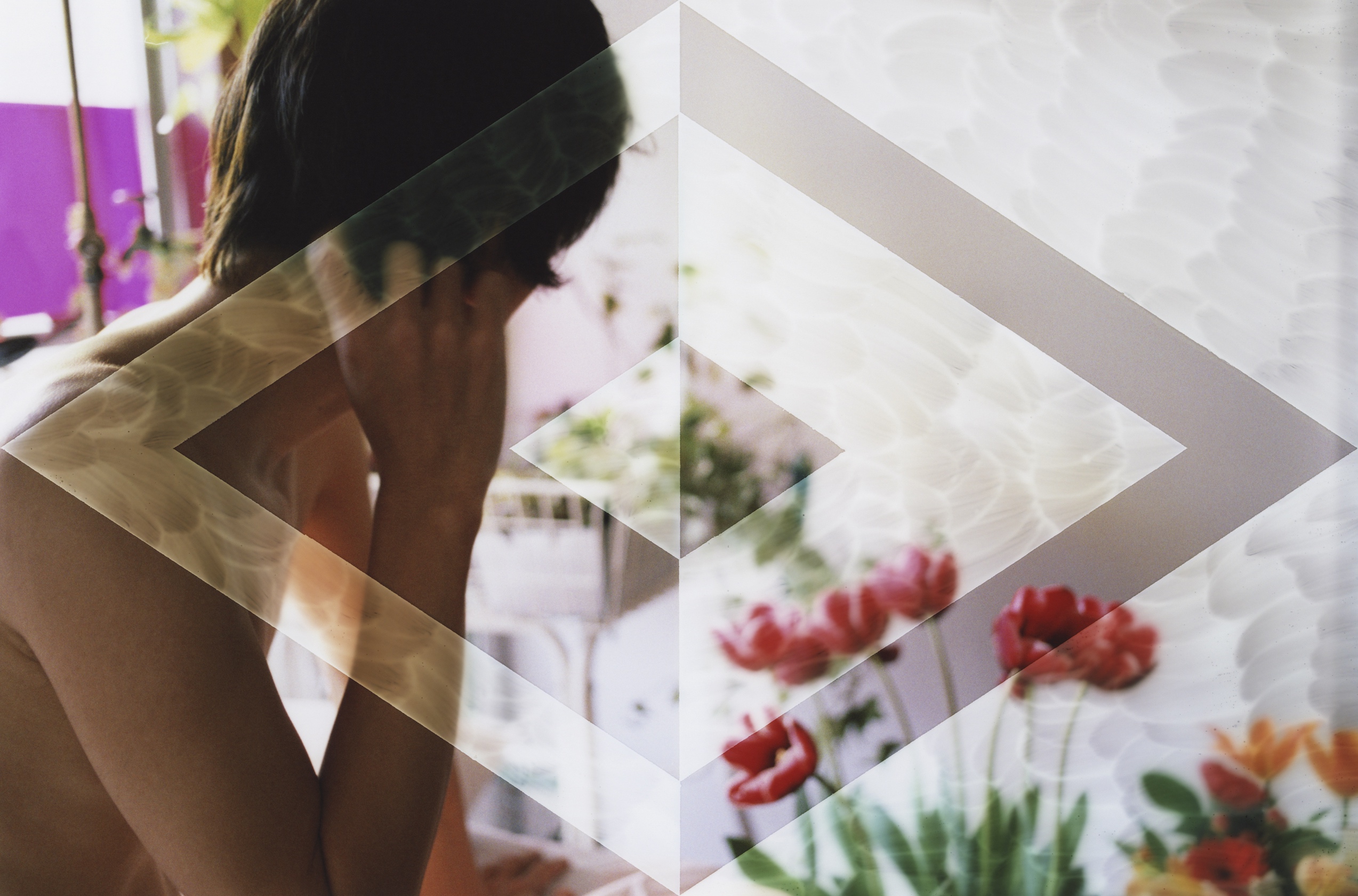
Photographer and multimedia artist Eiki Mori has explored subjects ranging from same-sex intimacy to sleep as an act of resistance. Among the inspirations for his latest project is the slogan Sous les pavés, la plage! (Under the paving stones, the beach!), which was used in France during the protests of May 1968 to suggest the possibility of freedom emerging from oppression. With this as his starting point, Mori uses photogram techniques to overlay photographic portraits with hand-drawn, geometric motifs taken from symbols of state power, like flags, and familiar patterns, such as those found in kitchen tiles and wallpaper. Referring to the lunar rainbow, the title “Moonbow Flags” hints at the potential of things that lie just beyond the scope of perception as well as the fluid relationships between individual and society, authority and play.
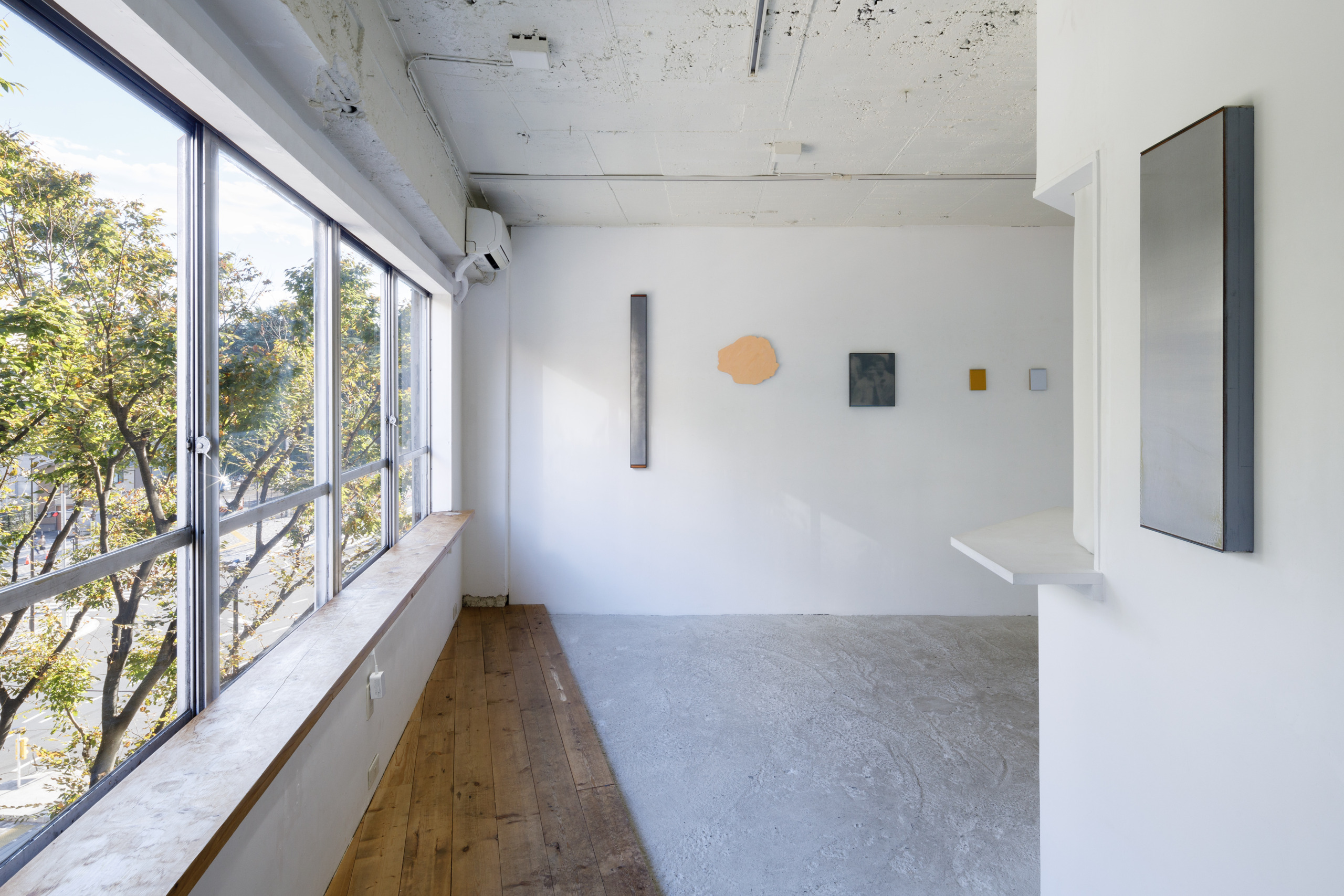
Ken Nakahashi was established in 2014 with a commitment to finding new ways of understanding the dynamics between art and humanity. The gallery shows artists who investigate various issues of global society against the backdrop of our ever-expanding collective history. Represented artists include Yuki Harada, Eiki Mori, Masaharu Sato, and Erik Swars, among others.
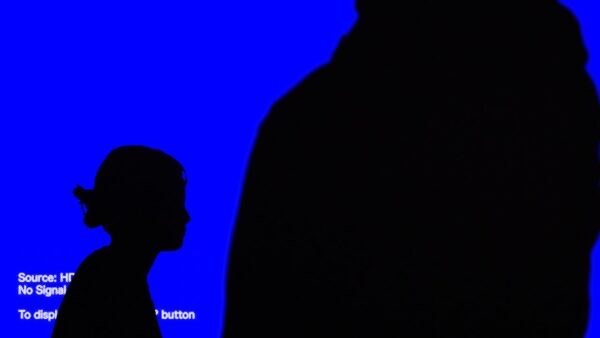
This exhibition brings together multimedia artists Lyota Yagi from Japan and Maruto Ardi from Indonesia. Both artists are known for making works that playfully upend our preconceptions of everyday life and phenomena such as time and gravity by reconstructing the functions of readymade goods and tools. The exhibition will unfold as a dialogue between the two, with each presenting their own assemblages, videos, and other works alongside a new collaborative project.
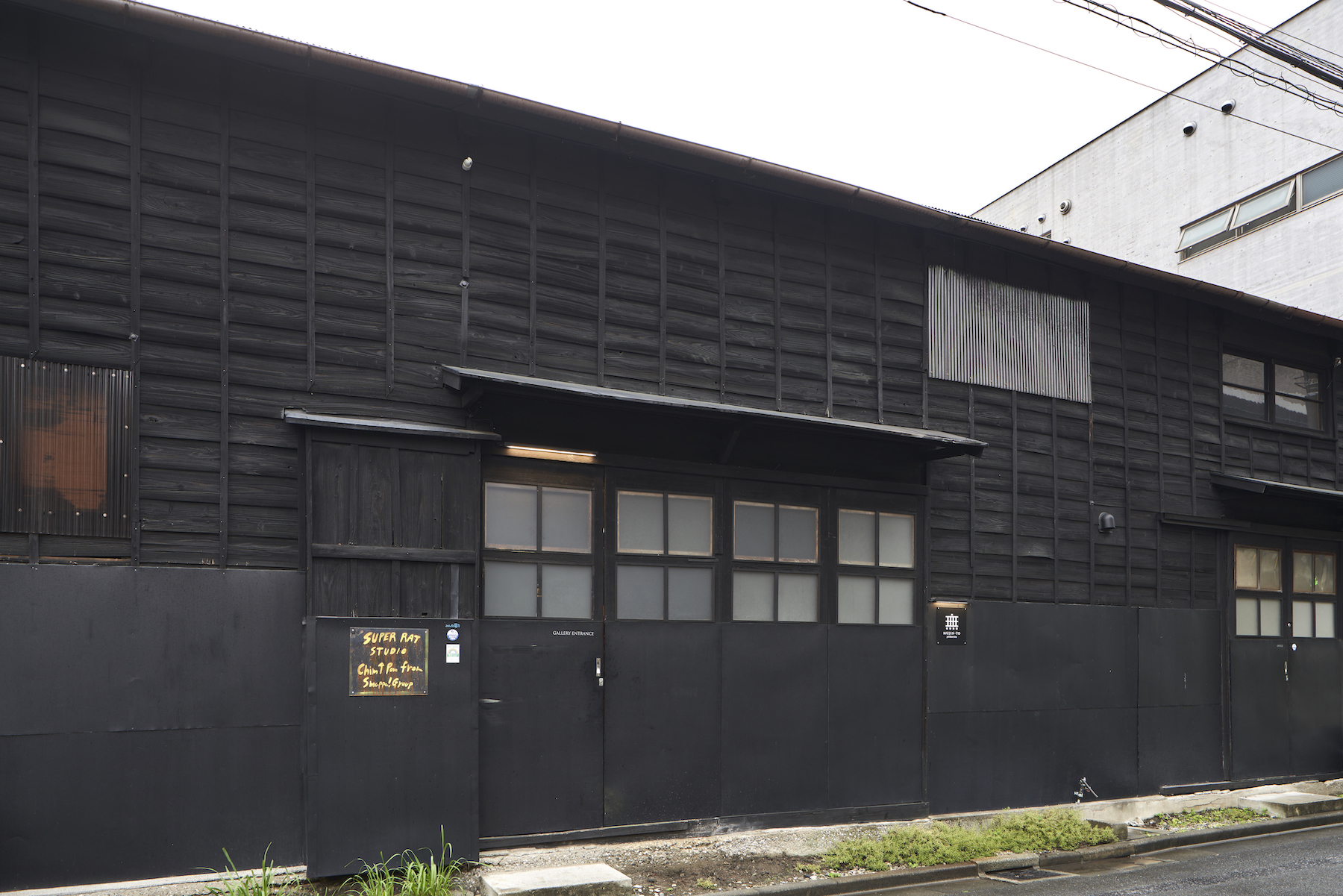
Since its establishment in 2006, Mujin-to Production has promoted outstanding emerging and midcareer artists and art collectives from Japan through exhibitions, experimental projects, and presentations at local and international art fairs. The gallery is a fearless advocate of the artists it represents, many of whom engage social issues in their work. Beyond its exhibition program, Mujin-to Production publishes books and DVDs to foster deeper understanding of the gallery artists’ practices.
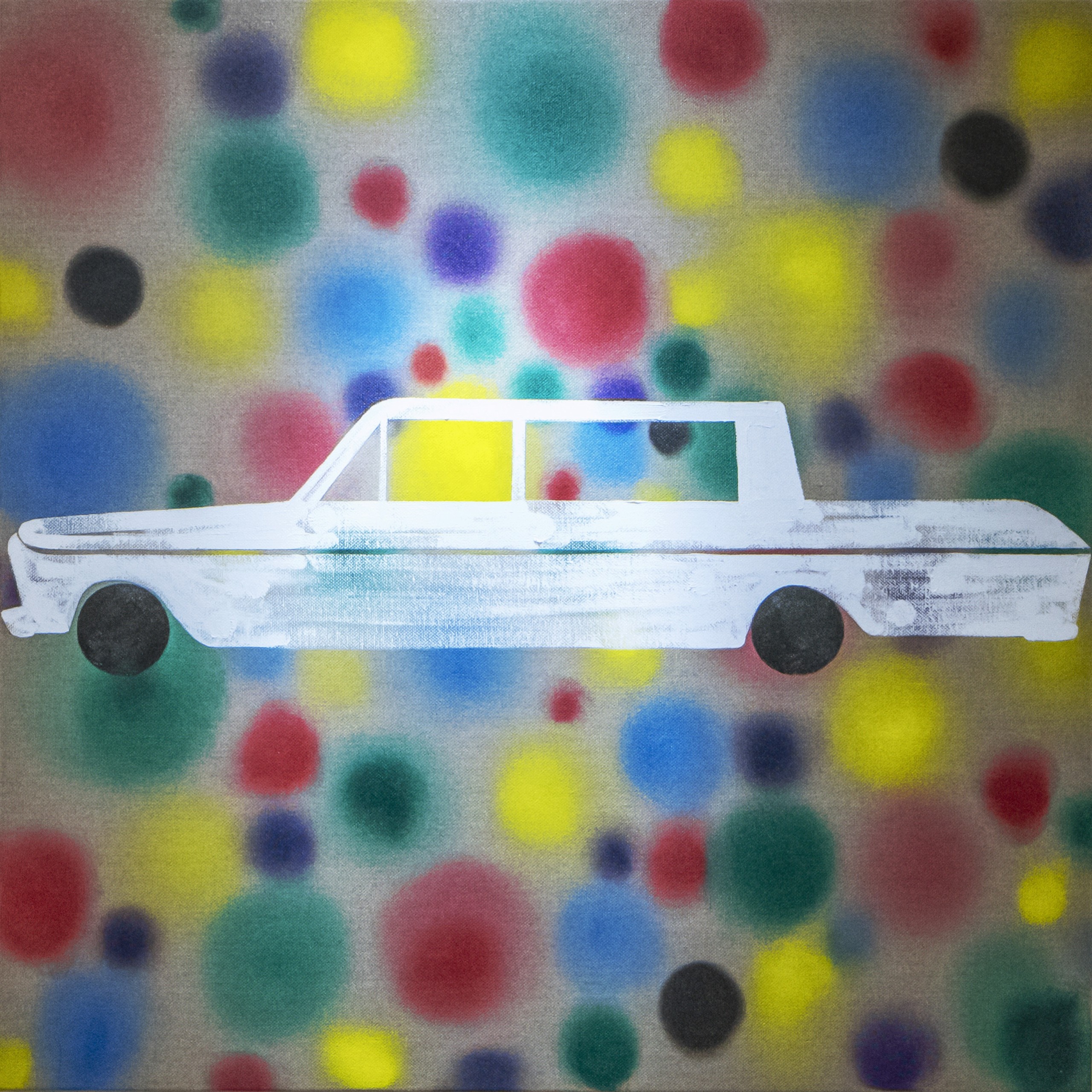
O Jun’s paintings present defamiliarized worlds through their unique combination of fragmentary scenes from everyday life, codified images, and negative space. The artist works in a wide range of materials, from oil paint and pencil to crayon, pigment, and watercolor, to achieve his unique vision. This solo exhibition of new works on canvas and other supports is his first at the gallery in six years. The artist will also perform during the run of the exhibition.
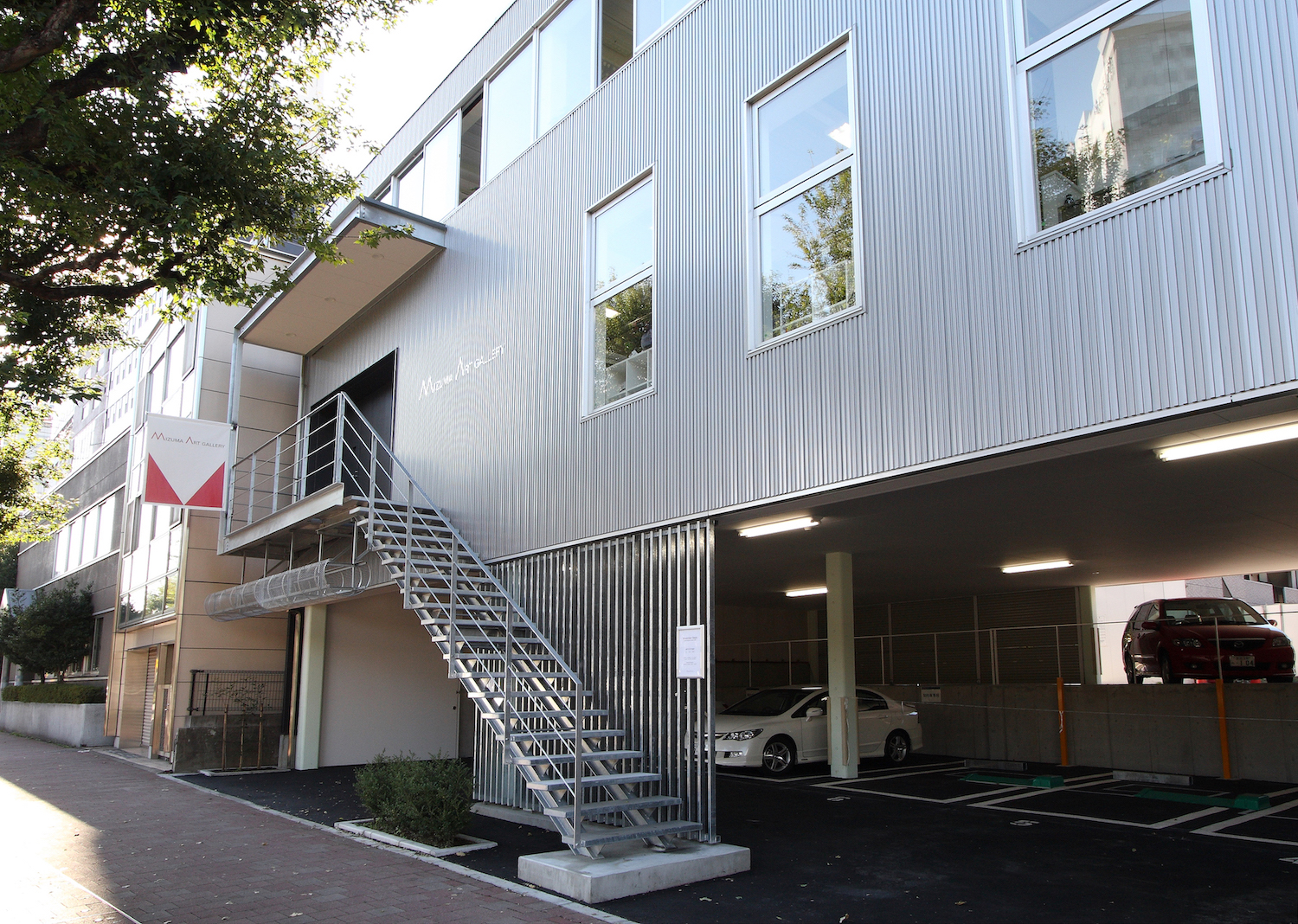
Executive Director Sueo Mizuma opened Mizuma Art Gallery in Tokyo in 1994. Since its founding, the gallery has represented artists from Japan and, increasingly, the surrounding regions whose works exhibit unique sensibilities unaffected by stylistic trends. Matching the rapid expansion of Asia’s contemporary art market, Mizuma Art Gallery established additional spaces in Beijing and Singapore in 2008 and 2012, respectively. In 2014 the gallery opened the artist residency space Rumah Kijang Mizuma in Yogyakarta to facilitate exchanges between Indonesian and Japanese artists. Mizuma Art Gallery is an active participant in international art fairs, including Art Basel Hong Kong and the Armory Show in New York, and continues to support and promote many internationally active artists.
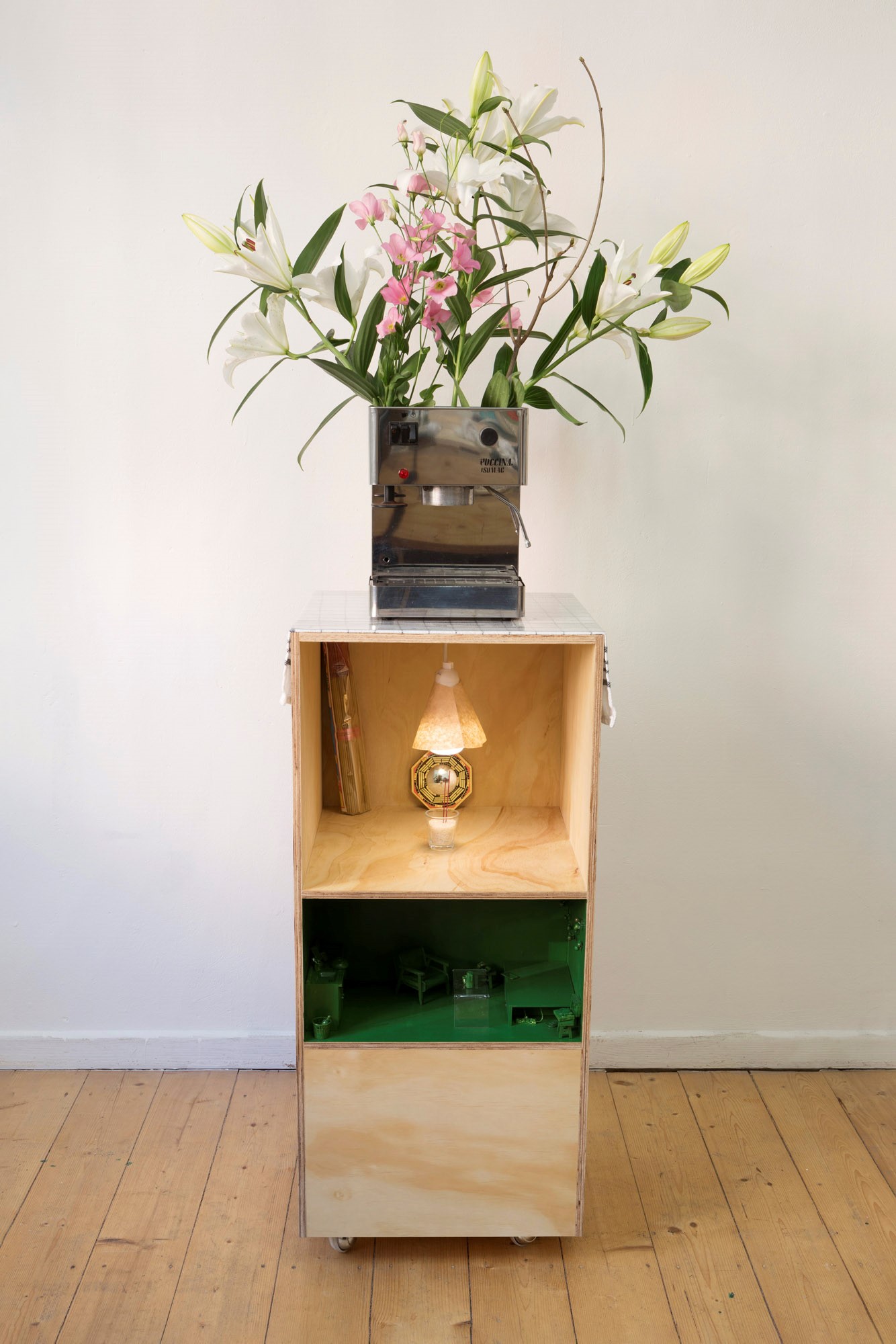
Vietnamese German artist Phung-Tien Phan makes sculptures and videos that incorporate everyday objects and images into humorously disarming assemblages. While prompting reflection on our public and private subjectivities, her works also touch on themes related to diasporic experiences, femininity and women’s work, the millennial sensibility, homogenized middle-class lifestyles, and late-capitalist production. This will be Phan’s first solo exhibition in Japan.
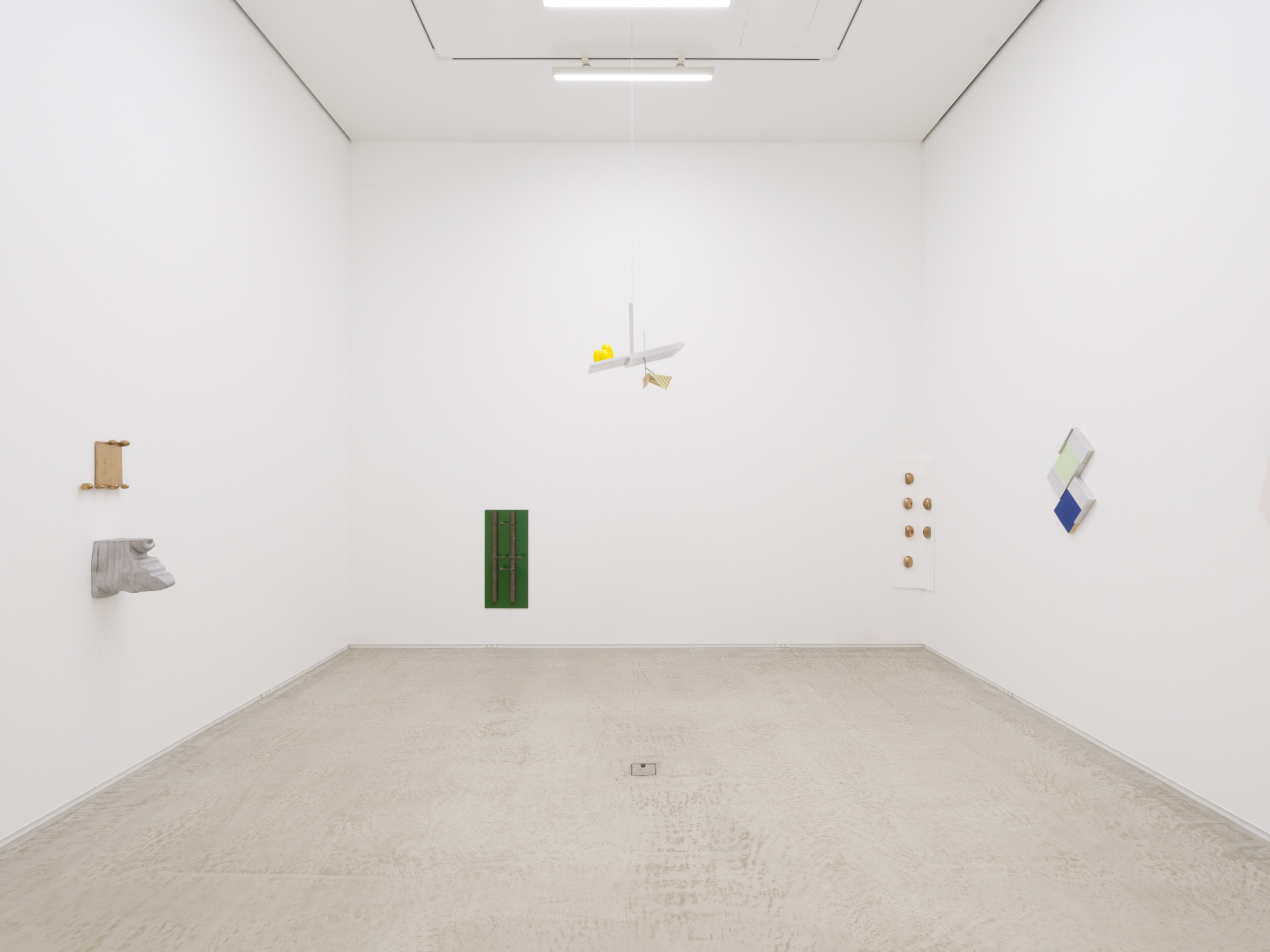
Opened in 2006, Misako & Rosen represents Japanese and international artists whose practices take a critical approach to the contemporary world without shying away from humor.
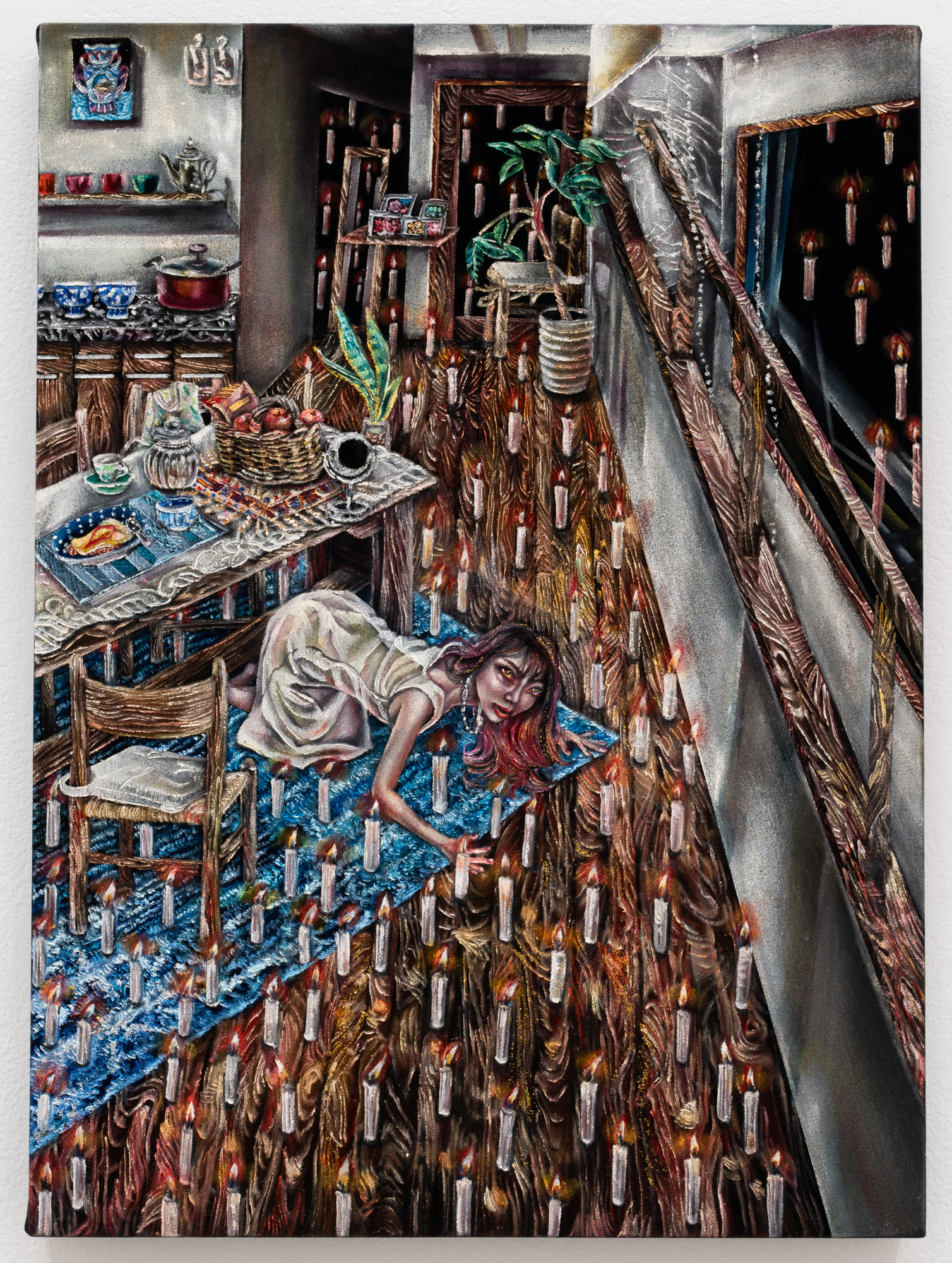
Natsuko Tanihara carries forward the lineage of “dark paintings” in Japan’s modern art history. Tanihara is known for her oil-on-velvet paintings depicting dreamlike visions of the dark corners of her own upbringing, humans being overpowered by lower life-forms, senseless violence, and the end of the world. She renders these scenes in vivid color through obsessively detailed brushstrokes, while the velvet support absorbs light to produce a jet-black ground that profoundly underpins her mysterious world. Tanihara has also expanded her practice to making stage designs for bunraku puppet theater and the Edo string puppet theater. This exhibition presents a comprehensive overview of her concept artwork for the bunraku production Nakanoshima Bunraku, for which she served as art director in 2024 and 2025.
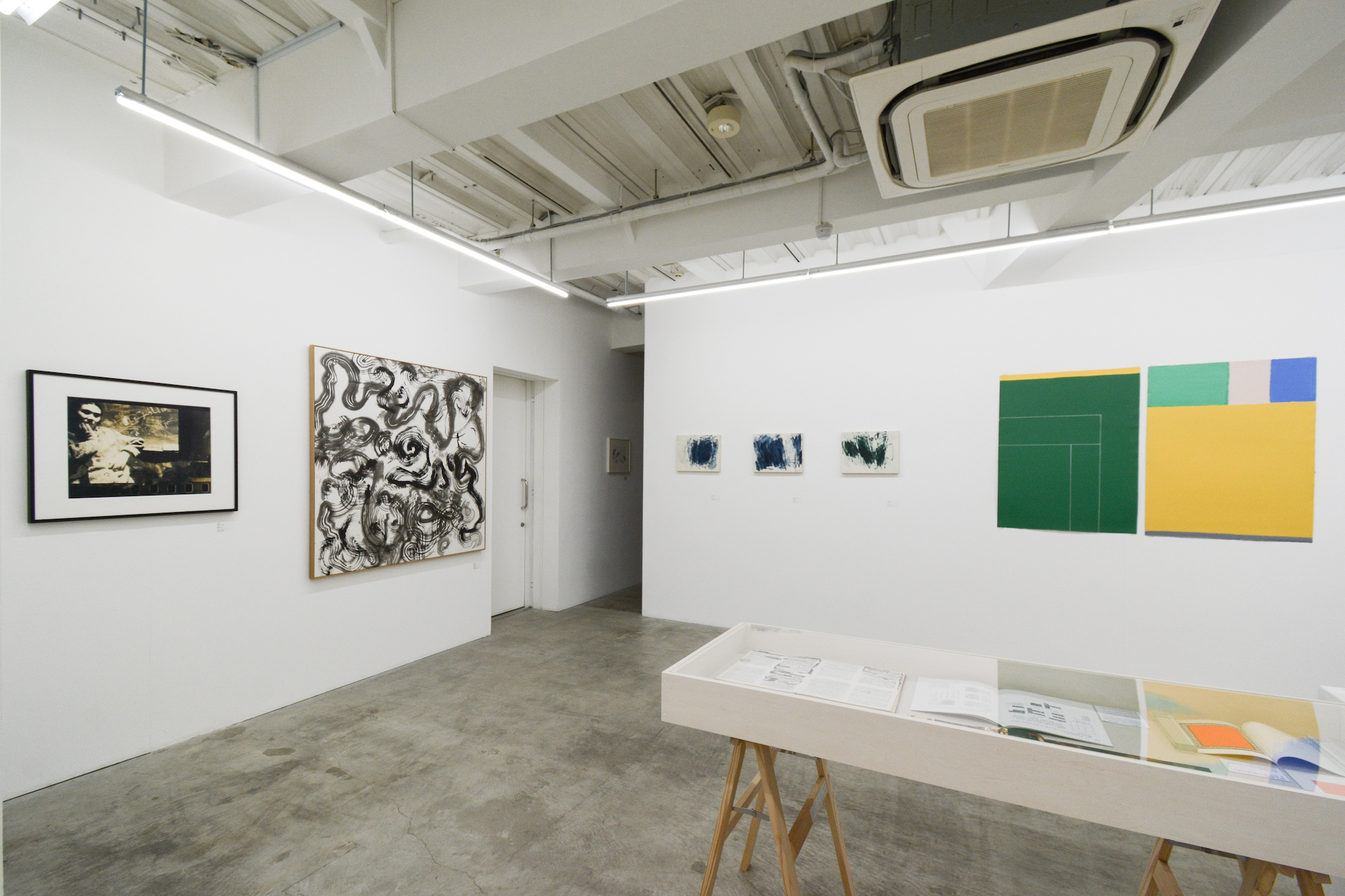
MEM (Multiply Encoded Messages) was founded in Osaka in 1997 and moved to Tokyo in 2010. The gallery serves as an intersectional zone between artists and the public. It is a collaborative arena where experimental projects and artworks are conceived and exhibited, and where the multiplication of encoded messages can inspire new thinking.
Initially, MEM represented established artists who emerged in the 1980s in the Kansai region and were working in new media, such as video and photography, including Tomoaki Ishihara, Yoshio Kitayama, Chie Matsui, Kimiyo Mishima, and Yasumasa Morimura. Upon relocating to Tokyo, the gallery extended its program to add emerging artists, such as Ayano Sudo and Natsuko Tanihara. It also strengthened its focus on photography by organizing exhibitions for Antoine d'Agata, Ken Kitano, Katsumi Omori, and other contemporary photographers.
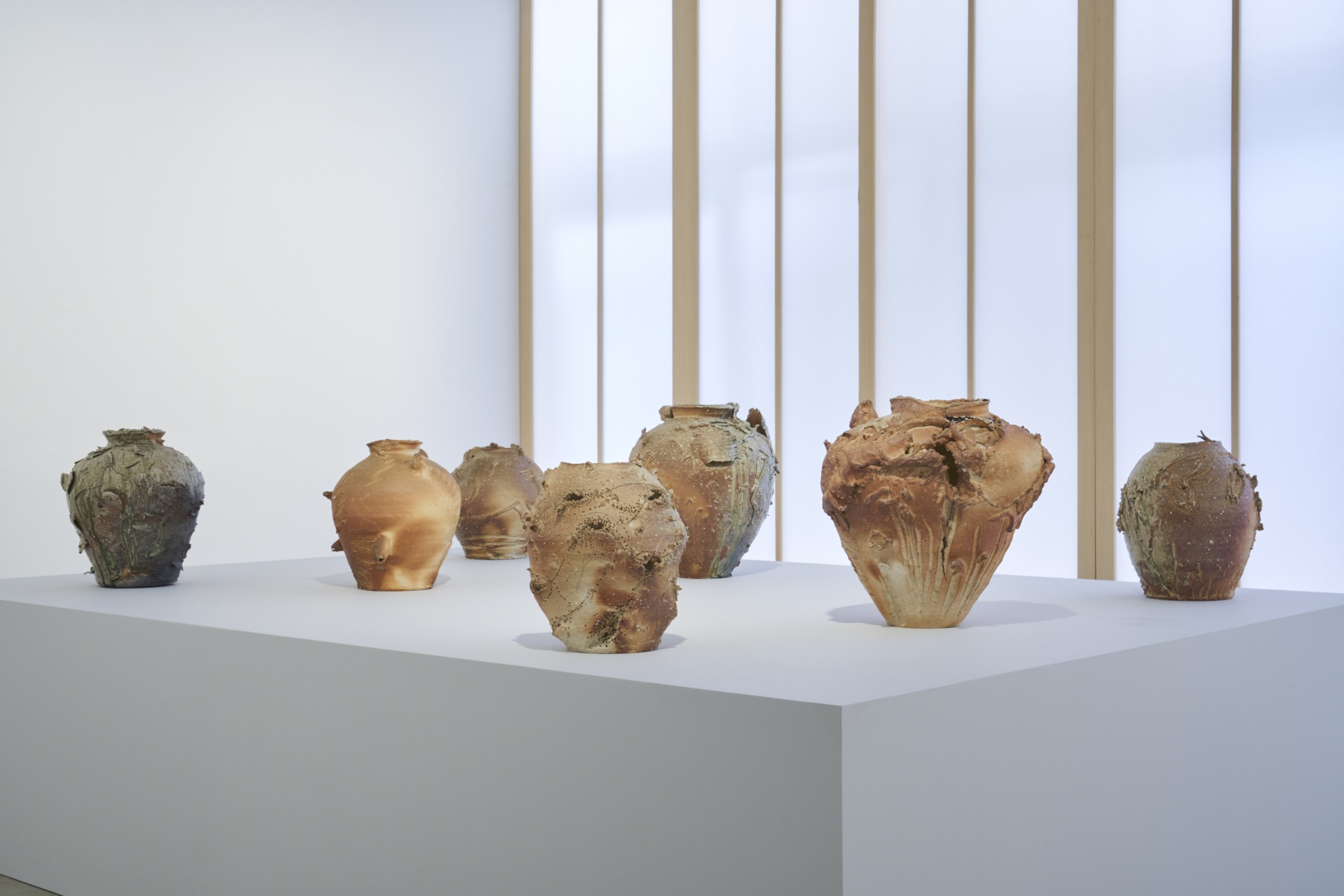
Fergus McCaffrey Tokyo is proud to present our first exhibition with the renowned Spanish artist Miquel Barceló. The exhibition features 14 works produced in 2023 in collaboration with ceramic artist Kazuya Furutani. Barcelóʼs work exhibits a raw and rugged expression that captures the immediacy of gesture, addressing timeless and universal human concerns with the cycle of life, the wonder of nature, the presence of myth, and the meaning of human existence. Traveling extensively in Africa and Asia since his youth, he has studied and learned from ancient traditions such as Dogon in Mali and Jomon in Japan; with this knowledge, he has established his unique style in painting, ceramic, and sculpture which demonstrates a rugged authority and materiality. Given Barcelóʼs intense and prolific production of ceramics, an encounter with the rich traditions of Japanese pottery was a natural extension of his practice, and a post-pandemic meeting with the renowned Shigaraki potter Kazuya Furutani opened the door to Barcelóʼs engagement with that 800-year-old ceramic tradition. Working together in the studio, Barceló and Furutani executed more than 40 hand-coiled vessels and flat panel works in which Furutani would provide traditional Shigaraki forms for Barceló to transform before the clay dried or became too brittle. The works were then subject to the unpredictable alchemical transformation of traditional Shigaraki firing, overseen by Furutani.
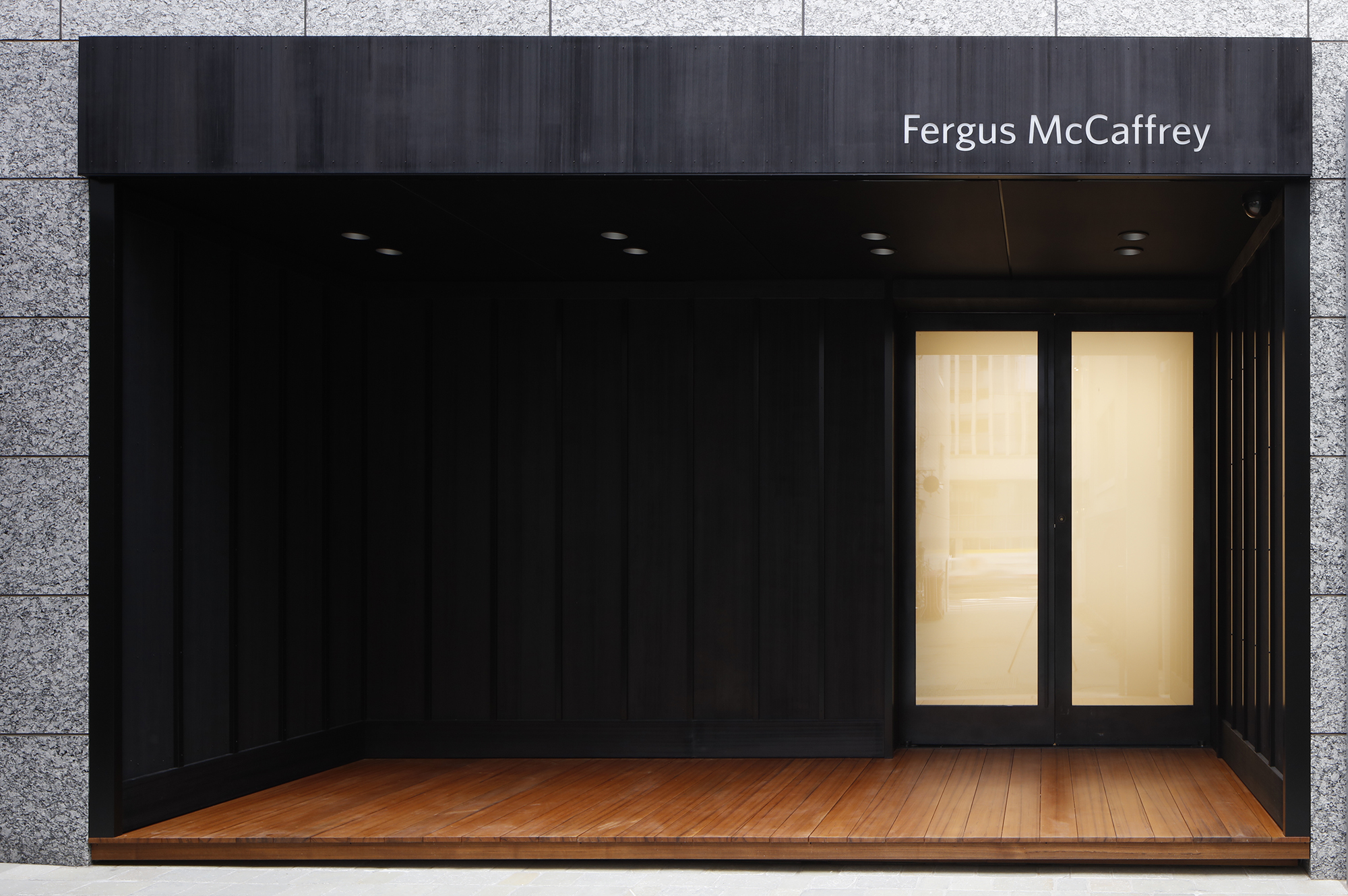
Founded in 2006, Fergus McCaffrey is internationally recognized for its promotion of postwar and contemporary art from Japan, Europe, and the United States. The gallery runs a multifaceted program and represents 24 artists and estates worldwide.
Fergus McCaffrey has locations in Tokyo, New York, and St. Barth. The gallery opened its Tokyo outpost in March 2018 with a show of paintings by Robert Ryman and has since exhibited such artists as Matthew Barney, Jasper Johns, Shigeko Kubota, Carolee Schneemann, Richard Serra, Kazuo Shiraga, and Min Tanaka.
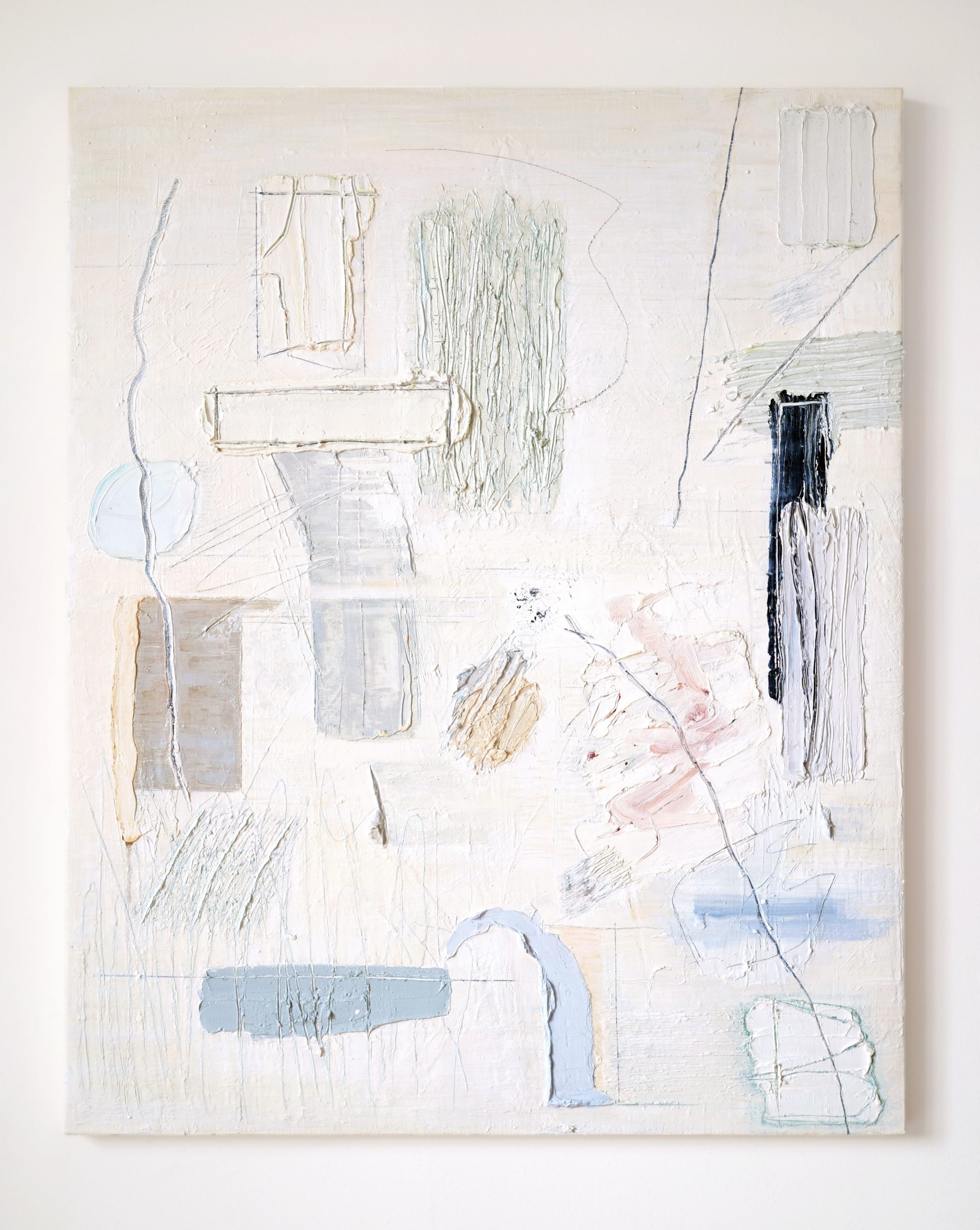
Takero Kano currently lives and works in Tokyo. Kano studied architecture before beginning to paint on his own. Although the artist’s paintings initially appear abstract, they are based on observations of concrete objects, such as plants, spaces, and even hand wrinkles. He adds a unique spin on these subjects through his use of color, bold composition, and brushwork to conjure emotions, memories, and the passage of time itself. “Crepuscular” is Kano’s first solo exhibition with the gallery.
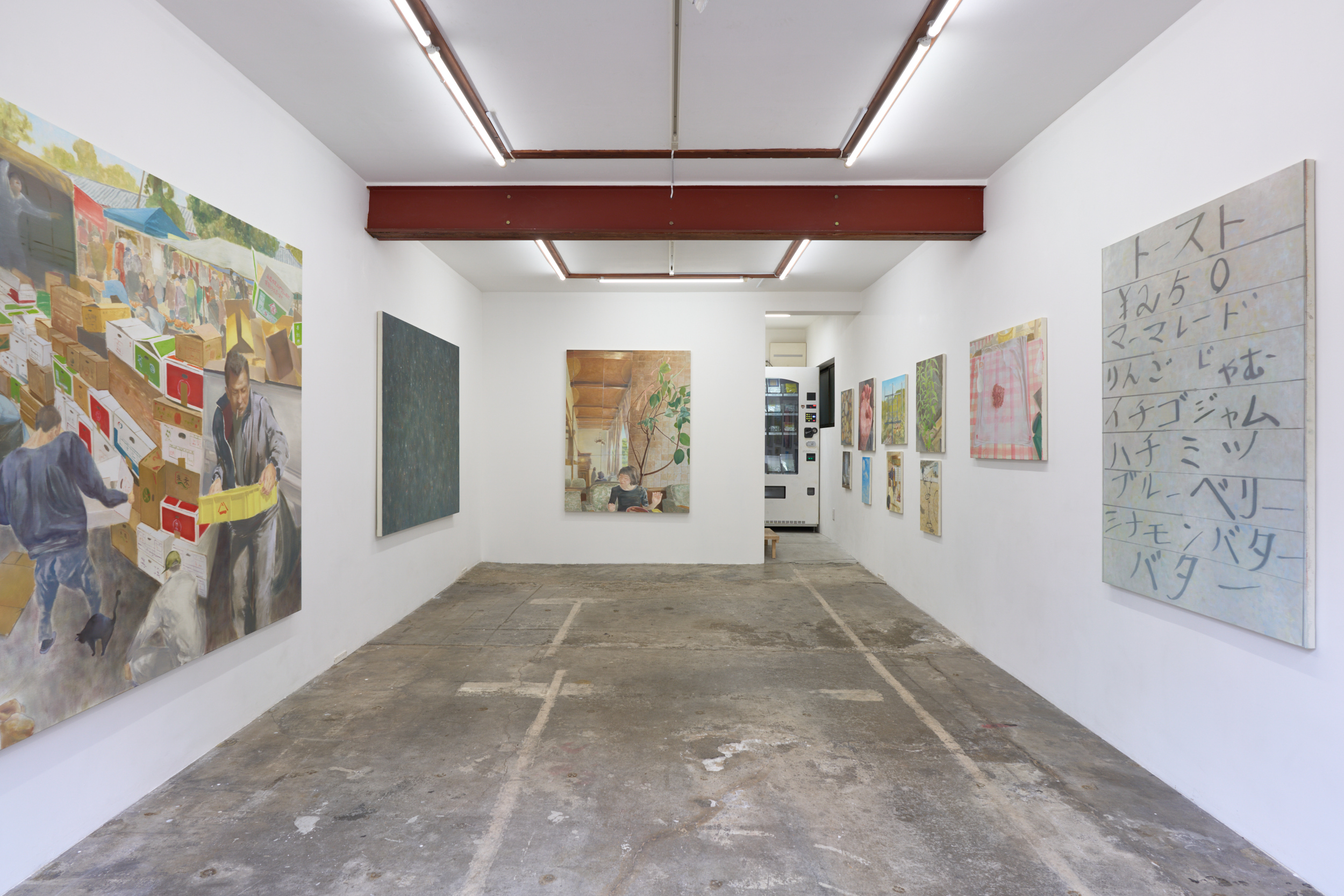
Leesaya was established in 2019 to nurture young artists who seek innovative modes of expression. The gallery collaborates with creators working across a wide range of practices to explore new possibilities of contemporary art.
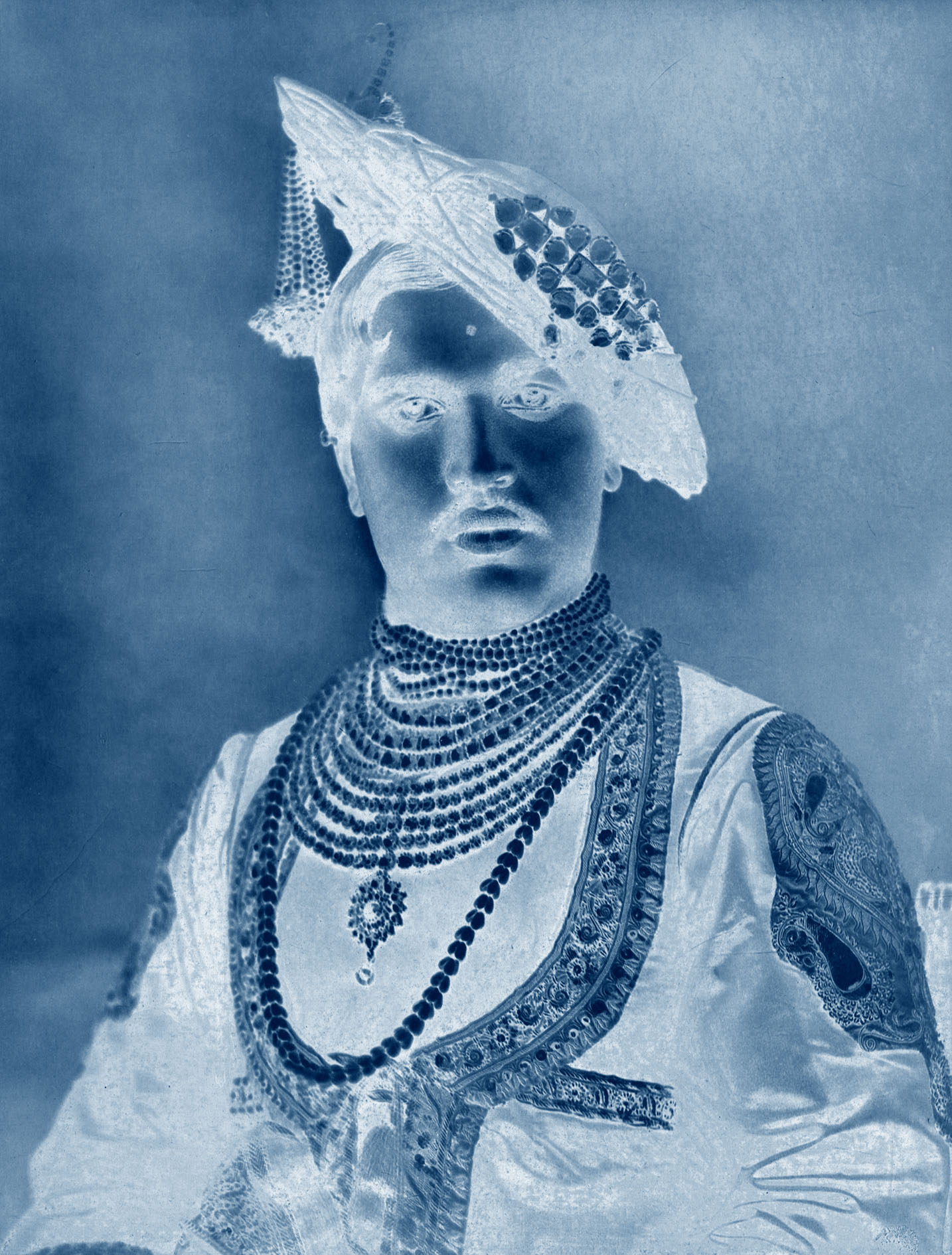
Organized as part of Gallery Koyanagi’s 30th anniversary programming, this solo exhibition is Thomas Ruff’s first at the gallery in 11 years. The celebrated German photographer studied under Bernd and Hilla Becher before pushing his practice beyond typology to further explore the potential of photography as a medium. The exhibition will give visitors a sense of Ruff’s trajectory through a selection of both historic and new works.
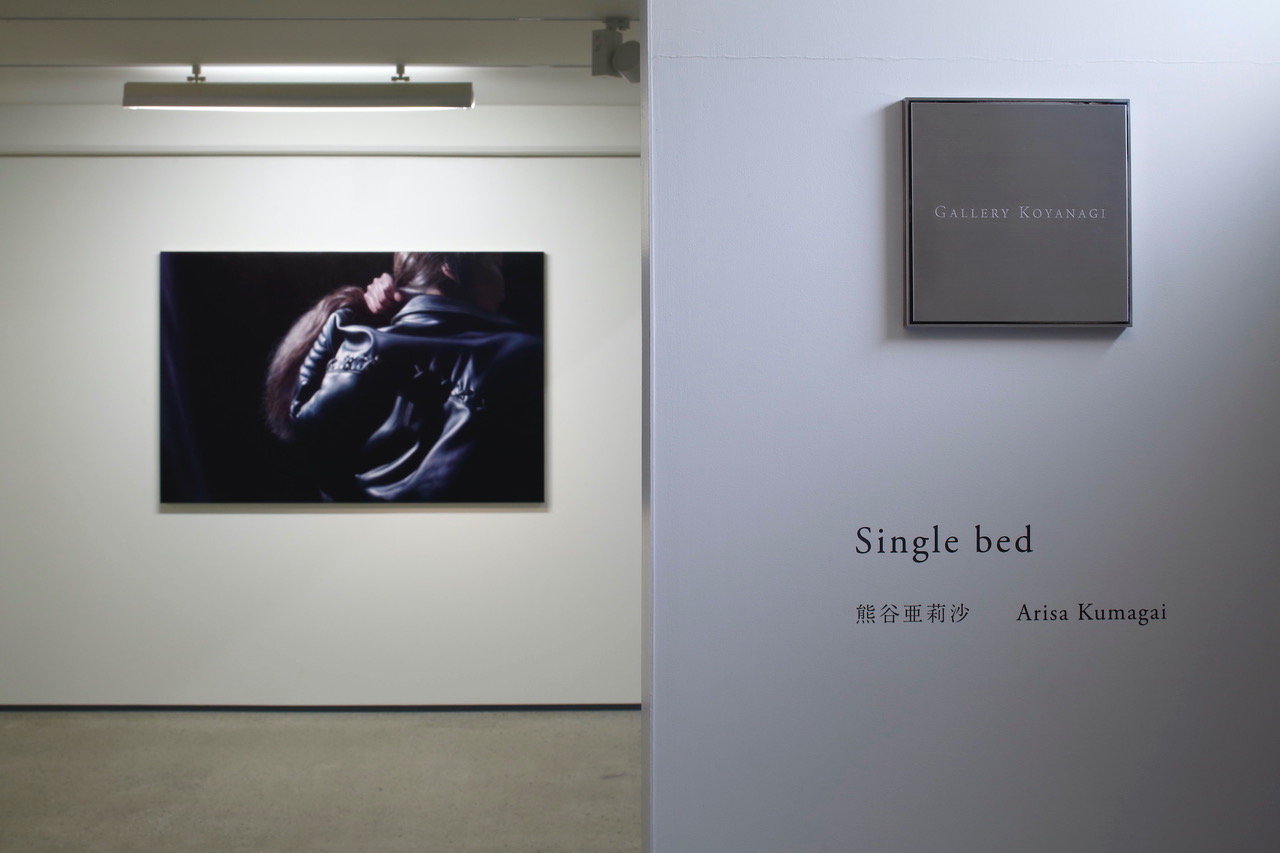
Gallery Koyanagi opened in Ginza in 1995 and relaunched with a new gallery space designed by Hiroshi Sugimoto in 2016. Gallery Koyanagi represents Japanese and international contemporary artists including Michaël Borremans, Sophie Calle, Marlene Dumas, Mark Manders, Christian Marclay, Thomas Ruff, Yoshihiro Suda, Hiroshi Sugimoto, and Tabaimo.
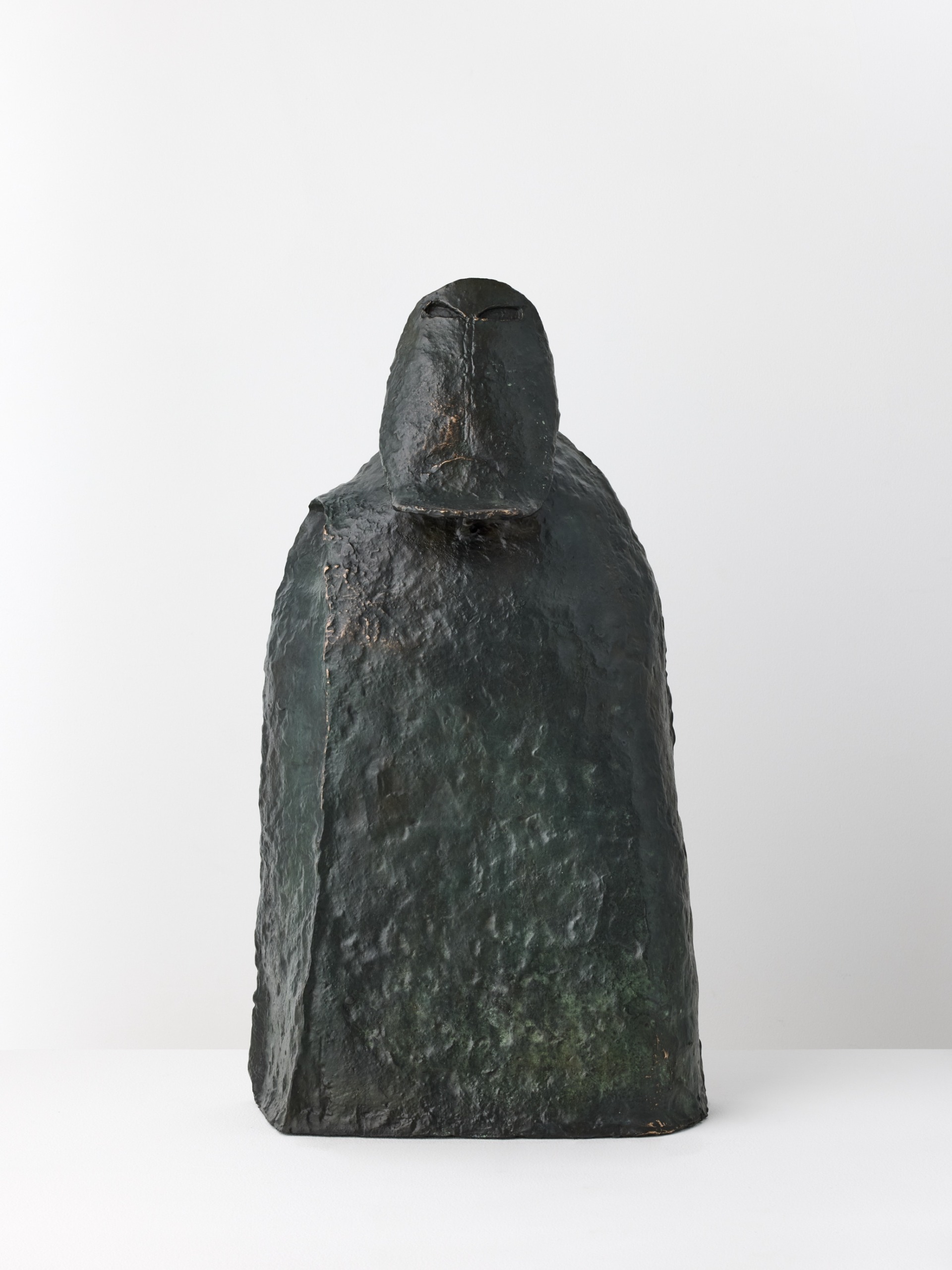
Keiji Ito, who turns 90 this year, continues to produce work across a wide array of genres, from ceramics and oil painting to watercolor and textile collages. After graduating from Musashino Art School (the current Musashino Art University) in 1958, he encountered the ceramic designer Sakuzo Hineno at the Gifu Prefectural Ceramics Research Institute. This meeting marked the beginning of his serious engagement with ceramics. Since then he has moved fluidly from making ceramic forms to sculptural objects and beyond. Throughout, his work has been driven by a sincere vision of the human spirit, daily life, and society. Ito, who is still based in his hometown of Toki in Gifu Prefecture, has long served as an inspiration for younger artists. Earlier this year he was celebrated in a solo exhibition at the Museum of Modern Ceramic Art, Gifu, “Keiji Ito: Prayer—Now, the Future.” This exhibition will feature a selection of new and recent works.
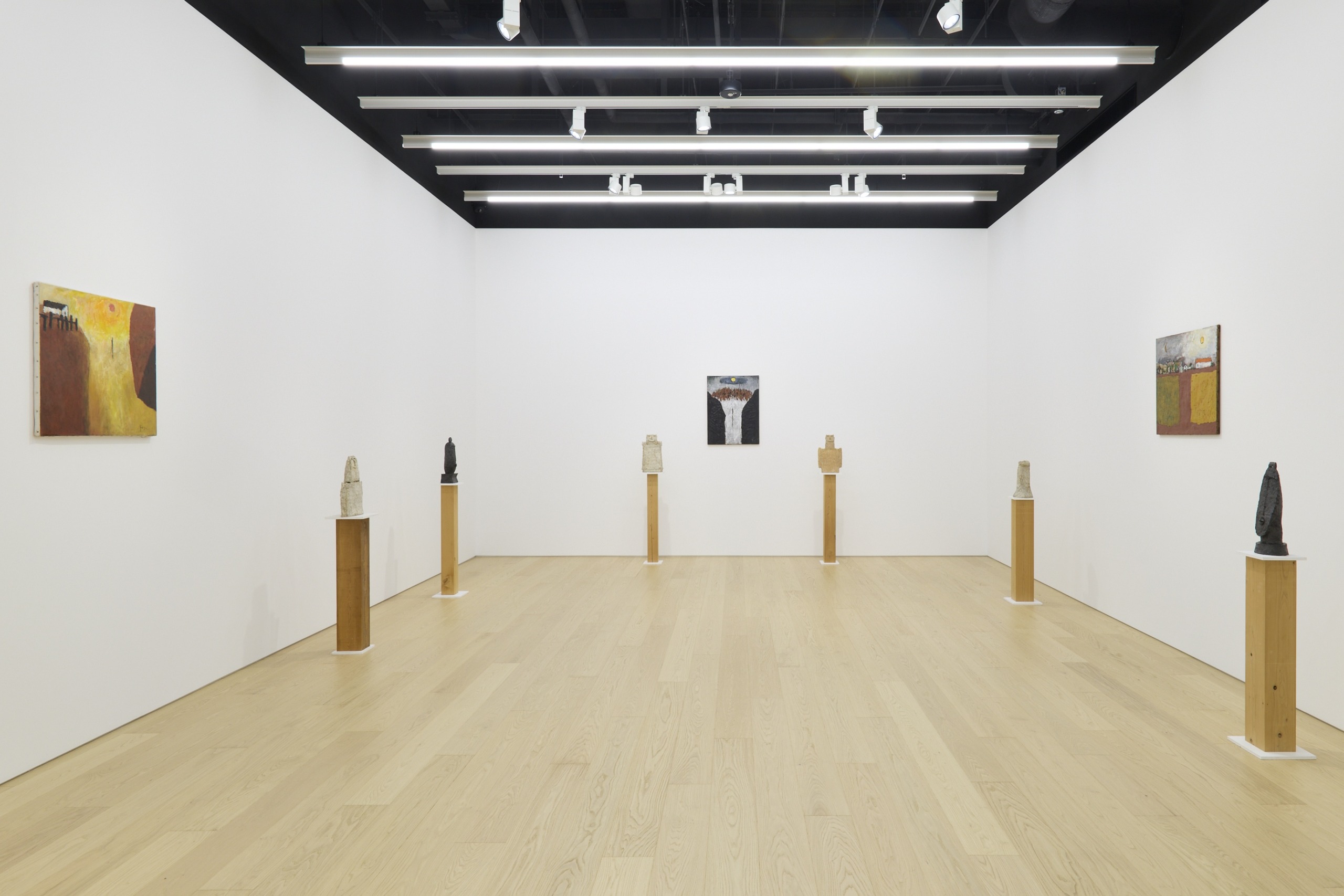
Tomio Koyama Gallery was founded in Tokyo’s Sagacho district in 1996 and has since established itself as a cornerstone of Japan’s contemporary art scene. Dedicated to introducing new perspectives to the art market, the gallery represents a diverse, multigenerational roster of Japanese and international artists, including Kishio Suga, Mika Ninagawa, Hiroshi Sugito, and Richard Tuttle, and also features contemporary ceramics in its program. From the start Tomio Koyama Gallery has maintained an active presence at international art fairs. The gallery has locations in Roppongi, Tennozu, and Kyobashi in Tokyo and a branch in Maebashi, Gunma Prefecture.
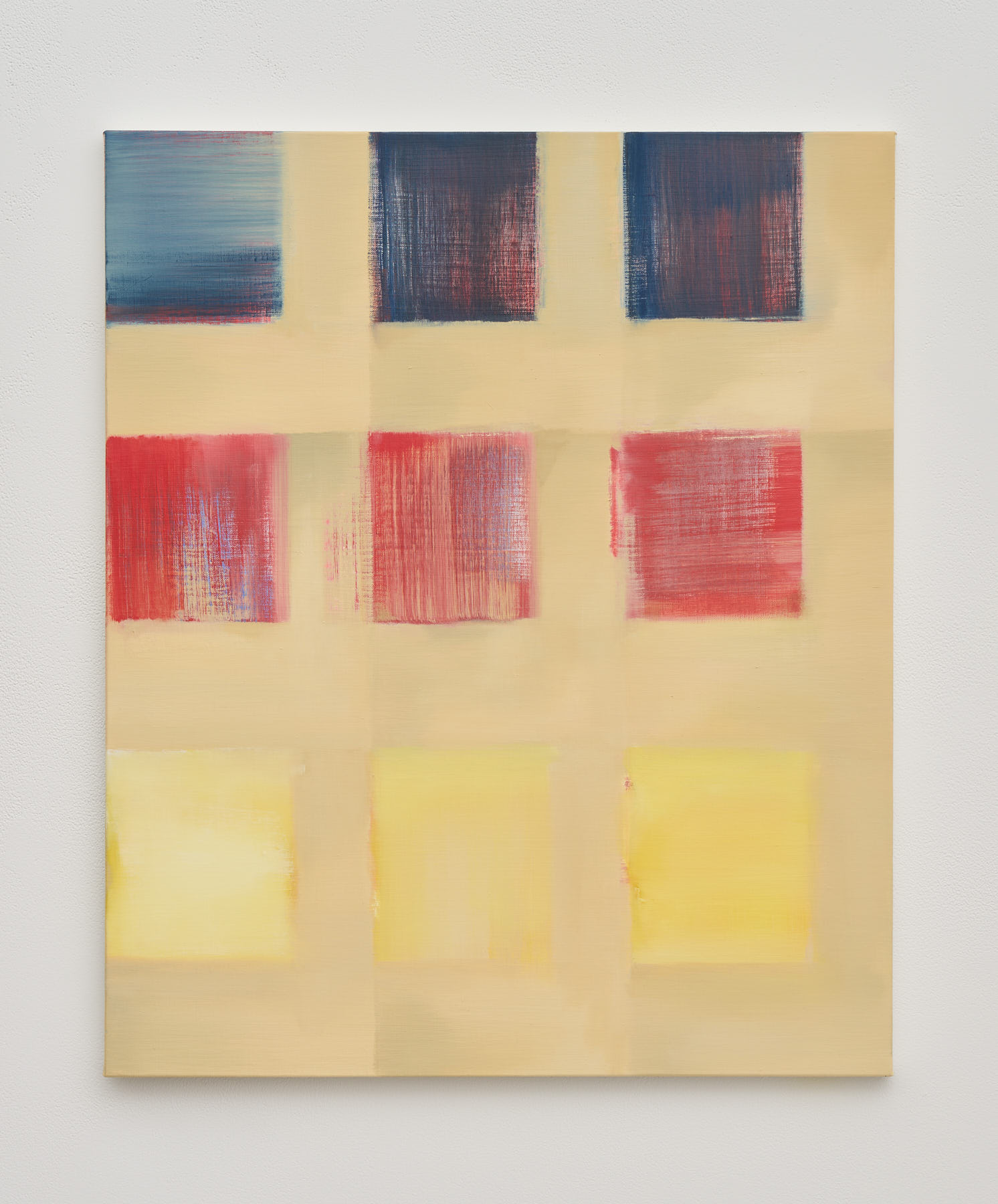
This exhibition examines the relationship between real-world phenomena and painting while also reconsidering the significance of abstract painting. Reina Mikame uses the formal elements of line, shape, and color to reconstruct observable phenomena such as the refraction and reflection of light or structural misalignments and overlaps. These paintings create orders and relations in two-dimensional space by focusing on the structures of seeing and the formation of images rather than relying on emotional reactions or impressions. In this way, the painted image responds to real-world phenomena while simultaneously manifesting an autonomous visual system. Through abstract painting Mikame investigates the visual environment and information that fill our daily lives.
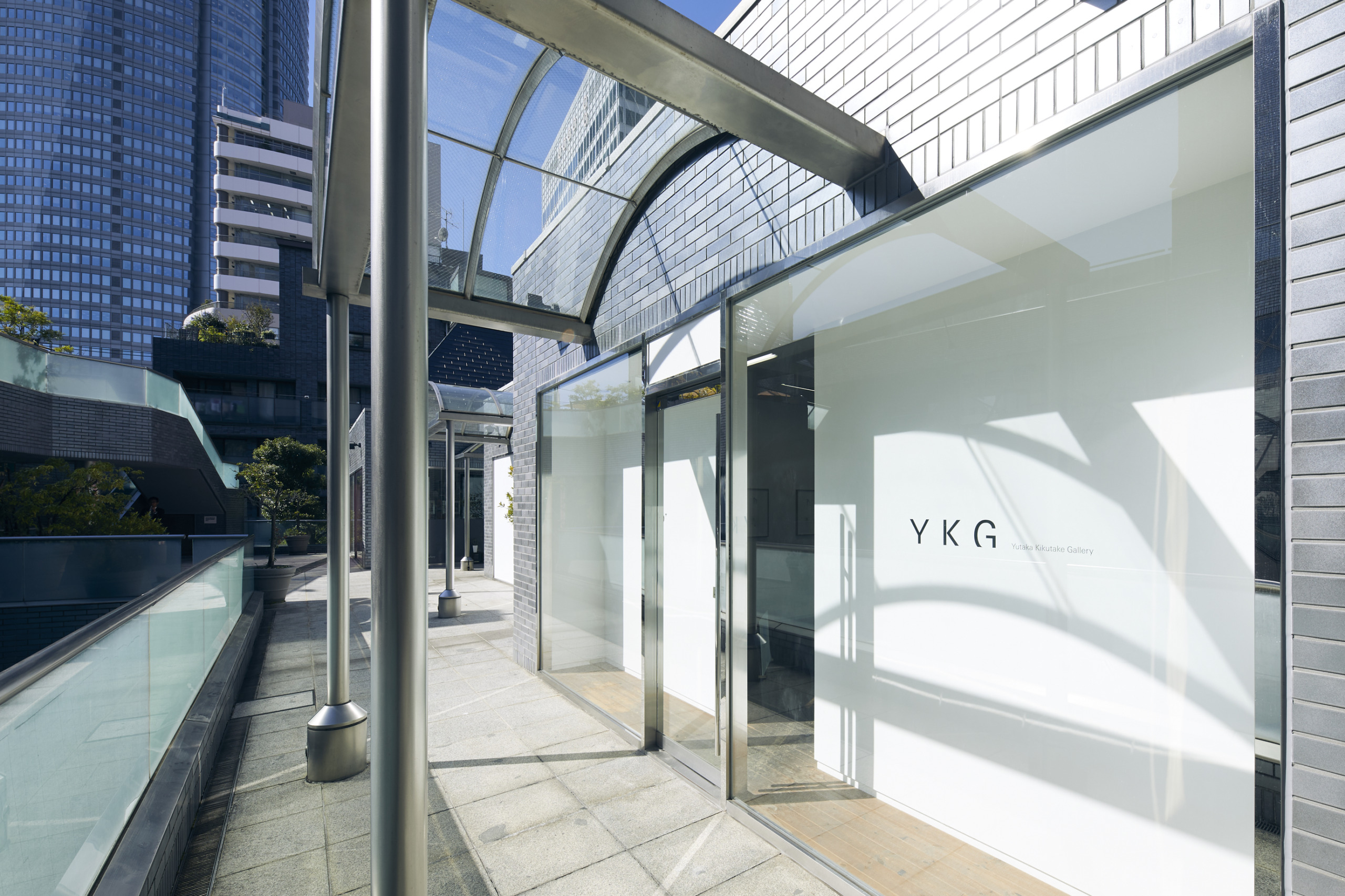
Yutaka Kikutake Gallery opened in Roppongi in 2015. The gallery is committed to adding to the diversity of contemporary art by supporting innovative modes of expression. Its exhibition program features Japanese and international artists who work in a broad range of mediums, from painting and photography to sculpture and film.
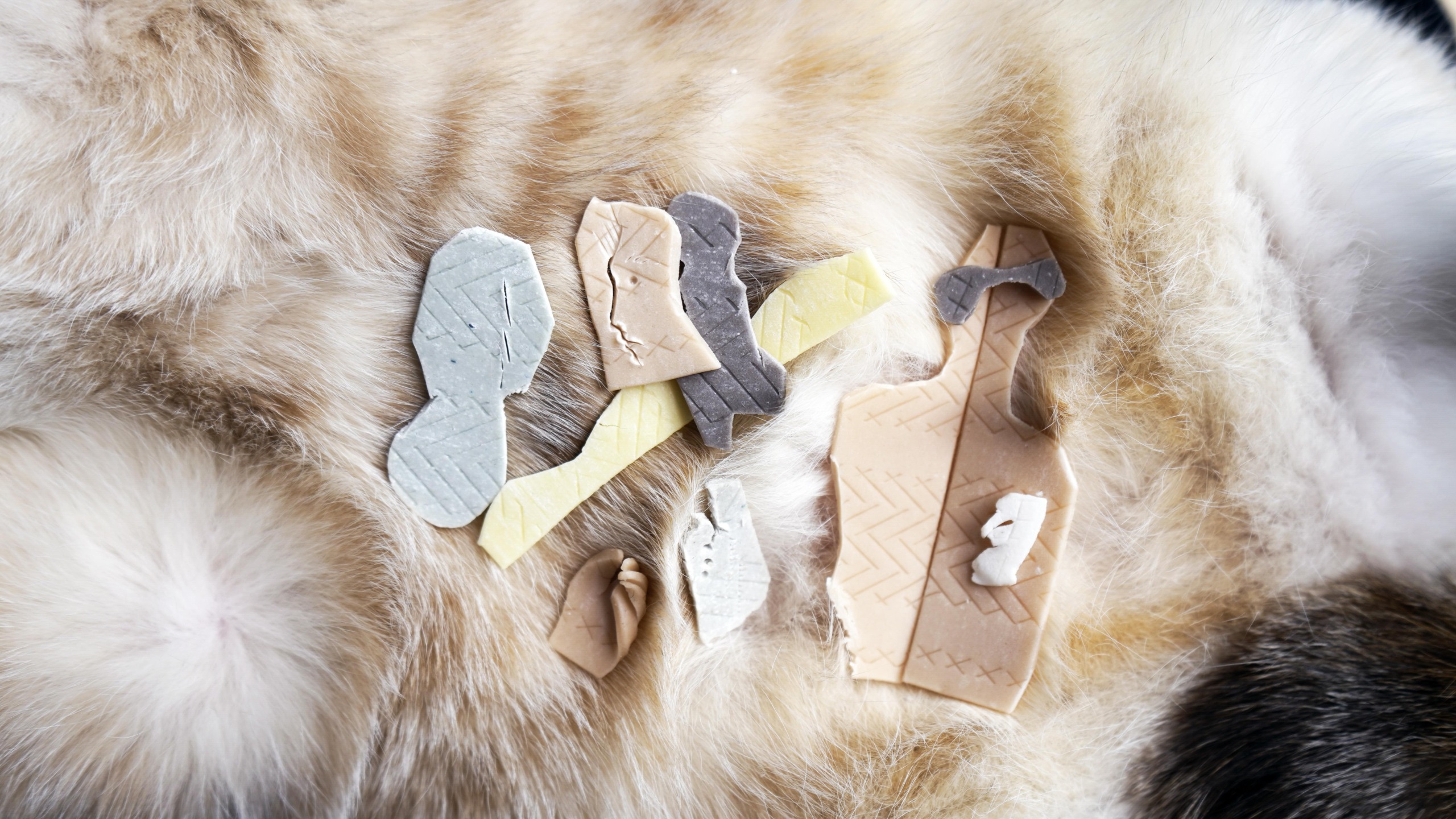
After occupying a distinctive warehouse space in Komagome for many years, Kayokoyuki is relocating to a new base in Roppongi. Providing a sneak peak of the venue before it undergoes renovation, this special exhibition offers a glimpse into the gallery’s upcoming program and the dialogues shaping its next chapter through work by 13 artists: Nobuya Hitsuda, Kenji Ide, Yohei Imamura, Noriko Kamikubo, Kazuki Matsushita, Kate Newby, Yutaka Nozawa, Ayako Ohno, Emi Otaguro, Michi Suwa, Daichi Takagi, Masanori Tomita, and Munehiro Yoshimura.
The gallery will hold an opening reception on Wednesday, November 5, from 5pm to 9pm.
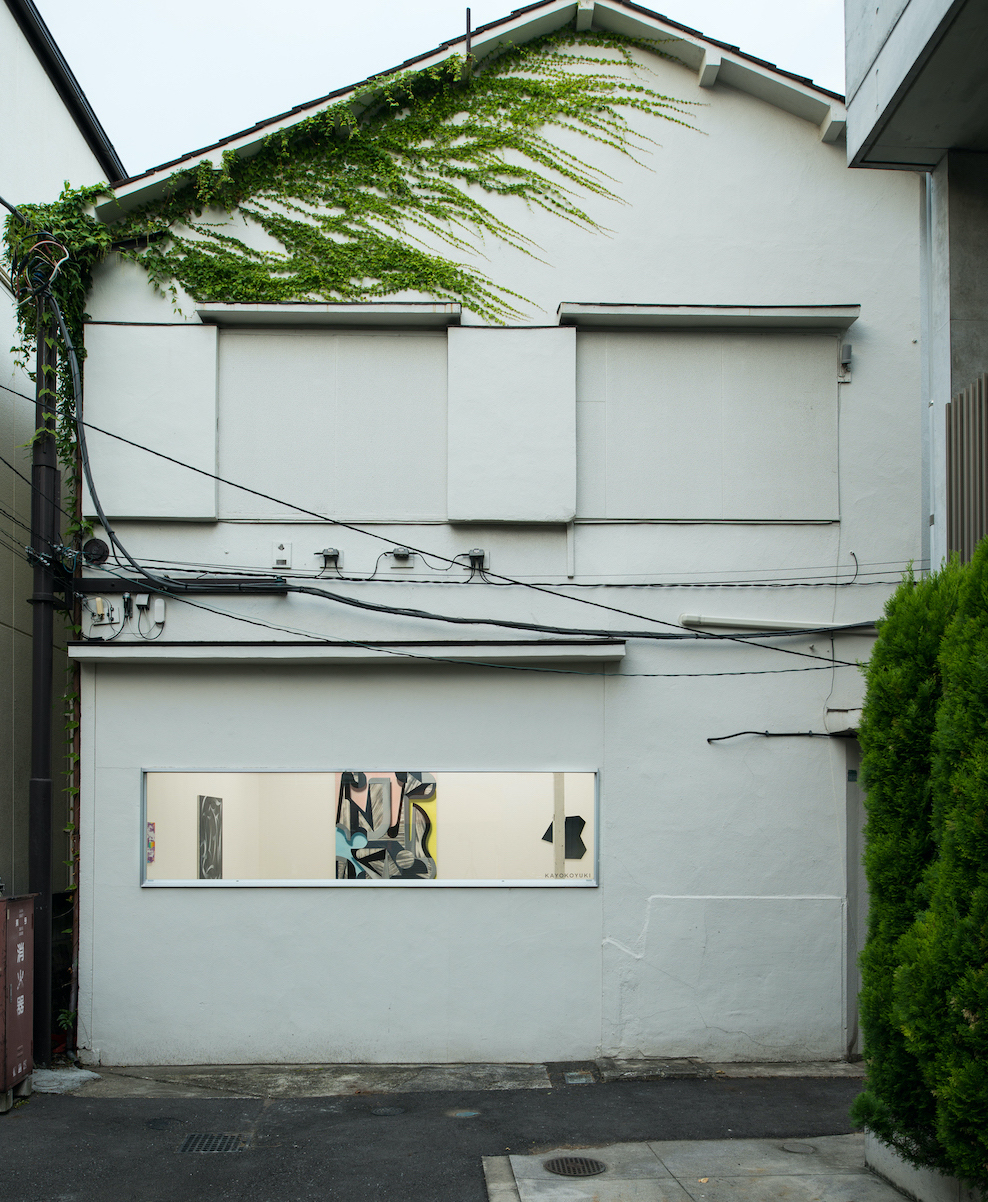
Kayokoyuki started out as an office and viewing room in 2011 before officially launching as a gallery in 2013. The program features artists who use ephemeral imagery derived from objects in their everyday lives to reflect on their experiences and create works that propose new ways of coexisting at a time of increasing social polarization.
Represented artists include Nobuya Hitsuda, Kenji Ide, Yohei Imamura, Shiho Kagabu, Kazuki Matsushita, Kate Newby, Yutaka Nozawa, Ayako Ohno, Emi Otaguro, Michi Suwa, Daichi Takagi, Masanori Tomita, and Evelyn Taocheng Wang.
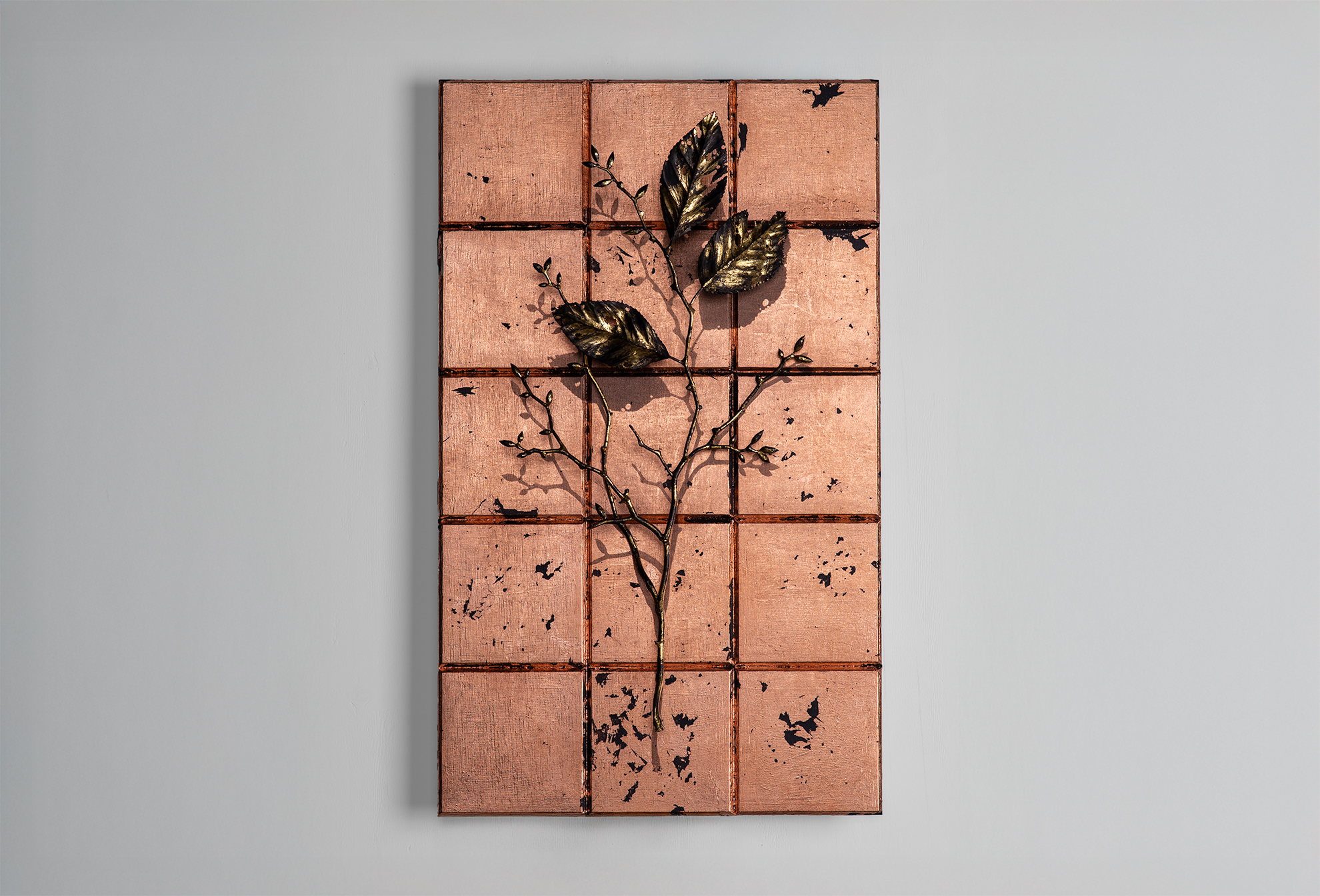
Kanji Hasegawa’s mixed-media art practice is influenced by punk and Beat culture as well as his training in Zen Buddhism, which he undertook after graduating with an MFA from Tokyo University of the Arts in 2016. He makes conceptually driven works that question the values of contemporary culture and society by intervening in and reconfiguring conventional modes of representation while still maintaining a degree of sculptural realism. This exhibition, Hasegawa’s first at the gallery in two years, will feature a new series of large-scale wood carvings.
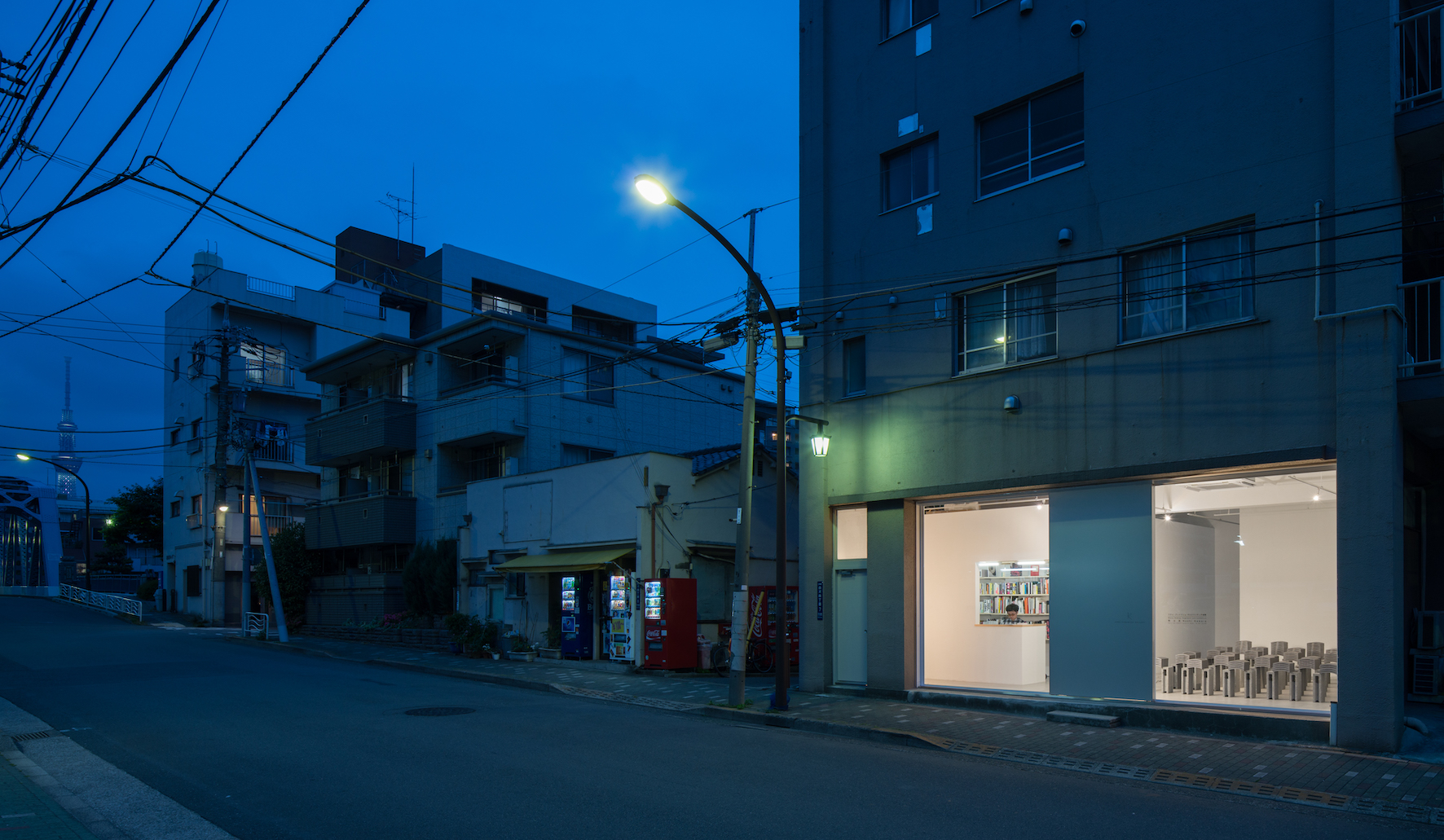
Kana Kawanishi Gallery was founded in 2015 to showcase Japanese and international artists who explore aspects of society through visual media. The gallery is located in Kiyosumi-Shirakawa, a five-minute walk from the Museum of Contemporary Art Tokyo. Its satellite space, Kana Kawanishi Photography, which focuses on contemporary photography, opened in 2018 in Nishi-Azabu, near the Mori Art Museum. Both spaces were designed by Yuko Nagayama & Associates.
Kana Kawanishi Gallery has placed works by its artists in major public collections, including the British Museum, London; the 21st Century Museum of Contemporary Art, Kanazawa; the Museum of Contemporary Art Tokyo; and the Tokyo Photographic Art Museum. The gallery also regularly participates in international art fairs, including NADA New York, photo basel, Photo London, and Unseen in Amsterdam. Kana Kawanishi Gallery was named a “power player” of the Tokyo art scene by Artnet News in 2022 and has previously been featured in stories in Artsy, the Asahi Shimbun, Bijutsu Techo, Blouin Artinfo, The Guardian, Forbes, Libération, and Monocle.
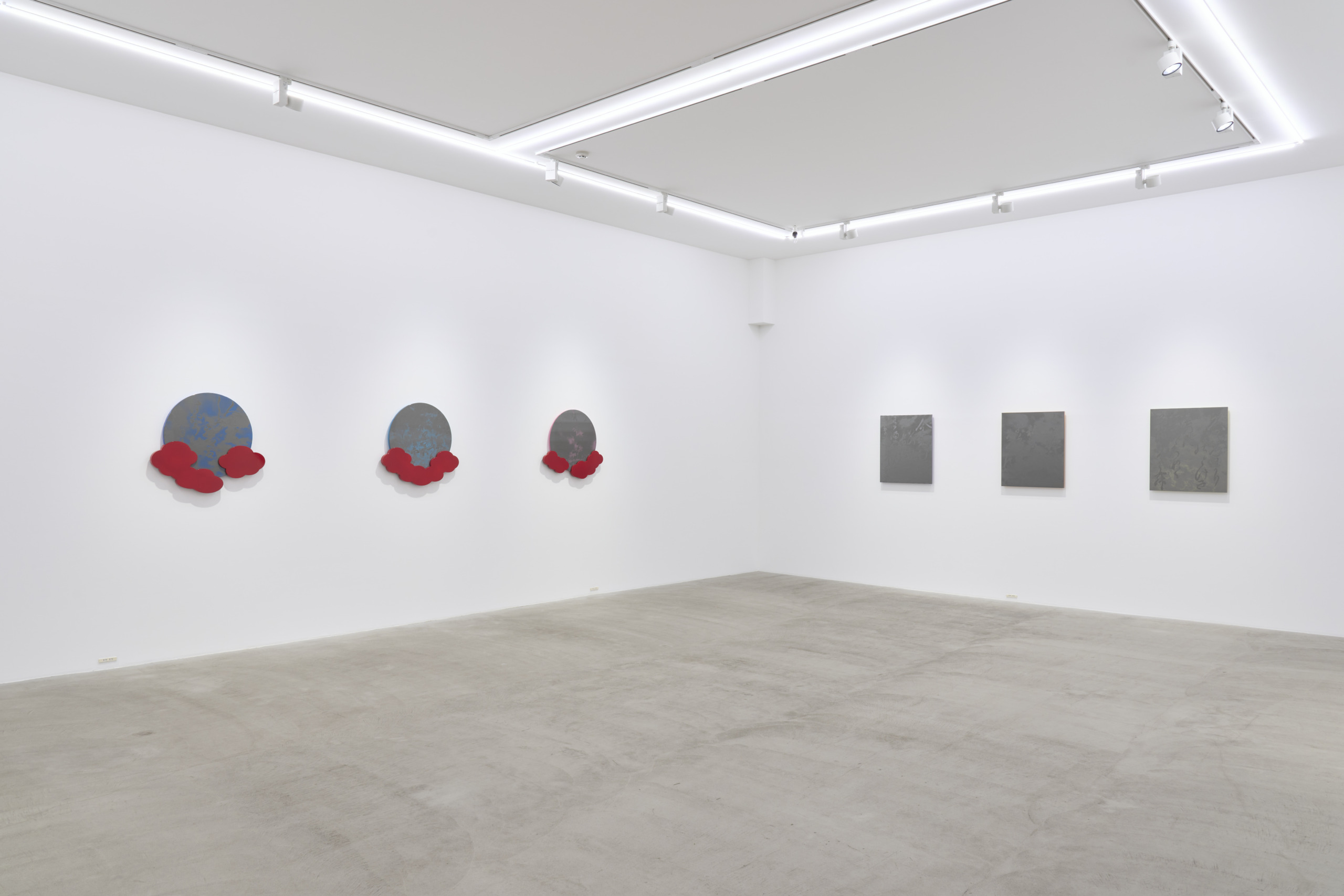
Noritaka Tatehana is known for making vividly colored paintings, sculptures, and objects that mix elements of traditional Japanese culture with a contemporary graphic sensibility. This exhibition wil feature a new series of works based on the theme of “mirrors” in ancient Japanese literature. Concurrently, Tatehana will exhibit his drawings for the first time at the gallery’s Kyobashi space.
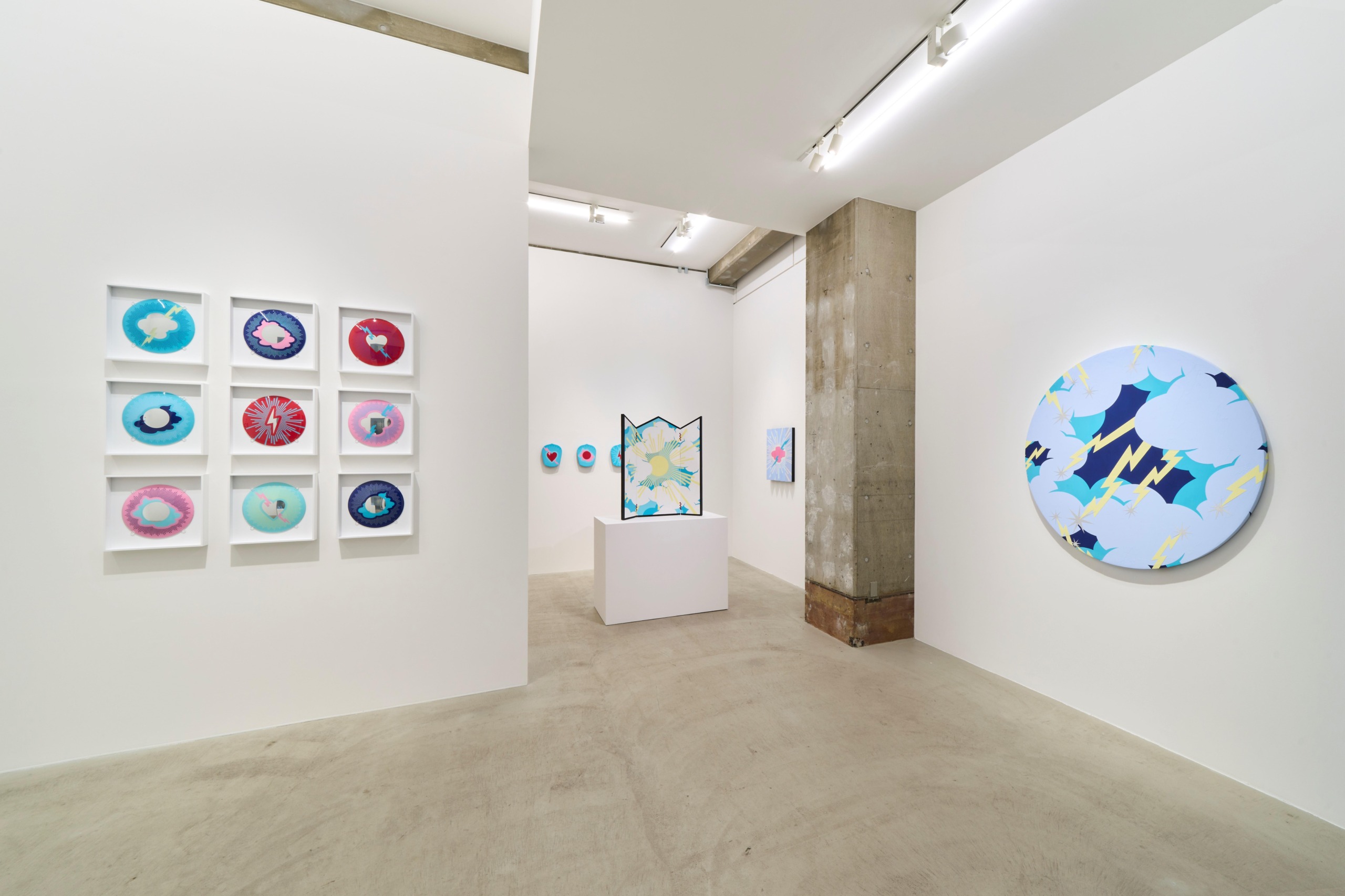
Kosaku Kanechika was founded in Tokyo in 2017. Part of a new generation of venues redefining the local art landscape, the gallery showcases work by Japanese artists who are active both nationally and internationally. Represented artists include Yutaka Aoki, Takuro Kuwata, Miwa Kyusetsu XIII, Junko Oki, Ataru Sato, Chikashi Suzuki, Yosuke Takeda, Noritaka Tatehana, and Hiroto Tomonaga. The program also features international artists, such as Dan McCarthy and Ruby Neri, whose innovative approaches to expression transcend medium and genre.
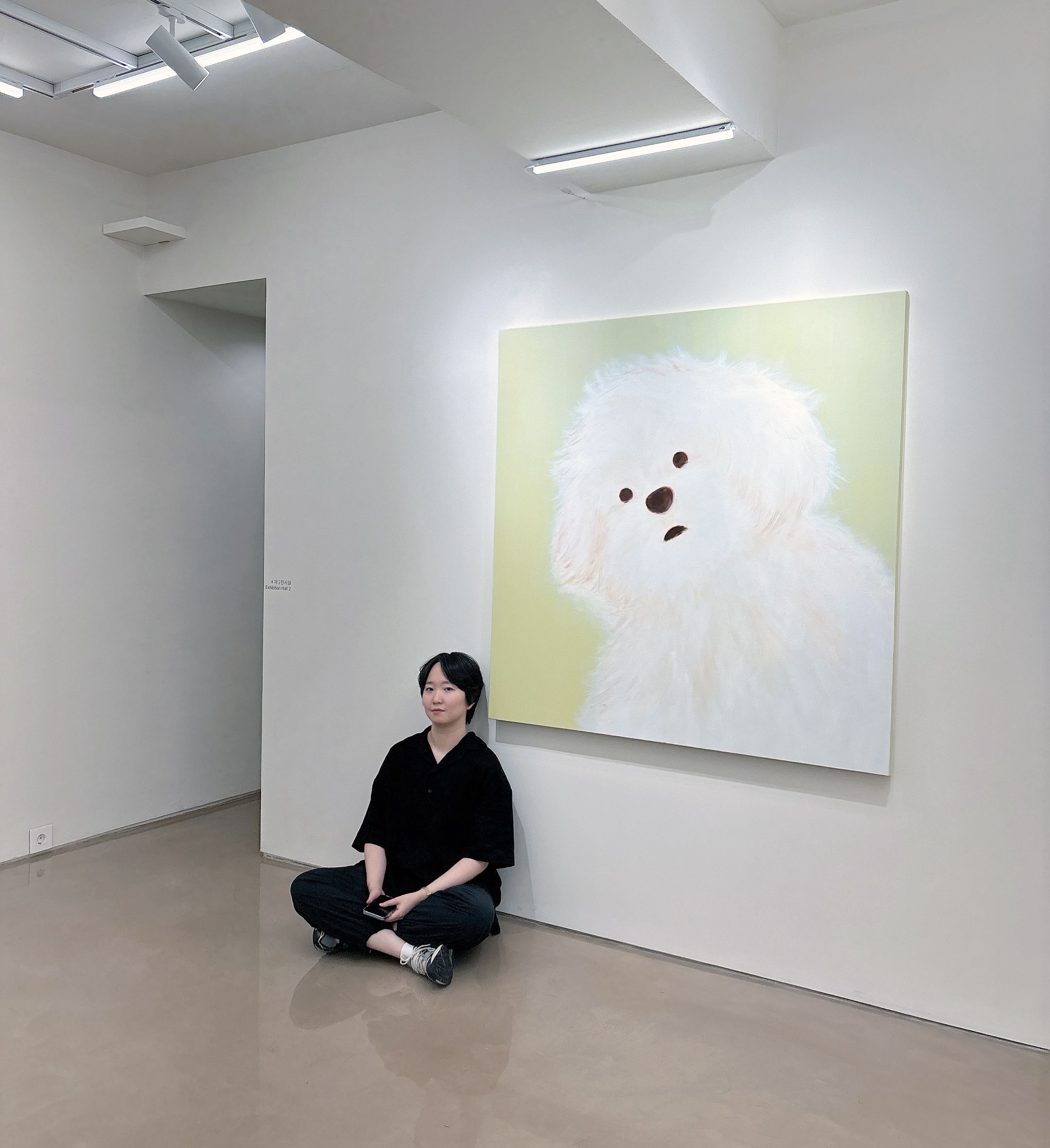
Korean artist yeye graduated from the animation course in the manga department of Kyoto Seika University and earned a master’s degree in manga from the same university. Based in Seoul and active across Asia, she is known for her body of work on her dog Moongé, a Maltese, whom she has depicted in drawings, paintings, croquis, and other mediums as well as books. Since Moongé’s death in early 2024 at the age of 15 yeye has recommitted herself to capturing the essence of her muse and companion, seeing herself reflected in the dog’s existence. This exhibition is the artist’s first at Kaikai Kiki Gallery.
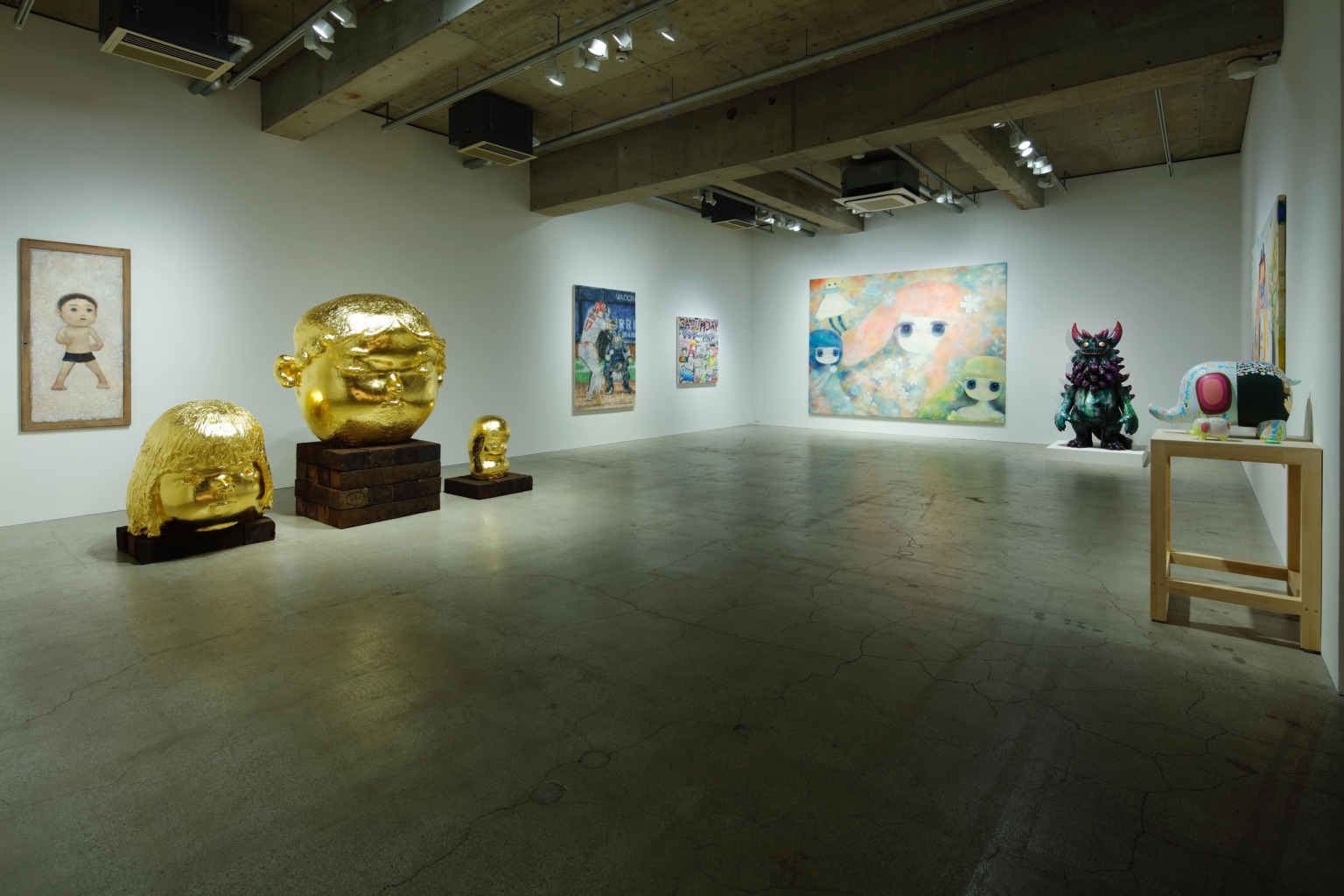
Takashi Murakami founded Kaikai Kiki Gallery in 2008 as a space for presenting the work of the artists he manages. The gallery seeks to imbue art with new social value and contribute to the development of the Japanese art scene as a whole through its activities. Represented artists include Chiho Aoshima, Emi Kuraya, Madsaki, ob, Otani Workshop, and Aya Takano, while international artists who have shown with the gallery in Tokyo include Kasing Lung and Futura.
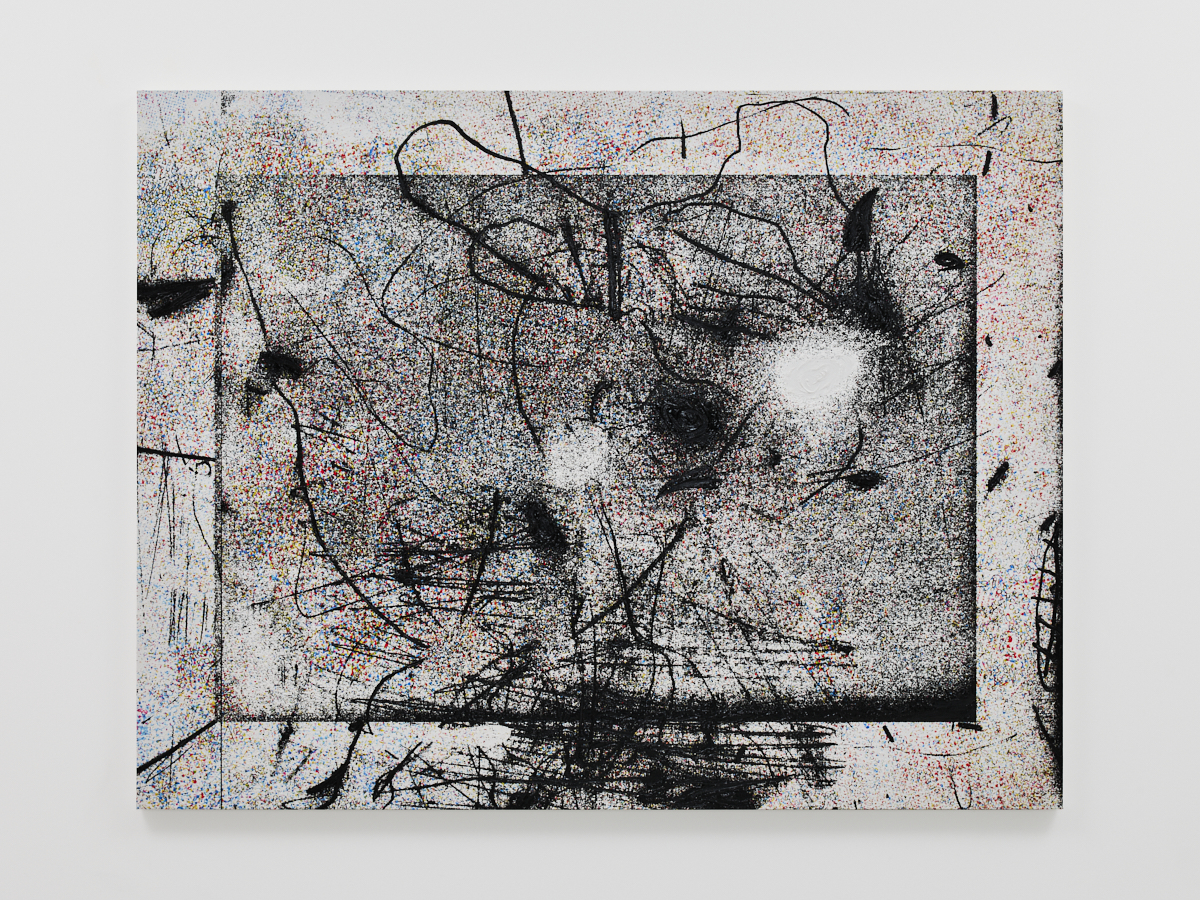
Taka Ishii Gallery presents an exhibition of new paintings by artist Makoto Saito.Makoto Saito creates portraits by digitally dissecting and reconstructing faces into intricate dot-matrix blueprints, which he then transfers onto canvas with paint and brush. Saito describes his process of arriving at an image by superimposing digital strata upon each other as “a journey in search of landscape.” Rendered in countless red, yellow, and blue halftone dots, Saito’s paintings can be understood as a transplantation of his own retina, composed of innumerable cone cells, onto the canvas. Viewers are not simply looking at a painting, but are gazing into the very retina through which Saito seeks out and discovers his landscapes. This exhibition presents four new large-scale works composed from fragmentary data drawn from numerous sources. The works are notable for incorporating layers of pencil drawings into their compositions, adding the physicality of drawing to Saito’s retinal landscapes.
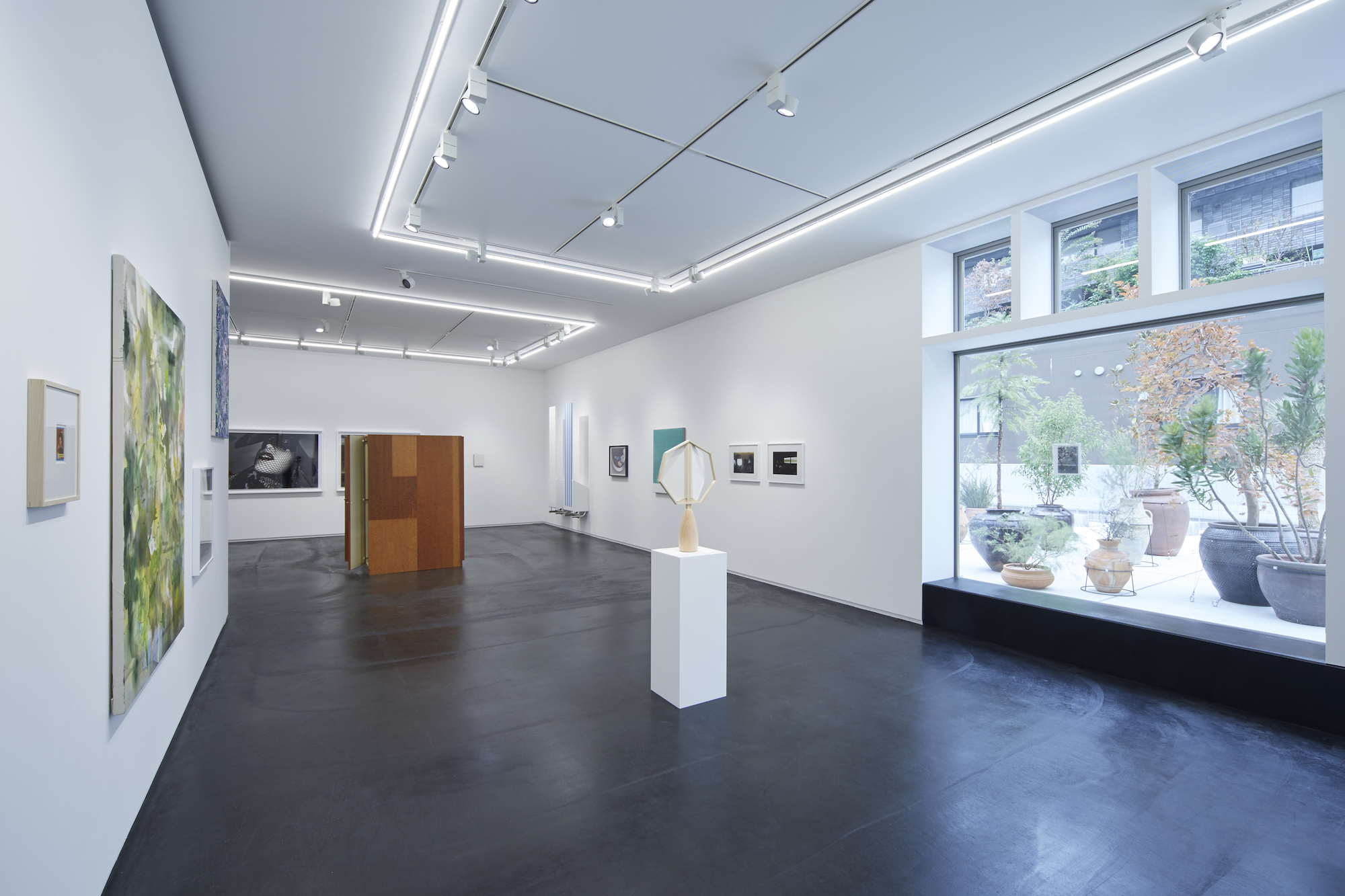
Since opening in 1994 Taka Ishii Gallery has developed an exhibition program that introduces international contemporary artists to Japan while providing a global platform for the country’s emerging artists and contemporary masters. While the gallery aesthetic is rooted in the photographic, the program is contemporary and represents artists working in a variety of media. It maintains an annual calendar of eight exhibitions and publishes catalogues and artist books. In addition to its primary exhibition space at complex665, Taka Ishii Gallery has a second venue in Roppongi, Taka Ishii Gallery Photography / Film, which focuses on pre- and postwar Japanese photography and film. In 2023 the gallery added branches in Kyoto and Maebashi for hosting collaborative projects with artists. In 2024 it opened its newest exhibition space in the Kyobashi area of Tokyo.
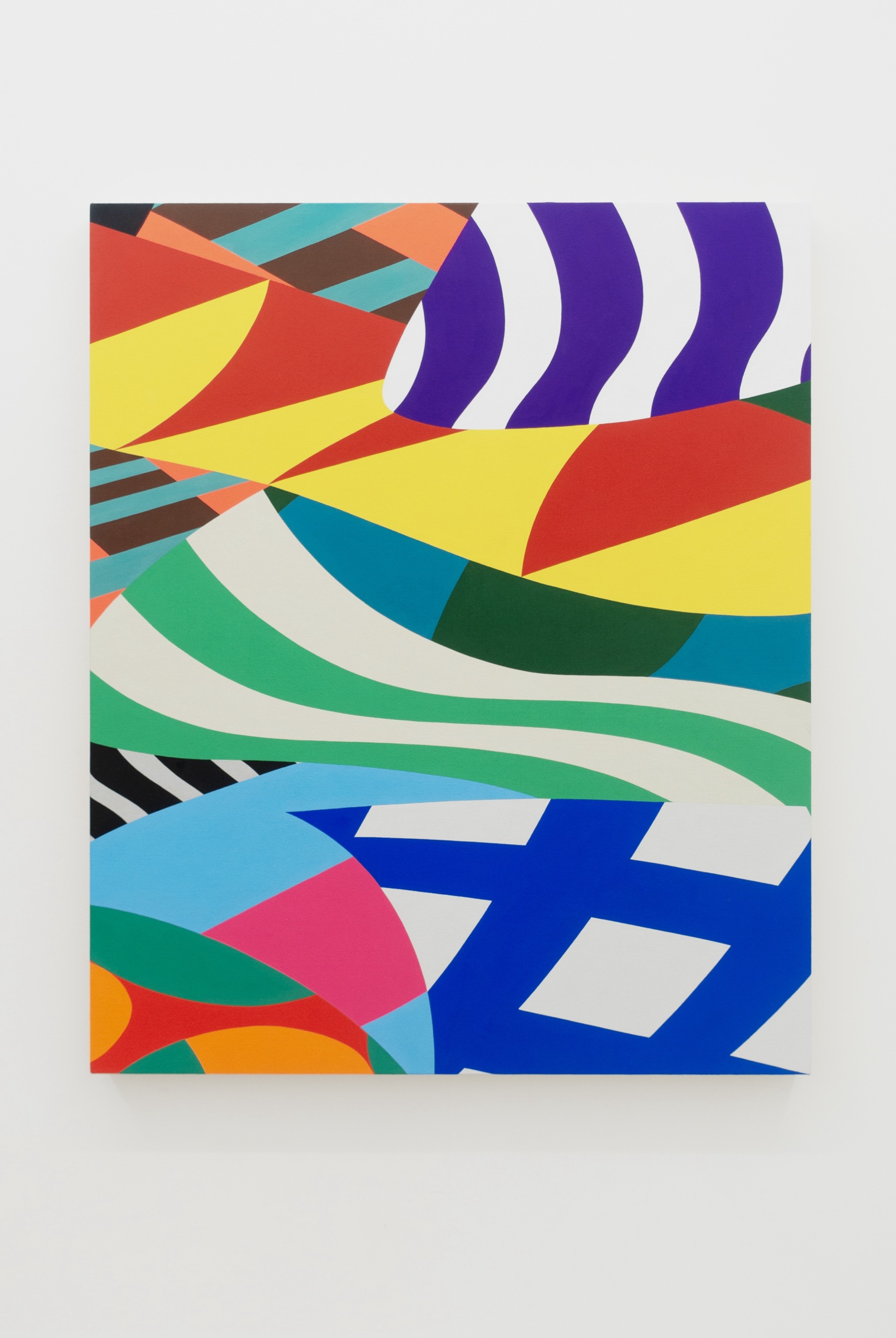
Shunsuke Imai’s paintings are distinguished by their use of vivid color and geometric forms. Balancing artificial structure and human touch, his compositions of bold stripes and irregular shapes combine digitally composed sketches with freehand acrylic painting and also find form in sculptures and installations. Imai’s work fluidly crosses boundaries between abstraction and representation, art and design, figure and ground, stasis and movement, reality and illusion, offering viewers a fresh perspective on contemporary visual experience. In this exhibition, Imai will present a new sculptural work made of striped fabric alongside a painting that captures the fabric’s undulating motion. The rippling stripes alternately evoke flags, camouflage, or national symbols, triggering different personal associations and memories in the viewer.
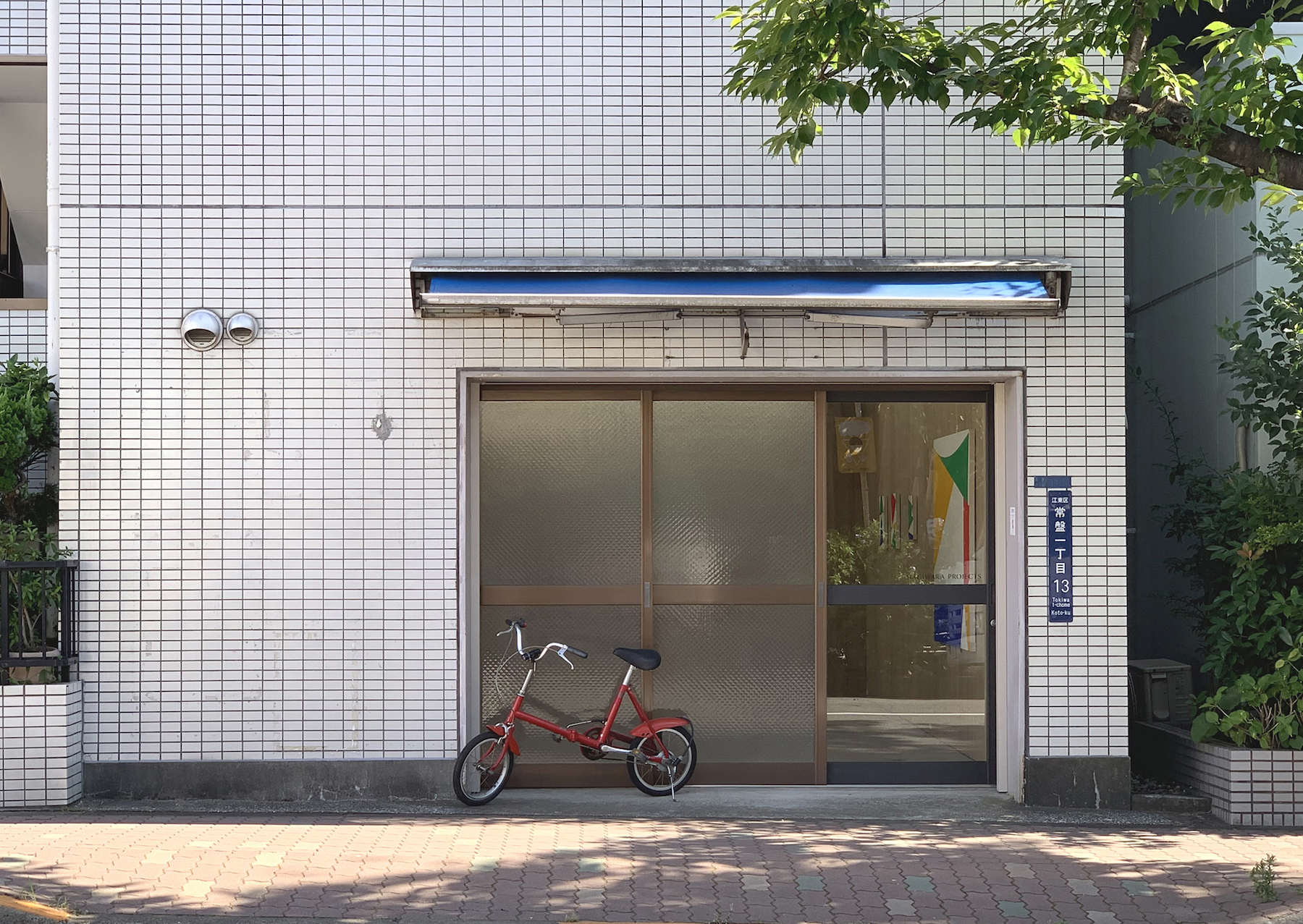
Hagiwara Projects was established in Tokyo’s Nishi-Shinjuku district in 2013 and relocated to Koto in 2021. The gallery focuses on emerging and midcareer Japanese and international artists working in painting, sculpture, film, photography, and other mediums. In addition to showing its represented artists, Hagiwara Projects contributes to the Japanese art scene by commissioning guest curators to organize thematic exhibitions. The gallery also introduces the work of Japanese artists to global audiences through regular participation in international art fairs.
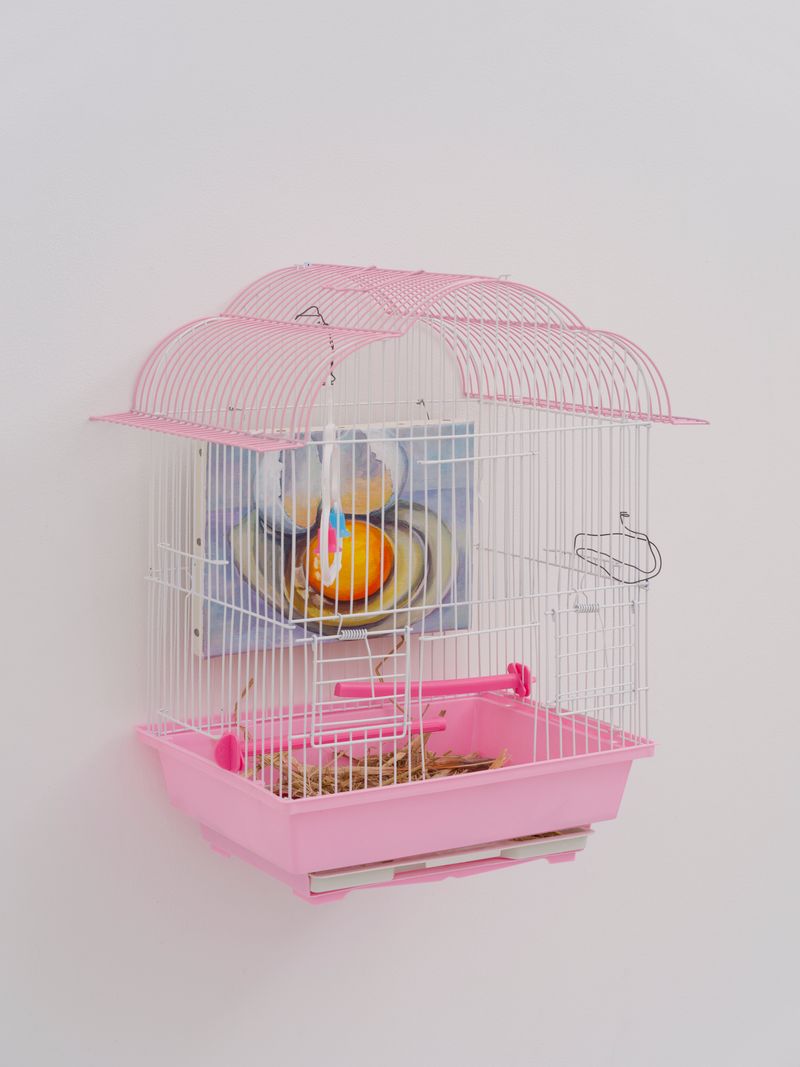
Cobra was born in Chiba in 1981 and is now based in Tokyo. He is active as both an artist and as one of the directors of the artist-run space XYZ collective. He works across a variety of mediums, from painting and sculpture to photography, video, and sound, and incorporates his own performativity into artworks that investigate the historical means of “imitation” or “behavior” in art and contemporary culture. One of his signature pieces of recent years is the series Bird Gallery for Bird, which features miniature paintings of eggs installed inside birdcages. In his previous exhibition at Fig. in 2019, he debuted the painting series Rat Museum for Rat, with miniature paintings exhibited inside rat traps. This will be his second exhibition at Fig.
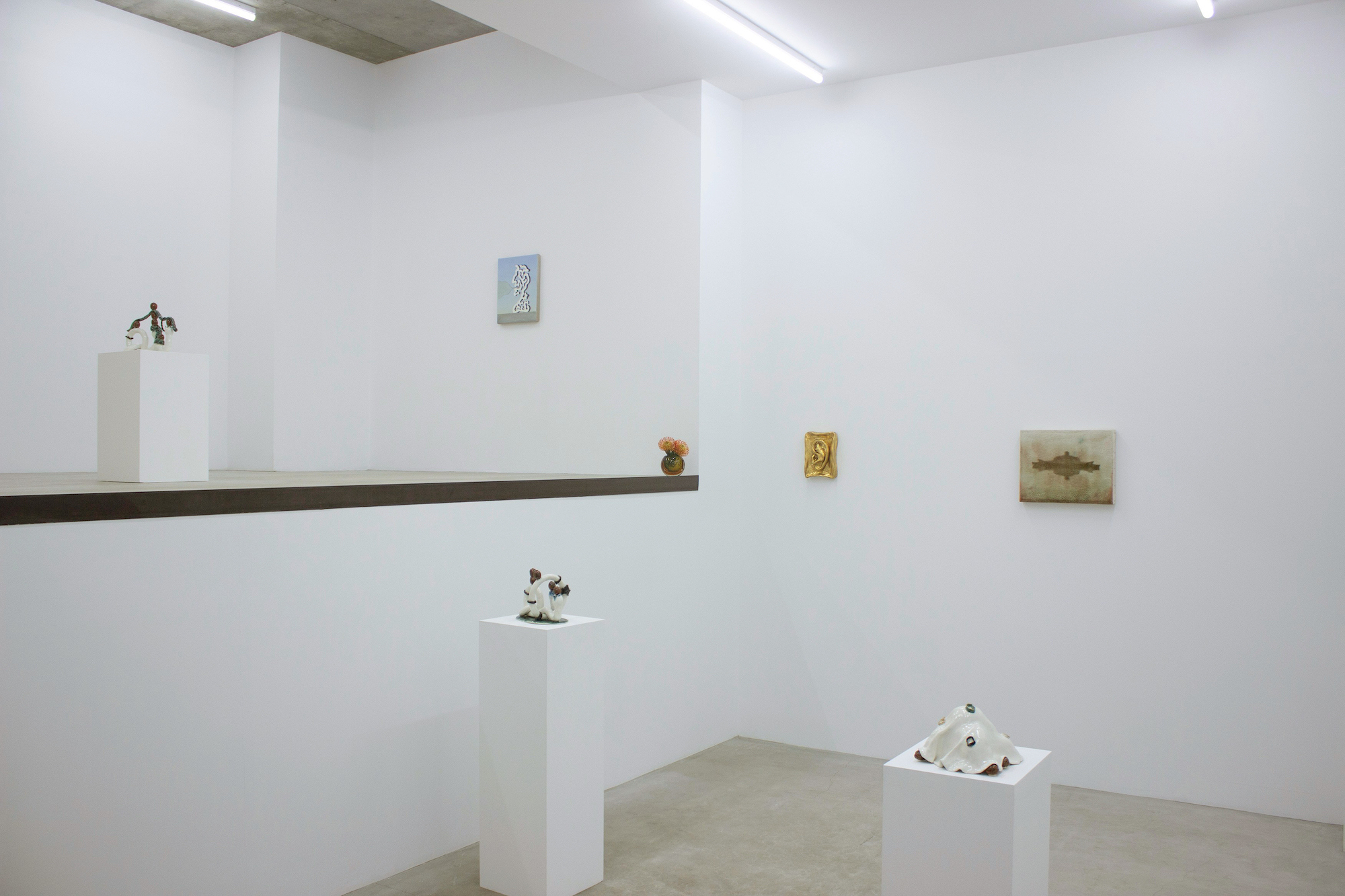
Fig. is an artist-run space founded in Kita-Otsuka in 2017. Organized on a project basis, its exhibition program features both local and international artists and is often developed in collaboration with other art spaces from Japan and abroad. Past exhibitions include David Ostrowski, “Leeres Wasser (Anti Drawings)” (2023); Umico Niwa, “My Life Inside a Shoe (the phantom cricket)” (2023), organized with XYZ collective; “Drawing Fever I: Narrative, on-going” (2022); Nicolás Guagnini and Shizuka Okada, “Interference” (2021), organized with Galerie Max Mayer; Hannah Weinberger “wedidntwanttoleave.live” (2020), curated by Fitzpatrick Gallery with the Performance Agency; Cobra, “The Museum” (2019); and Shizuka Okada, “Slender and Long My Whistle” (2018).
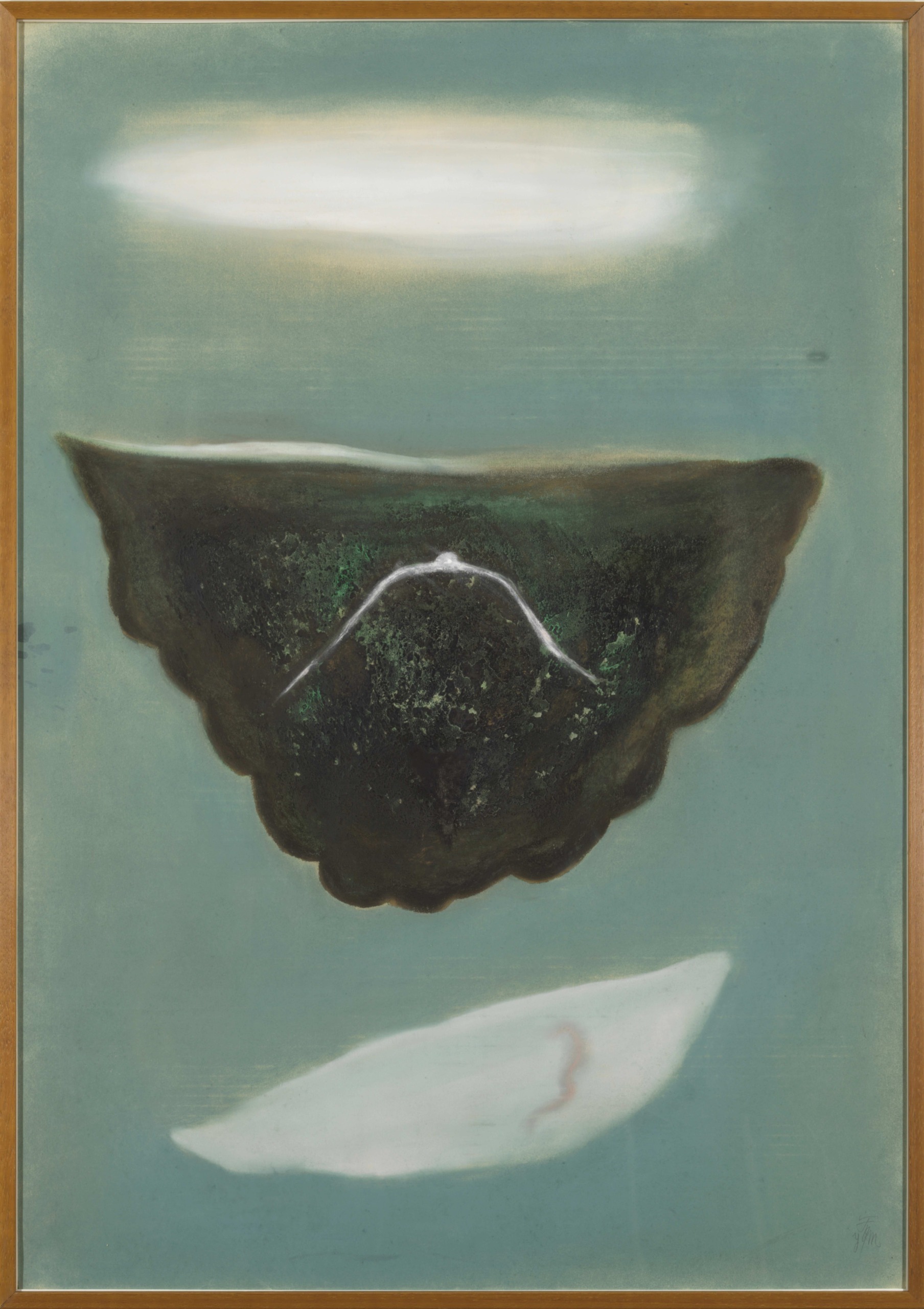
Yutaka Matsuzawa (1922–2006) was a pioneer of Conceptual art who, upon receiving a revelatory vision in 1964, made it his mission to “vanish objets.” This found form in works such as My Own Death (1970), an empty room with panels asking viewers to contemplate the artist’s death along with all past and future human deaths, which he first presented at the landmark Tokyo Biennale in 1970. Yet broader recognition for Matsuzawa is still building; his first institutional retrospective was only held in 2022 at the Nagano Prefectural Art Museum. This exhibition at Yumiko Chiba Associates reflects the gallery’s commitment to representing historic Japanese artists, especially those who worked in avant-garde and Conceptual practices.
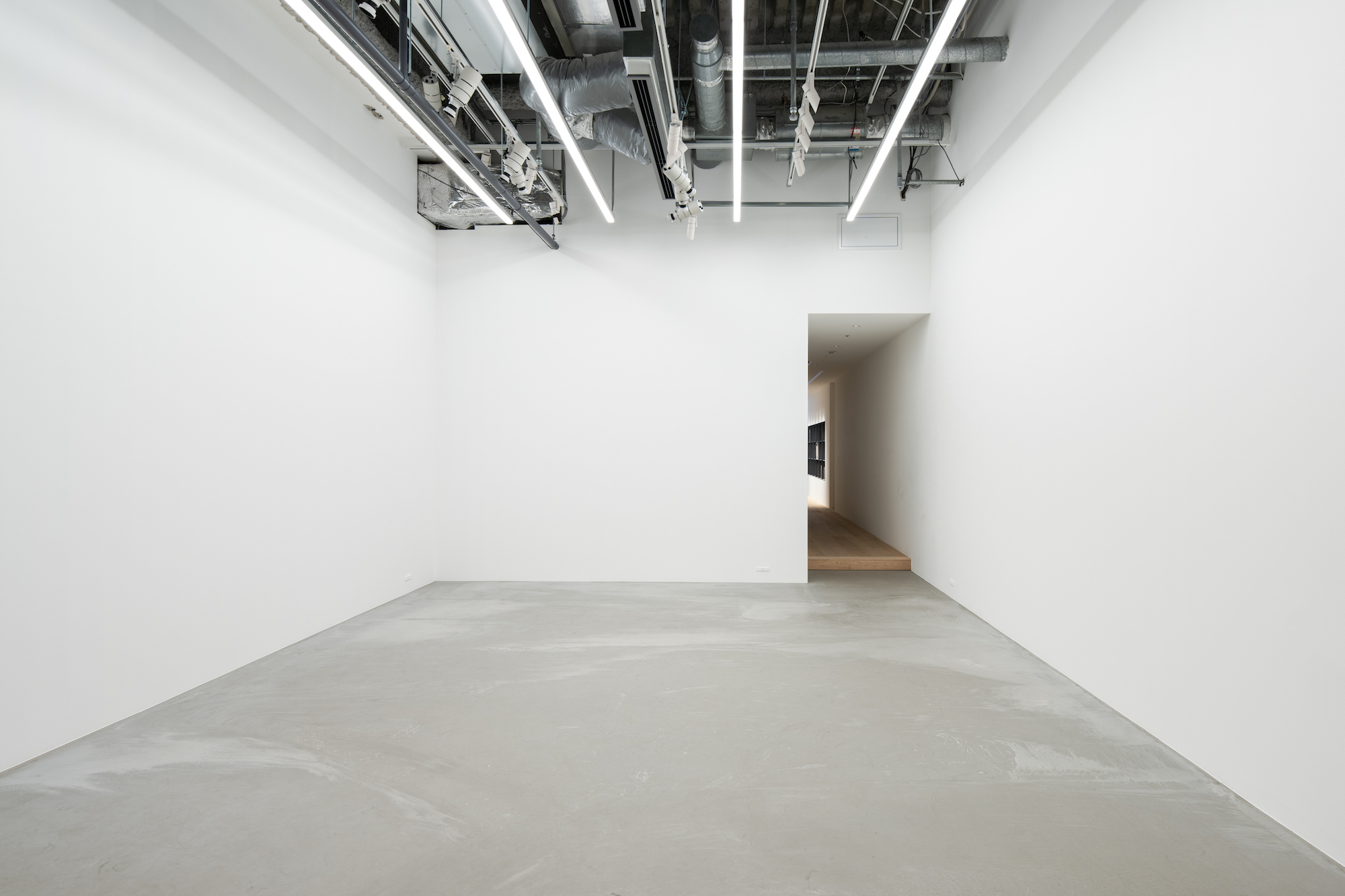
Yumiko Chiba Associates was founded in 1988 and operated as an artist management office before opening its Shinjuku gallery in 2010. The gallery moved to its current space in Roppongi in 2022. YCA represents the estates of some of the most important figures in Japanese postwar art, from Jiro Takamatsu to Masafumi Maita, Shin Yanagisawa, and Katsuro Yoshida. The exhibition program features solo shows by these and other artists, including those of younger generations. The gallery also maintains an active publishing program, commissioning critical essays that contribute to art historical research on various practices. In 2022, coinciding with its move to Roppongi, YCA launched the Roppongi ArsCuria hub to further promote artistic and critical discussion. YCA is a regular participant at Art Basel Hong Kong, Paris Photo, and other contemporary art fairs.
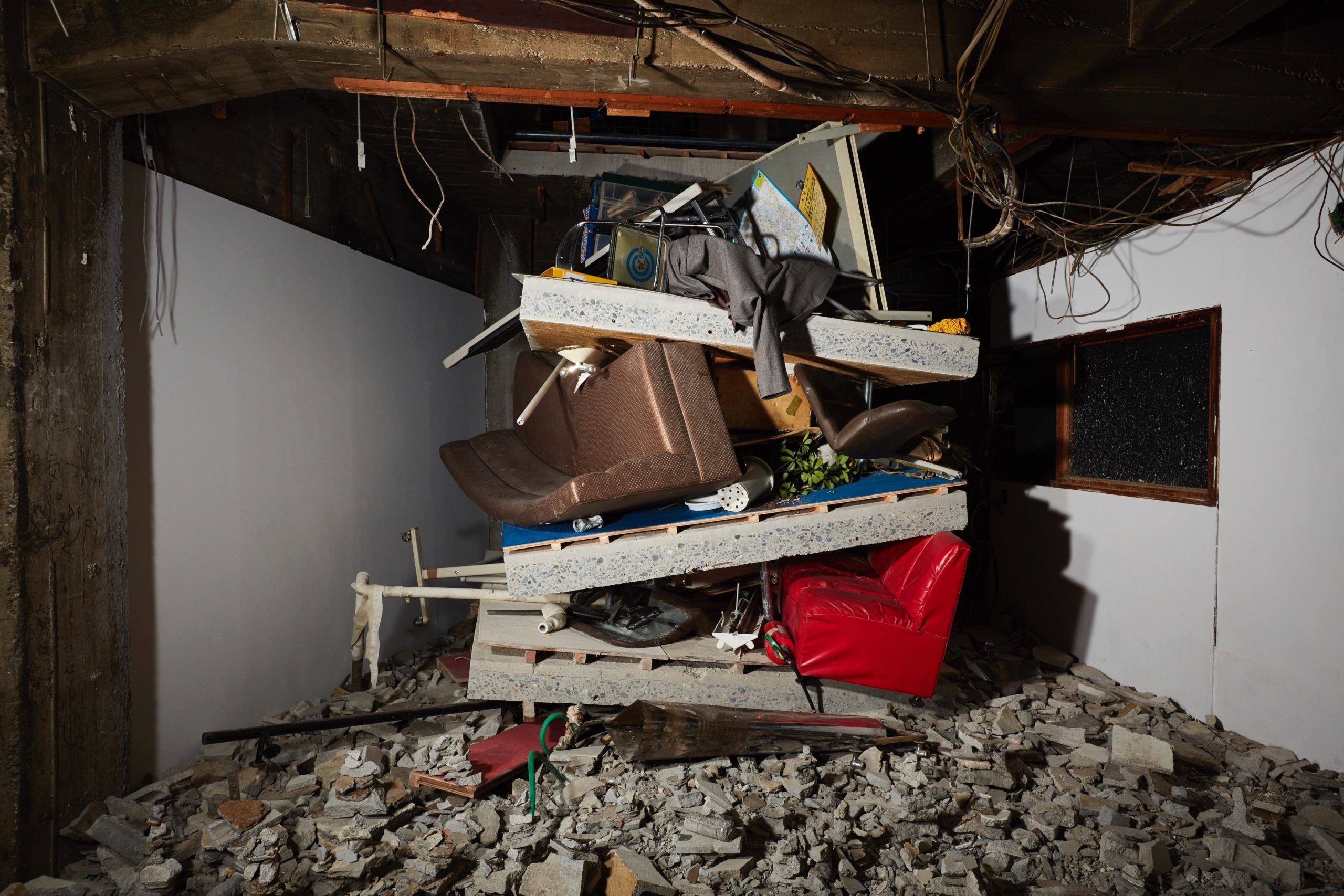
Over the past two decades, the artist collective Chim↑Pom from Smappa!Group has built an avid following for its bold interventions in public space. In this exhibition the collective builds on recent works exploring the idea of naraku as an inherent structure of contemporary society. Deriving from the word for “hell” in Buddhist terminology, naraku refers to the area beneath the stage of a Kabuki theater as well as any space evoking the abyssal “hole” at the bottom of hell. Chim↑Pom from Smappa!Group’s new works reread the city through the idea of the naraku as the unseen or hidden underside of the urban stage, using it a device for rethinking binaries of good and evil or clean and unclean. In doing so, the collective hopes to arrive at a planetary perspective that can grasp city and society at both macro and micro levels and even expand the framework of ethics itself.
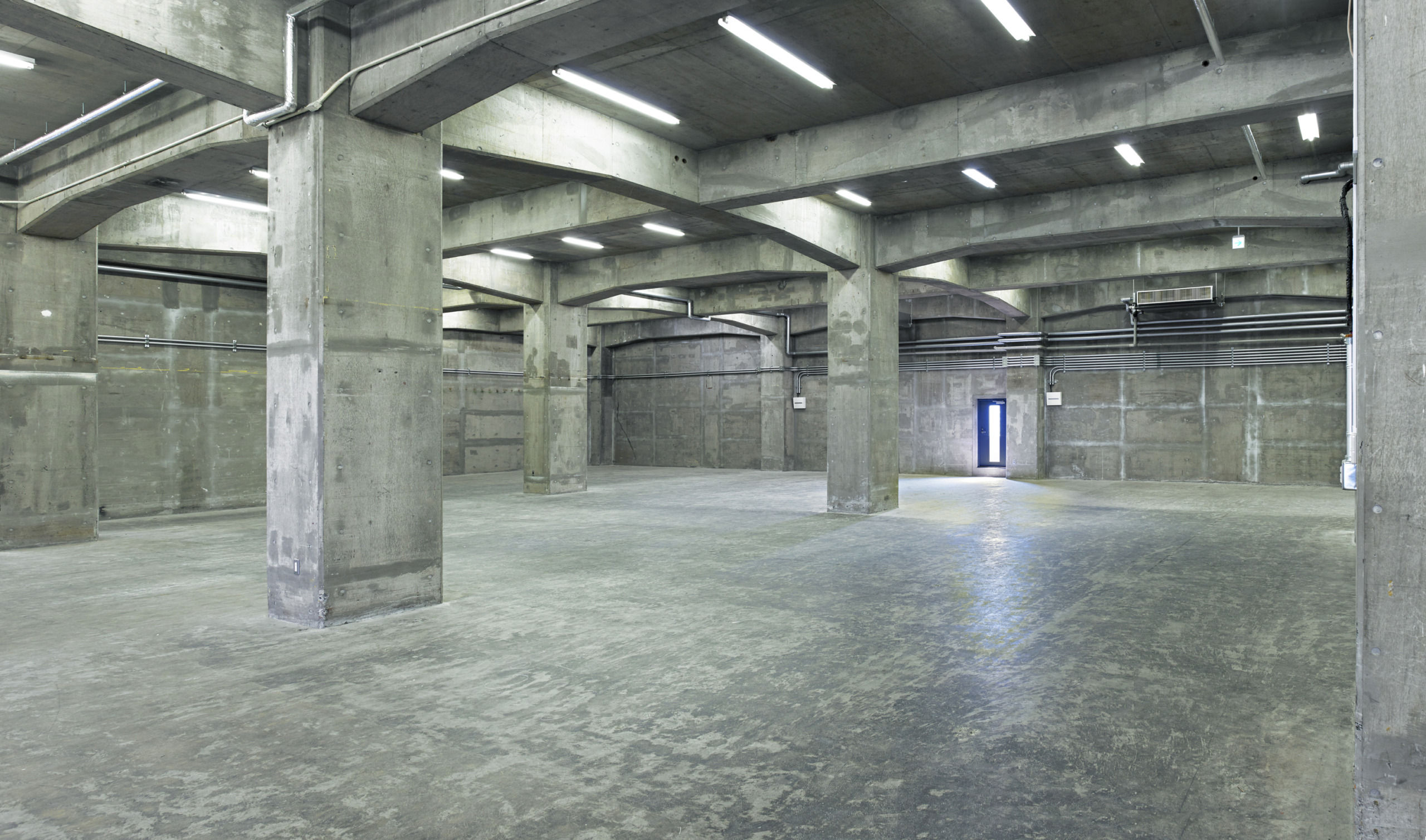
Launched in 2018, Anomaly celebrates art that deviates from the norm, common order, or rule. Responding to the conditions for contemporary art in Japan and Asia, it presents a diverse program of exhibitions, performances, and events that emerge from research and dialogue. In doing so, Anomaly seeks to cultivate a fertile ground for seeding cultural change and expanding creativity beyond the existing framework of traditional art galleries.
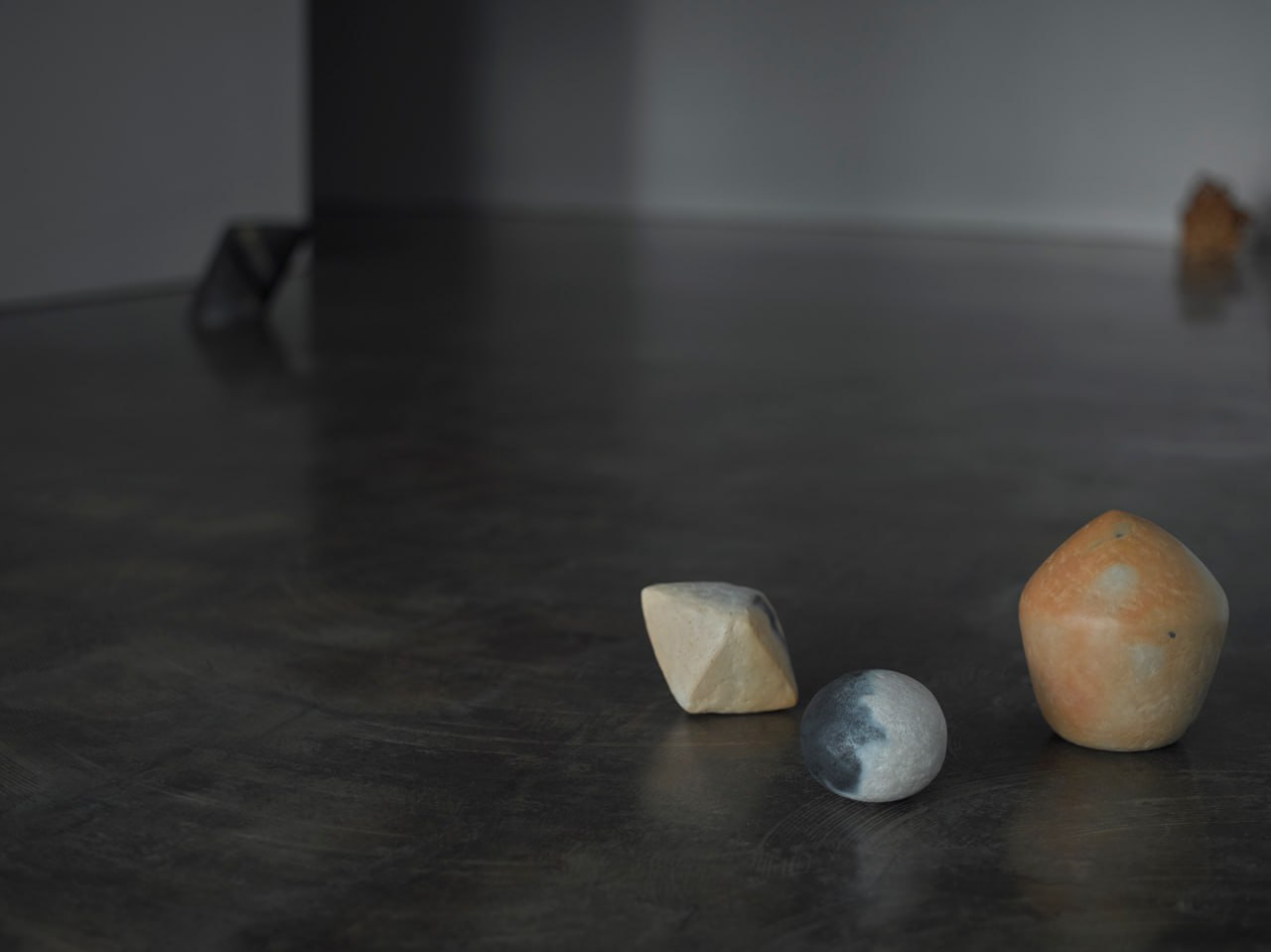
Active since the 1970s, Eiji Uematsu is a contemporary ceramic artist whose visual language emerges out of his dialogues with clay and nature. Incorporating improvisation and chance processes, his works harness the vitality of clay slip, earth, and fire to evoke overlooked landscapes and flows of time. Viewed in contrast to the current era of advancing digitization, Uematsu’s approach prompts reflection on the intersections between the body and natural forces and raises questions about what it means for artists to handle materials.
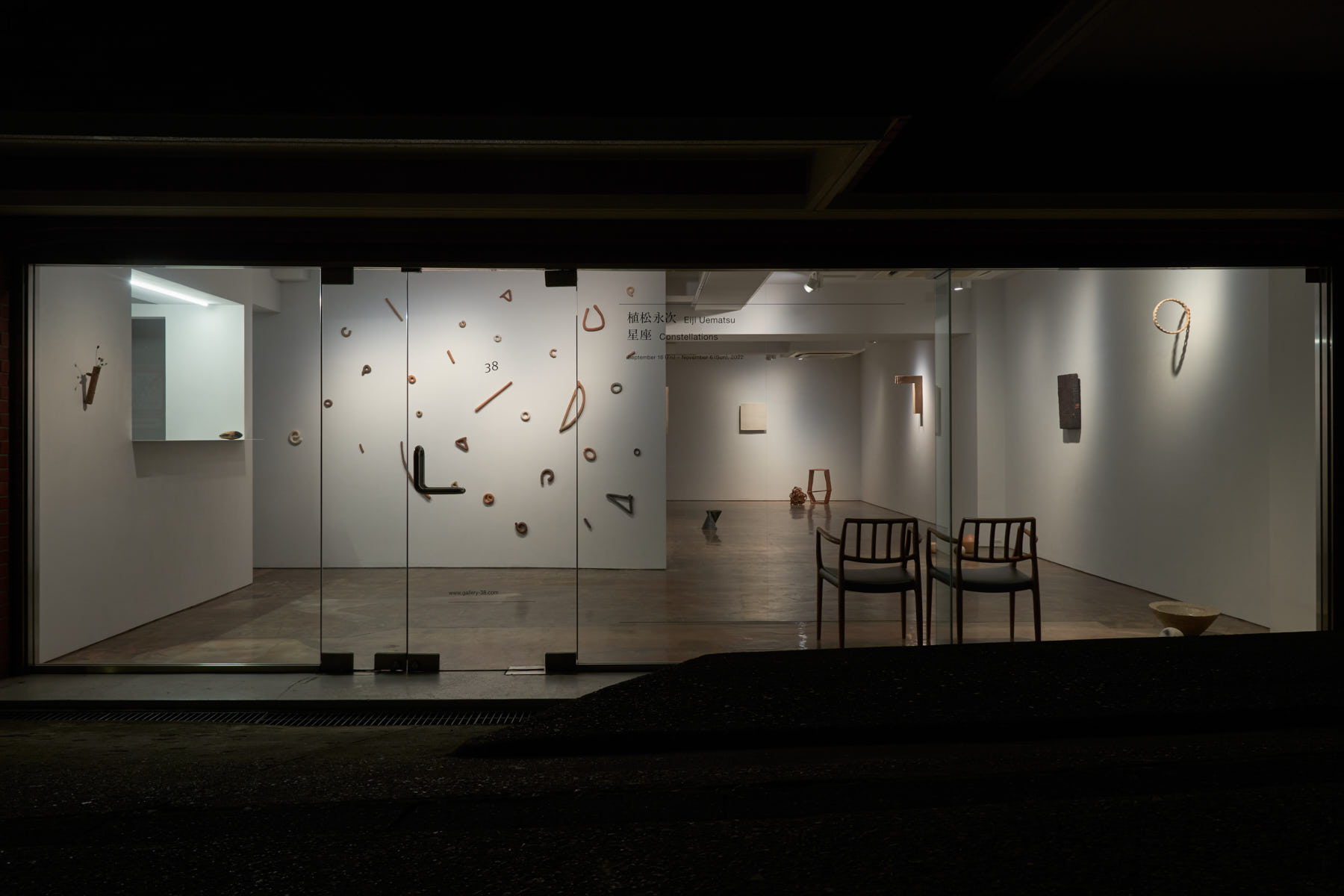
Gallery 38 was founded in Tokyo in 2016. Since its inaugural exhibition of works by ceramic artist Eiji Uematsu, the gallery has pursued dual aims: to introduce emerging and established international artists to Japan—including Romain Cadilhon, Hartmut Landauer, Oliver Marsden, Christiane Pooley, and Stephanie Quayle—and to discover and promote emerging and historically significant Japanese artists abroad.

This exhibition is a collaboration between the São Paulo–based artist duo Osgemeos (twin brothers Gustavo and Otavio Pandolfo) and San Francisco-based artist Barry McGee. Both Osgemeos and McGee emerged out of the international street art and graffiti scenes in the 1980s and 1990s to earn widespread acclaim at an early age. Osgemeos was recently featured in the duo’s first US institutional survey at the Hirshhorn Museum in Washington, D.C. The exhibition, entitled “Endless Story,” ran for a year from September 2024 to August 2025 and brought together more than 1,000 artworks, photographs, and archival materials. The duo considers McGee to be a close friend and mentor dating back to their first meeting in São Paulo in the early 1990s. Reflecting that shared history, this presentation of Osgemeos and McGee in Tokyo will go beyond a mere two-person exhibition to achieve a groundbreaking creative dialogue between the artists.
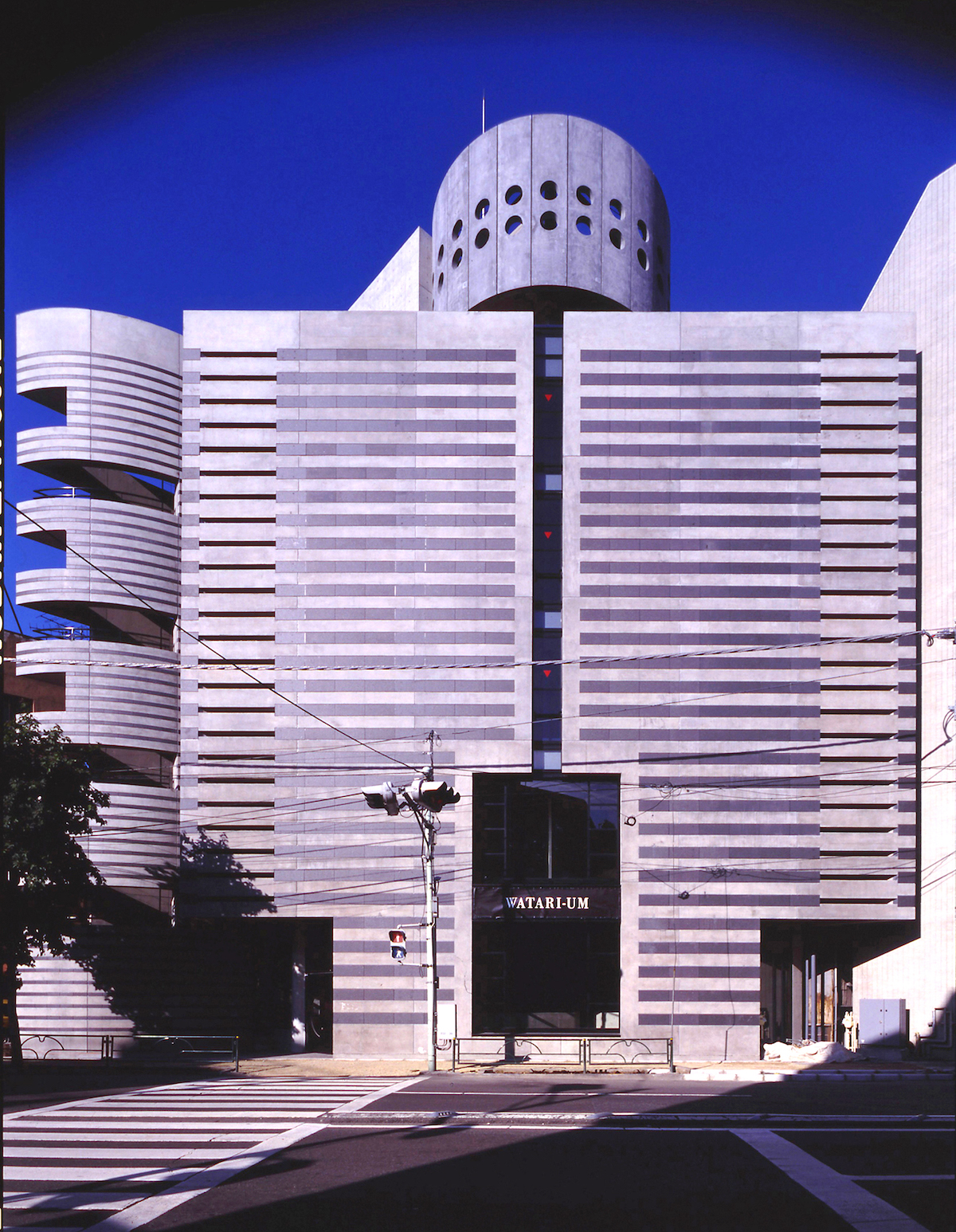
Watari-um, the Watari Museum of Contemporary Art, opened in 1990 as a private museum. The museum collection is based on works acquired by the founding director Shizuko Watari, a champion of postwar Western art in Japan. Watari-um holds three-to-four exhibitions per year that cover a broad range of topics, from contemporary art and Japanese culture to architecture. Guest curators have included such legendary figures as Jan Hoet, Jean-Hubert Martin, and Harald Szeemann. Accompanying lectures, workshops, and other events help visitors gain a deeper understanding of the exhibitions and their significance to contemporary society. The museum also organizes off-site exhibitions and events.
Swiss architect Mario Botta spent five years designing Watari-um’s building, which was his first museum project and is now known as one of his masterpieces. The striped granite and concrete facade, resembling a bird in flight over the city, has become a landmark of the Tokyo art scene.
Dining options on-site.
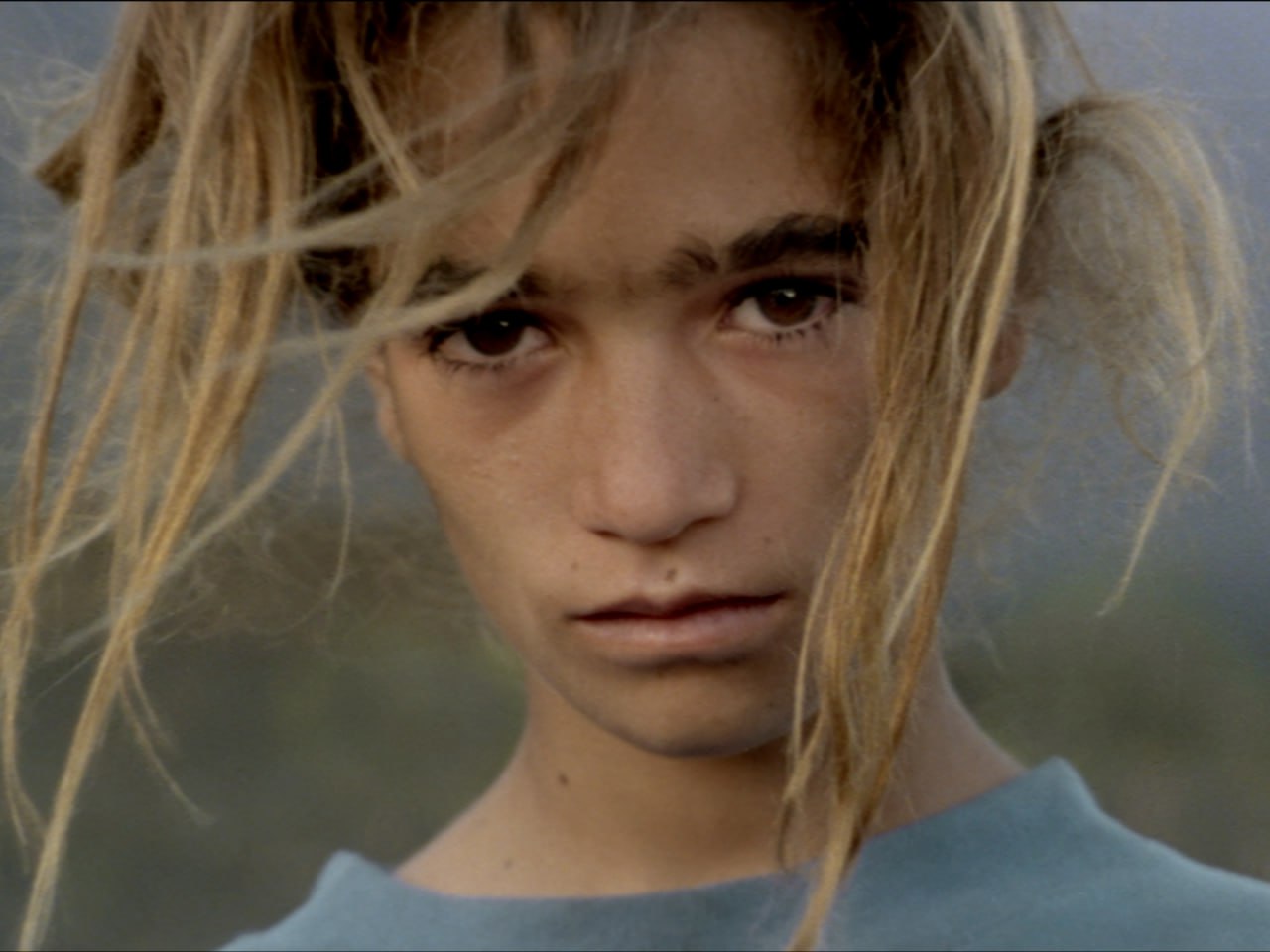
Organized as part of the Tokyo Photographic Art Museum’s 30th anniversary programming, this exhibition is the first in Japan for the Portuguese filmmaker and multimedia artist Pedro Costa. Costa is known for his socially and politically committed approach to filmmaking, as epitomized in films such as In Vanda’s Room (2004), which records the harsh existence of a woman who has migrated from the former Portuguese colony of Cape Verde and ekes out a living in the Fontainhas quarter of Lisbon. The exhibition will consider Costa’s practice in relation to film history by presenting his multichannel video installations and photographs in dialogue with works and materials drawn from the museum collection. A Carte Blanche program of films selected by Costa will be screened alongside his own works throughout the run of the exhibition.
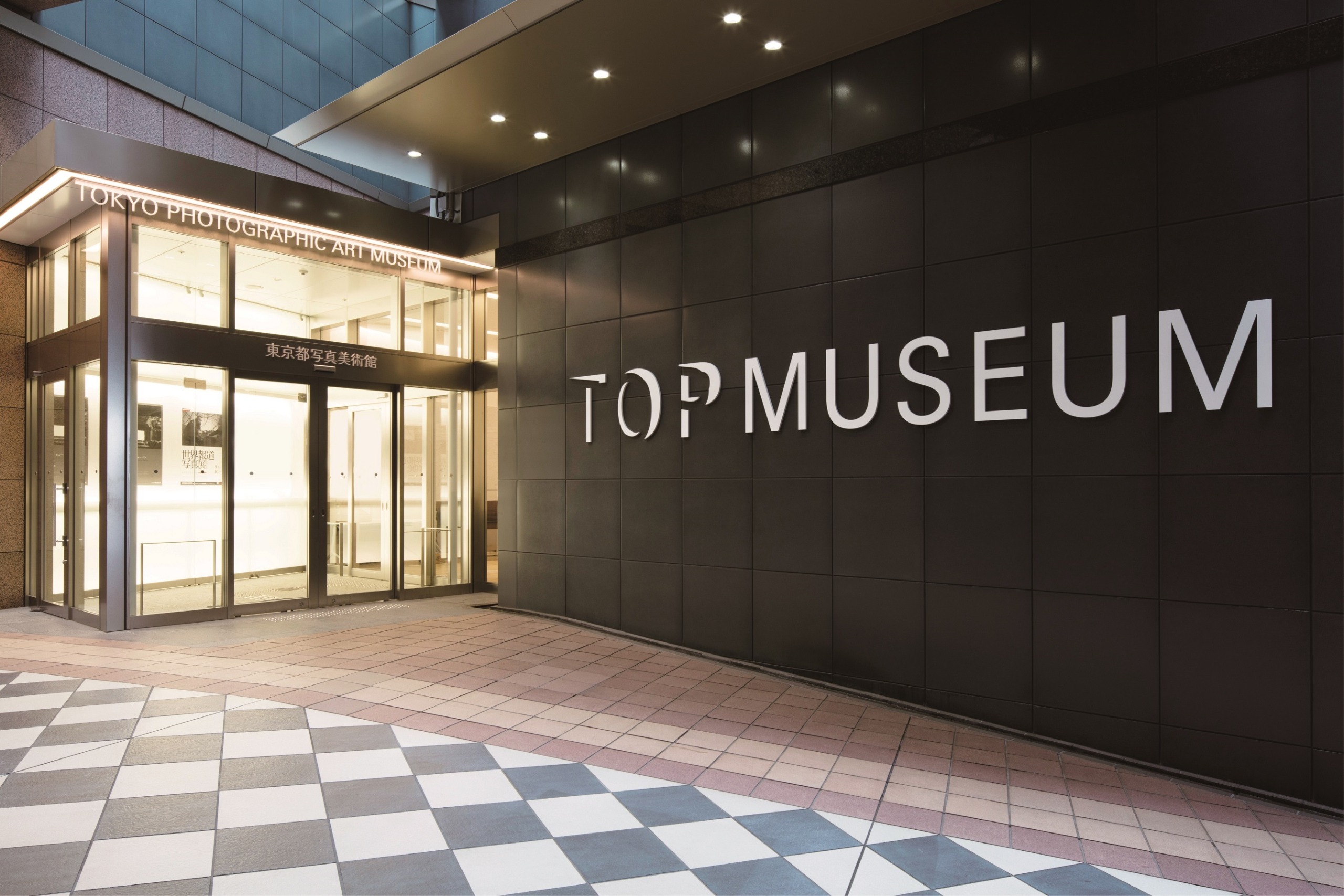
Founded in 1995, the Tokyo Photographic Art Museum is the city’s premier institution for photography and moving images. The museum’s programming spans three galleries and is grounded in its world-class holdings of more than 37,000 works. Its yearly calendar of approximately 20 exhibitions includes collection-based exhibitions and thematic shows that reflect the curators’ deep expertise in Japanese and international photographic and moving image art. Since 2009 the museum has hosted the annual Yebisu International Festival for Art & Alternative Visions, an international survey of contemporary image practices. The museum’s screening program showcases moving image works that explore the relationship between art and humanity.
Dining options on-site.
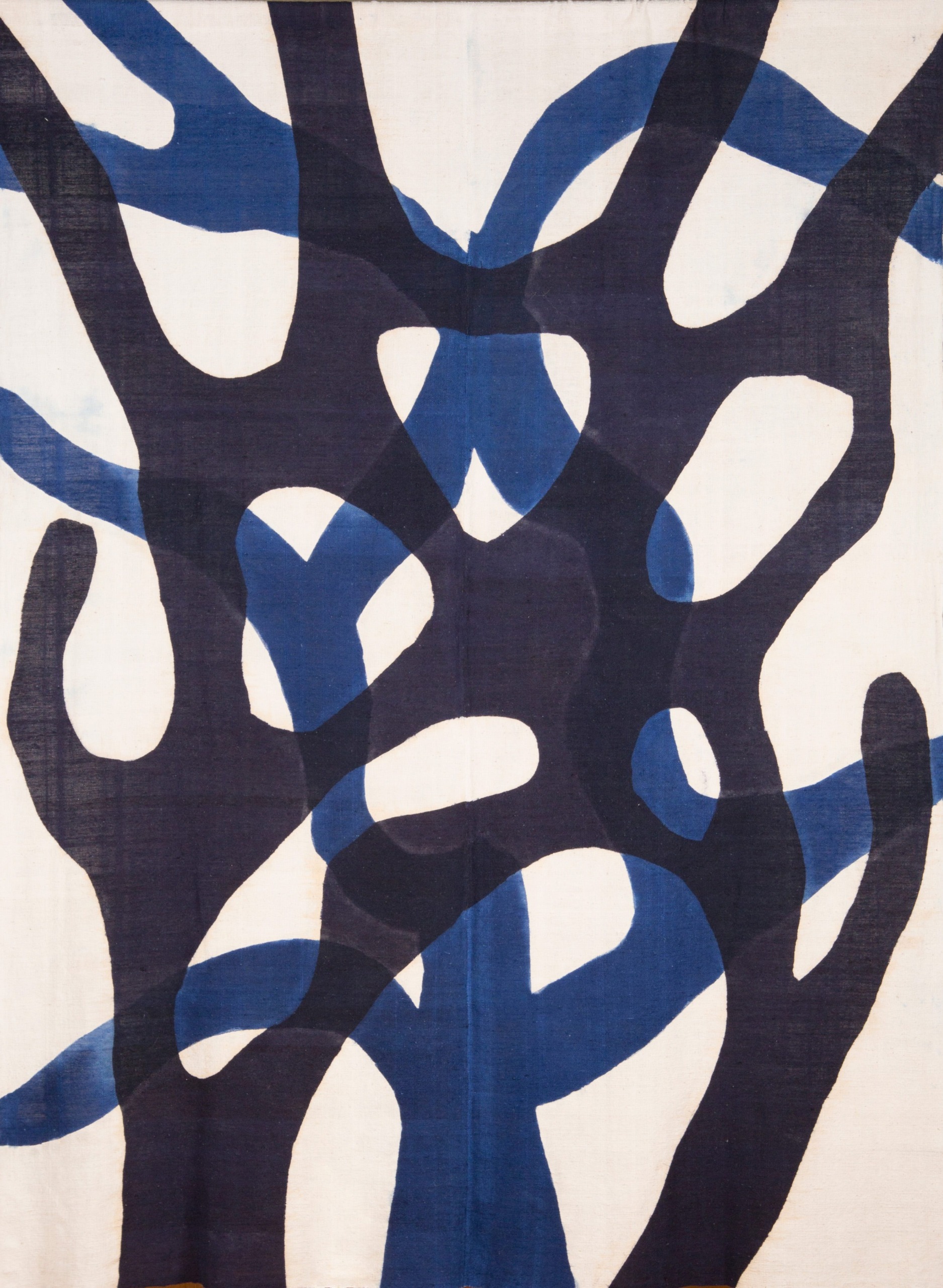
This exhibition looks back at the life and career of pioneering stencil-dye artist Samiro Yunoki (1922–2024), who died last year at the age of 101. Yunoki’s practice developed out of his encounter with Soetsu Yanagi and the Mingei movement as well as the work of master craftsman Keisuke Serizawa. His designs are distinguished by their use of vibrant colors and humorous forms that draw equally from the Japanese vernacular tradition and a modern sensibility. In addition to his work in fabric, his multifaceted output encompasses prints, collages, sculptural works, picture books, and more.
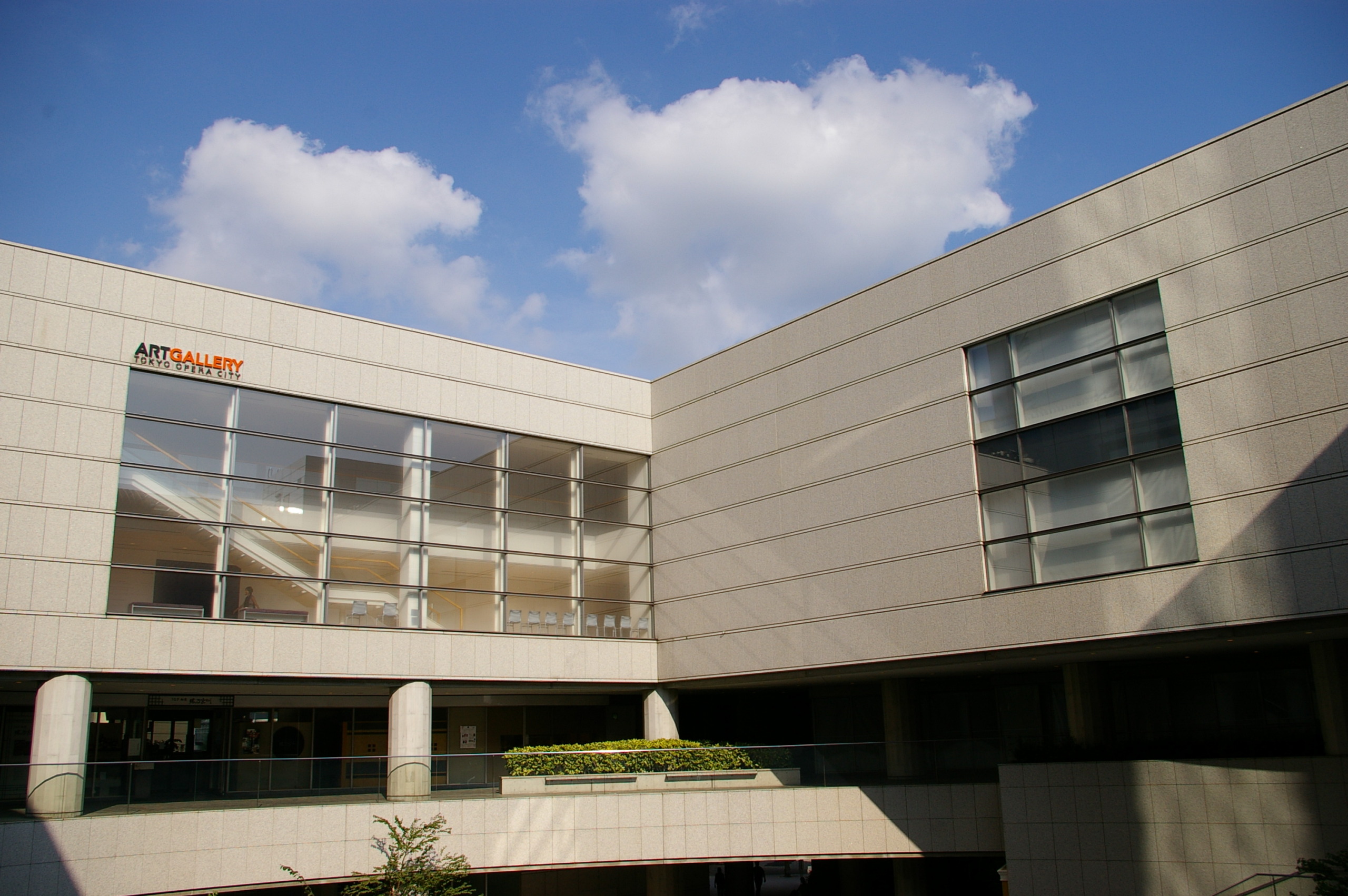
Tokyo Opera City Art Gallery is one of the core institutions of the Tokyo Opera City cultural complex. Established in 1999 as an art museum integrated into urban life, TOCAG presents ambitious projects by Japanese and international artists, architects, and designers who transform the gallery space. It holds about four special exhibitions a year as well as an exhibition series for emerging Japanese artists called project N. TOCAG is also home to the Terada collection, comprising more than 4,000 works by Japanese artists in various mediums, including substantial holdings of celebrated abstract painter Tatsuoki Nambata. Donated by Kotaro Terada, a partner in the Tokyo Opera City complex’s development, the collection reveals the diverse trajectories that art has followed in postwar Japan.
Dining options on-site.
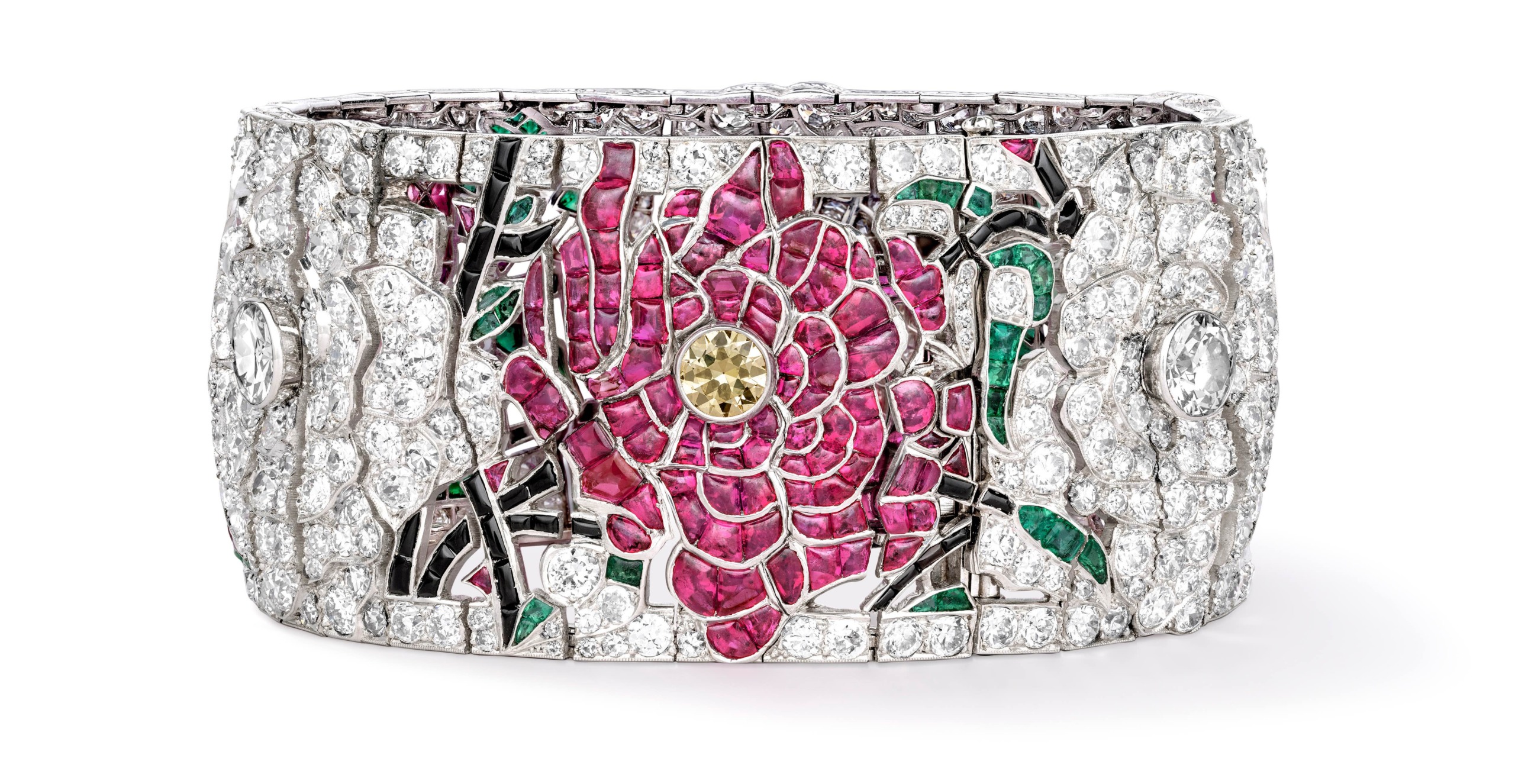
This exhibition celebrates the 100th anniversary of the International Exhibition of Modern Industrial and Decorative Arts in Paris through a display of historic high jewelry creations by Van Cleef & Arpels. The French jewelry firm was awarded a grand prize at the International Exhibition for pieces including the Entwined Flowers, Red and White Roses bracelet of 1924. The event was also significant for the design and interior decoration of the Tokyo Metropolitan Teien Art Museum, which was built in 1933 with interiors by Henri Rapin and decorative glasswork by René Lalique. Drawn from both the patrimonial and private collections, the pieces on display pay tribute to the timelessness of Art Deco and the ingenuity of Van Cleef & Arpels’s savoir-faire.
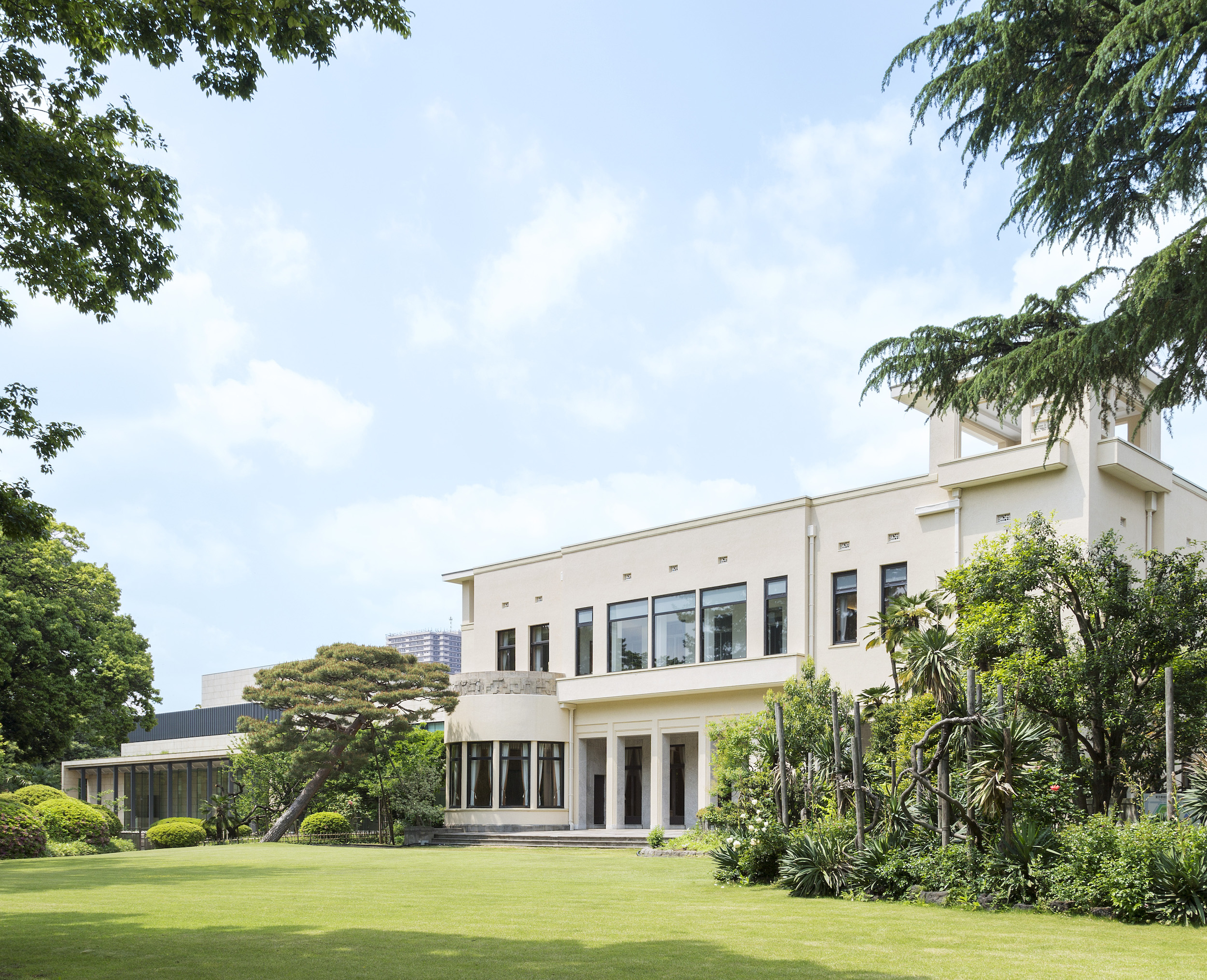
The Tokyo Metropolitan Teien Art Museum occupies Prince Asaka’s former residence, an Art Deco building with surrounding gardens constructed in 1933. Designed by key figures of the movement like Henri Rapin and demonstrating the highest level of Japanese craftsmanship, the museum hosts a selection of artworks in rooms that are themselves works of art. The exhibition program brings historical and contemporary artists, architects, and designers into conversation with these surroundings. Visitors can also explore the gardens, which have remained unchanged since their completion.
The museum was established in 1983 and added an annex in 2014 designed in collaboration with Hiroshi Sugimoto. The residence was designated an Important Cultural Property by the Japanese Government the following year.
Dining options on-site.
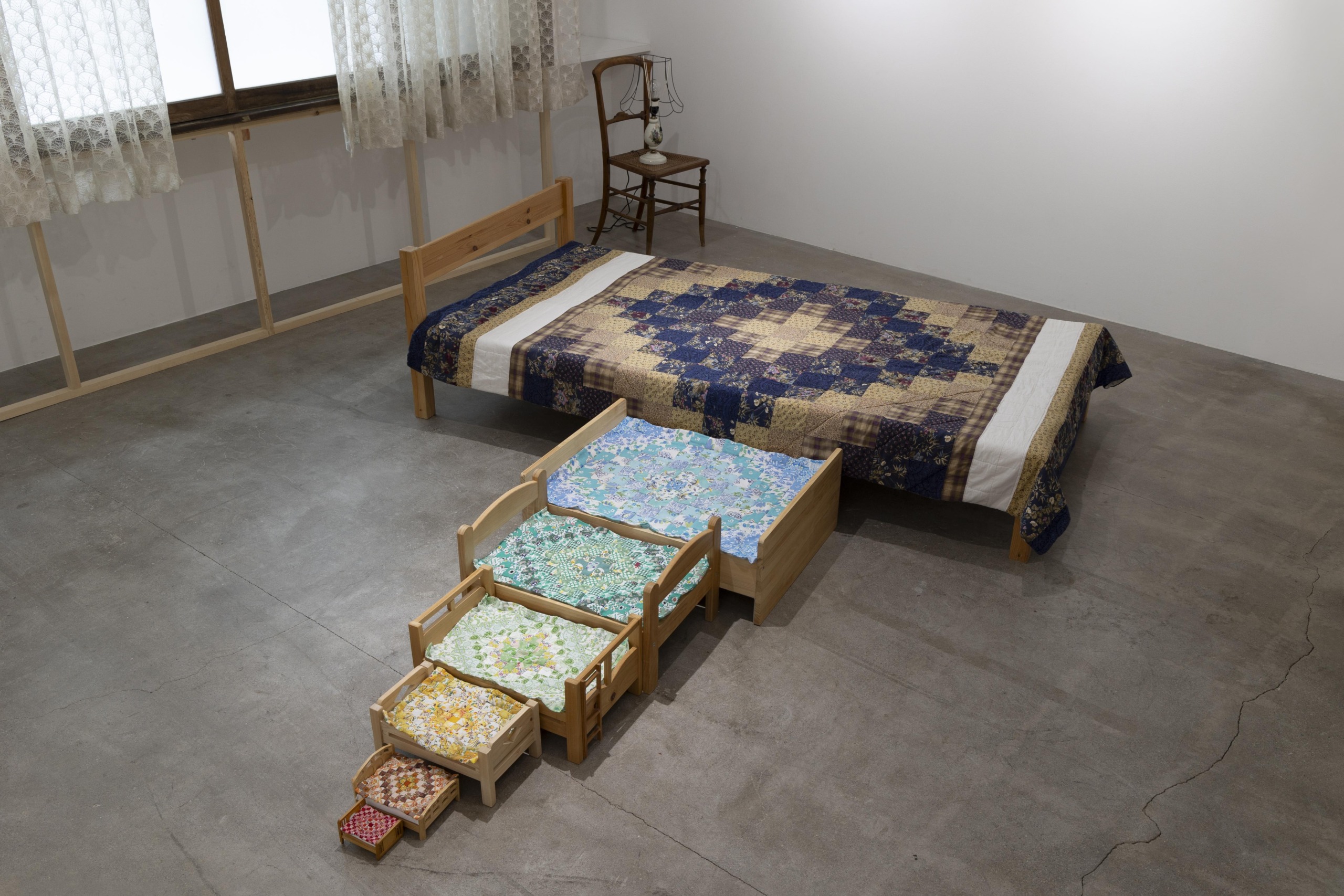
Twin sisters and collaborators Akiko and Masako Takada investigate themes related to space, time, and scale. Working with everyday materials, they deploy contrasts in scale and other perceptual values to create fantastical worlds that still retain a sense of reality. The installation Spectrum (2024), for example, features beds of differing sizes—from miniature to life-sized—each accompanied by its own colorful patchwork quilt. Lined up either by diminishing or increasing proportions, depending on one’s perspective, the beds transport viewers into a metaphysical fairy-tale scenario while also prompting reflection on the differences between play and utility. “Perspectives: The World as Seen By” will feature a selection of new and recent works.
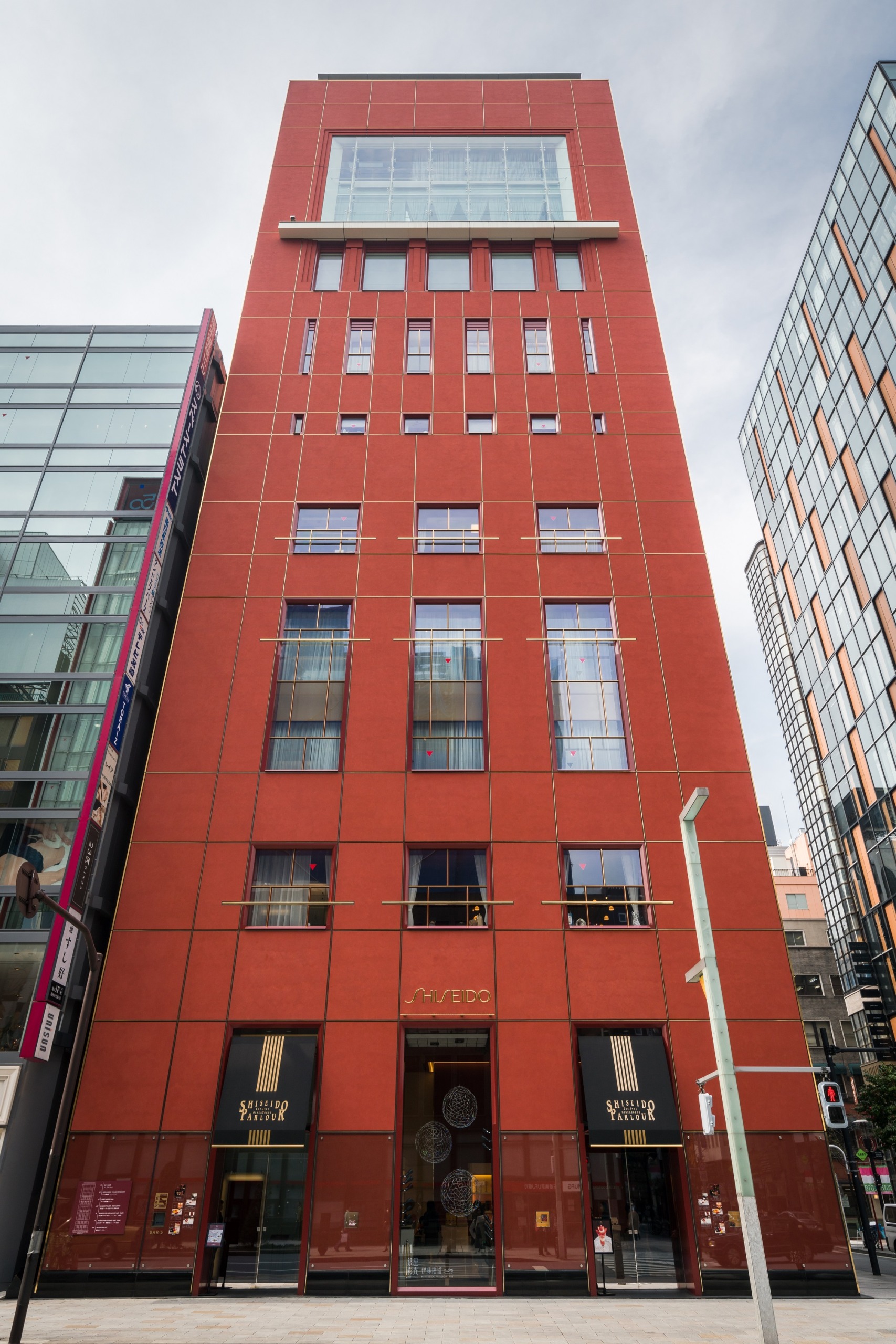
Since opening its doors in 1919, Shiseido Gallery has been one of Japan’s most vanguard art spaces, continually dedicated to the ideal of “discovering and creating new values.” The gallery has held over 3,100 exhibitions, many serving as the debuts of artists who would later make major contributions to the development of art in Japan. The program ranges from group shows, such as the Tsubaki-kai series of collaborative exhibitions, to ambitious solo projects by leading artists including Ishiuchi Miyako, Kimsooja, and Ming Wong. The gallery has occupied the basement level of the Tokyo Ginza Shiseido Building since 2001. Invited artists frequently respond to the expressive possibilities of the space, distinguished by its five-meter-high ceiling and a mezzanine that provides an expansive view of each exhibition.
Dining options on-site.
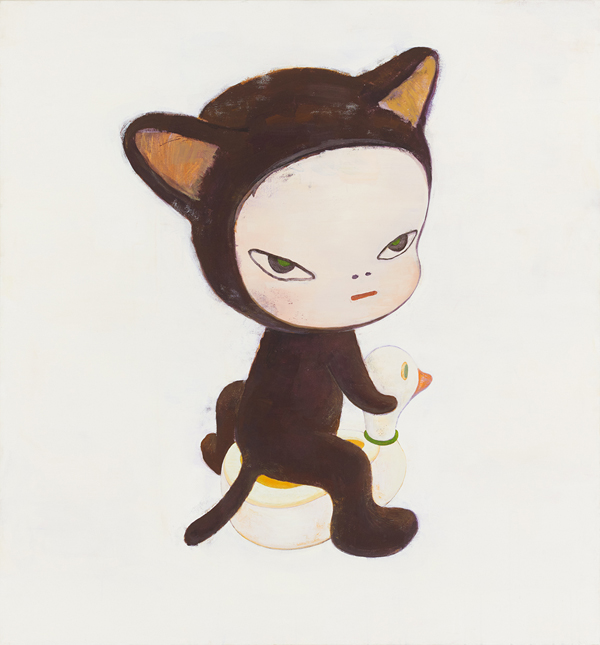
Founded in 1952, the National Museum of Modern Art, Tokyo, is home to more than 14,000 works by Japanese and international artists. The collection display traces the arc of modern and contemporary art in Japan from the 19th century to the present through some 200 works presented across 12 galleries, each with its own specific theme. Highlights of the current display include Yoshitomo Nara’s Harmless Kitty (1994), presented at the museum for the first time in two years, and Eikoh Hosoe’s landmark photographic series Ordeal by Roses (1961), created in collaboration with the celebrated author Yukio Mishima. (The latter work is presented in commemoration of Hosoe’s passing in 2024 and the centennial of Mishima’s birth this year.) New acquisitions will also be on view.
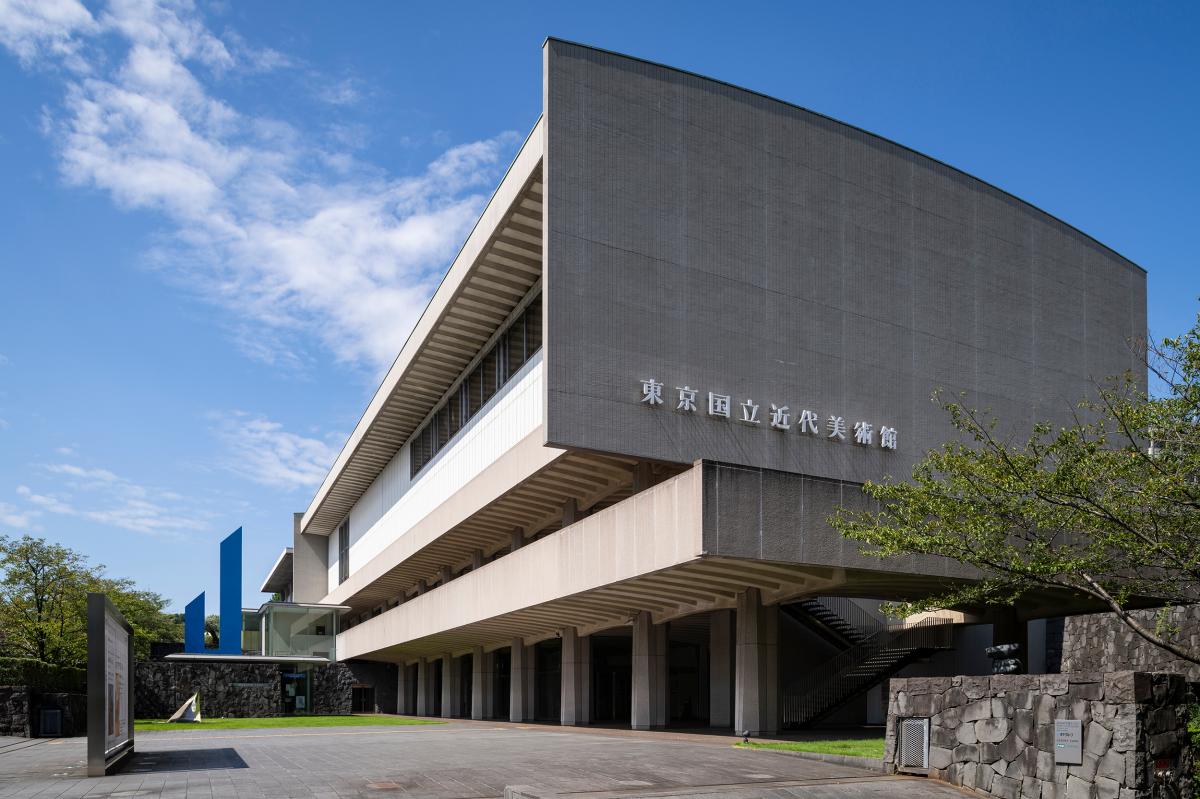
The National Museum of Modern Art, Tokyo, is Japan’s first national art museum, founded in 1952. MOMAT’s collection of more than 13,000 artworks, dating from the end of the 19th century to the present, provides an authoritative overview of the development of modern and contemporary art in Japan and beyond. Highlights include important works by early modernist painter Ryusei Kishida, formative works by On Kawara and Yayoi Kusama, and new media art by contemporary artists Koki Tanaka and Chikako Yamashiro. International movements, from Minimalism and Land art to feminist video, are also represented in the collection.
From its inception MOMAT has been the site of historic exhibitions, such as 1953’s “Abstraction and Surrealism,” which highlighted Japanese practitioners of nonfigurative painting, and “August 1970: Aspects of New Japanese Art,” which helped define the emerging Mono-ha art movement. The museum now features an annual program of substantive solo and thematic exhibitions. Recent shows include a survey of the 20th-century Mingei movement and a retrospective of multimedia artist Shinro Ohtake.
Dining options on-site.
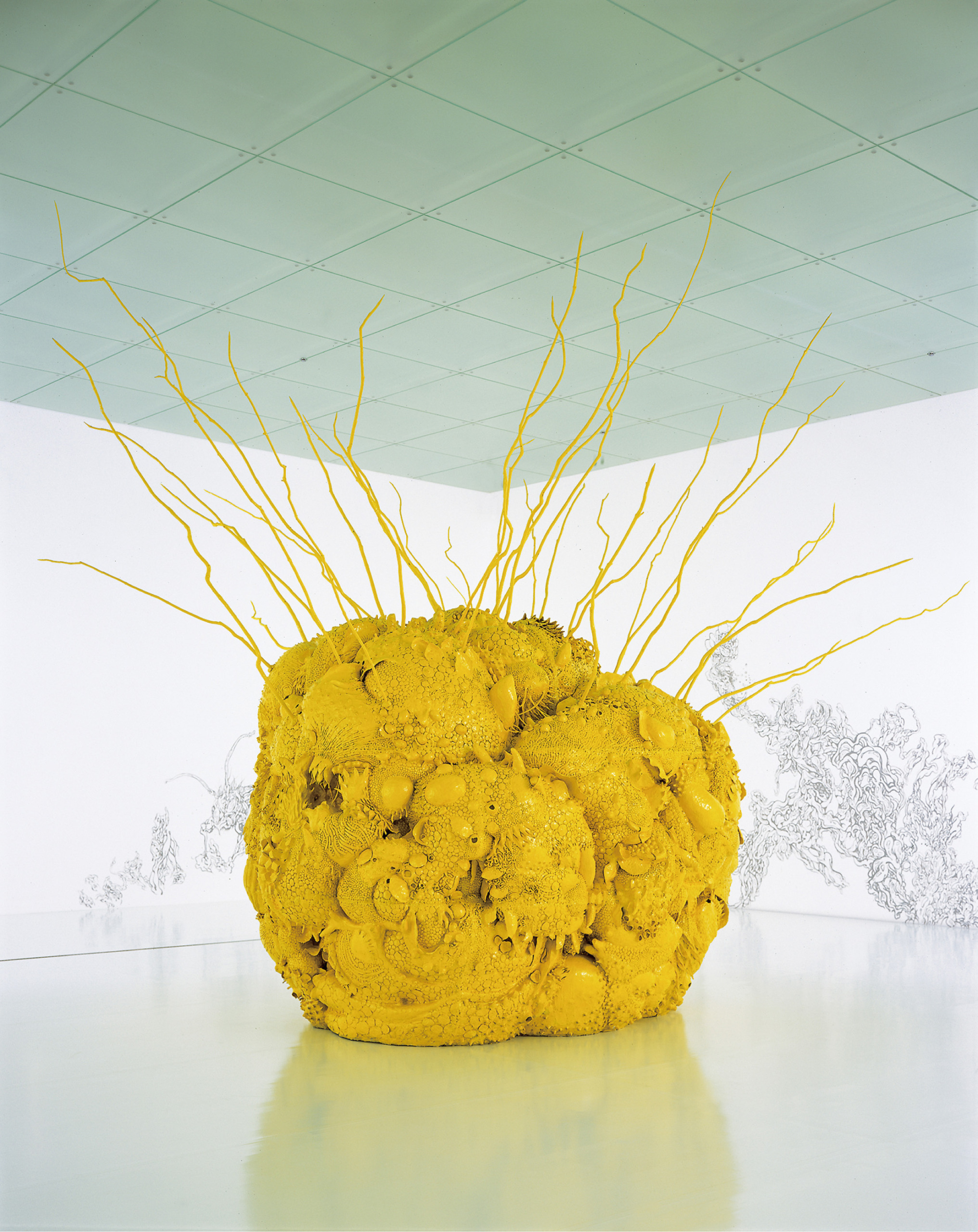
“Prism of the Real” revisits the art that emerged in Japan between 1989 and 2010 while also tracing how Japanese cultural expression inspired audiences around the world at the same time. The roughly two decades covered by the exhibition are marked by the transition from the tumultuous Showa era (1926–89) to the Heisei era (1989–2019) in Japan and the end of the Cold War globally, as well as the advent of contemporary globalization, enabling the freer movement of people, goods, and information. Cocurated and co-organized by the National Art Center, Tokyo, and M+, Hong Kong, this landmark exhibition reflects on this critical transitionary period through the works of more than 50 artists from Japan and abroad.
The exhibition “Bulgari Kaleidos: Colors, Cultures and Crafts” is also on view.
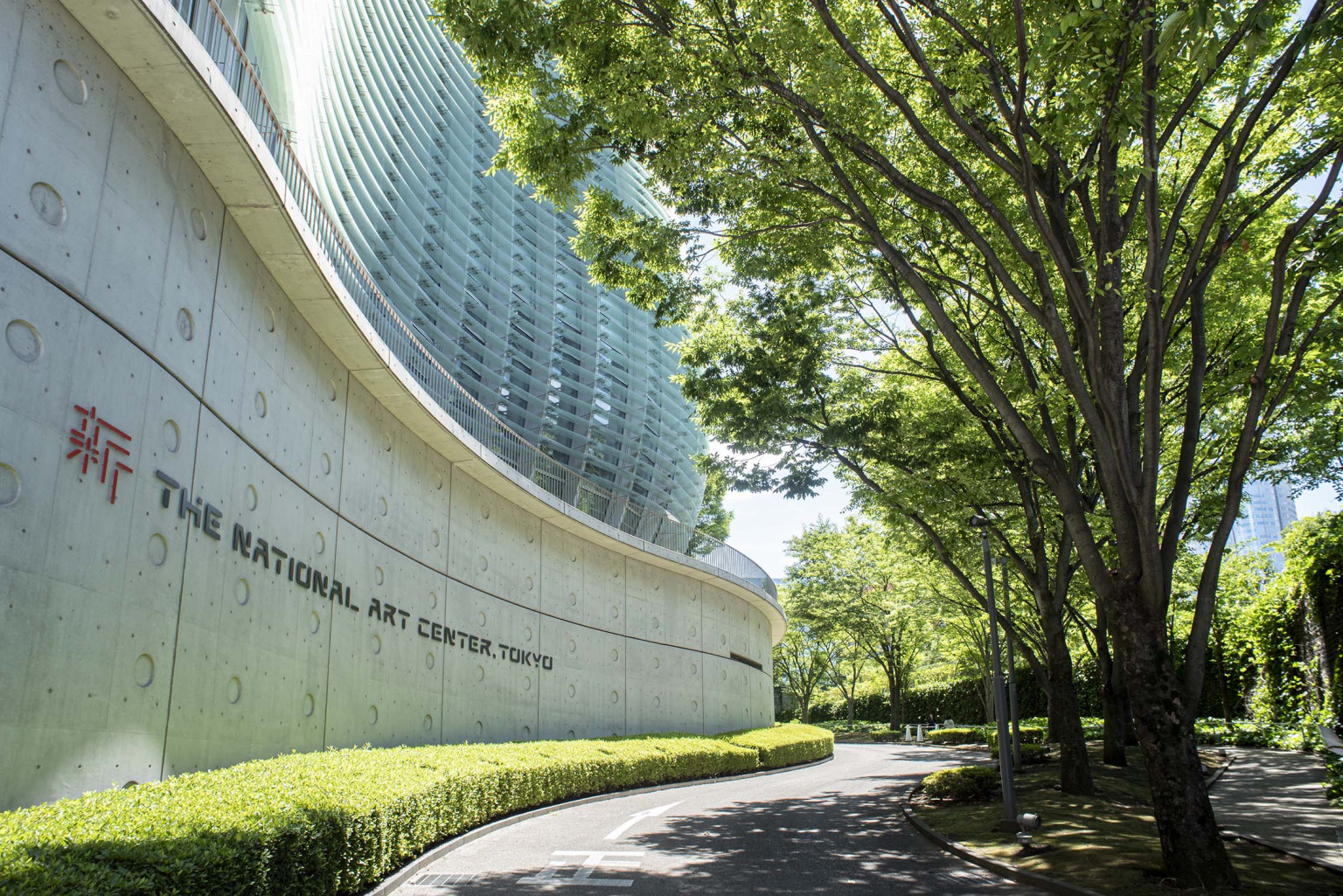
The National Art Center, Tokyo, was founded in 2007. Conceived of as an art center without a permanent collection, the NACT provides a place where the public can experience different forms of artistic expression, make new discoveries, and share diverse values. In addition to hosting a broad spectrum of art in one of Japan’s largest exhibition spaces, the NACT collects, provides, and makes publicly accessible art-related information and resources and also runs educational and public programs.
Architect Kisho Kurokawa envisioned the NACT as an art center surrounded by green spaces. His design for the building is notable for its beautiful facade: an undulating glass wall punctuated by a conical main entrance. Visitors can enjoy views of the changing seasons through the glass.
Dining options on-site.
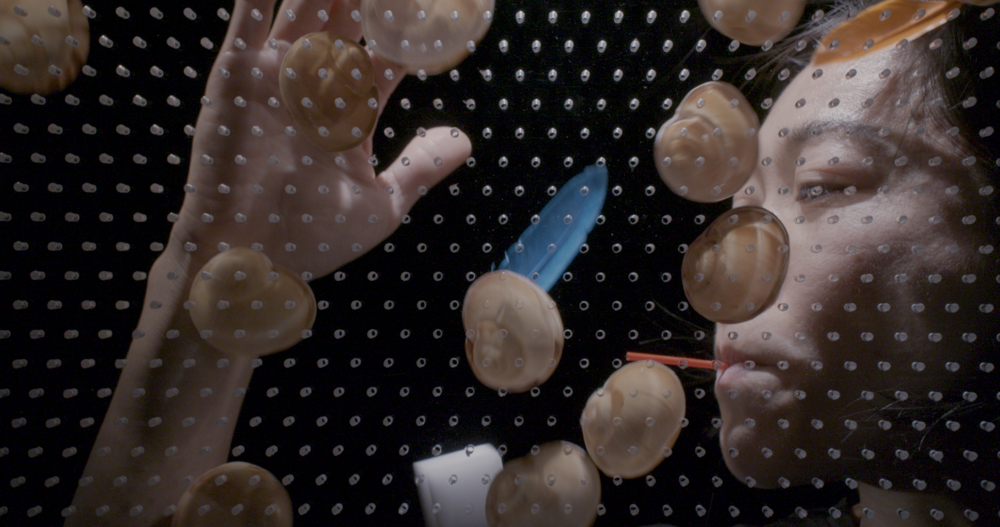
New York–based multimedia artist Aki Sasamoto has gained a worldwide following for her installation/performances that combine individual obsessions, mathematical theory, pop psychology, and other references into powerful commentaries on the absurdity of contemporary life. This exhibition—Sasamoto’s first midcareer survey—will revisit the two-decade-long interplay between sculptural creation and improvised performance in her practice. The featured works will span from her earliest pieces, in which humorous narratives unfold through bodily interactions with specially modified objects and devices, to her latest projects incorporating kinetic elements.
Also on view will be "MOT's 30th Anniversary Exhibition: Choreographies of the Everyday" and "MOT Collection 30th Anniversary Exhibit: Nine Profiles: 1935→2025."
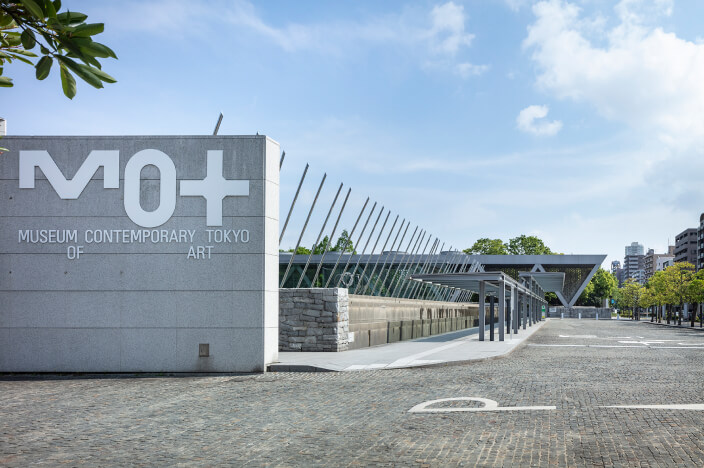
The Museum of Contemporary Art Tokyo opened in 1995 as the city’s first institution for the research, collection, preservation, and display of contemporary art. The museum’s exhibition program features cutting-edge expressions by Japanese and international artists working in contemporary art, fashion, architecture, design, and other fields. Displayed across two floors of dedicated gallery space, the MOT collection comprises over 5,700 works of art, including major works of 20th-century Japanese art, with a focus on the art of the postwar years. The museum has the largest specialty library of its kind in Japan, housing over 270,000 books, catalogues, and periodicals on modern and contemporary art. Its education program engages people of all ages through an active calendar of guided tours, lectures, and workshops.
Dining options on-site.
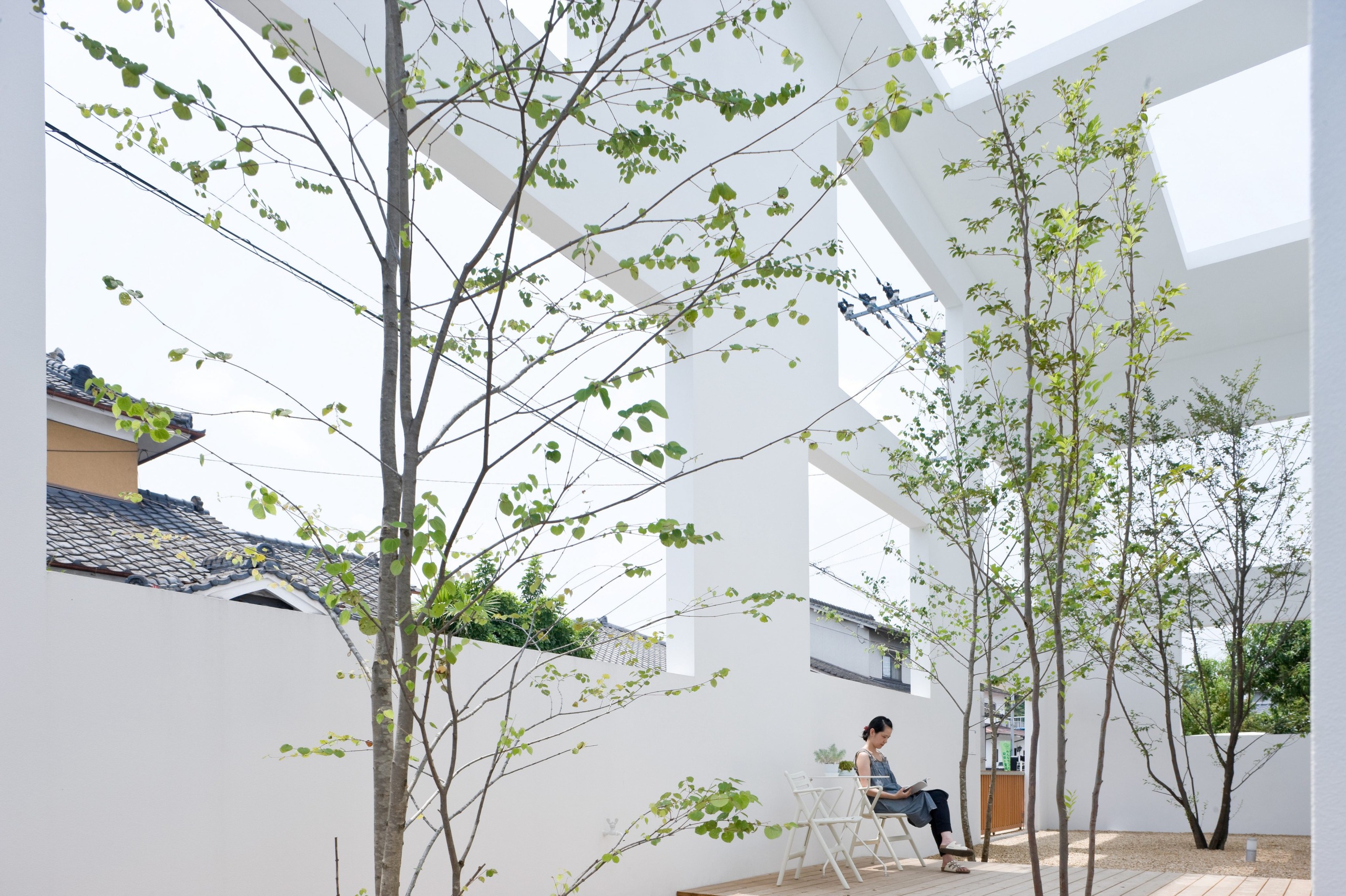
Maintaining offices in Tokyo, Paris, and Shenzhen, Sou Fujimoto is one of the globally recognized faces of contemporary Japanese architecture. He has been lauded for projects ranging from the Musashino Art University Museum & Library in Tokyo (2010) to the Serpentine Pavilion 2013 in London and the House of Music Hungary in Budapest (2021), and was the design producer for Expo 2025 in Osaka. This exhibition is the first major institutional survey of Fujimoto’s work. It will communicate the architect’s visionary practice and philosophy through a diverse array of materials, including installations and large-scale models alongside plans, maquettes, and photographic documentation.
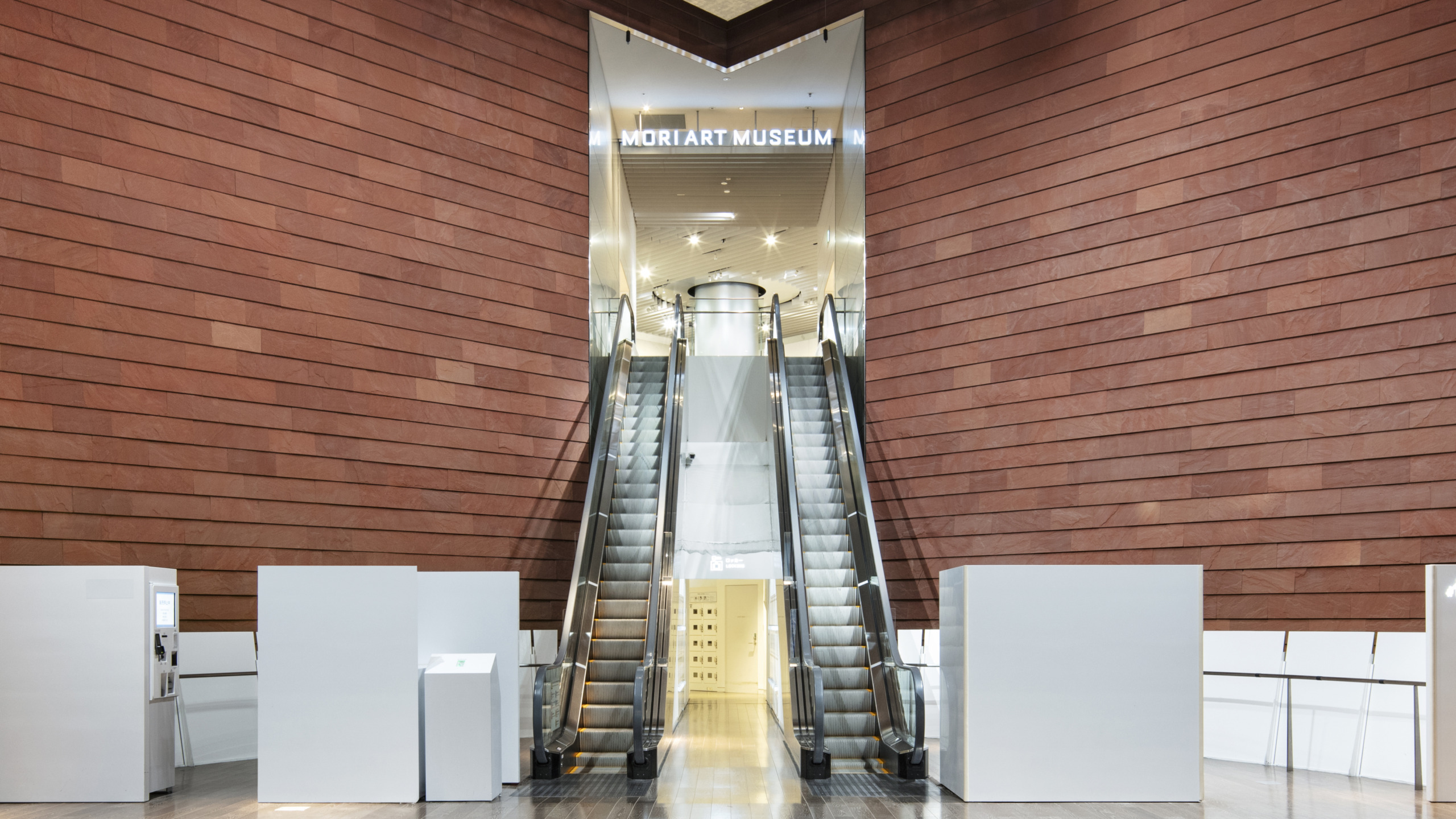
Crowning the Roppongi Hills Mori Tower, the Mori Art Museum is committed to presenting cutting-edge visual arts, architecture, design, and other modes of creative output from around the world. The museum is known for producing groundbreaking monographic exhibitions of important Japanese and international artists, such as Ai Weiwei, Yayoi Kusama, and Takashi Murakami; large-scale thematic surveys covering various topics and geographic regions; and the triennial Roppongi Crossing, which offers an overview of Japanese contemporary art. The museum complements these exhibitions with smaller, more focused programs, such as MAM Collection, which introduces works in the museum’s collection; MAM Screen, which showcases video works; MAM Research, which focuses on exhibiting materials rather than artworks; and MAM Projects, which conducts experimental projects with artists from Japan and beyond.
Pursuing a vision of “Art + Life,” the Mori Art Museum seeks to make contemporary art more accessible to broad audiences. The museum supervises works of public art at Roppongi Hills and Toranomon Hills and organizes art events in collaboration with local communities. The museum is open late six nights a week to enable visitors to enjoy art after work or dinner.
Dining options on-site.

Metals have played an important role throughout the development of human civilization, embodying the diverse and ambivalent properties of the minerals from which they are derived and the techniques used to process them. This exhibition sets out to reexamine the significance of metal as both a material and a symbol through the work of three contemporary artists. Emerging film director Maiko Endo will make a new film installation exploring the connection between the ninth-century Buddhist monk Kukai and mercury. Chu Enoki will contribute works made with scrap material that touch on the notion of the earth as an iron sphere. And Élodie Lesourd’s acrylic on MDF paintings will reflect her analysis of the semiotics of metal music. The exhibition is being held in conjunction with the publication of the Japanese edition of Savoir & Faire: Metal, first published in French in 2018 by Actes Sud and the Fondation d'entreprise Hermès.
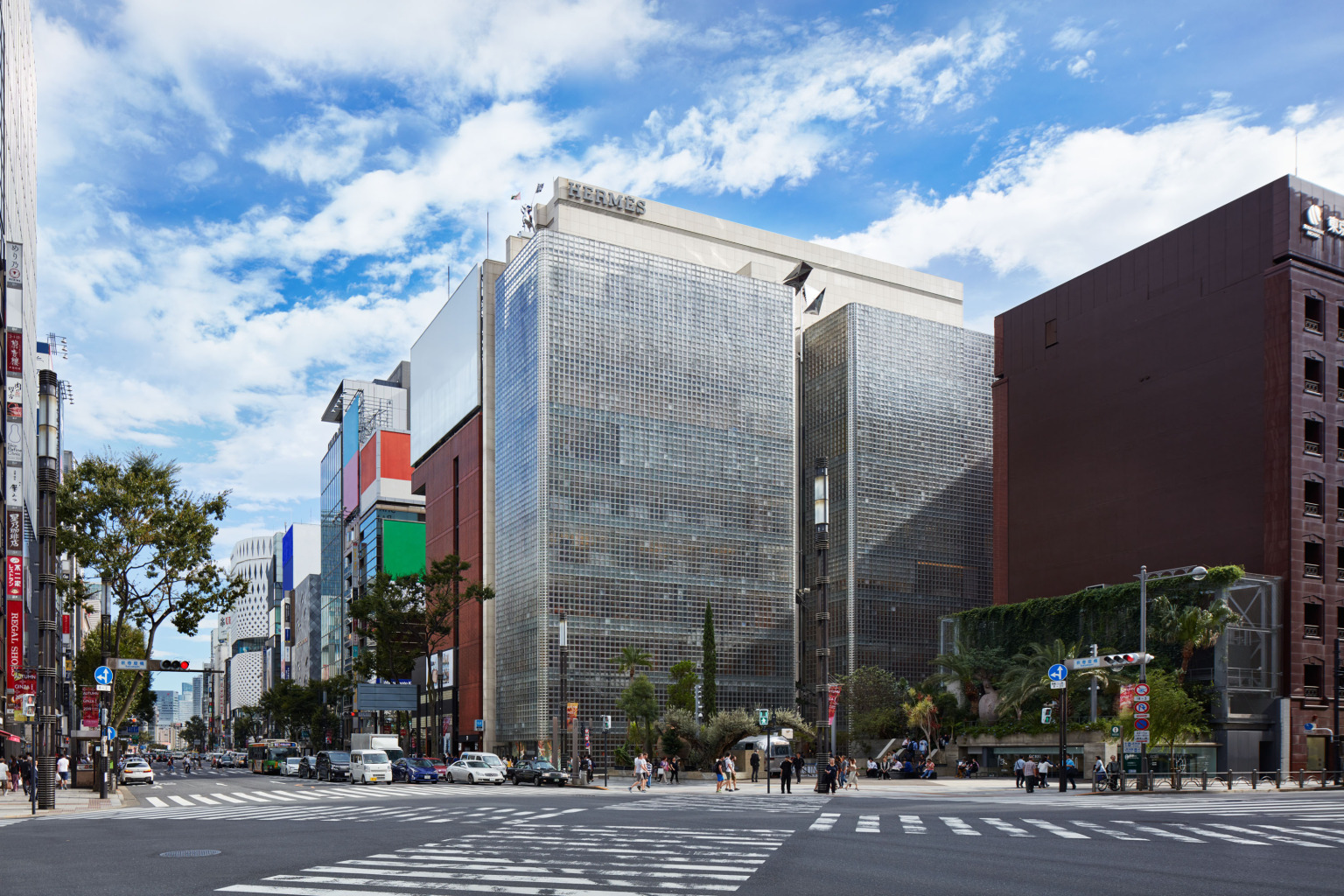
Located on the eighth and ninth floors of the Ginza Maison Hermès building, Le Forum invites Japanese and international artists to create site-specific installations that respond to Renzo Piano’s iconic crystalline architecture. The exhibition program has featured fantastical marble sculptures by Yutaka Sone, an immersive fog installation by Fujiko Nakaya, and a mini retrospective for Argentinean artist Julio Le Parc.
Le Forum is an initiative of the Fondation d’entreprise Hermès. Founded in Paris in 2008, the Fondation is a nonprofit organization that supports projects related to art, the transmission of traditional artisanal techniques, environmental issues, and education.
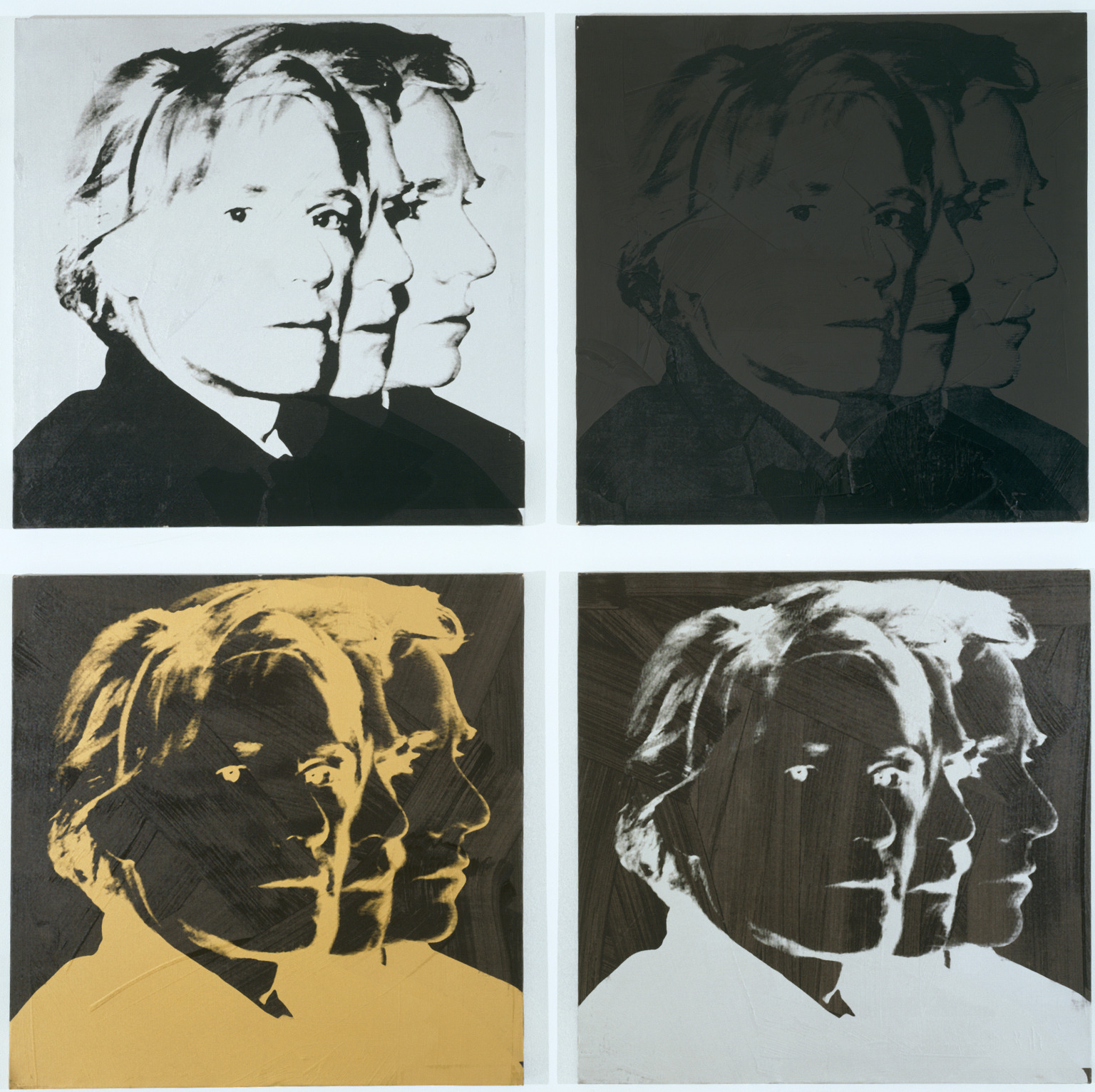
The Espace Louis Vuitton Tokyo is proud to present “Andy Warhol—Serial Portraits,” featuring a selection of celebrated and lesser-known works by the iconic American artist from the collection of the Fondation Louis Vuitton. Andy Warhol was a multifaceted figure, one of Pop Art’s great masters and an extremely prolific artist who worked in New York from 1949, when he started out as advertising illustrator, until his death in 1987. Portraiture was always central to Warhol’s work. He compulsively sketched, photographed, filmed, and silkscreened the people in his entourage. From his Self-Portrait of 1963–64 to 1981’s enigmatic The Shadow, the works assembled here illustrate both the evolution of the artist’s media image and the technical and stylistic development of his artistic practice. His rarely shown drawings of young men, sketched in ballpoint pen in the 1950s, open the exhibition and offer an uncommon glimpse of the expressive, highly personal style that was characteristic of his early advertising illustrations. The exhibition establishes a common thread connecting these Unidentified Male sketches to the photo booth snapshots in a dishevelled fright wig taken the year before the artist’s death and his Ten Portraits of Jews of the Twentieth Century from the 1980s—the fruit of a ceaseless exploration of mechanized artistic techniques.
Espace Louis Vuitton Tokyo stays open until 10pm on November 5.
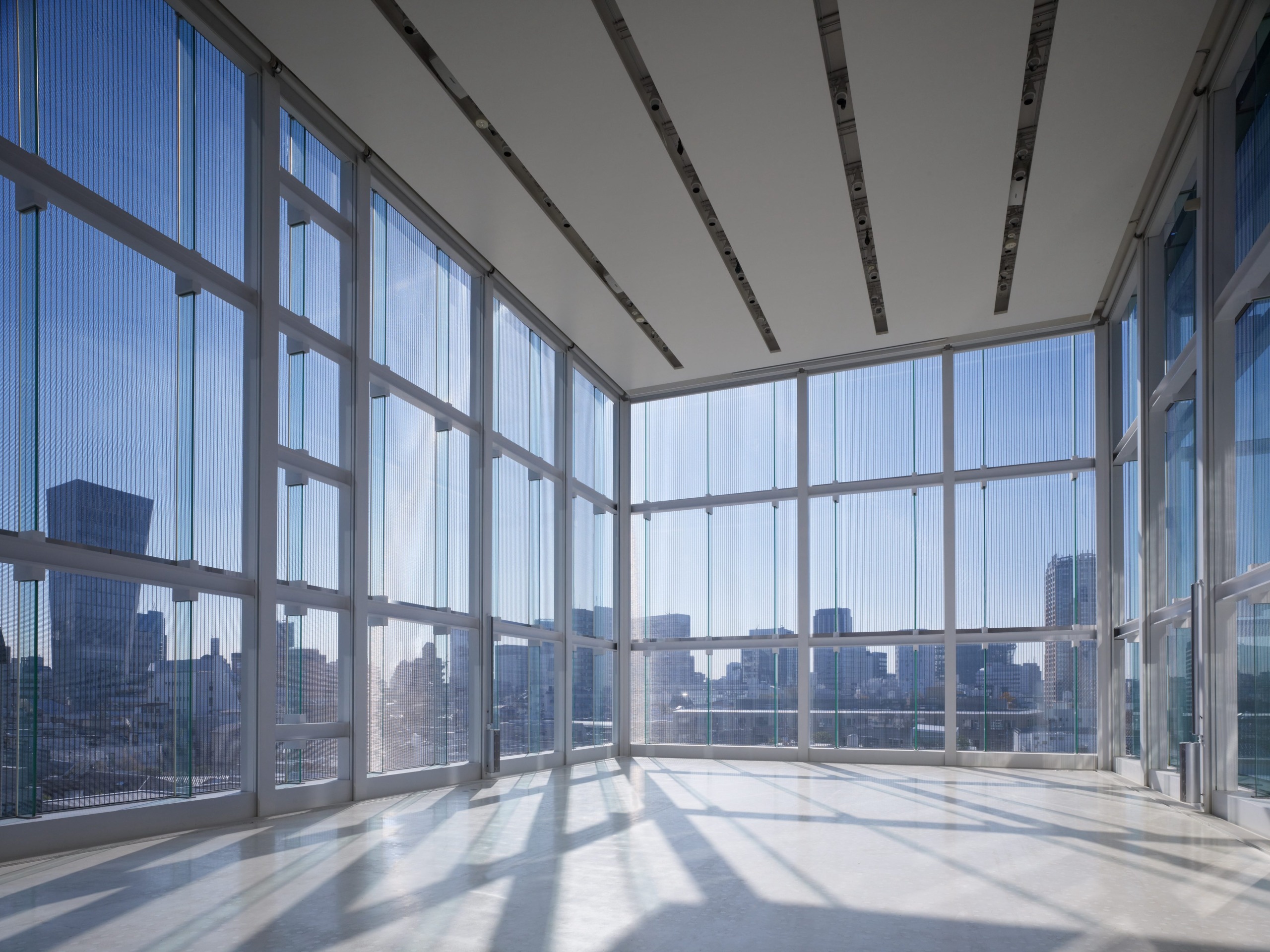
Espace Louis Vuitton Tokyo is located on the seventh floor of the Louis Vuitton Omotesando building. The space is dedicated to holding exhibitions organized in the framework of the Hors-les-murs program developed by the Fondation Louis Vuitton, a cultural and artistic institution dedicated to contemporary art, artists, and the works that inspire them. The program presents artworks from the foundation’s collection at Espace Louis Vuitton venues in Tokyo, Osaka, Seoul, Beijing, Venice, and Munich, with the goal of bringing the collection to broad audiences around the world.
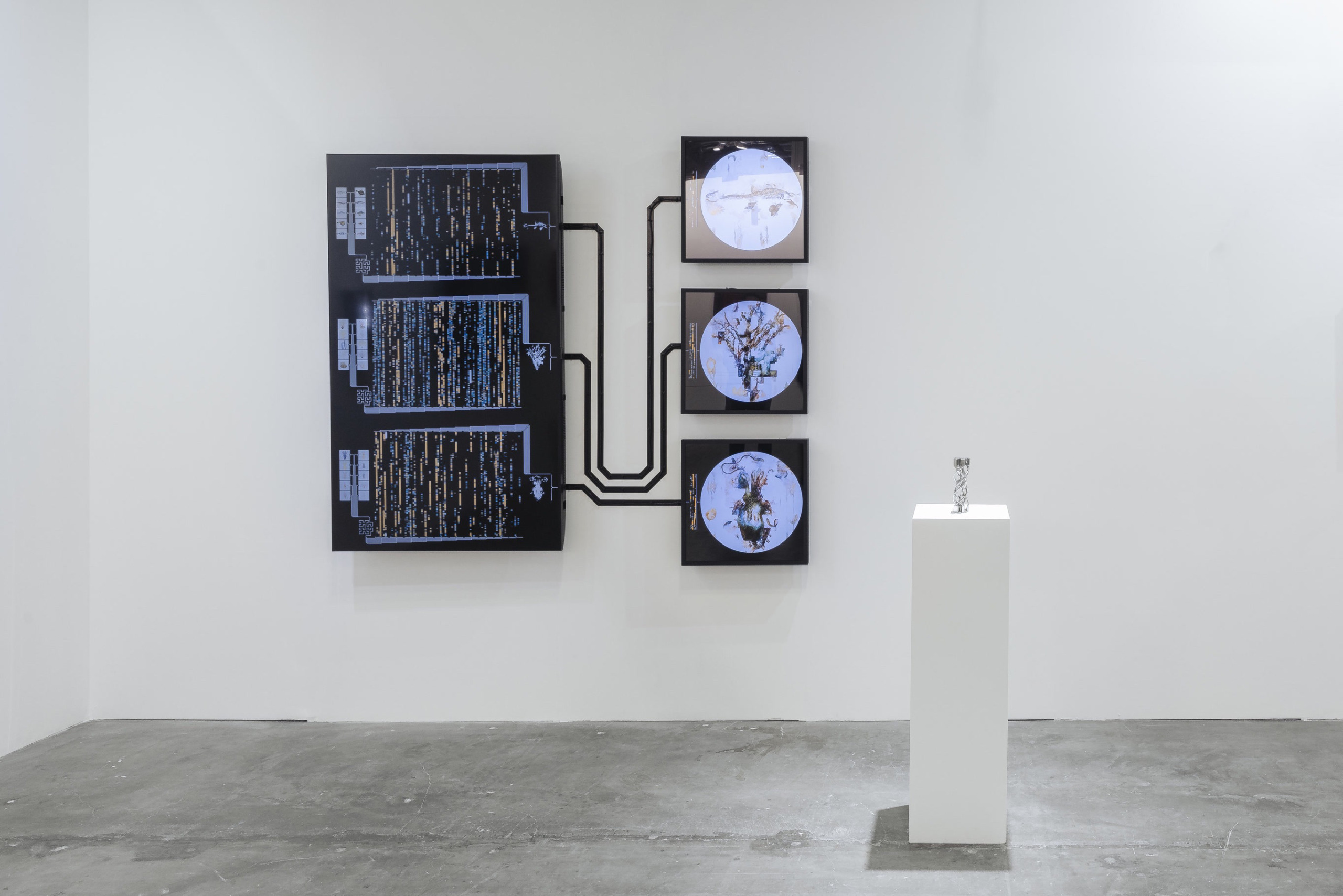
The Lisbon-based artist Sofia Crespo and the artistic duo Entangled Others work at the critical juncture where global art and technology converge. “Synthetic Natures” brings the artists together in Tokyo to present a cutting-edge exhibition that combines AI art and ecology. The exhibition will feature four series of works spanning from video installations to sculptures and other mediums: liquid strata: argomorphs, which explores the world more than 2,000 meters below the ocean surface; specious upwellings, which connects the global phenomenon of oceanic upwelling with the visual language of AI; temporally uncaptured, inspired by the histories of botany and photography; and self-contained, which overlays the structures of genetic information and digital data. Interpreting the world through fragments and hypotheses, these works express a vision that emerges at the crossroads of poetic imagination and scientific inquiry. Images generated by AI are not substitutes for nature. Rather they reflect deep-seated human desires for how we wish to see nature. As these images entwine, resonate, and evolve, they quietly shift our perceptions of the real world.
Curator-led gallery talks will be held at 3pm on Friday, November 7, and Saturday, November 8. Admission is free, no reservation required.
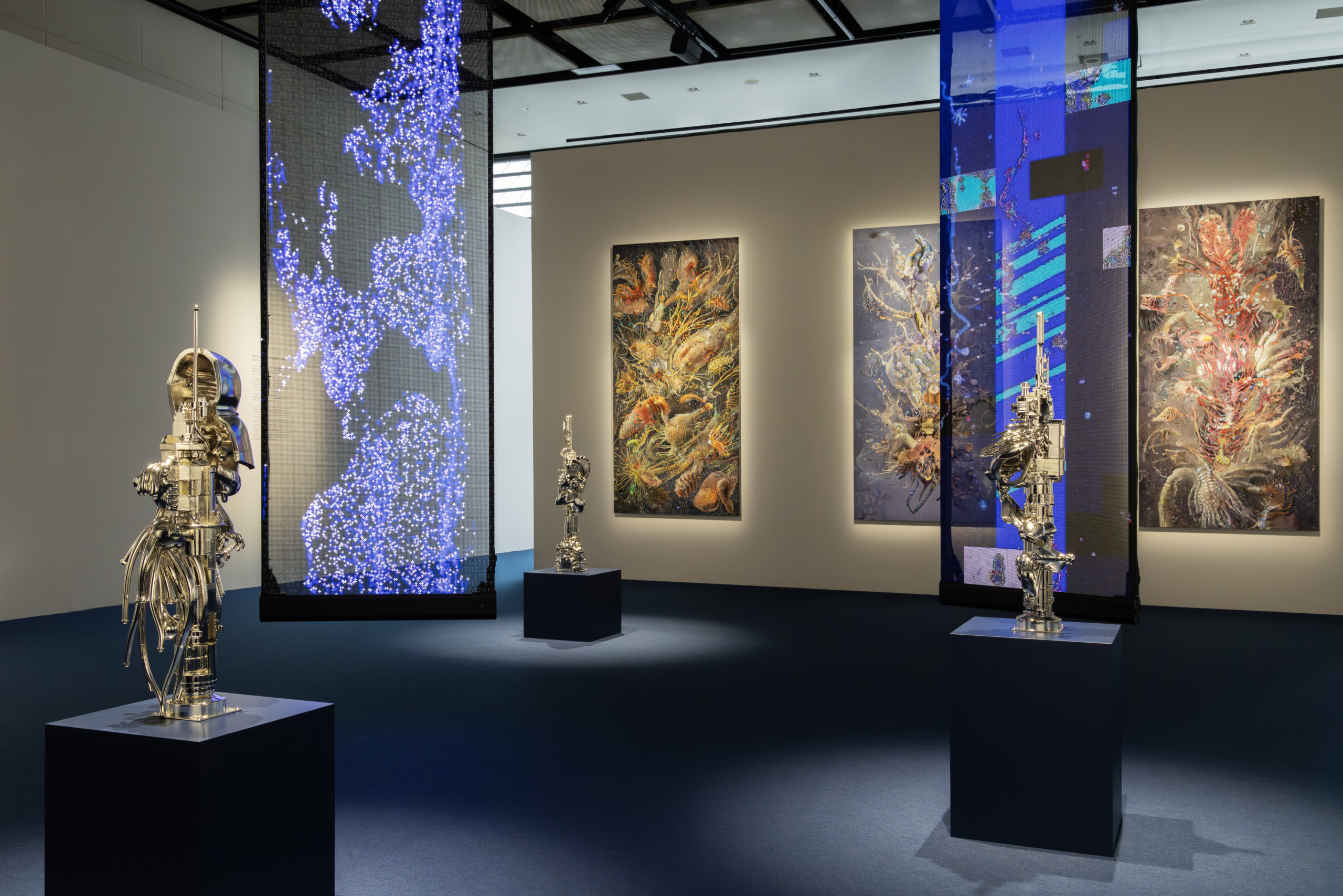
Celebrating its 20th anniversary this year, Chanel Nexus Hall was established in 2004 as a venue dedicated to the spirit of Gabrielle Chanel, who was an impassioned patron of art, music, and fashion. The space is known for showcasing creativity in all its forms and pushing the boundaries of contemporary art through programming that seeks to reflect the reality of an endlessly diverse world at a pivotal moment of technological change. By engaging artists, curators, and practitioners, the venue fosters cross-cultural exchange and acts as a crucial platform for dialogue and artistic collaboration.
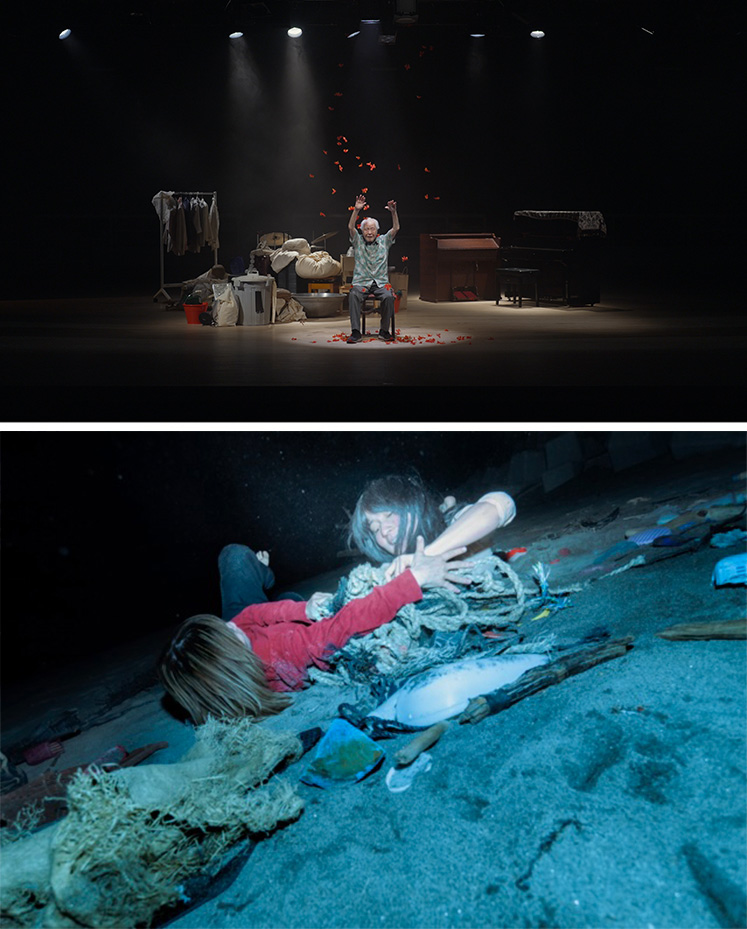
The Jam Session exhibition series invites contemporary artists to make work in dialogue with the encyclopedic Ishibashi Foundation Collection. This year’s edition features two artists, Chikako Yamashiro and Lieko Shiga. Combining elements of humor and performance with a critical sensibility, Yamashiro’s videos address social conditions in her native Okinawa, where Japanese colonization and a massive US military presence create complex layers of oppression and resistance. Known for surrealistic photos that blur the lines between staging and documentation, Shiga has a deep creative relationship with the small coastal community of Kitakama, Miyagi Prefecture, where she was based for many years. Her recent works reflect on how the imbalanced relations between center and periphery inform the region’s recovery from the devastating Tohoku earthquake and tsunami of March 2011.
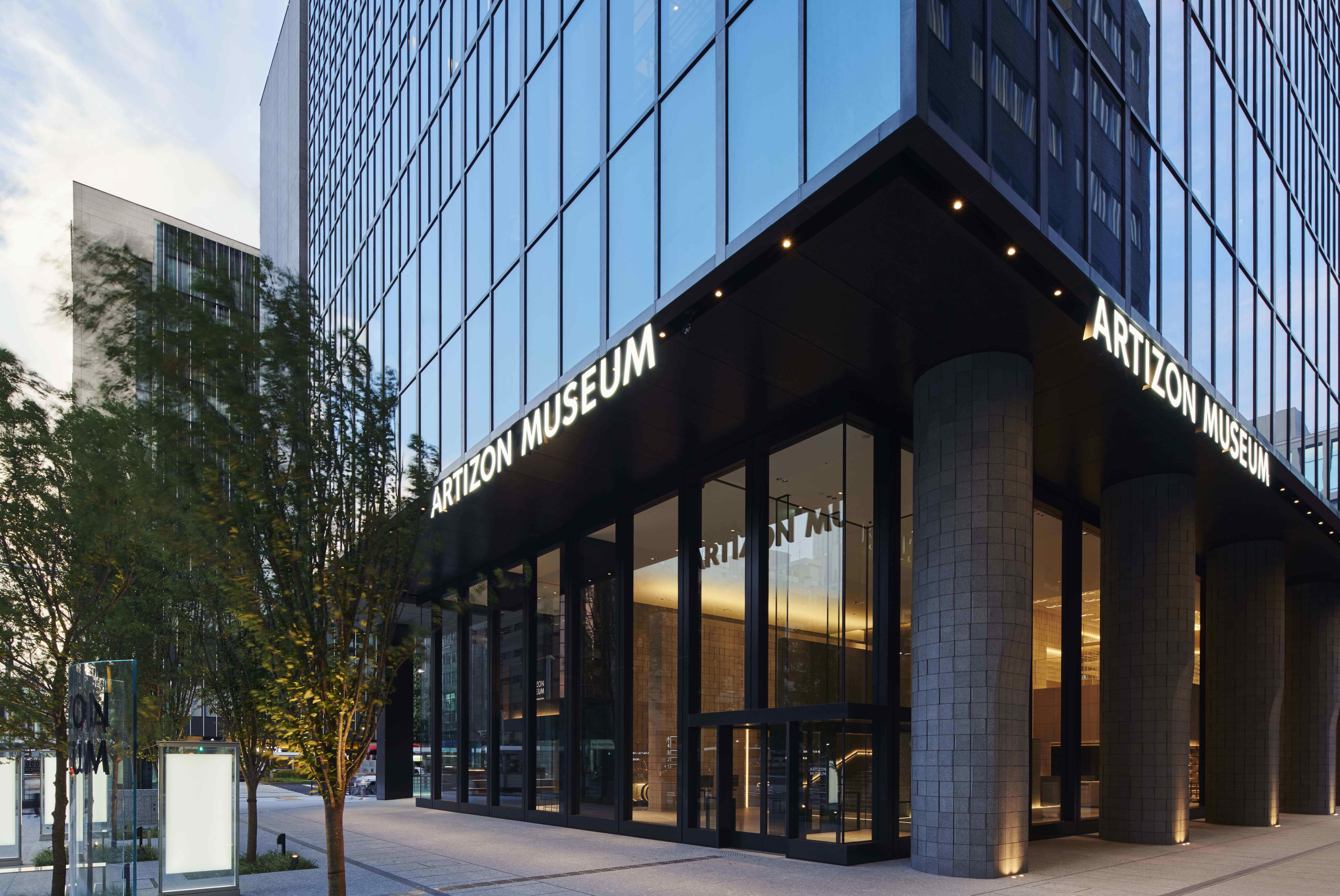
The Artizon Museum offers cutting-edge cultural experiences in the heart of central Tokyo. Originally known as the Bridgestone Museum of Art, the museum was established in 1952 to house the collection of its founder, Shojiro Ishibashi. Now numbering some 3,000 artworks, the encyclopedic collection is grounded in businessman and philanthropist Shojiro Ishibashi’s personal holdings, spanning from Impressionist masterpieces to Japanese Western-style paintings, and from antiquities to contemporary art.
The museum relaunched in 2020 with the opening of new state-of-the-art facilities anchoring the 23-story Museum Tower Kyobashi. The name Artizon, which combines the words “art” and “horizon,” reflects the museum’s mission to transcend generational and geographic boundaries, serve the public interest, and shape the future. This is achieved through a robust program of exhibitions that interweave art histories from different continents and centuries.
Dining available on-site.
Open days during Art Week Tokyo:
Nov 5 (Wed), Nov 7 (Fri)–Nov 9 (Sun)
Click here for more details
From ¥4,000〜

For almost two centuries this restaurant has served traditional eel dishes according to recipes passed down since the Edo period. The unaju (eel rice box) is a highlight.
Open days during Art Week Tokyo:
Nov 5 (Wed)–Nov 9 (Sun)
Click here for more details
Lunch around ¥1,100 / Dinner around ¥3,500
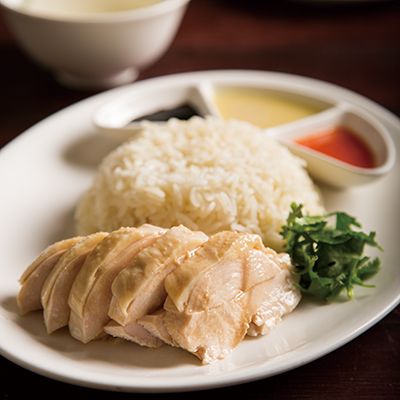
This restaurant is famous for its Hainan chicken rice, one of the national dishes of Singapore. You can also enjoy a variety of other popular Singaporean dishes like laksa, bak kut teh, and Hokkien mee, all of which showcase the city-state's diverse food culture. The Ebisu and Shibuya locations are also popular.
Open days during Art Week Tokyo:
Nov 5 (Wed)–Nov 8 (Sat)
Click here for more details
From ¥1,000

This restaurant is a pioneer of the global onigiri boom. Each rice ball is made to order with fluffy rice, flavorful nori, sea salt, and carefully selected fillings.
Open days during Art Week Tokyo:
Nov 5 (Wed)–Nov 9 (Sun)
Click here for more details
From ¥1,000

The recommended item here is the strawberry shortcake, which achieves an exquisite balance of sponge cake, fresh cream, and strawberries.
Open days during Art Week Tokyo:
Nov 5 (Wed)–Nov 9 (Sun)
Click here for more details
Lunch from ¥3,630

Made with seasonal ingredients, the crisp kushikatsu here is among Tokyo’s finest. Enjoy the shitamachi vibe in a space designated as a National Registered Tangible Cultural Property.
Open days Art Week Tokyo:
Nov 5 (Wed)–Nov 9 (Sun)
Click here for more details
From ¥1,000

This laid-back standing bar is known for its flavorful ice-free highballs. Drop in for a quick drink or linger over creative bar snacks.
Open days during Art Week Tokyo:
Nov 5 (Wed)–Nov 9 (Sun)
Click here for more details
From ¥8,000

O2 offers a creative dining experience that blends classic Chinese cuisine with Japanese and Vietnamese influences. Enjoy a full-course meal that is rich in flavor and innovation.
Open days during Art Week Tokyo:
Nov 7 (Fri)–Nov 9 (Sun)
Click here for more details
From ¥700

Try an original drink themed around matcha and fermentation, created under the supervision of artist Mitsunori Sakano. You can also enjoy a miso soup from the Misonomi brand inspired by Sakano's painting Eating.
Open days during Art Week Tokyo:
Nov 5 (Wed)–Nov 9 (Sun)
Click here for more details
From ¥3,800 (Exclusive of tax and service charge)
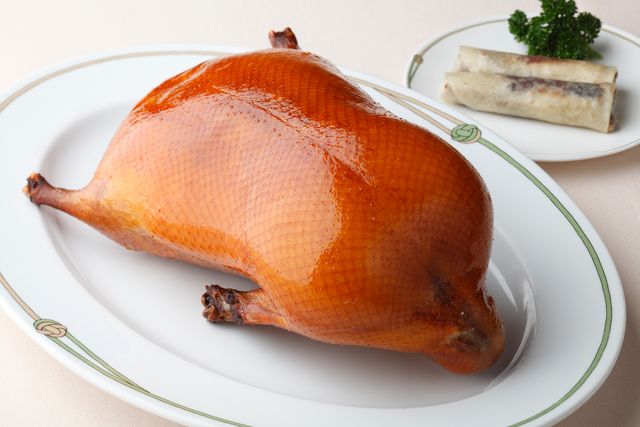
This upscale Chinese restaurant blends traditional Shanghai and Cantonese cuisines. Enjoy course meals or choose from over 100 à la carte dishes made with seasonal ingredients, all in a serene and sophisticated setting.
Open days during Art Week Tokyo:
Nov 5 (Wed)–Nov 9 (Sun)
Click here for more details
From ¥5,000
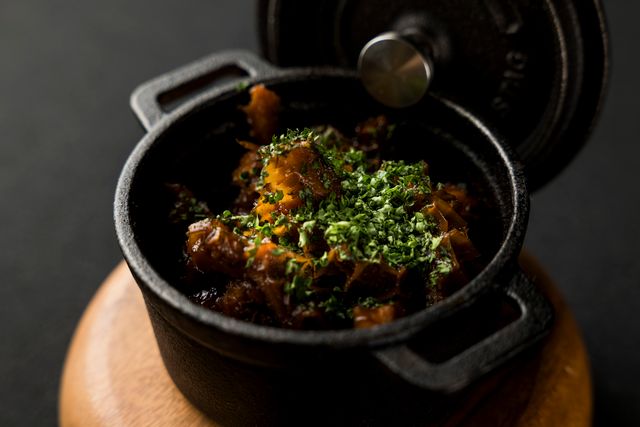
This casual wine dining spot features authentic French cuisine from Restaurant L'aube.
Open days during Art Week Tokyo:
Nov 5 (Wed)–Nov 9 (Sun)
Click here for more details
From ¥1,000
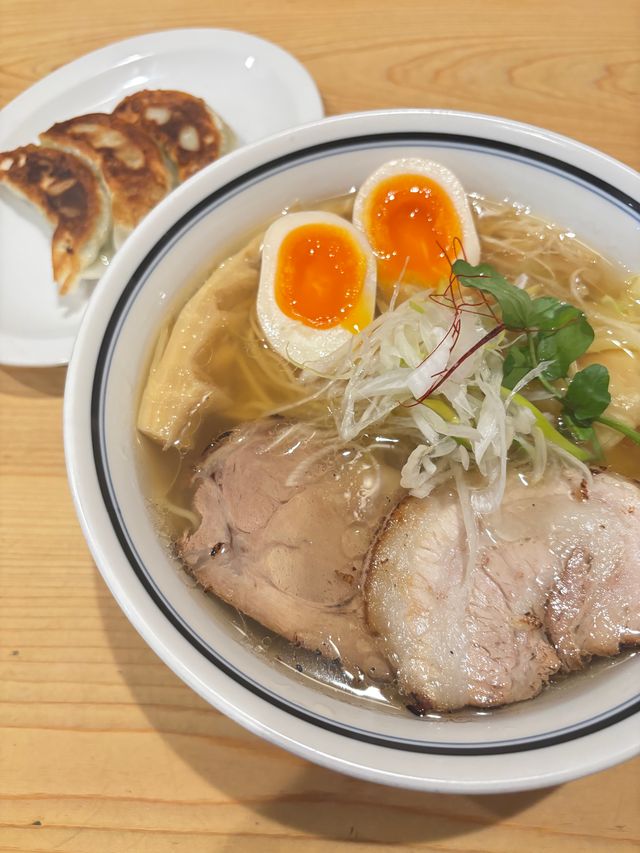
The soup here, made with premium Rishiri kelp, is known for its deep umami and refined richness. Made without artificial flavorings, the ramen has a clean finish that will have you craving another bowl.
Open days during Art Week Tokyo:
Nov 5 (Wed)–Nov 9 (Sun)
Click here for more details
Lunch from ¥10,780 / Dinner from ¥21,780
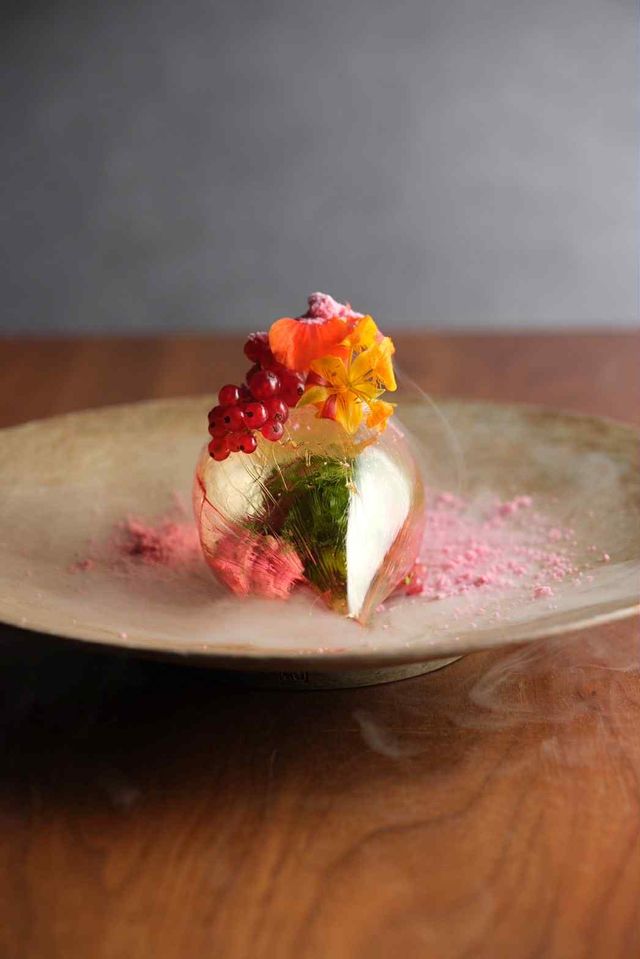
Up-and-coming chef Yujiro Takahashi achieves a new take on traditional French cuisine by incorporating innovative processes like aging and fermentation.
Open days during Art Week Tokyo:
Nov 5 (Wed)–Nov 9 (Sun)
Click here for more details
From ¥3,300
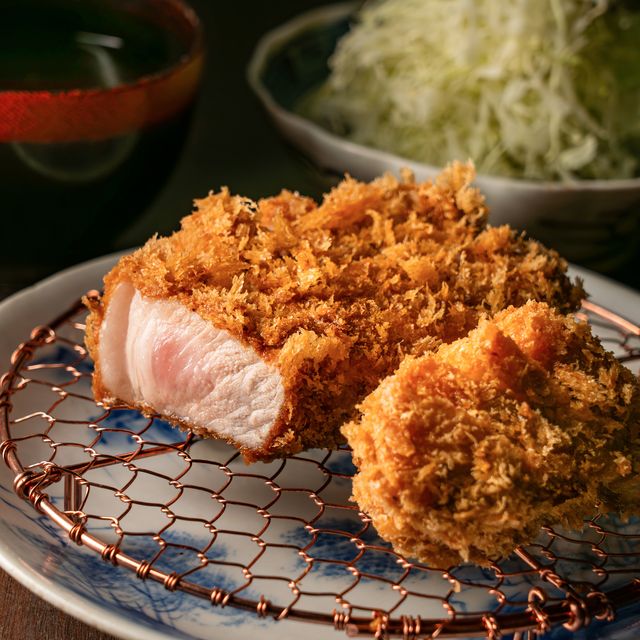
Crispy on the outside, juicy and tender on the inside! The top-quality tonkatsu cutlets here are made from carefully selected pork from all over Japan. A favorite among both locals and visitors.
Open days during Art Week Tokyo:
Nov 5 (Wed)–Nov 8 (Sat)
Click here for more details
From ¥10,000
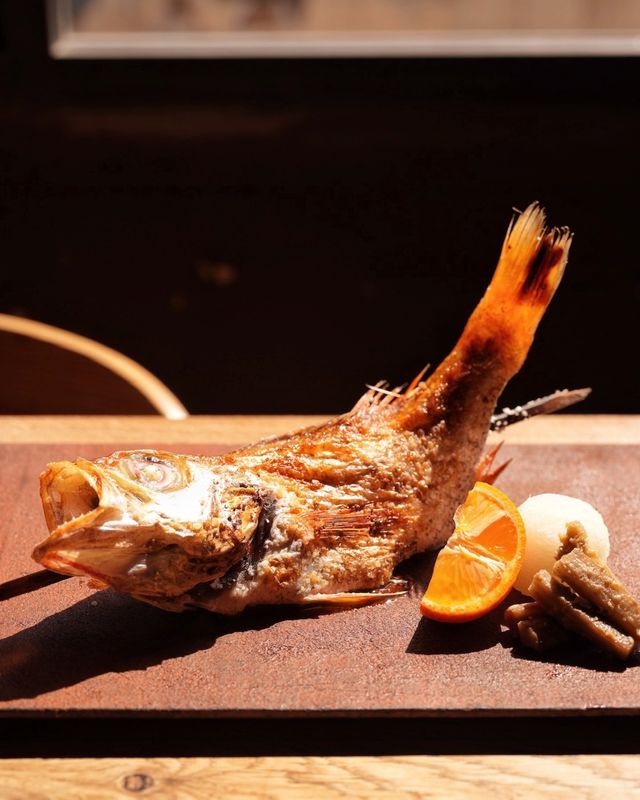
Sowado offers creative takes on classic izakaya fare through beautifully crafted seasonal dishes and premium sake.
Open days during Art Week Tokyo:
Nov 5 (Wed)–Nov 9 (Sun)
Click here for more details
From ¥1,850
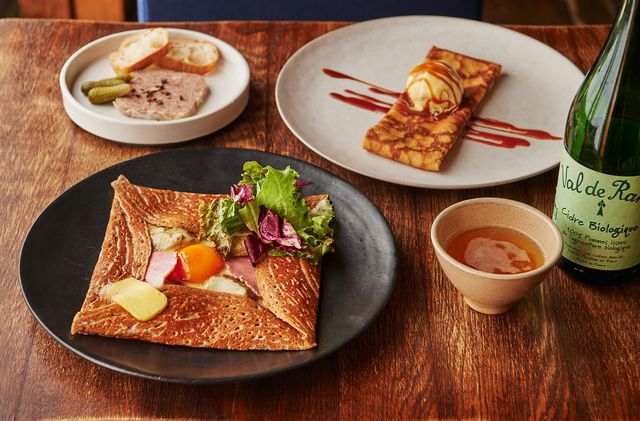
Drop in for traditional buckwheat galettes and sweet crêpes from Brittany, paired with fruity and elegant French ciders. A specialty cider shop is conveniently located right next door.
Open days during Art Week Tokyo:
Nov 5 (Wed)–Nov 9 (Sun)
Click here for more details
From ¥8,000
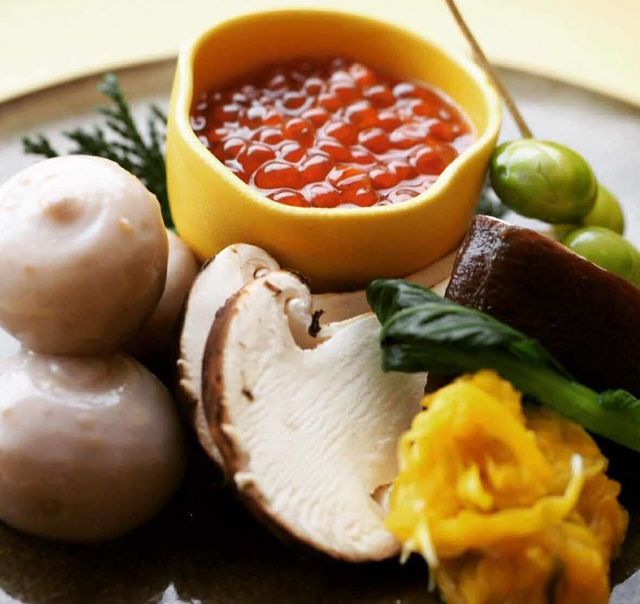
Enjoy a refined omakase course featuring seasonal ingredients such as fugu and other fresh fish. The course conludes with fragrant homemade soba noodles made from whole buckwheat.
Open days during Art Week Tokyo:
Nov 5 (Wed)–Nov 9 (Sun)
Click here for more details
Soba from ¥1,100 / À la carte dishes from ¥1,650
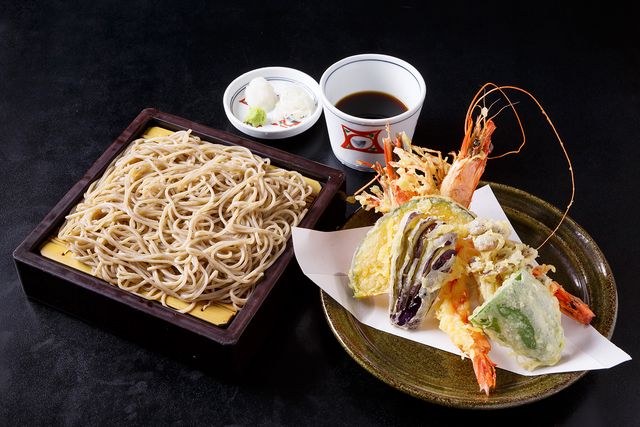
Kawakami-an Aoyama is the Tokyo outpost of its namesake in Karuizawa. Sobayazake, local sake, wine, and a la carte dishes are on offer here.
Open days during Art Week Tokyo:
Nov 5 (Wed)–Nov 9 (Sun)
Click here for more details
From ¥2,000
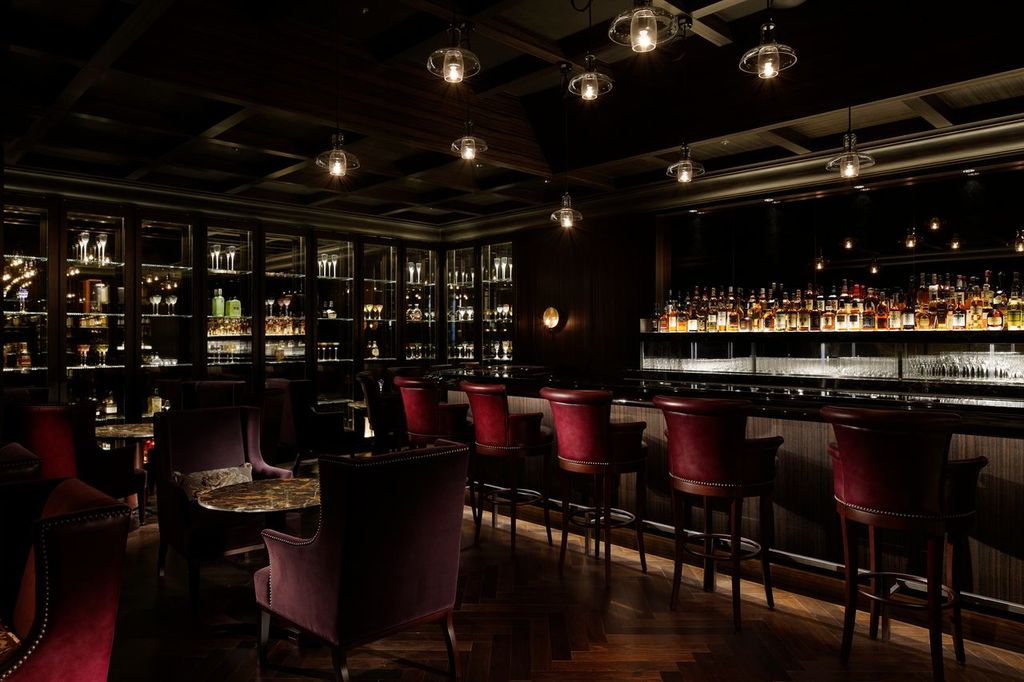
This authentic main bar preserves the original counter from the Palace Hotel’s founding days. The classic martini is the signature cocktail here.
Open days during Art Week Tokyo:
Nov 5 (Wed)–Nov 9 (Sun)
Click here for more details
From ¥3,000 (Standard Cocktail), From ¥3,900 (Glass of Champagne)

This place combines three establishments in one: The Bar, The Lounge, and Chef's Table. The view from the 41st floor of the hotel enhances drinks, tea time, and dinner course meals.
Open days during Art Week Tokyo:
Nov 5 (Wed)–Nov 9 (Sun)
Click here for more details
From ¥2,500
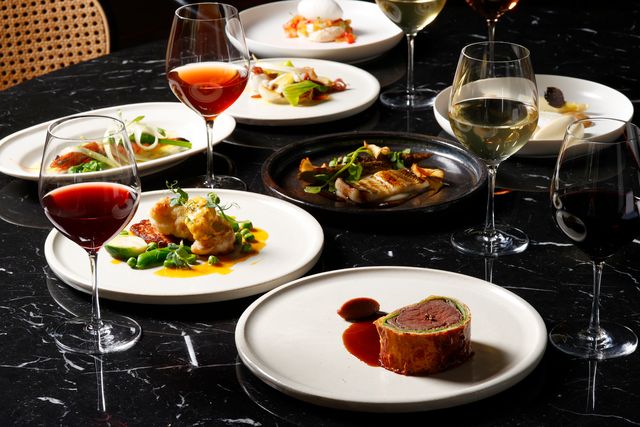
Japan’s first restaurant by the Conran Shop. A modern French style infused with British essence, paired with natural wines, offering a unique dining experience that can only be enjoyed on that day.
Open days during Art Week Tokyo:
Nov 5 (Wed)–Nov 9 (Sun)
Click here for more details
From ¥1,000
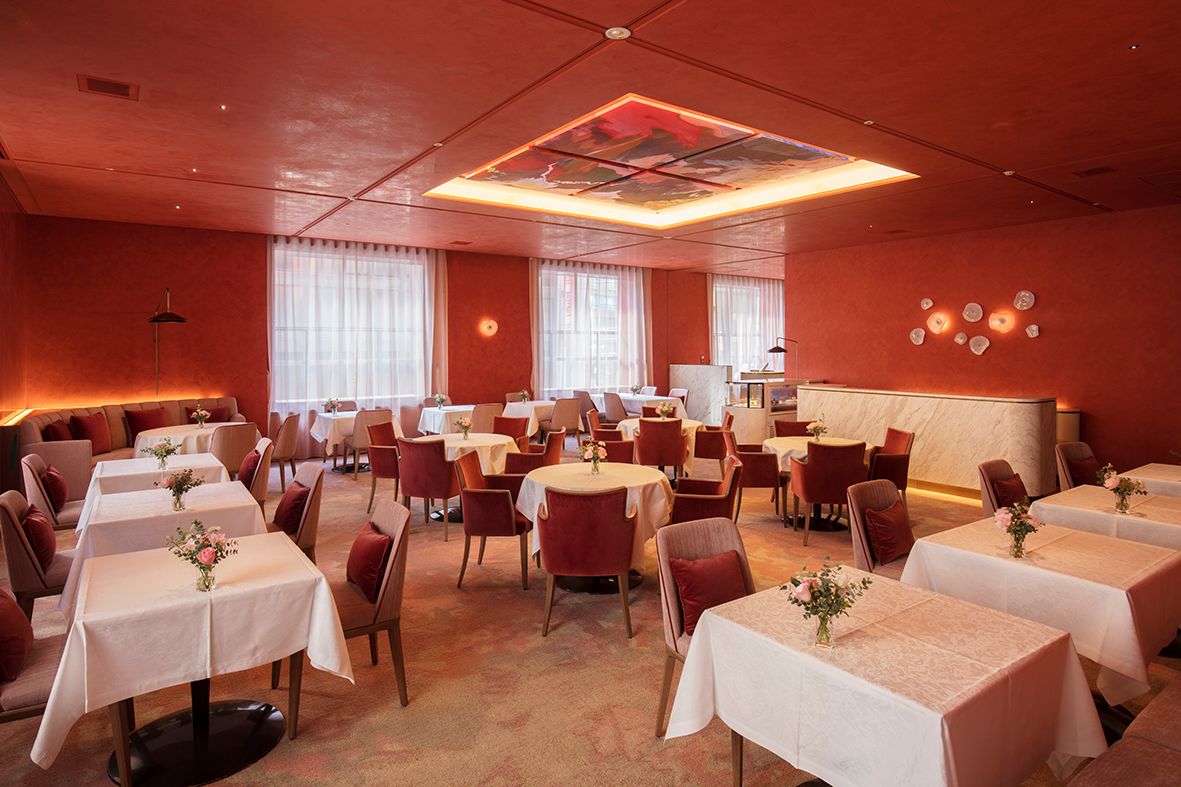
Enjoy specialty parfaits, desserts, seasonal drinks, and snacks made with fresh seasonal fruits in an elegant space that carries on a tradition of elegant design.
Open days during Art Week Tokyo:
Nov 5 (Wed)–Nov 9 (Sun)
Click here for more details
Lunch from ¥6,000 / Dinner from ¥15,000

This restaurant offers modern Indian cuisine that blends traditional flavors with Japanese ingredients. The menu showcases the chef's creative play on spices and seasonal ingredients.
Open days during Art Week Tokyo:
Nov 5 (Wed)–Nov 9 (Sun)
Click here for more details
Kamameshi from ¥1,300 / Yakitori from ¥240

Signature dishes include juicy yakitori chicken skewers grilled over binchotan charcoal and comforting kamameshi rice pots. Come here to enjoy simple yet deeply satisfying flavors.
Open days during Art Week Tokyo:
Nov 5 (Wed)–Nov 9 (Sun)
Click here for more details
From ¥1,000
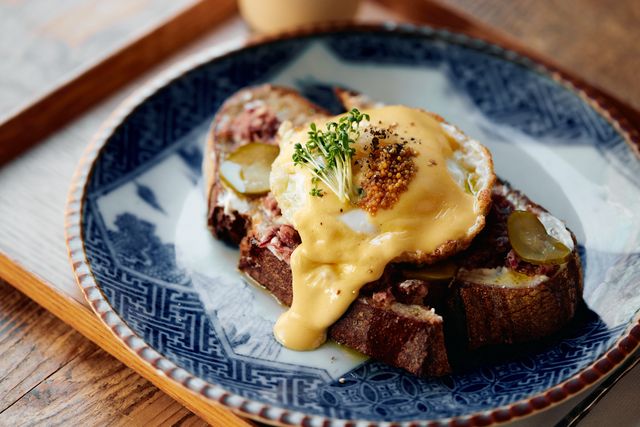
This bakery is produced by chef Shinobu Namae of the three-Michellin-starred French restaurant L’Effervescence. The shop also has a coffee stand and café dining space that complement the more than 40 kinds of bread on offer.
Open days during Art Week Tokyo:
Nov 5 (Wed)–Nov 9 (Sun)
Click here for more details
Lunch from ¥3,200 / Dinner from ¥6,600
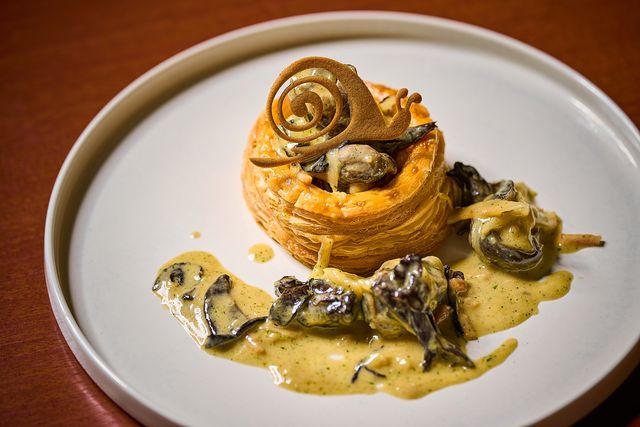
Open morning, noon, and night, this casual spot welcomes you anytime. The menu offers hearty bistro dishes and savory buckwheat galettes—perfect for any mood or occasion.
Open days during Art Week Tokyo:
Nov 5 (Wed)—Nov 9 (Sun)
Click here for more details
Lunch from ¥6,000 / Dinner from ¥12,000
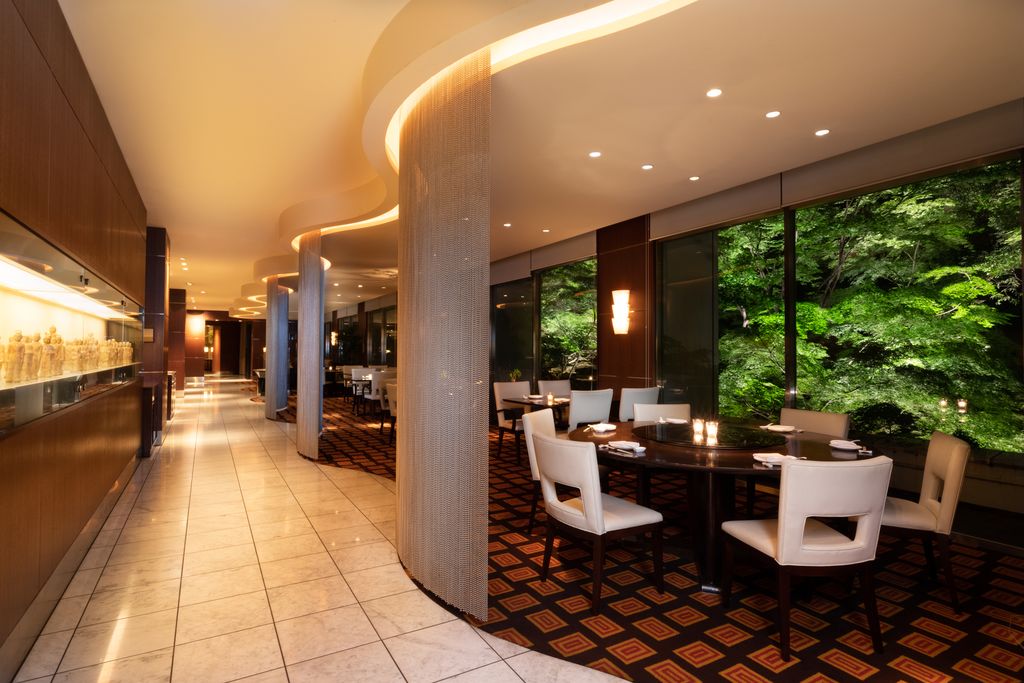
Experience a bold take on Sichuan cuisine that combines traditional Chinese spices with seasonal Japanese ingredients. The garden view enhances this rich and memorable dining experience.
Open days during Art Week Tokyo:
Nov 5 (Wed)–Nov 9 (Sun)
Click here for more details
From ¥15,000〜
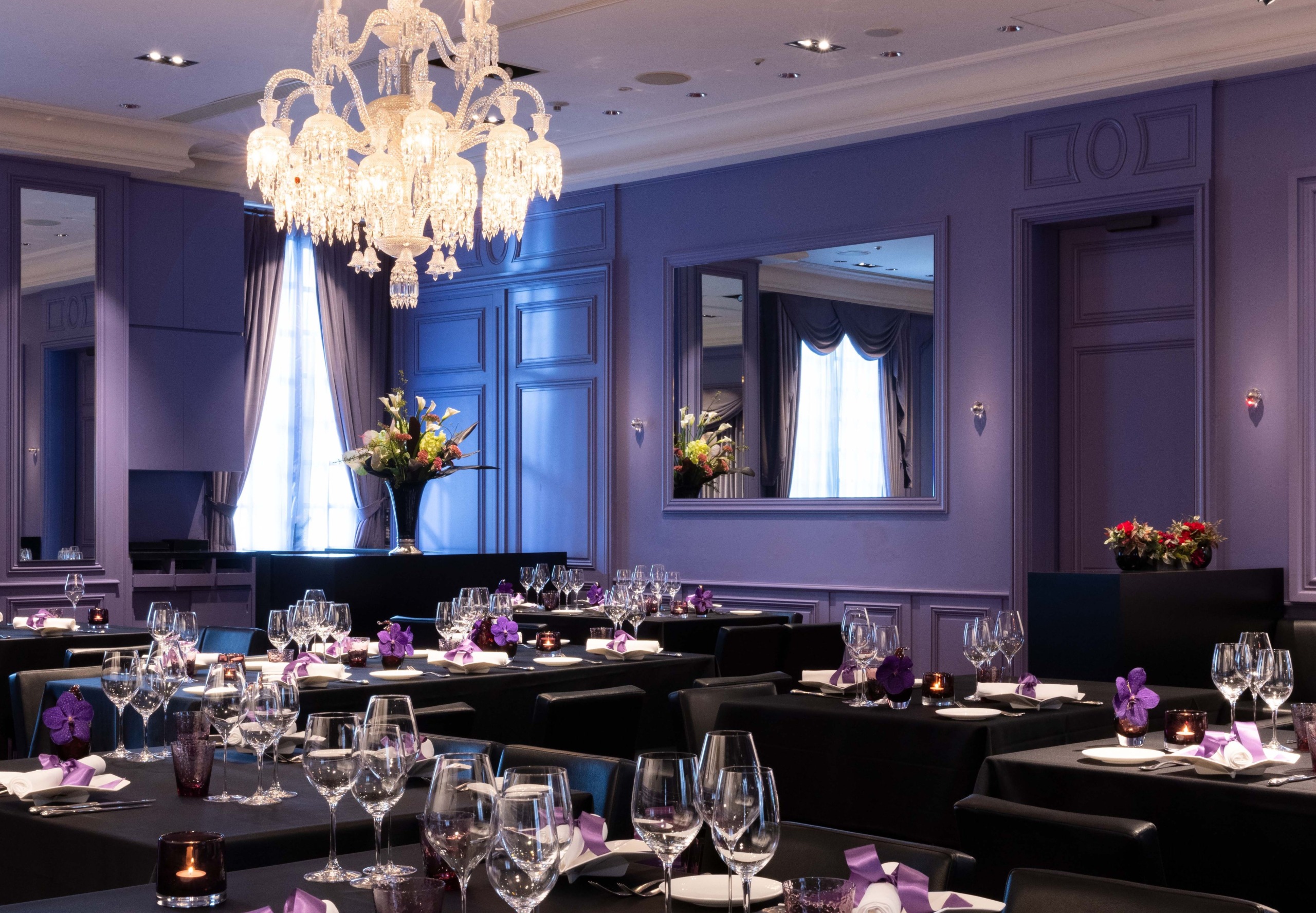
Try Joël Robuchon's sophisticated modern French cuisine in a more casual setting. The simple dishes highlight the natural flavors of the ingredients.
Open days during Art Week Tokyo:
Nov 5 (Wed)–Nov 9 (Sun)
Click here for more details
From ¥4,000
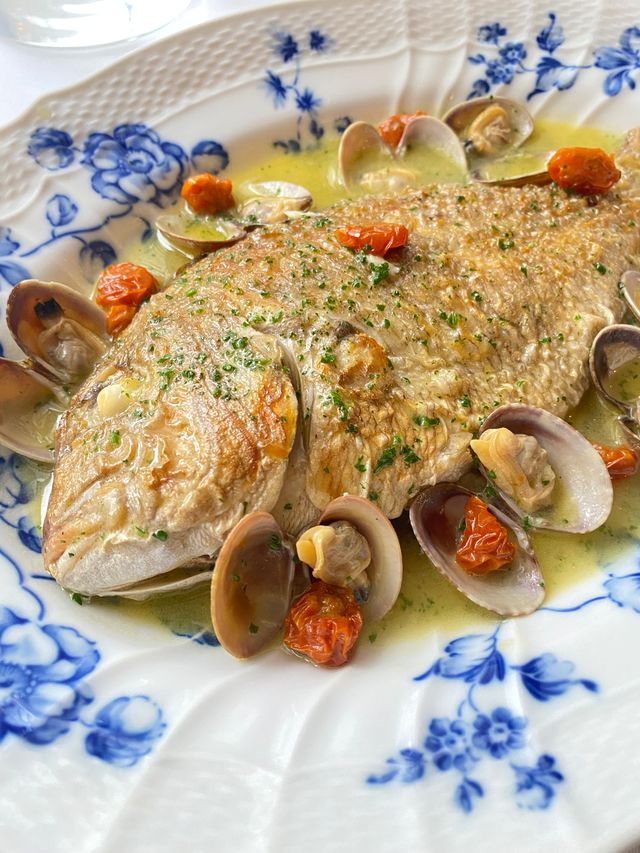
You can expect Italian cuisine crafted from seasonal, locally sourced ingredients here. The signature acqua pazza is a must-try.
Open days during Art Week Tokyo:
Nov 5 (Wed)–Nov 9 (Sun)
Click here for more details
Lunch from ¥11,000 / Dinner from ¥17,600
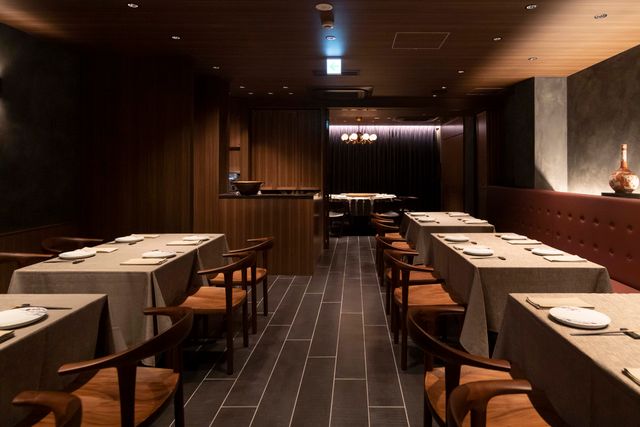
Achieving a masterful blend of traditional Chinese cuisine and Japanese ingredients, the dishes here reflect Chef Tamura's philosophy of practicing "compassion" toward ingredients, people, and the food itself.
Open days during Art Week Tokyo:
Nov 5 (Wed)–Nov 9 (Sun)
Click here for more details
From ¥3,000
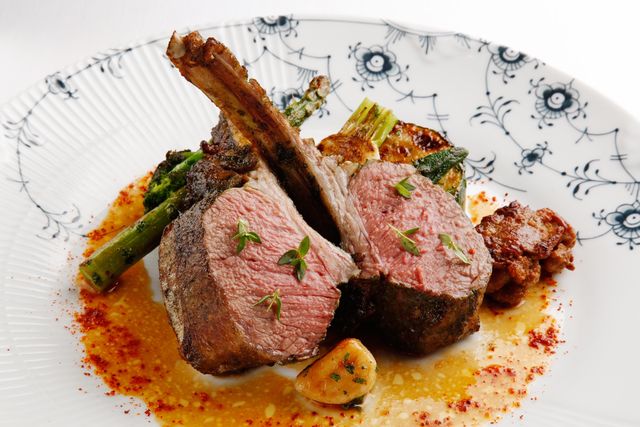
Enjoy robust, full-flavored classic French cuisine with a prix fixe menu at Kinoshita. The pâté de campagne and roast lamb are especially recommended.
Open days during Art Week Tokyo:
Nov 5 (Wed)–Nov 9 (Sun)
Click here for more details
Lunch from ¥1,870 / Dinner courses from ¥11,000
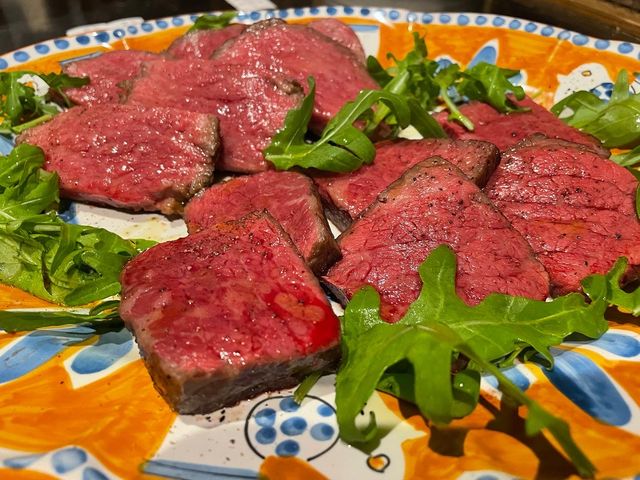
The signature Italian dish here is the finest kuroge wagyu beef perfectly grilled over charcoal. Beyond the meat, enjoy a variety of appealing dishes featuring seasonal ingredients carefully selected by the chef.
Open days during Art Week Tokyo:
Nov 5 (Wed)–Nov 9 (Sun)
Click here for more details
From ¥25,000
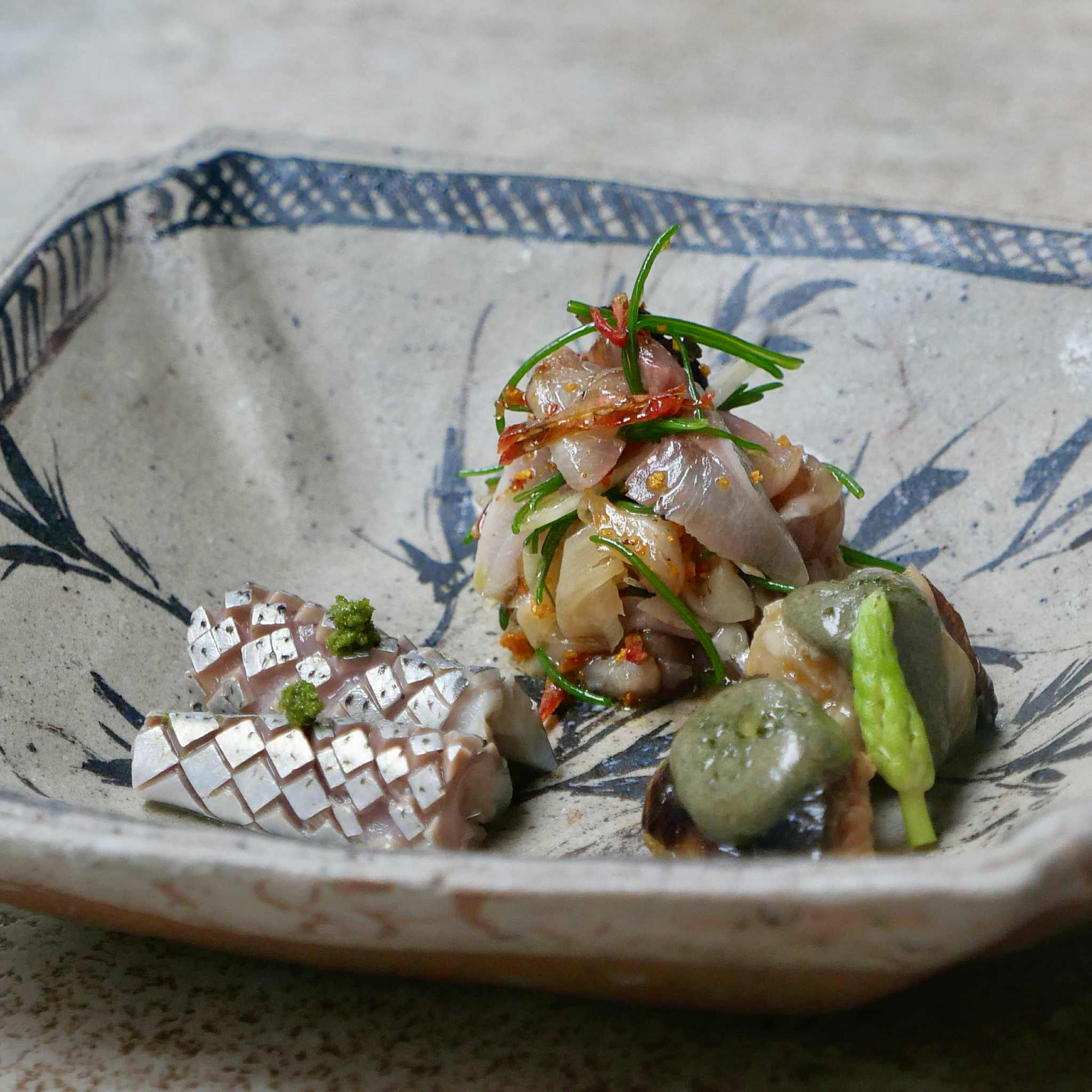
This fine dining restaurant reimagines traditional Japanese cuisine through the use of local specialties and seasonal ingredients, offering innovative chef’s choice course meals. Each visit promises a new surprise.
Open days during Art Week Tokyo:
Nov 5 (Wed)–Nov 8 (Sat)
Click here for more details
From ¥4,000
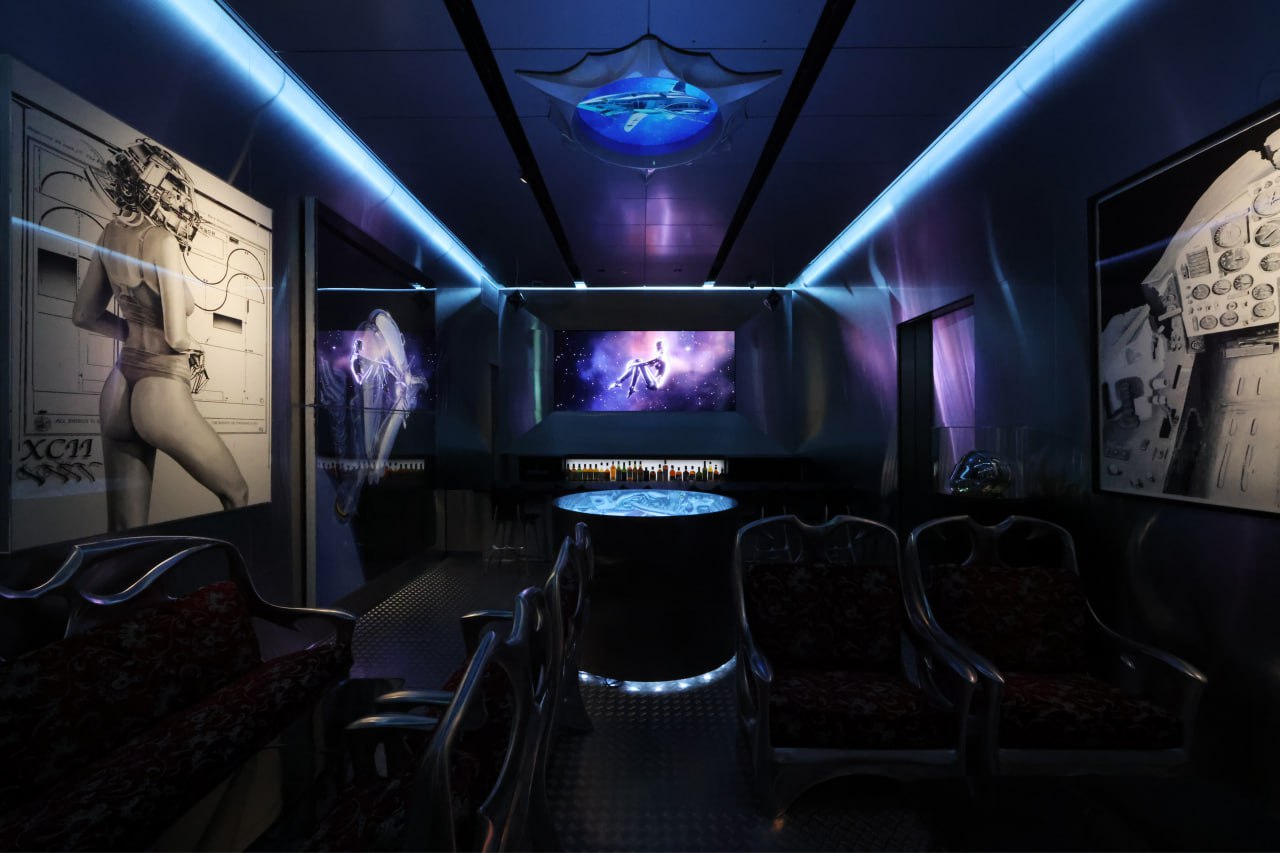
Art-directed by owner Shinji Nanzuka, NANZUKA’s new space is a one-of-a-kind art bar in Shibuya, pairing curated art with signature cocktails.
Open days during Art Week Tokyo:
Nov 5 (Wed)–Nov 8 (Sat)
Click here for more details
From ¥5,000
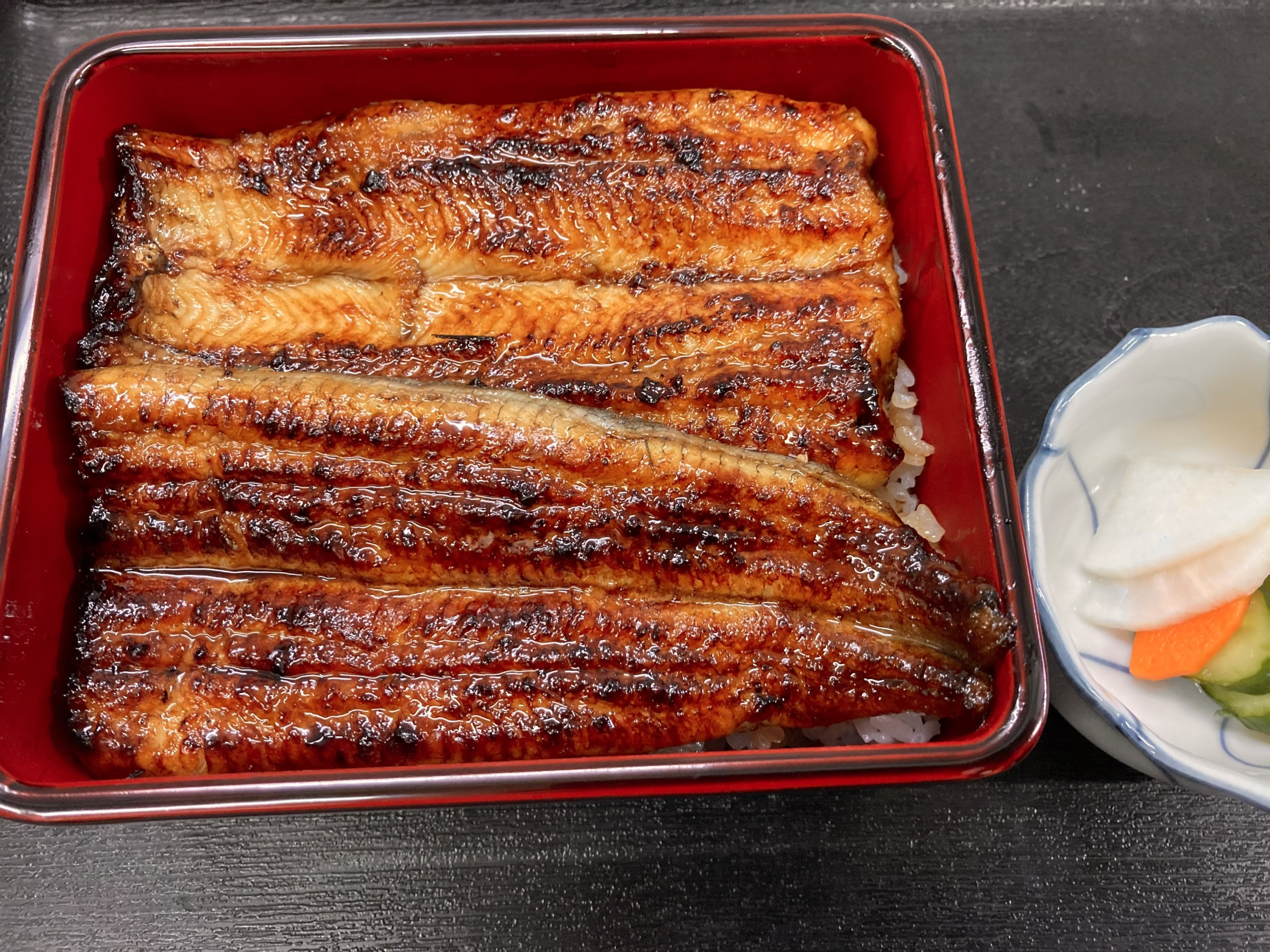
The fresh eel grilled over binchotan charcoal on offer here is fragrant, tender, and full of delicate flavor. It’s best enjoyed with the owner’s recommended sake.
Open days during Art Week Tokyo:
Nov 5 (Wed)–Nov 9 (Sun)
Click here for more details
From ¥3,500
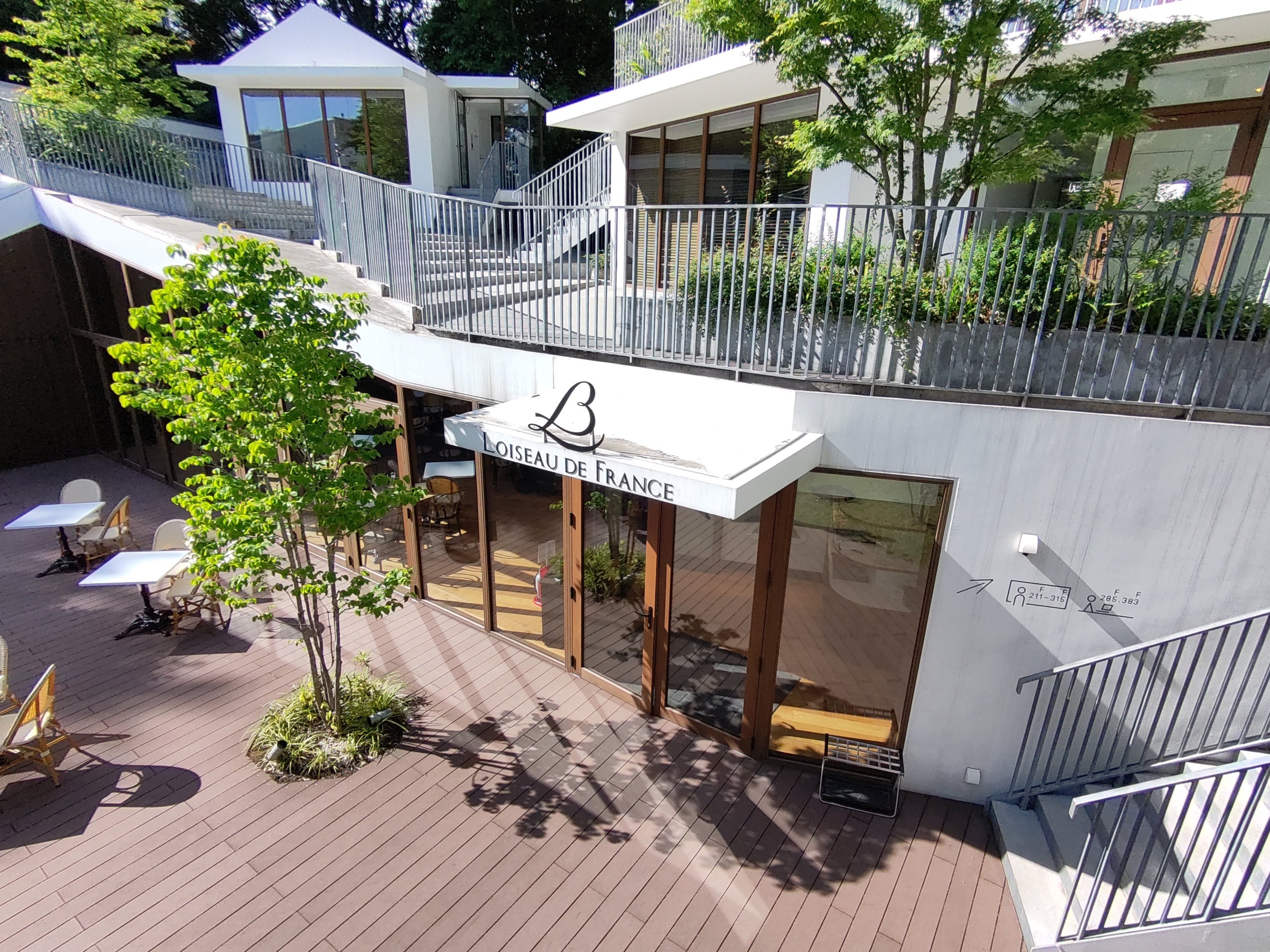
Nestled in the lush greenery of the Institut français, this casual spot offers everything from light French snacks to hearty bistro dishes.
Open days during Art Week Tokyo:
Nov 5 (Wed)–Nov 9 (Sun)
Click here for more details
Nigiri set from ¥2,950

Enjoy fresh tuna from Misaki and seasonal delicacies prepared by skilled Japanese chefs in a serene Japanese setting.
Open days during Art Week Tokyo:
Nov 5 (Wed)–Nov 8 (Sat)
Click here for more details
Lunch from ¥15,000 / Dinner from ¥30,000

One of Japan’s leading French restaurants. Signature dishes like the Maria Callas–style lamb highlight the essence of traditional French cuisine, making this place perfect for a special night out.
Open days during Art Week Tokyo:
Nov 5 (Wed)–Nov 9 (Sun)
Click here for more details
From ¥18,000
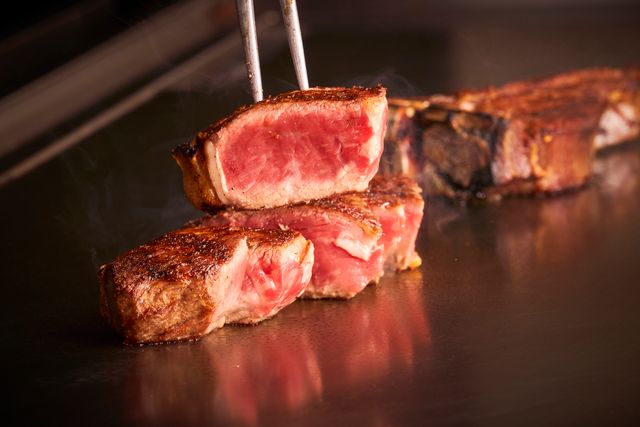
The world’s first teppanyaki concept from a New York–born steakhouse. Feast your eyes on top-grade beef, long dry-aged in house, grilled before your eyes in a dynamic live-cooking style.
Open days during Art Week Tokyo:
Nov 5 (Wed)–Nov 9 (Sun)
Click here for more details
Tea from ¥1,980 / Meals from ¥5,500
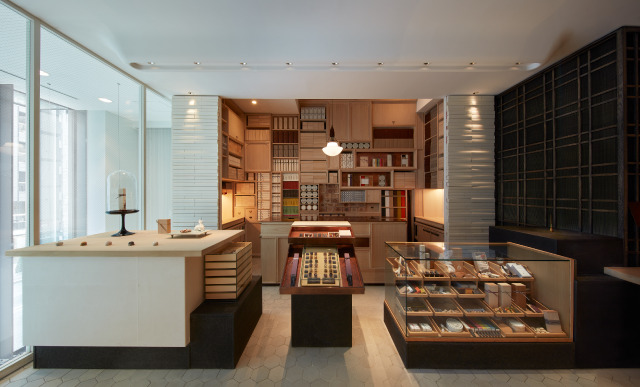
This Japanese confectionery shop offers a curated selection of seasonal sweets, fine teas, and artisanal tableware. In the attached tearoom, you can enjoy a new take on traditional Japanese afternoon tea as well as meals and other offerings.
Open days during Art Week Tokyo:
Nov 5 (Wed)–Nov 8 (Sat)
Click here for more details
Courses from ¥15,000 (counter) / from ¥25,000 (private room)
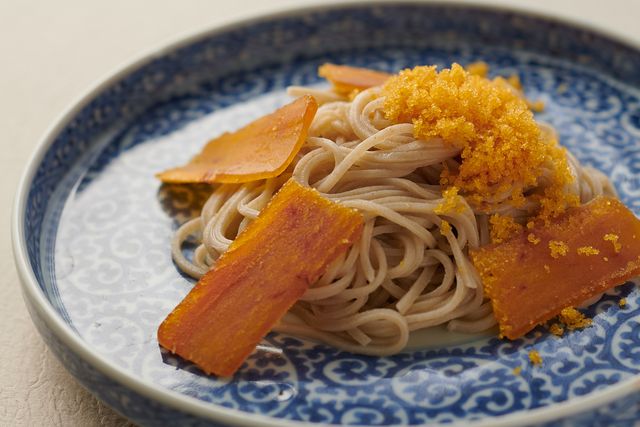
Enjoy soba kappo cuisine from renowned chef Yuji Wakiya, who made his name cooking Chinese cuisine. Reflecting a philosophy of "once-in-a-lifetime," this restaurant offers soba made by up-and-coming soba artisans and carefully selected side dishes, sake, and wine.
Open days during Art Week Tokyo:
Nov 5 (Wed)–Nov 9 (Sun)
Click here for more details
Lunch from ¥1,540 / Dinner (course) from ¥14,300

The menu here includes meat from Shinshu, mushrooms and leafy greens from local farmers, and fresh seafood from fishing ports across the four Hokuriku prefectures on the Sea of Japan. Pair your meal with local sake and wine for a perfect experience.
Open days during Art Week Tokyo:
Nov 5 (Wed)–Nov 9 (Sun)
Click here for more details
Lunch from ¥2,500 / Dinner (course) from ¥12,400

Enjoy the subtle flavors of Yangzhou cuisine at this restaurant, where seasonal ingredients are the star. Located in a calm and elegant space, the restaurant features the masterful skills of a national head chef and dim sum master.
Open days during Art Week Tokyo:
Nov 5 (Wed)–Nov 8 (Sat)
Click here for more details
Lunch from ¥1,600 / Dinner from ¥6,000
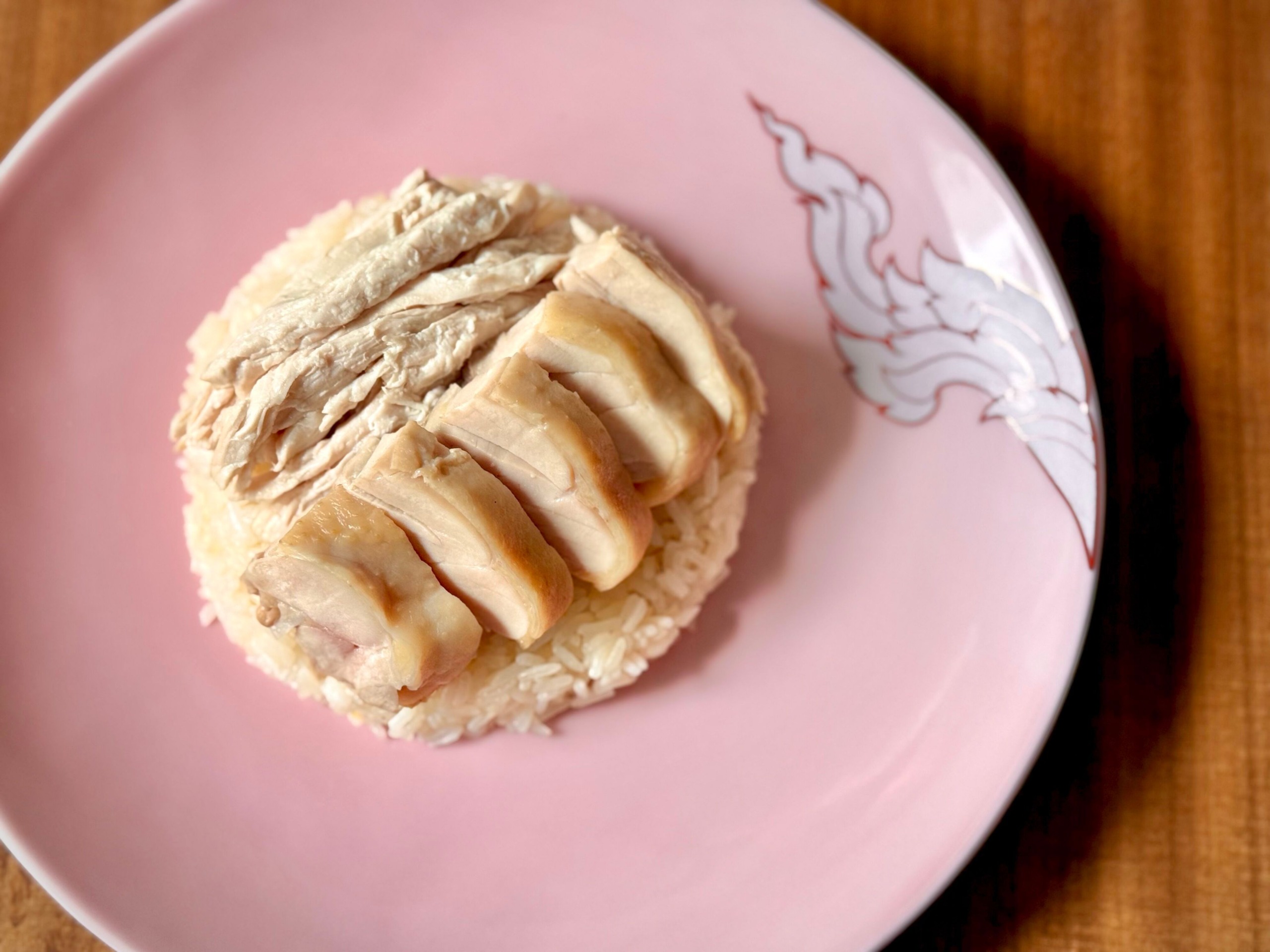
This restaurant offers a unique twist on Thai cuisine, serving original dishes that blend Chinese and Japanese influences. For lunch, it operates as "Bianchi mini me."
Open days during Art Week Tokyo:
Nov 5 (Wed)–Nov 8 (Sat)
Click here for more detail
Lunch from ¥1,000 / Dinner from ¥6,000
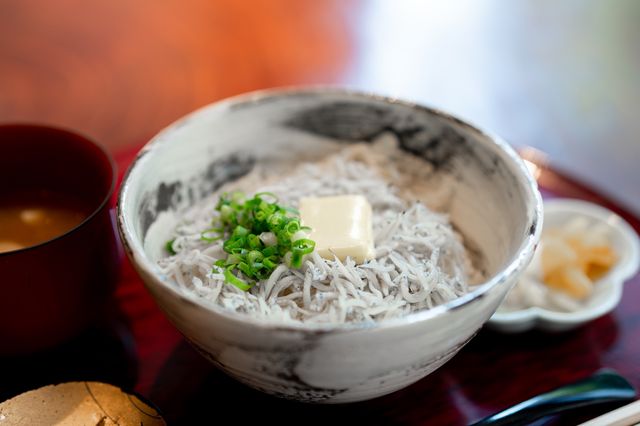
This restaurant specializes in dishes with freshly boiled whitebait, directly delivered from Kochi Prefecture. The famous Forbidden Whitebait Butter Rice Bowl and Whitebait and Cod Roe Ajillo are must-try dishes you can only enjoy here.
Open days during Art Week Tokyo:
Nov 5 (Wed)–Nov 8 (Sat)
Click here for more details
From ¥22,000
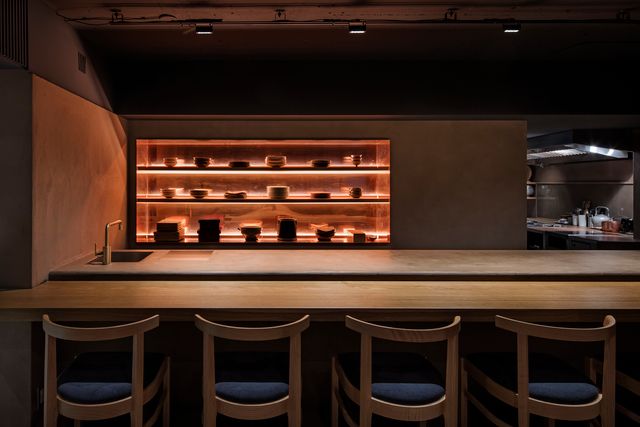
This popular restaurant offers a Japanese dining experience that can be enjoyed by everyone. Its menu focuses on local ingredients and time-honored dishes that have been a part of Japan's culinary tradition for ages.
Open days during Art Week Tokyo:
Nov 5 (Wed)–Nov 8 (Sat)
Click here for more details
From ¥25,000
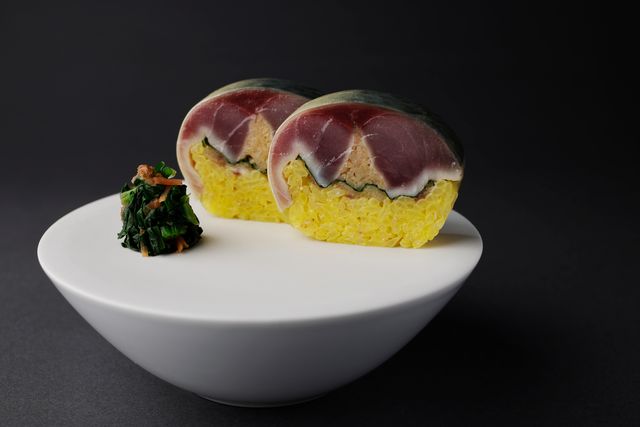
Experience the unique culinary world of Ugo Perret-Gallix, a chef with experience in renowned Japanese and French restaurants. His dishes are a harmonious blend of traditions, infused with a fresh, modern sensibility.
Open days during Art Week Tokyo:
Nov 5 (Wed)–Nov 9 (Sun)
Click here for more details
Lunch from ¥17,600 / Dinner from ¥30,800

Experience tempura like never before at this restaurant, where the course covers everything from simple seasonal bites to inventive dishes inspired by traditional kaiseki cuisine.
Open days during Art Week Tokyo:
Nov 5 (Wed)–Nov 9 (Sun)
Click here for more details
From ¥1,000
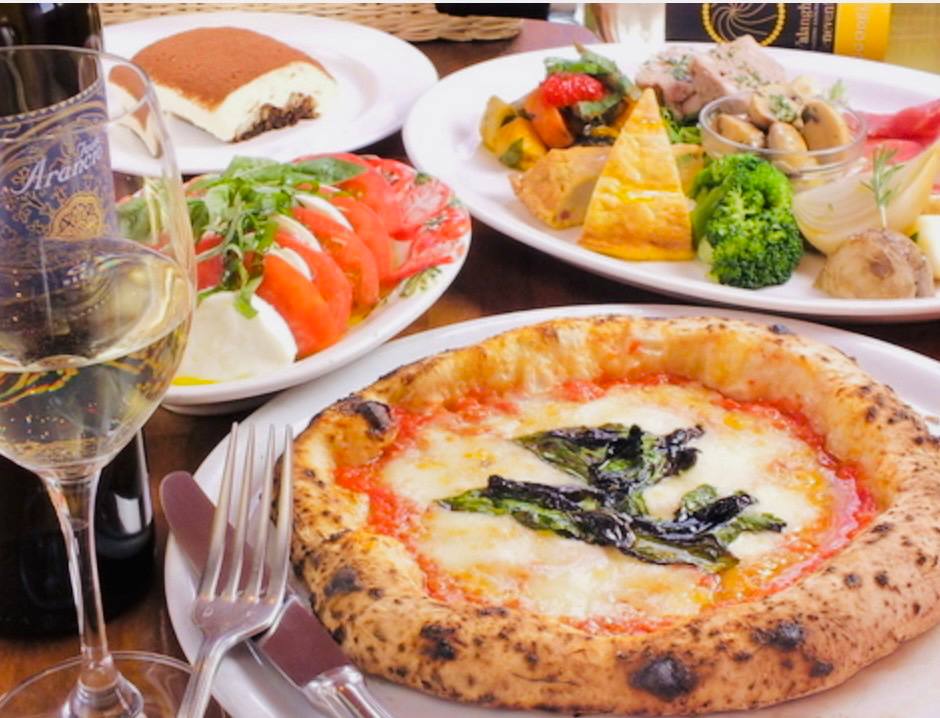
Enjoy authentic Neapolitan pizza, baked to perfection in a wood-fired oven imported from Naples. Each pie is crispy, chewy, and full of flavor—a true masterpiece made with passion and the finest ingredients.
Open days during Art Week Tokyo:
Nov 5 (Wed)–Nov 9 (Sun)
Click here for more details
From ¥1,000
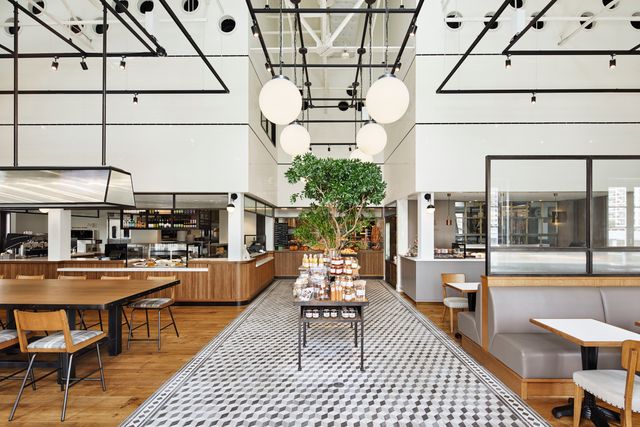
Occupying a renovated warehouse, this stylish bakery and café offers a wide selection of freshly baked bread, deli items, and cakes throughout the day.
Open days during Art Week Tokyo:
Nov 5 (Wed)–Nov 9 (Sun)
Click here for more details
From ¥3,000
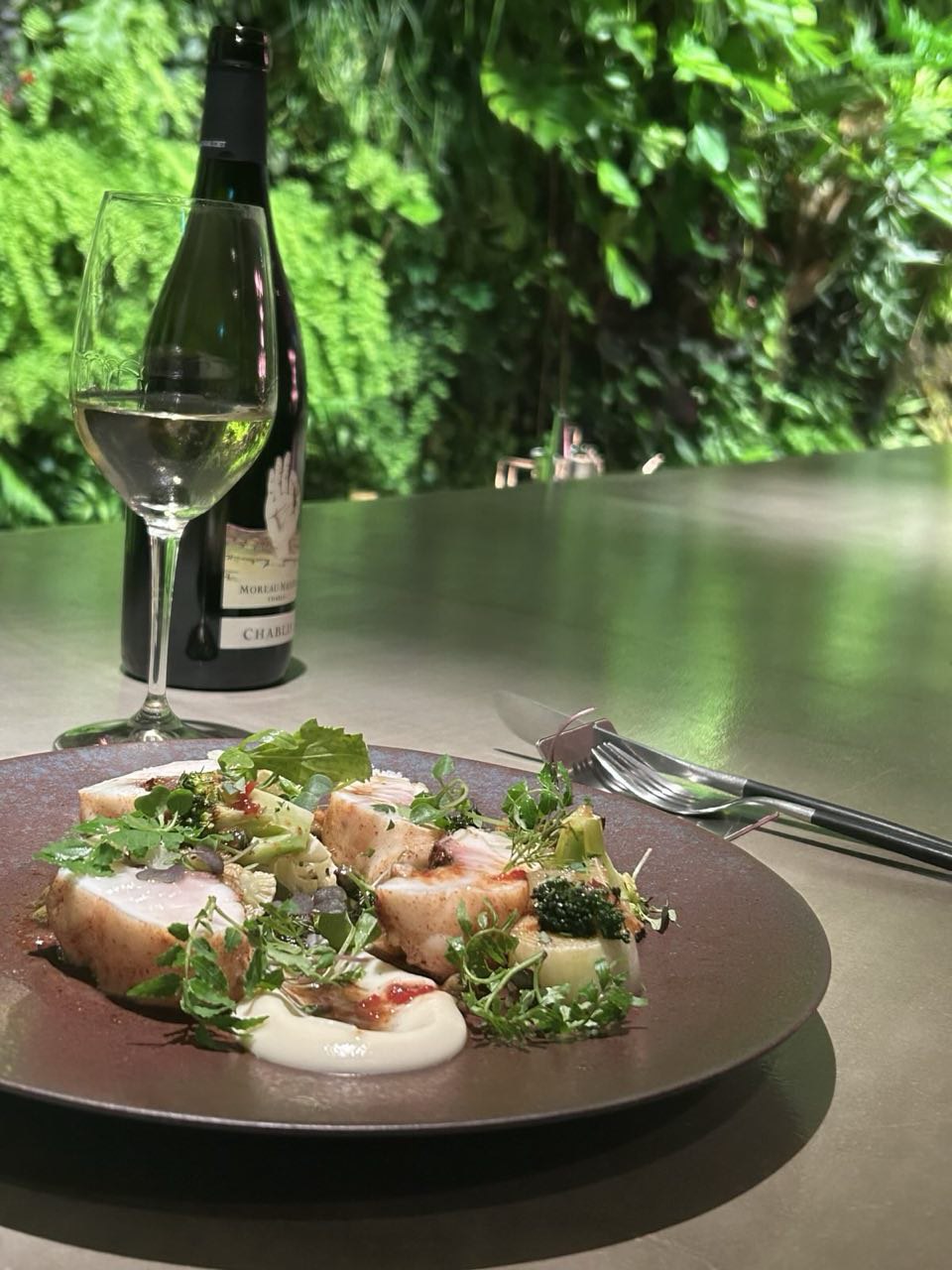
Guests at this hidden all-day dining bar can savor French-Italian cuisine and creative cocktails while surrounded by contemporary art. Smoking is permitted on the terrace.
Open days during Art Week Tokyo:
Nov 5 (Wed)–Nov 9 (Sun)
Click here for more details
From ¥30,000
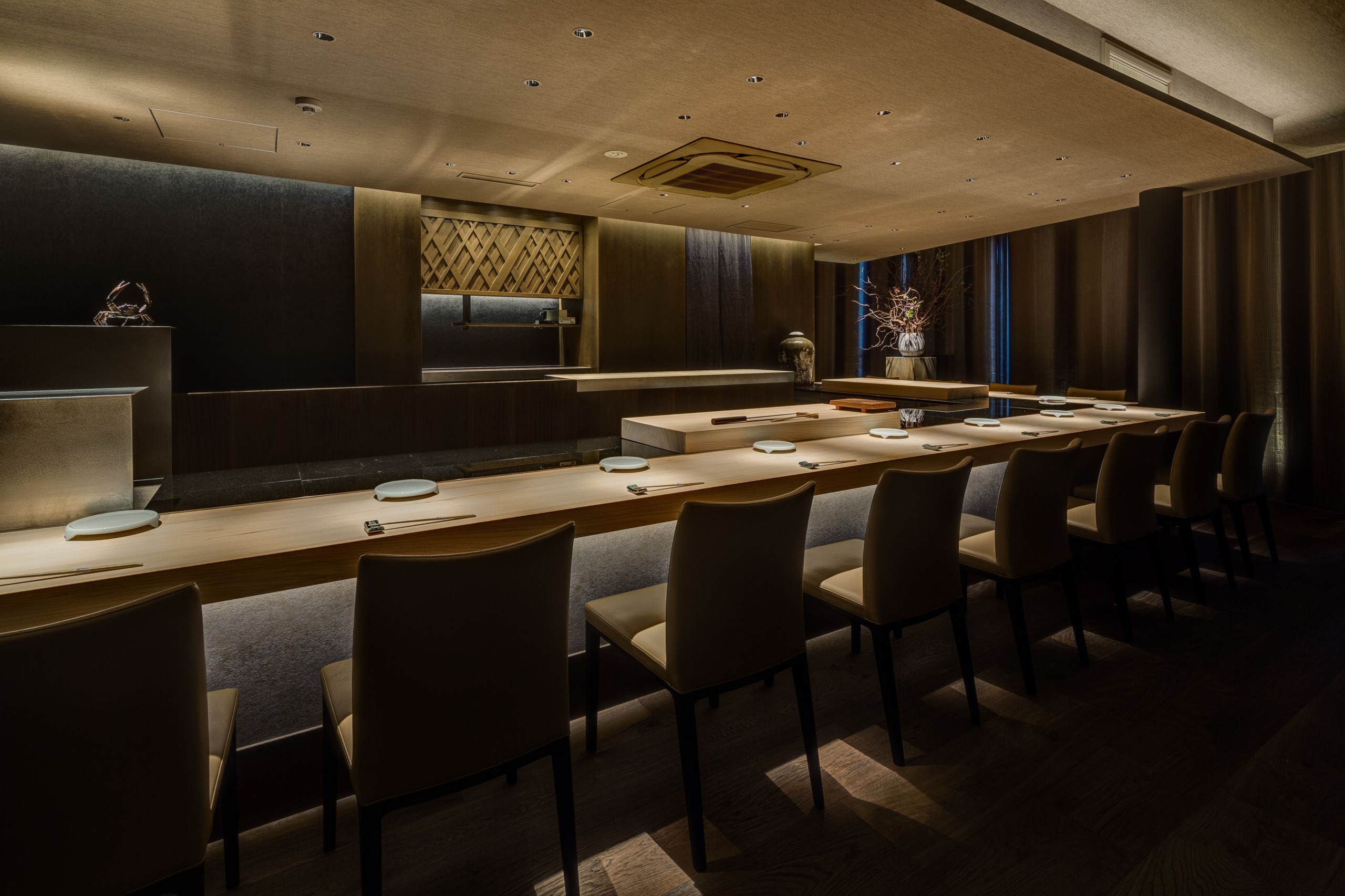
Sushi m presents a modern take on classic Edomae sushi, paired with carefully selected wines and sake. The seasonal omakase course is always innovative.
Open days during Art Week Tokyo:
Nov 5 (Wed)–Nov 9 (Sun)
Click here for more details
Lunch from ¥8,000 / Dinner from ¥13,000
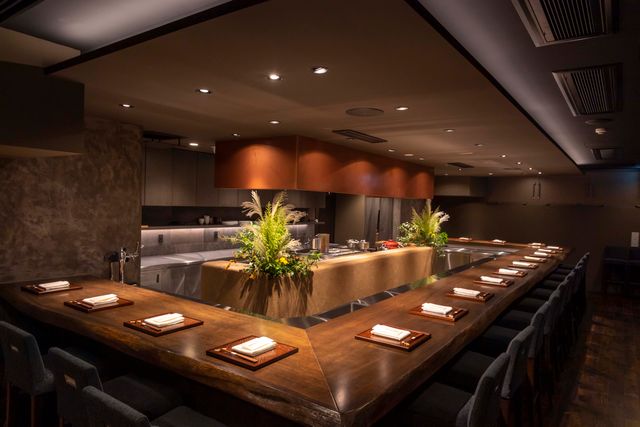
This innovative restaurant is a collaboration between the chefs behind two of the world’s most acclaimed restaurants, Den (creative Japanese cuisine) and Florilège (French).
Open days during Art Week Tokyo:
Nov 5 (Wed)–Nov 9 (Sun)
Click here for more details
Dinner courses from ¥7,500
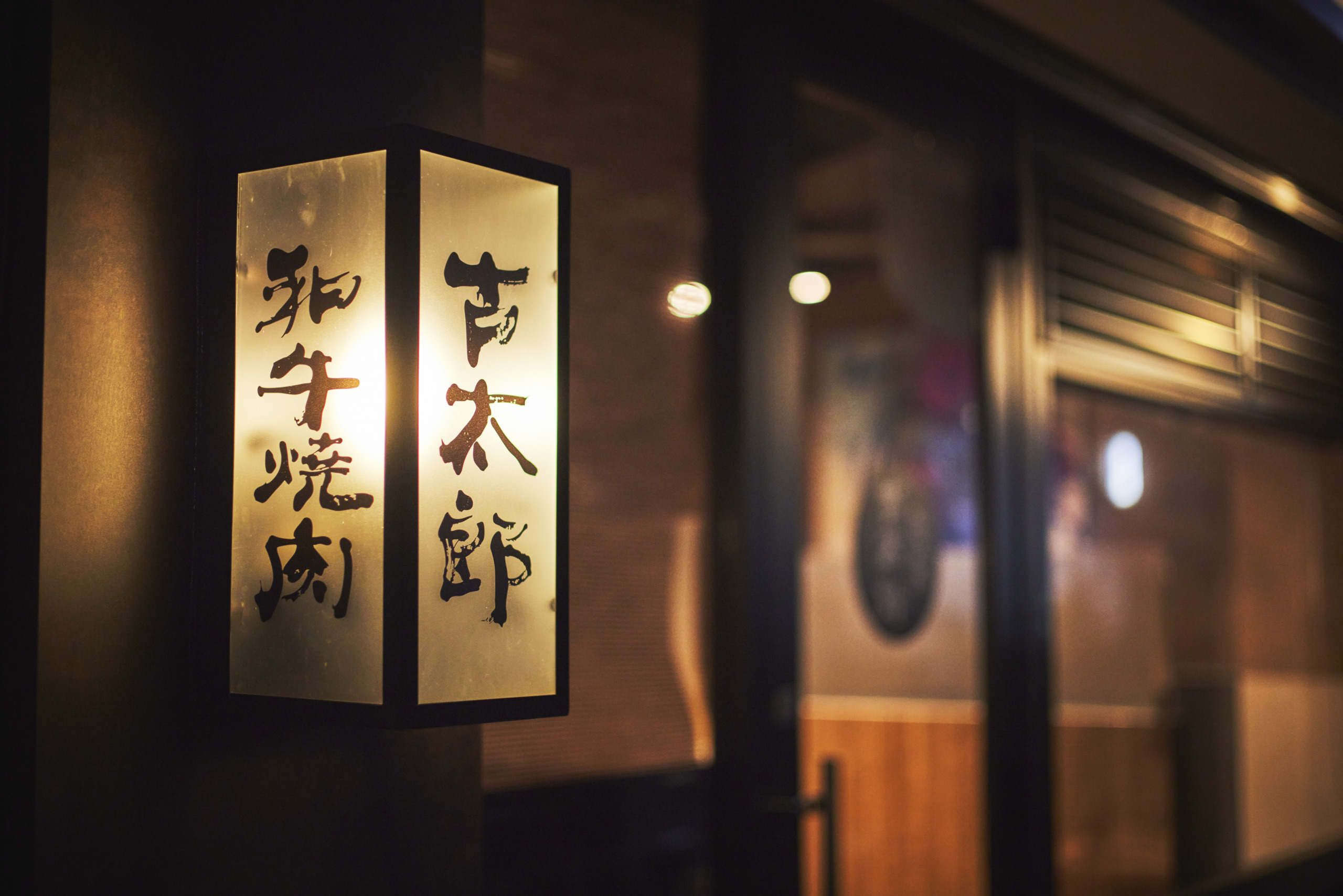
An expert grill master and a seasoned head chef serve premium cuts. A casual-luxe setting offering a relaxed yet special yakiniku experience.